Shikoku
| Kms | Town | Accomodation | ||
|---|---|---|---|---|
| Tokushima | ||||
| Naruto | Ichiban Monzen dori 080-2917-4321 | |||
| 1 | 17 | 17 | Kamiita | Morimotoya Henro House 088-672-3568 - T1 – T5 |
| 2 | 27 | 10 | Awa | M Okudaya (Henro House) 080-8721-5615 - T6 – T8 |
| 3 | 42 | 15 | Yoshinogawa | Oyado - T9 – T10 |
| 4 | 57 | 15 | Kamiyama | Sudachi-an 090-2677-8000 - T11 – T12 |
| 5 | 82 | 25 | Tokushima | R Urokorou 088-642-4337 - T13 – T16 |
| 6 | 104 | 22 | Komatsushima | Chiba 0885-33-1508 - T17 - T18 ( Near temple 18 ) |
| 7 | 126 | 22 | Sakamoto | Hôtel Fureai-no-sato 0885-44-2110 - T19 – T20 ( 20 km next to the path ) |
| 8 | 146 | 20 | Anan | Panda House 090-1573-6581 - T21 ( + rope way ) |
| 9 | 169 | 23 | Minami | GH Oyado Hiwasa 080-9830-3920 - T22 – T23 |
| 10 | 189 | 20 | Kaiyo | Hotel Kaizan-So 0884-73-1326 |
| 11 | 204 | 15 | Toyo | Taniguchi 0887-29-3417 |
| Kōchi | ||||
| 12 | 219 | 15 | Muroto | M Tokomasu 0887-27-2475 |
| 13 | 239 | 20 | Muroto | M Urashima 0887-23-1105 - T24 – T25 ( Near temple 26 ) |
| 14 | 259 | 20 | Yasuda | M Tonohama 0887-38-8827 - T26 ( Front of temple 27 ) |
| 15 | 329 | 70 | Konan | Kiruku 0887-56-1985 - T27 – T28 ( + bus + train ) |
| 16 | 346 | 17 | Kōchi | GH Kacho Fugestu 0804-032-0101 - T29 - T30 |
| 17 | 366 | 20 | Kōchi | M Kochiya 088-841-3074 - T31 - T33 |
| 18 | 391 | 25 | Tosa | Hôtel Sanyo-so 088-856-0001 - T34 – T36 ( + ferry ) |
| 19 | 448 | 57 | Shimanto | Temple 37 0880-22-0376 - T37 ( + boat + train ) |
| 20 | 510 | 62 | Ōkinohama | Henros house 0880-82-8302 ( + train + bus ) |
| 21 | 555 | 45 | Ōkinohama | Henros house 0880-82-8302 - T38 ( + bus for the return ) |
| 22 | 580 | 25 | Sukumo | Manabe 0880-63-3408 - T39 ( + bus + hitchhiking ) |
| Ehime | ||||
| 23 | 630 | 50 | Uwajimo | Hotel Oriental 895-23-2828 - T40 ( + train ) |
| 24 | 655 | 25 | Seiyo | GH Umeya 090-2892-1924 - T41 – T42 ( + bus ) |
| 25 | 735 | 80 | Matsuyama | Terminal Hotel 089-947-5388 - T43 ( + bus + train + train ) |
| 26 | 815 | 80 | Matsuyama | Terminal Hotel 089-947-5388 - T44 – T45 ( + bus + hitchhiking + bus ) |
| 27 | 835 | 20 | Matsuyama | Terminal Hotel 089-947-5388 - T46 - T51 ( + bus + tram ) |
| 28 | 860 | 25 | Matsuyama | Shiokaza Rider House 089-993-3199 - T52 - T53 |
| 29 | 885 | 25 | Imabari | Clement Inn 0898-55-8333 - T54 |
| 30 | 900 | 15 | Imabari | Temple 58 0896-55-2141 - T55 - T58 |
| 31 | 925 | 25 | Saijō | Oyado sukeya 090-1571-1911 - T59 |
| 32 | 950 | 25 | Saijō | Oyado sukeya 090-1571-1911 - T60 – T61 |
| 33 | 1000 | 50 | Shikoku-chuo | Onaru 0896-23-2122 - T62 – T64 ( + bus + bus ) |
| Kagawa | ||||
| 34 | 1030 | 30 | Kanonji | Fujikawa R 0875-25-3548 - T65 ( + train ) |
| 35 | 1060 | 30 | Kanonji | Fujikawa R 0875-25-3548 - T66, T68 & T69 ( + bus + rope-way + taxi + bus ) |
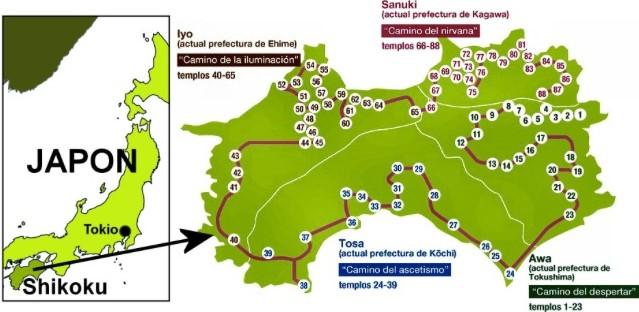
The pilgrimage to the 88 temples of Shikoku, nicknamed the Japanese Compostela, links in a loop the 88 temples of the large island in the southwest of Japan where Kobo Daishi (774-835) deepened his knowledge of Buddhism. 1142 km long, the path can be covered in 40 to 50 days on foot or more quickly using trains or buses on the longest sections between two temples sometimes along busy roads.
The path is divided into four zones corresponding to the four prefectures:
- Tokushima - the path to spiritual awakening, from 1 to 23
- Kochi - the path of ascetic practice, from 24 to 39
- Ehime - the path to enlightenment, from 40 to 65
- Kagawa - the path to nirvana, from 66 to 88
The most favorable season for pilgrimage extends from March to May, then from October to November. From December to February, the temperature can drop to 0° and sudden cold spells cover mountainous areas with snow and freeze roads to make them impassable.
Leaving mid-February to mid-March would allow you to avoid the crowds of high season while limiting the risk of extreme cold by taking advantage of global warming.
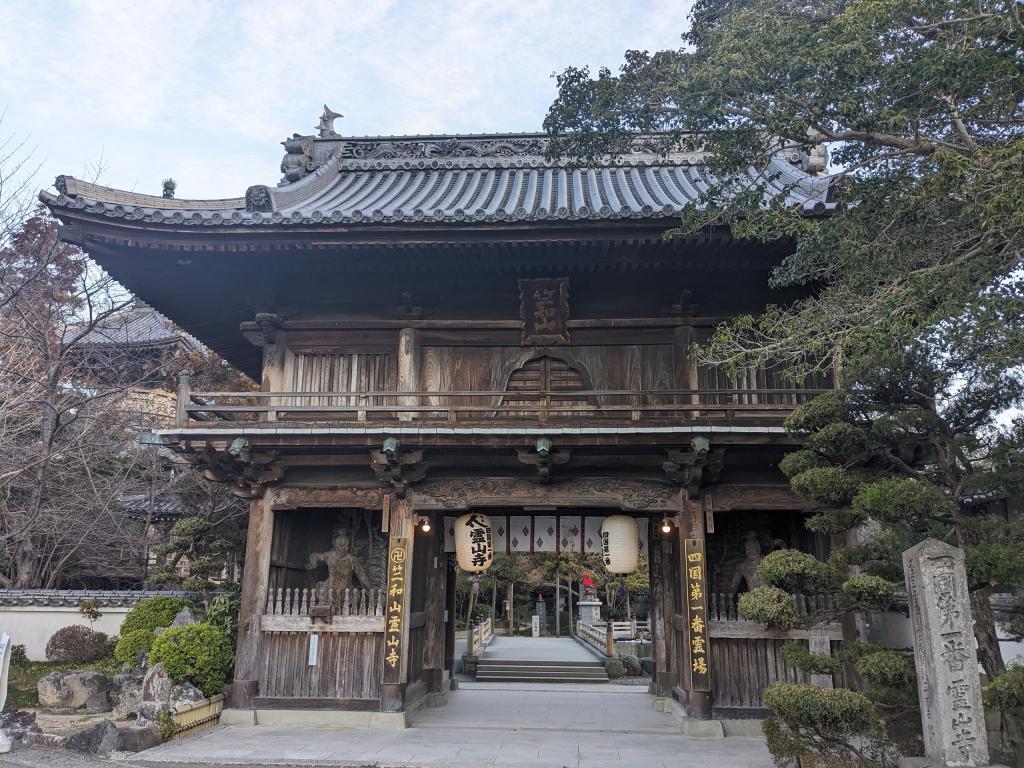
Temple no 1
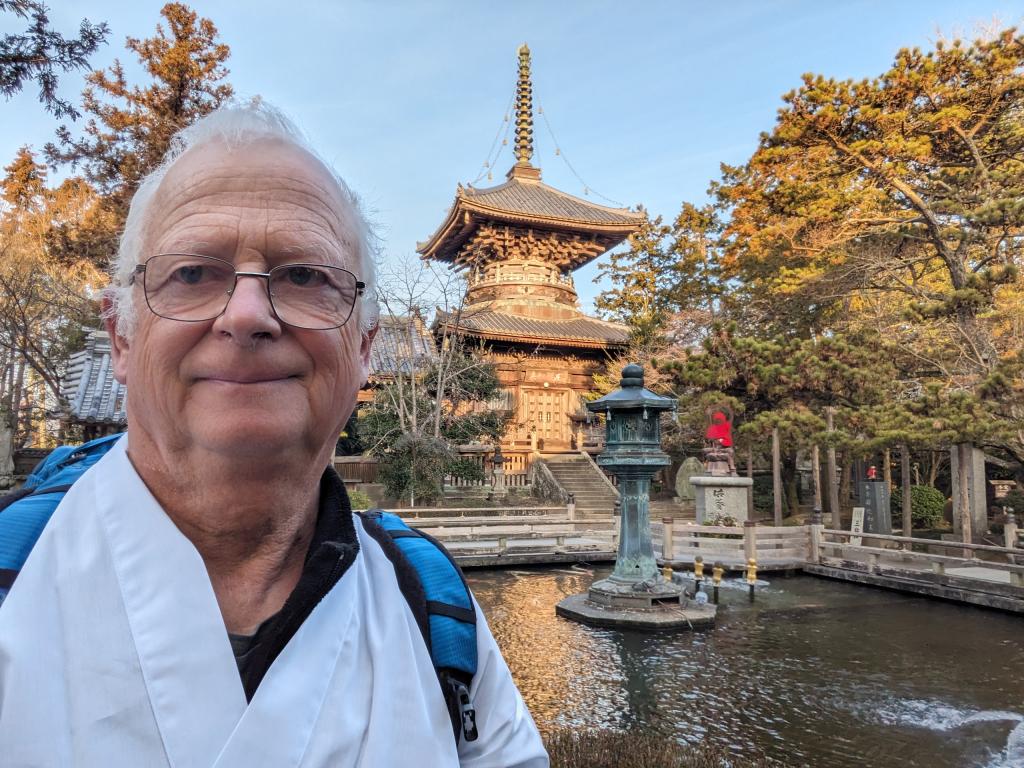
J1 : avec ma toge
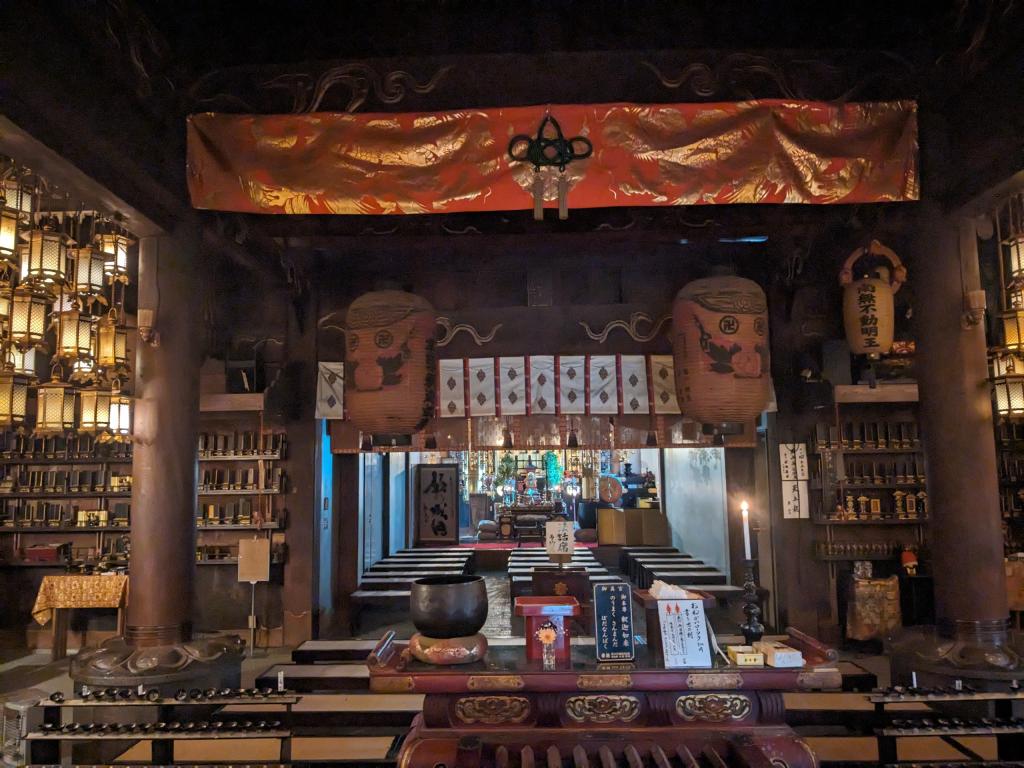
Main temple of temple 1

With Judy and Chuck, Henros coming from the States
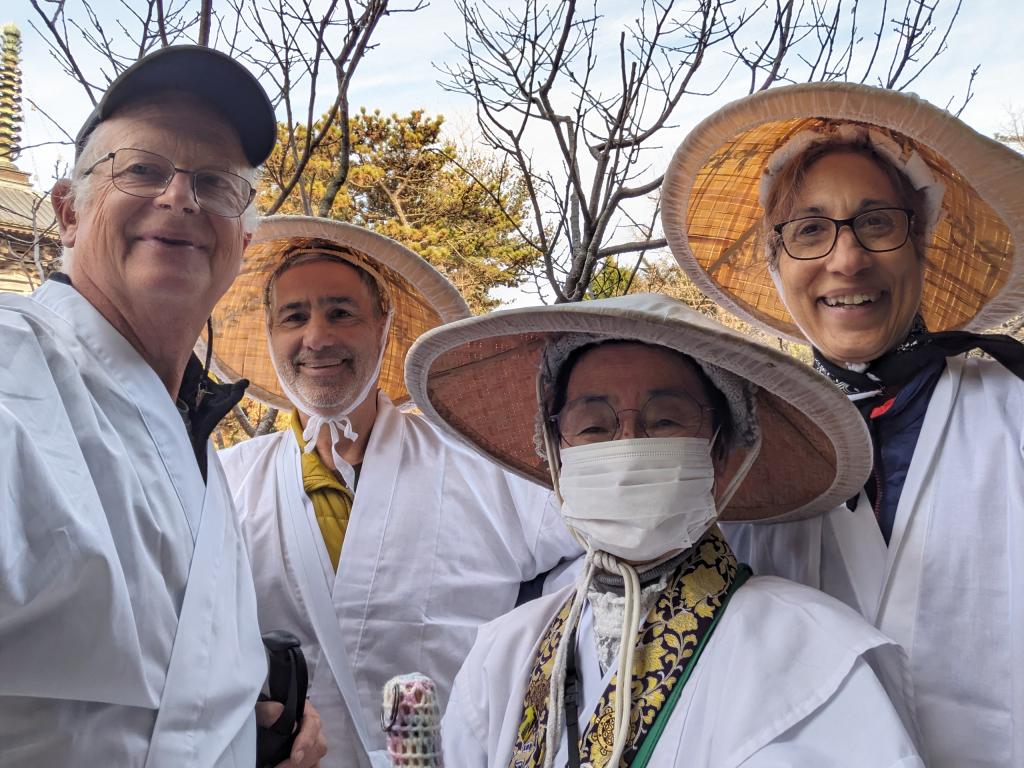
With Chuck, Dournuu and Judy
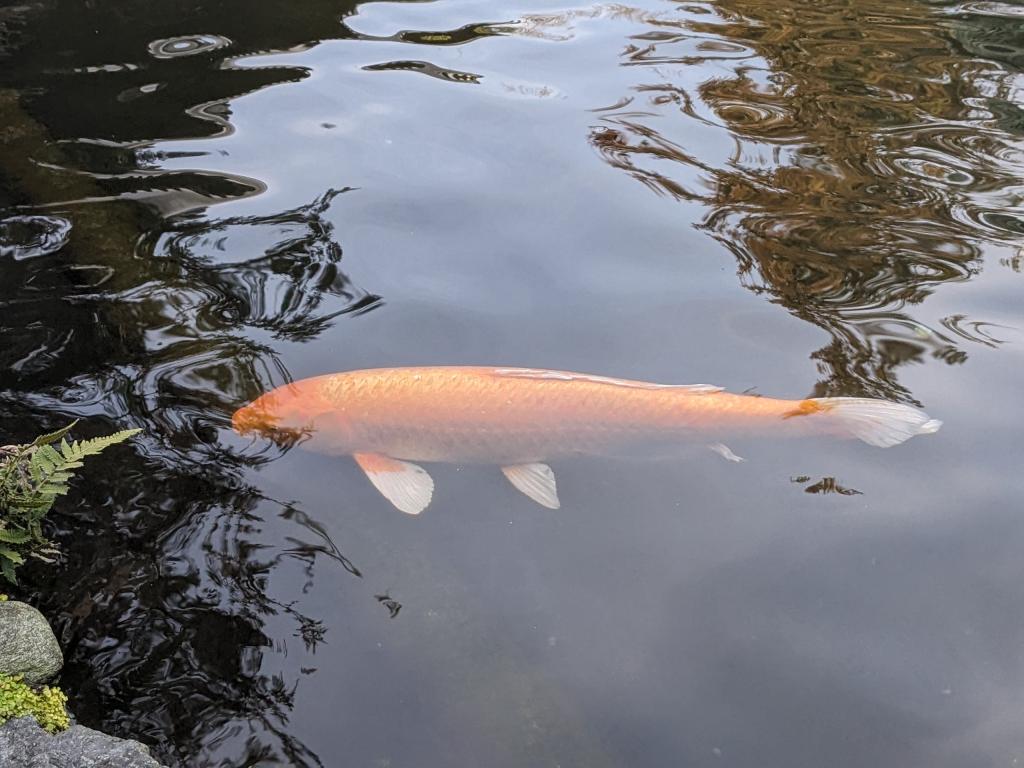
Koï fish
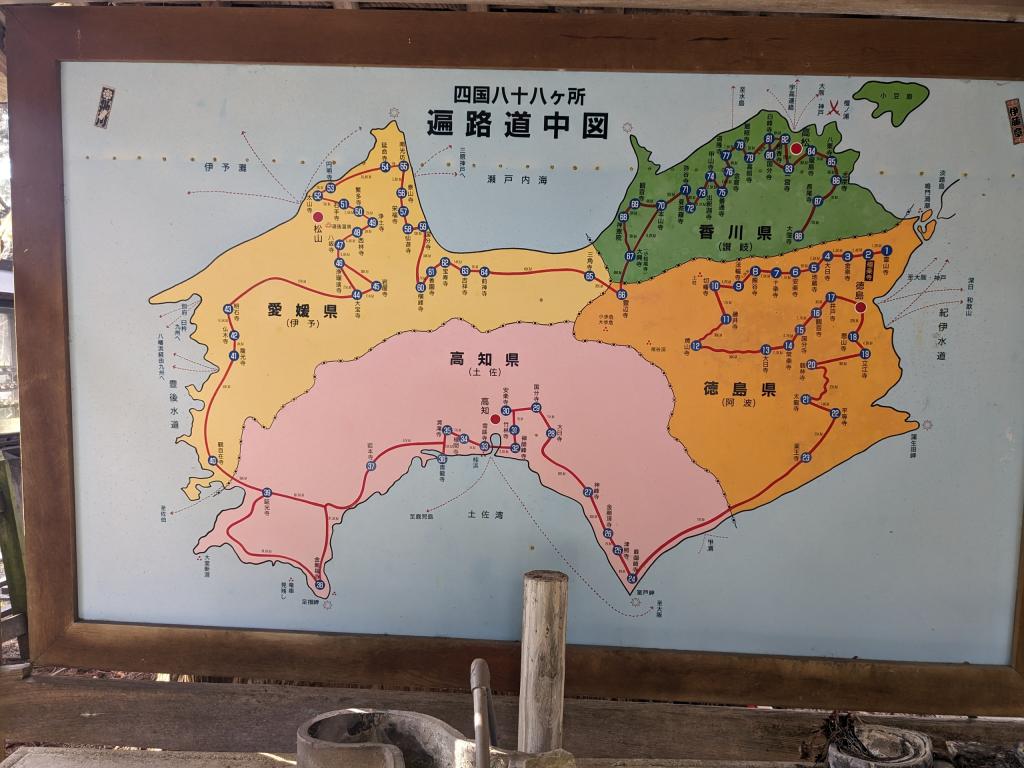
A map with the complete way of 1140 km.
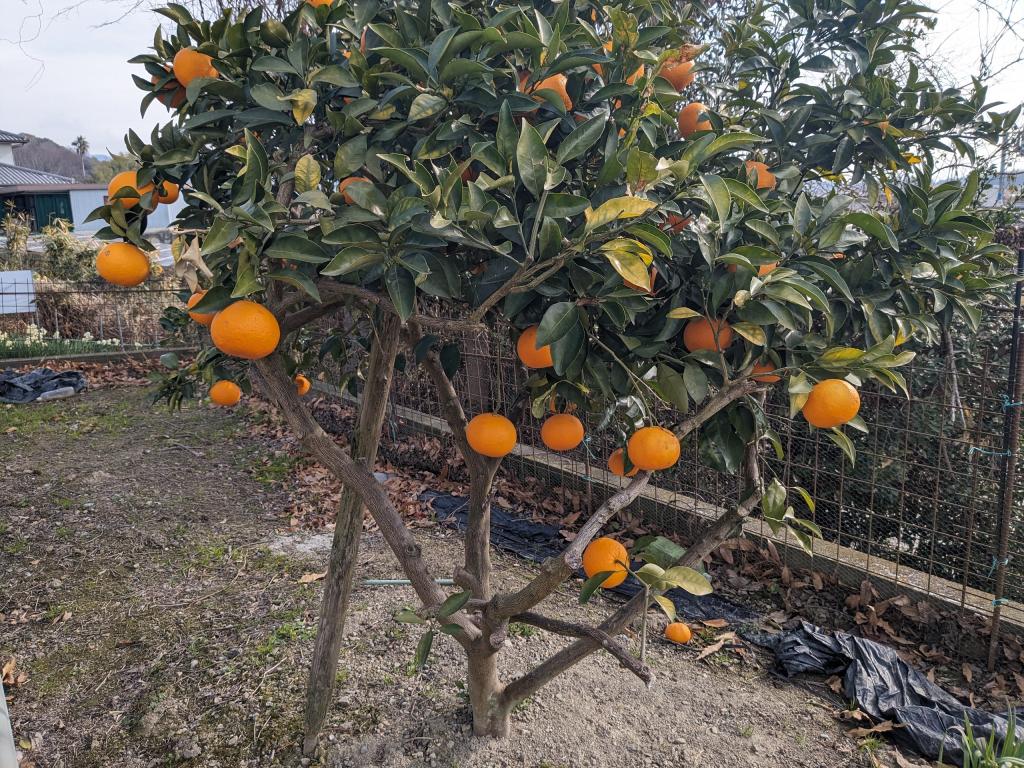
Orange trees with their warm colors in the winter landscape
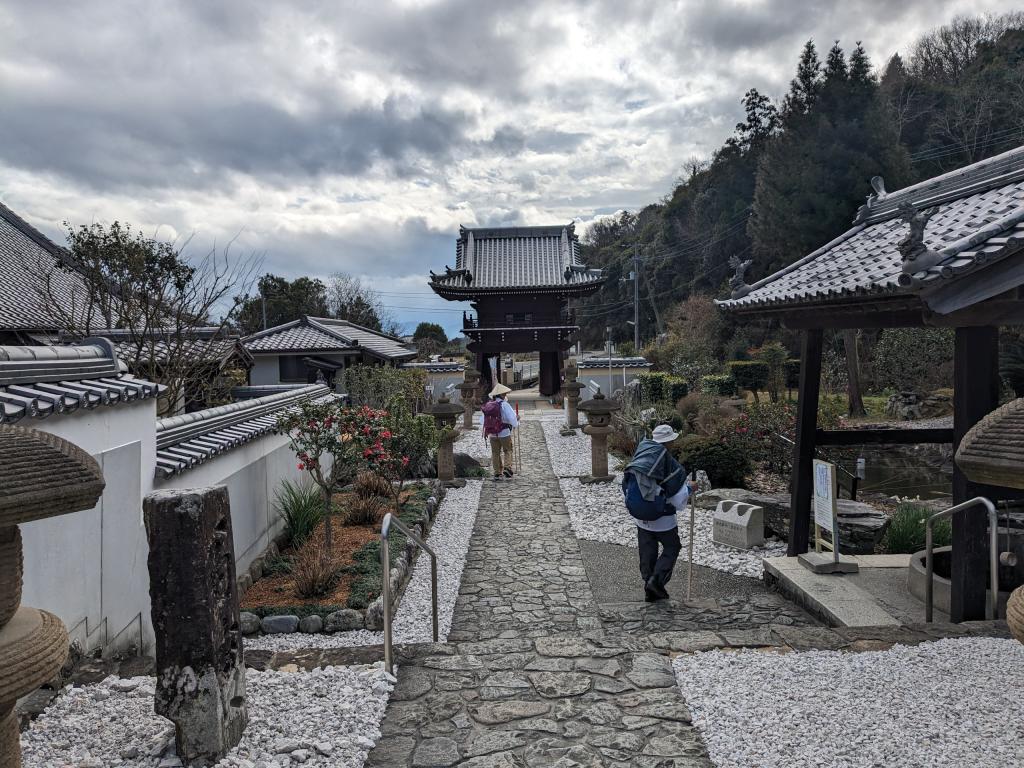
Temples : I have visited 5 of them this first day of walking
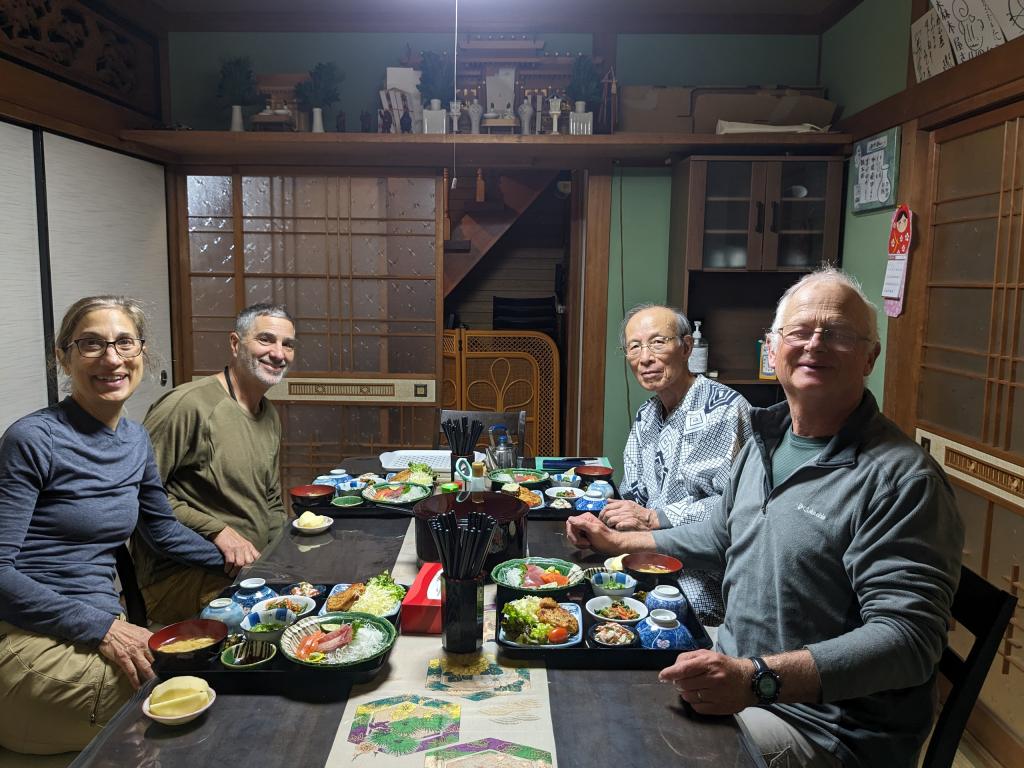
With Judy, Chuck and Yasu at the dinner in Morimotoya Henro House near temple 5
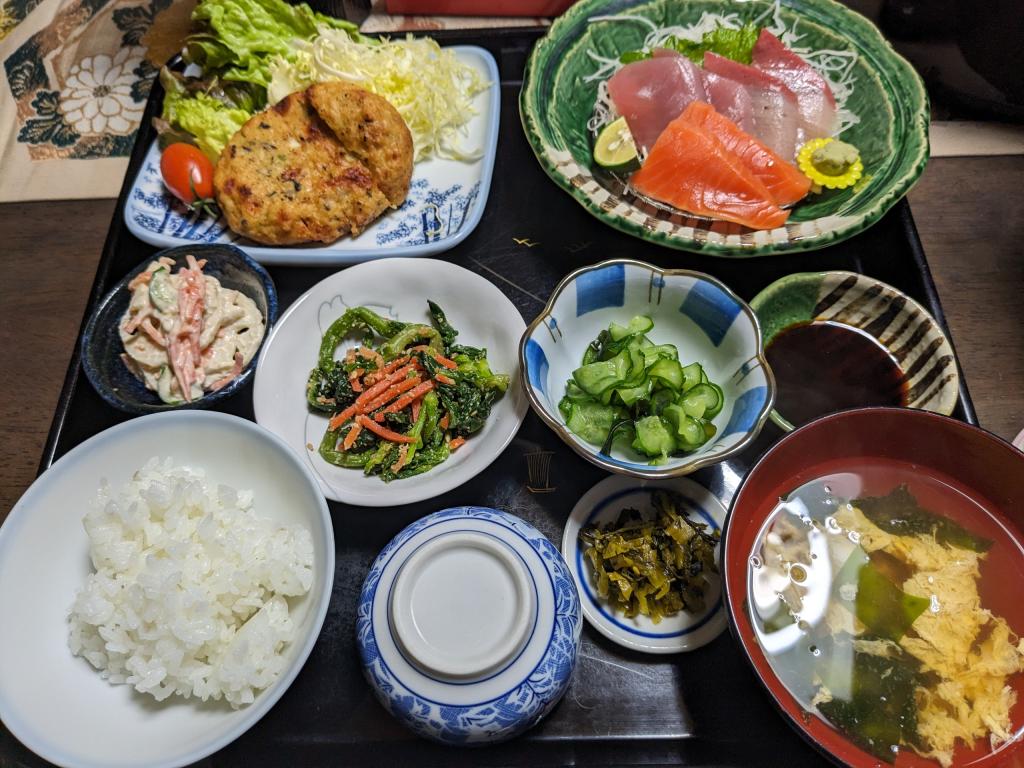
My japanese dinner in the Morimotoya Henro House.
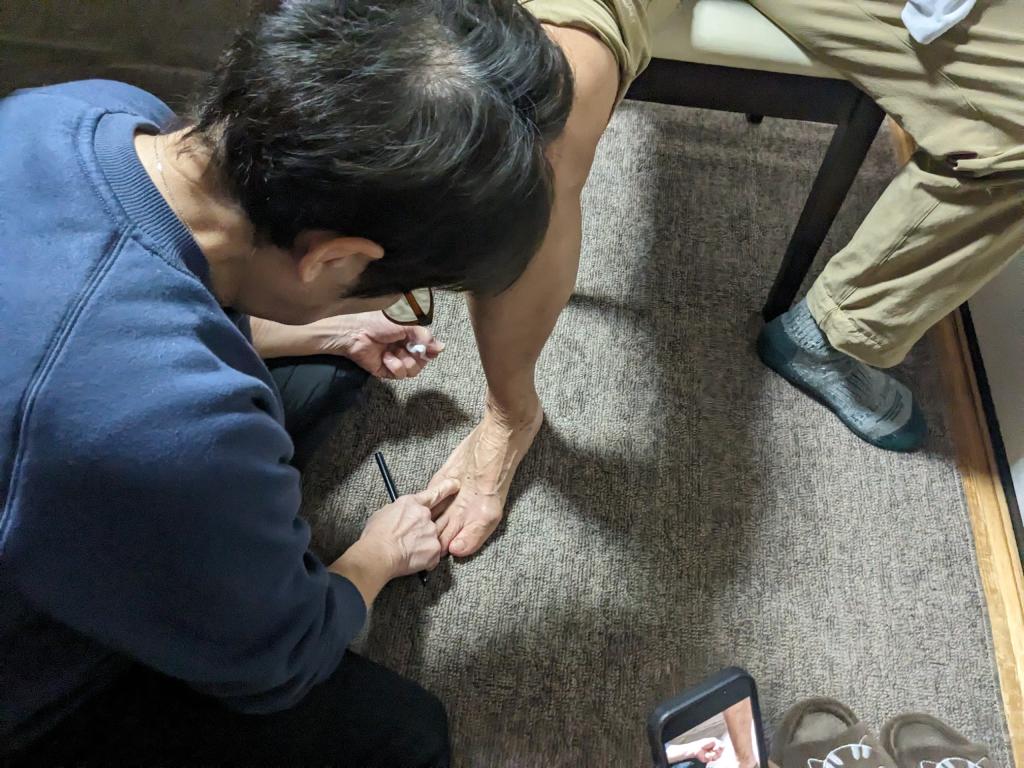
Mina, our Henro hostess, is an acupuncturist. She is practicing this morning on us. All the little ailments are reviewed at a gallop, shoulder pain, groin pain, knee pain...
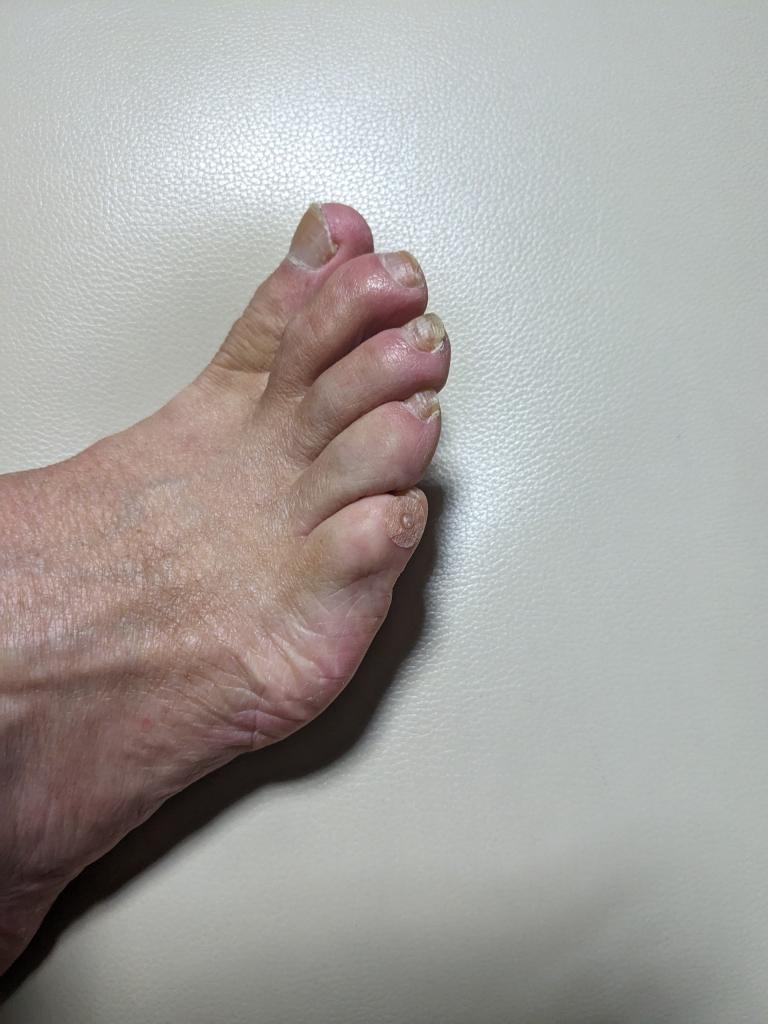
The needle on my little toe is supposed to permanently cure my tendinitis. After a minute, the matter, which had dragged on for 12 months, was resolved. Maybe I wanted to put an end to these needle sticks.
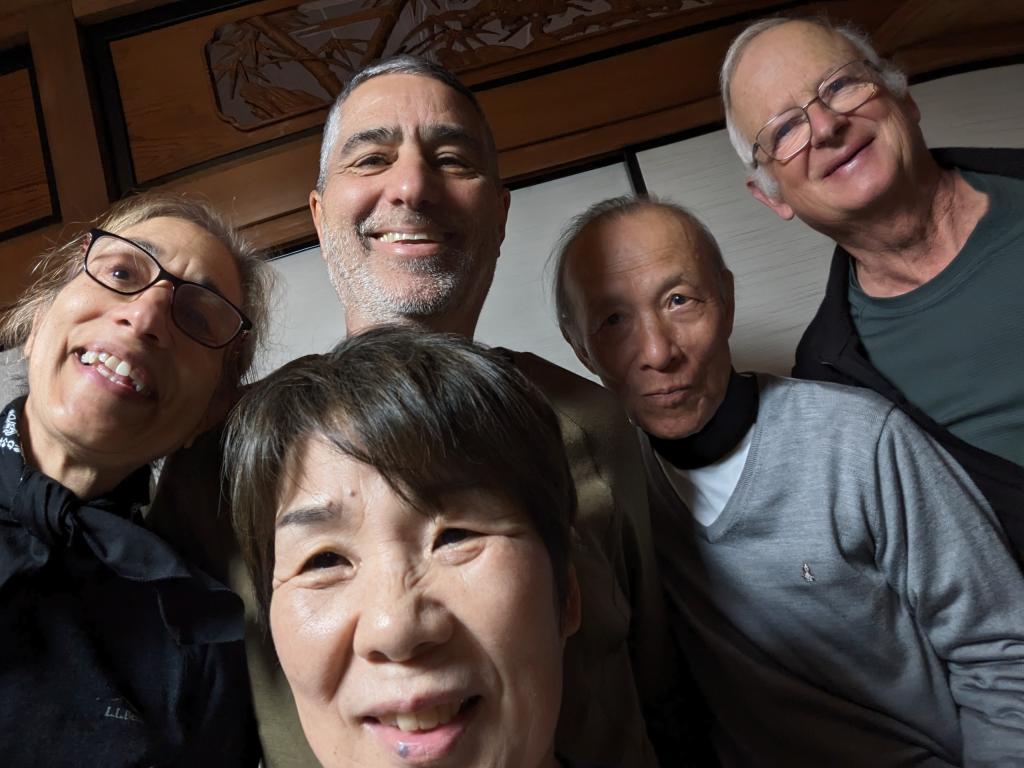
With Mina in the middle
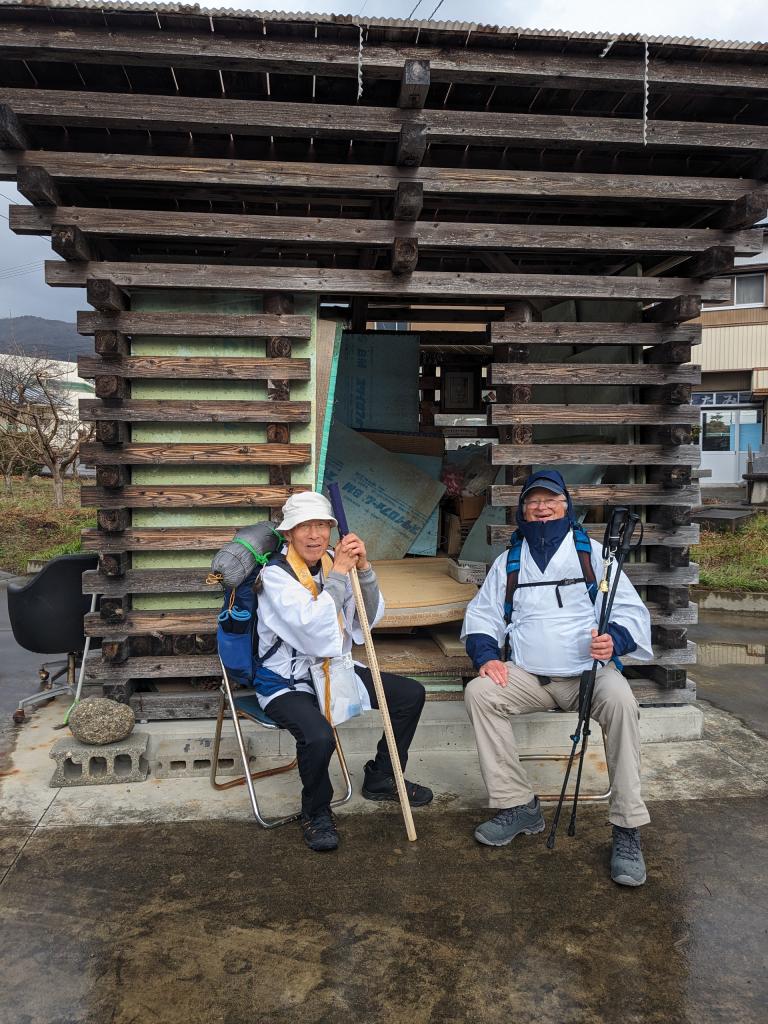
Small free hut for Henros, pilgrims on the way to the 88 temples of Shikoku. Will we let ourselves be tempted by this minimal comfort? Today the temperature dropped 10 degrees, not a good day.

Visits to temples 6 to 8 with the same ritual. A salute by leaning forward with folded hands, entering from the left side, washing hands, ringing the bell once, giving a thank you tag, visiting the premises and stopping by the office for tampons by paying 300 yen . As you leave, say hello one last time.
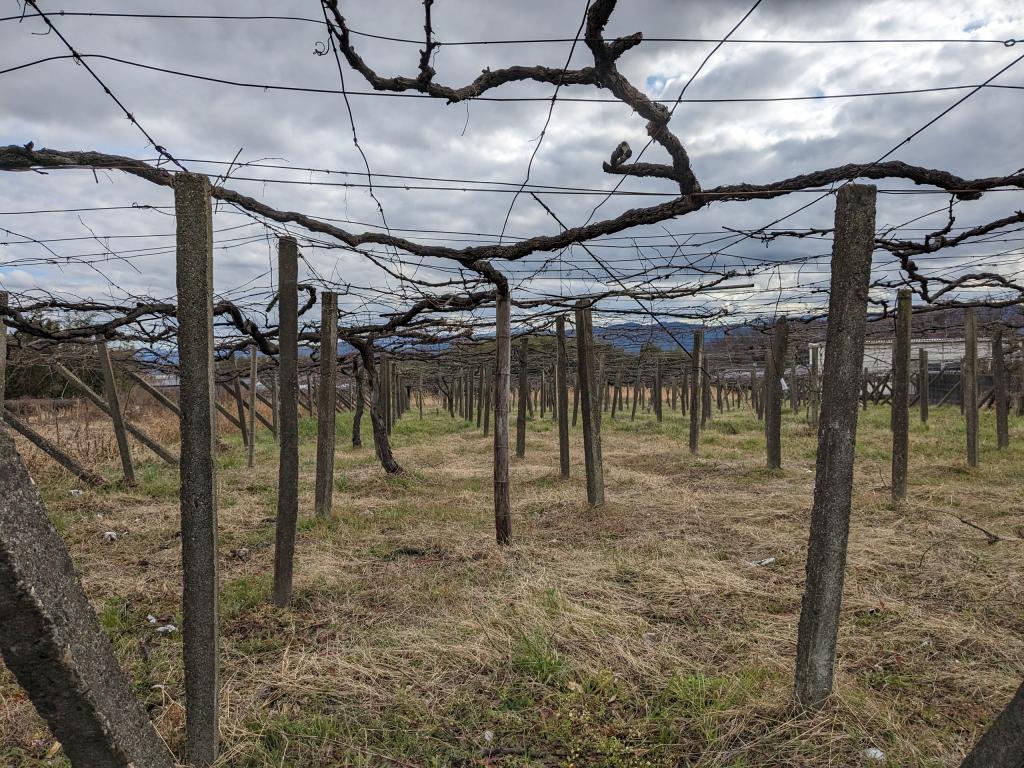
Japanese vines with an astonishing arrangement of branches.
Not photographed, the public bathhouses of Gosho no Sato where we scrub ourselves, immerse ourselves in hot baths, sweat in the saunas, all in Adan's outfit. Bad luck for me, the hot outdoor bath made me dizzy, I passed out and I was saved from drowning by Chuck.
Indisposition from saunas, lack of a good midday meal, lack of sweets, sleep disturbed by last night's gale? After performing in the public bath for half an hour with a bunch of spectators pampering me with towels and water to drink, it took me 2 hours to get back into Olympic form.
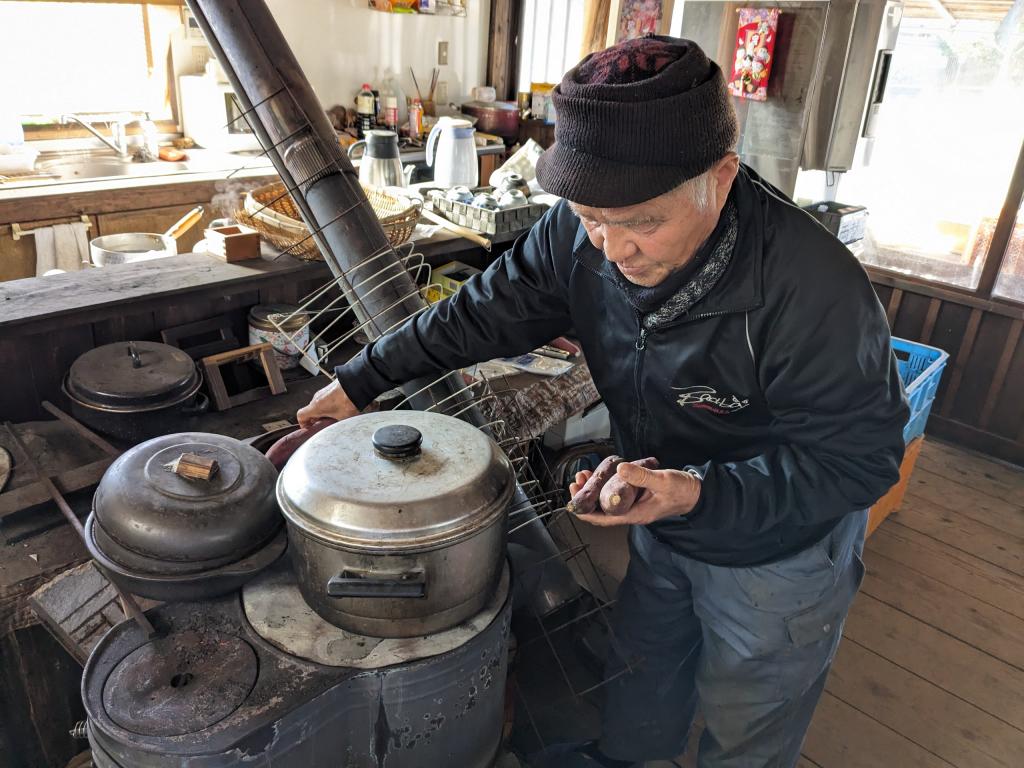
Uru prepares us potatoes to accompany our breakfast tea
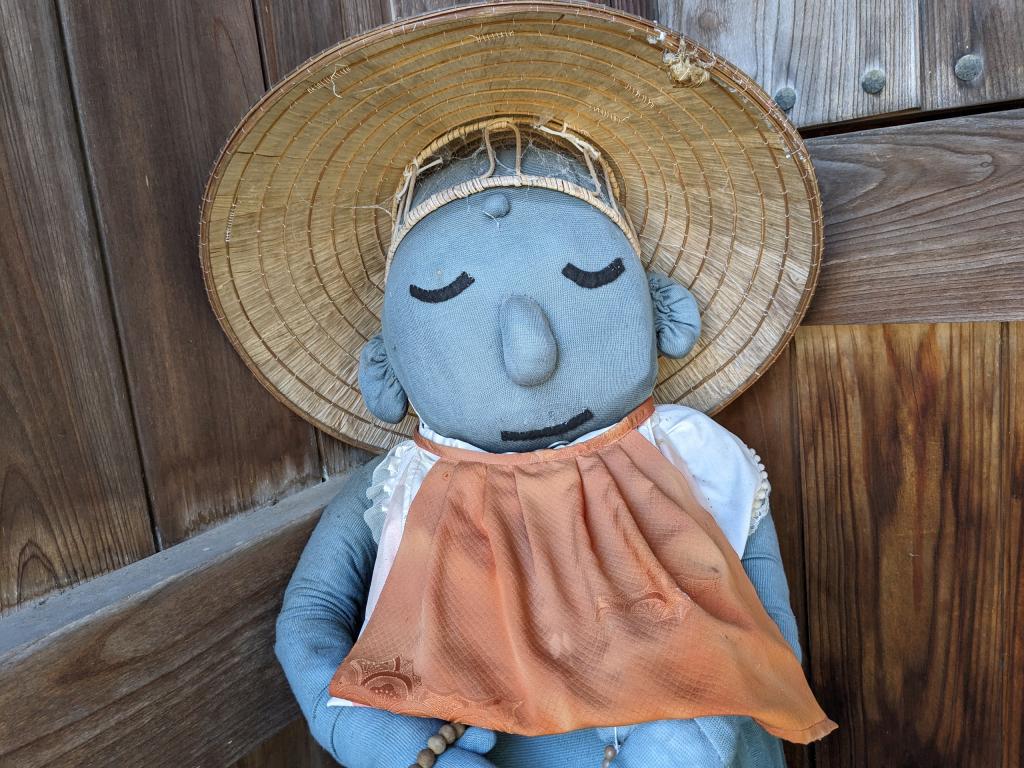
A figurine in front of temple 9 with a little air of Brittany
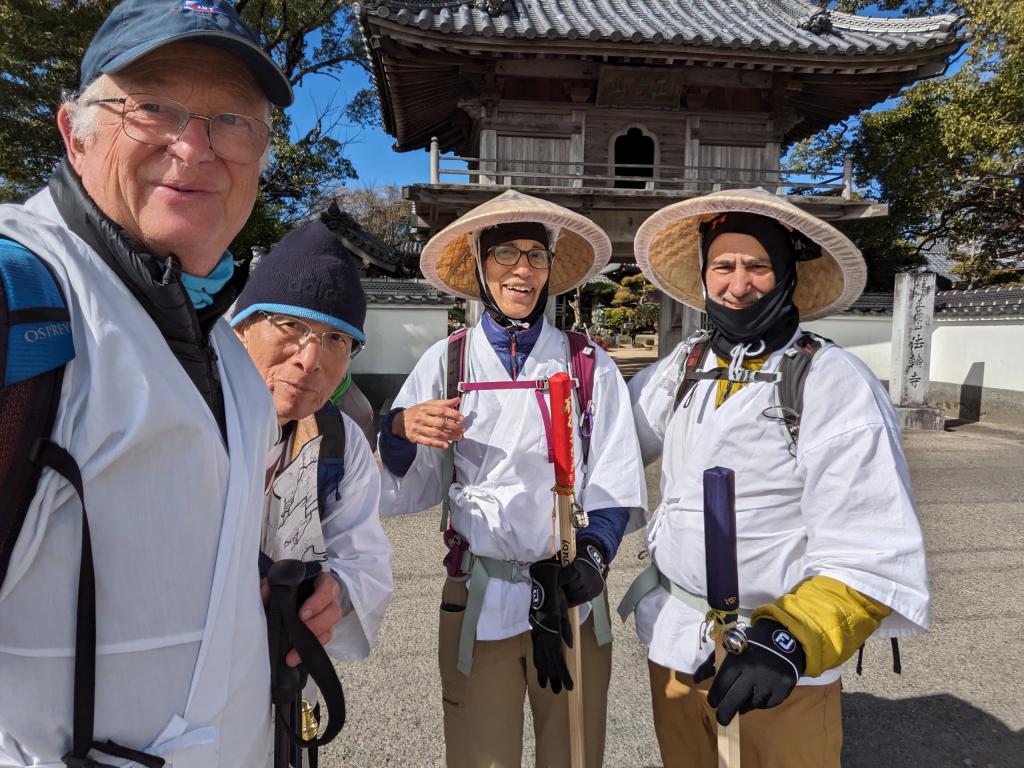
In front of the temple 9
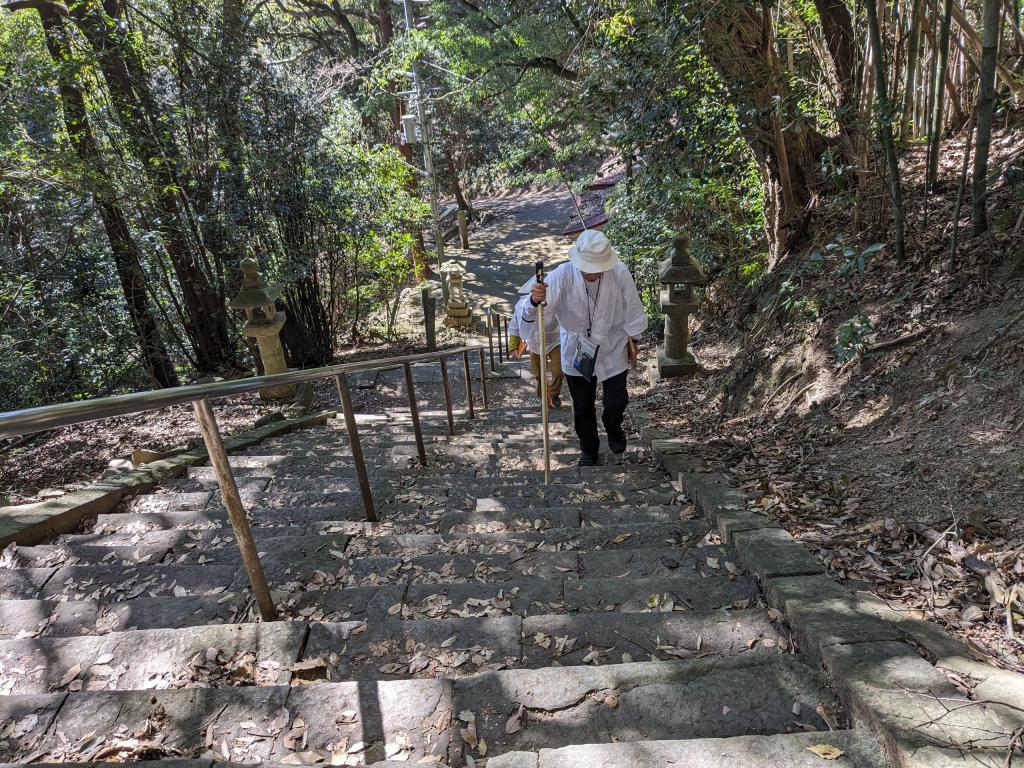
350 steps to temple 10
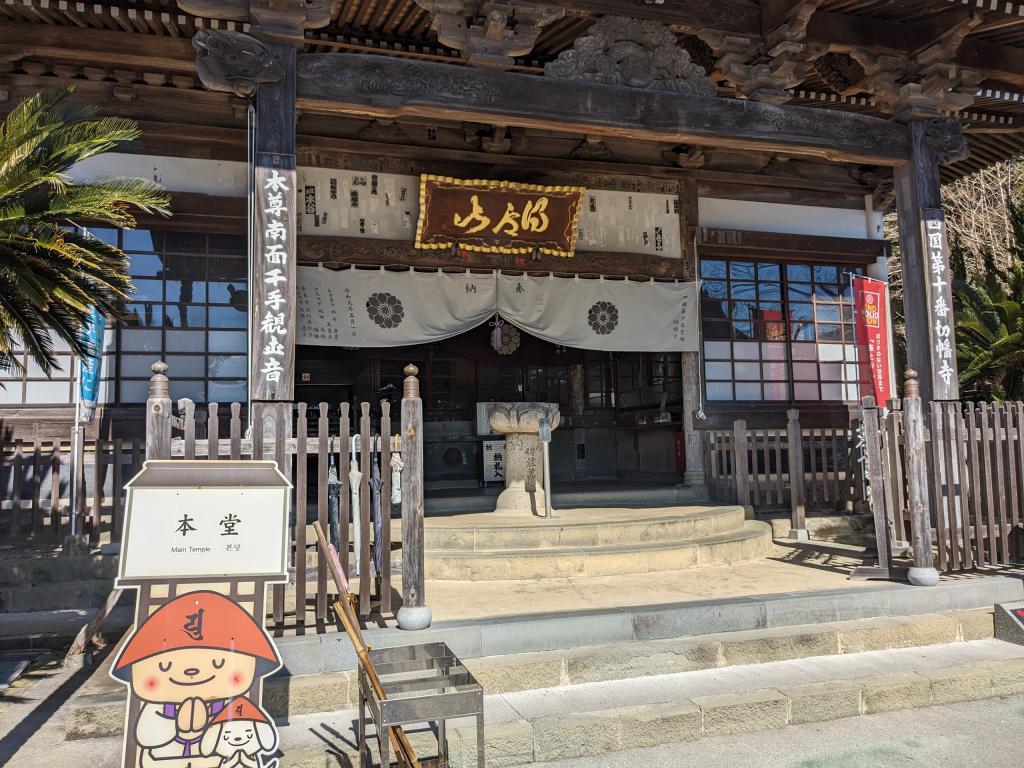
Temple 10
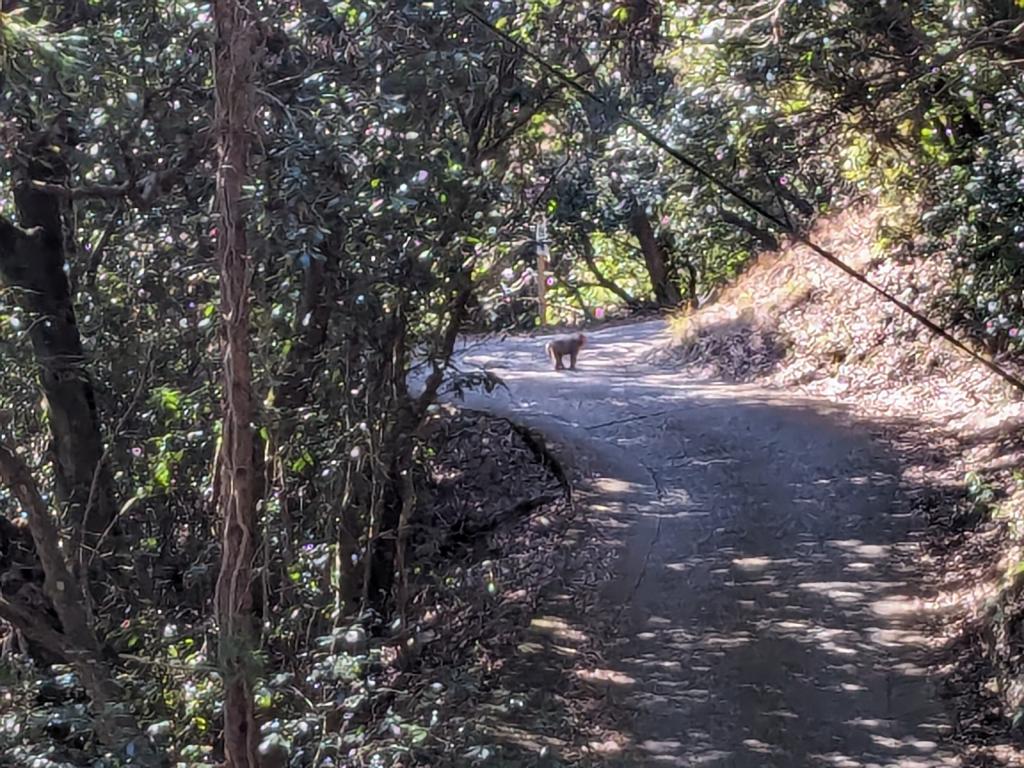
A monkey near temple 10
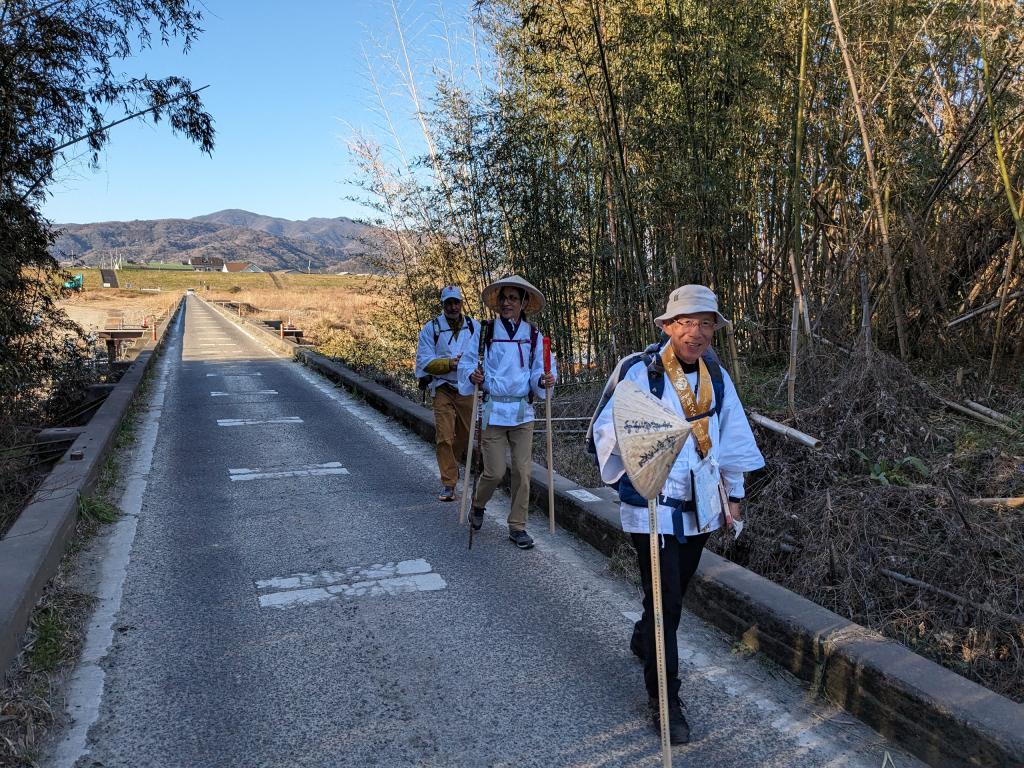
Walk between the bamboos
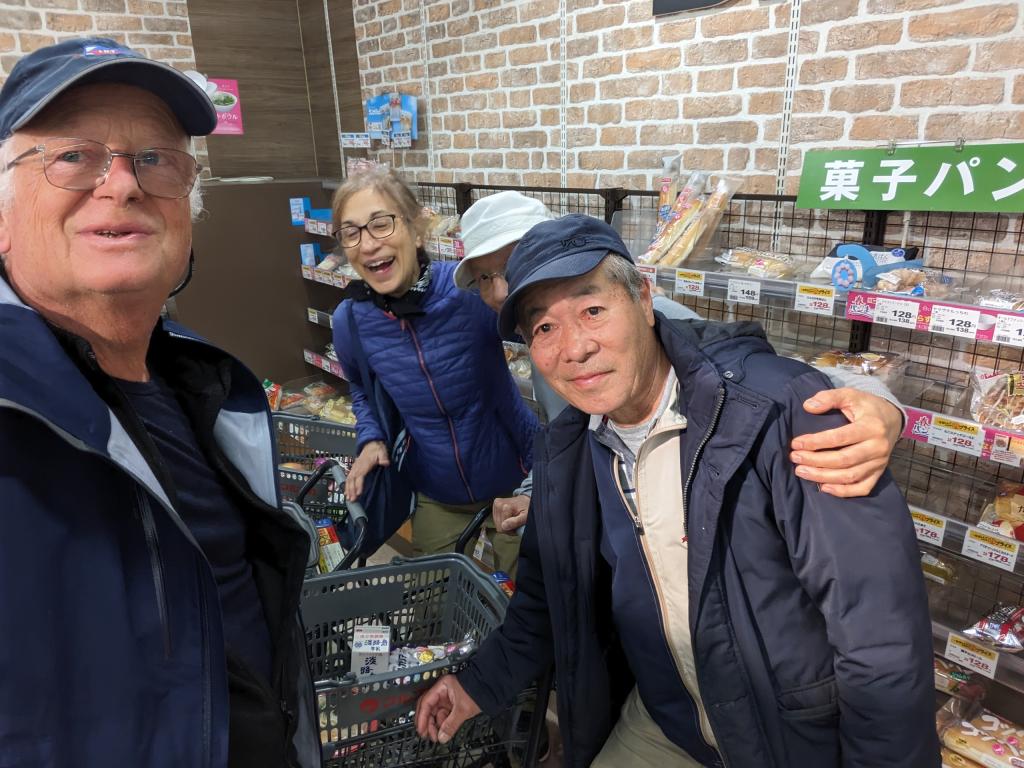
Food shopping with Masota who guides us between the different departments

Working session to reserve our stops until next Friday with Masota, our host this Saturday evening.
Masota was part of a comparative study commission between the Camino de Santiago and the tour of the 88 temples of Shikoku, which brought him to Europe and to Santiago de Compostela in particular...
The guest house was just finished 2 months ago. We are among the first pilgrims to stop there.
To relieve my backpack, I abandon my useless sandals in Japan since we are systematically offered slippers. On the other hand, I keep my equally useless sleeping bag, but I care too much about it.
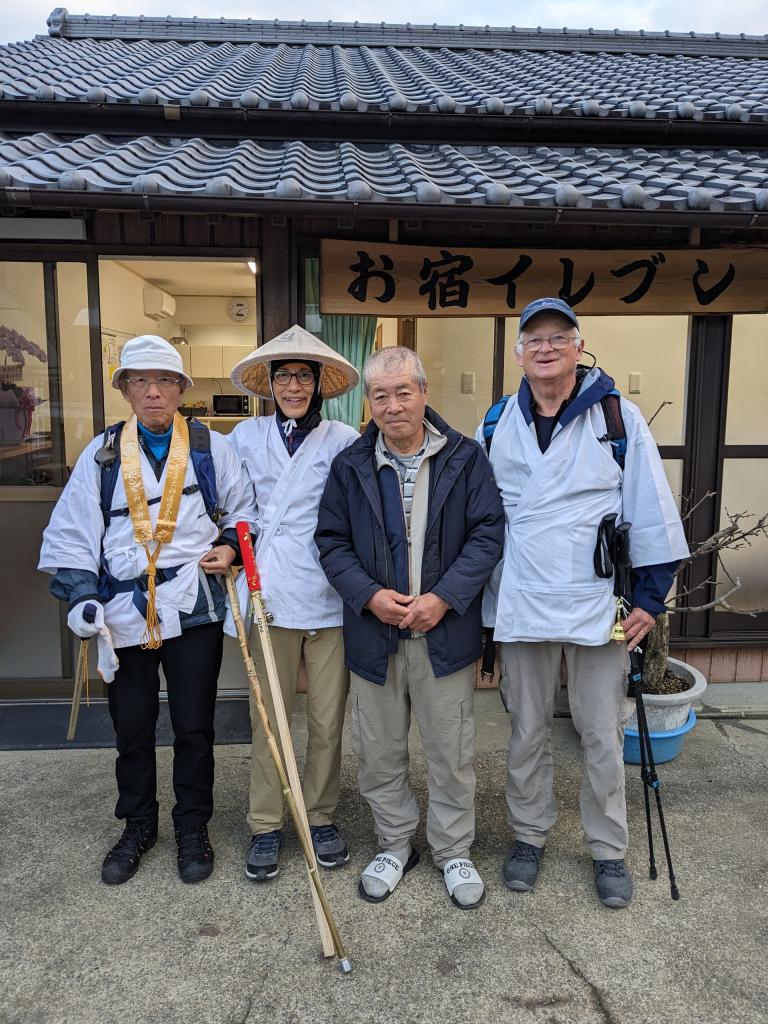
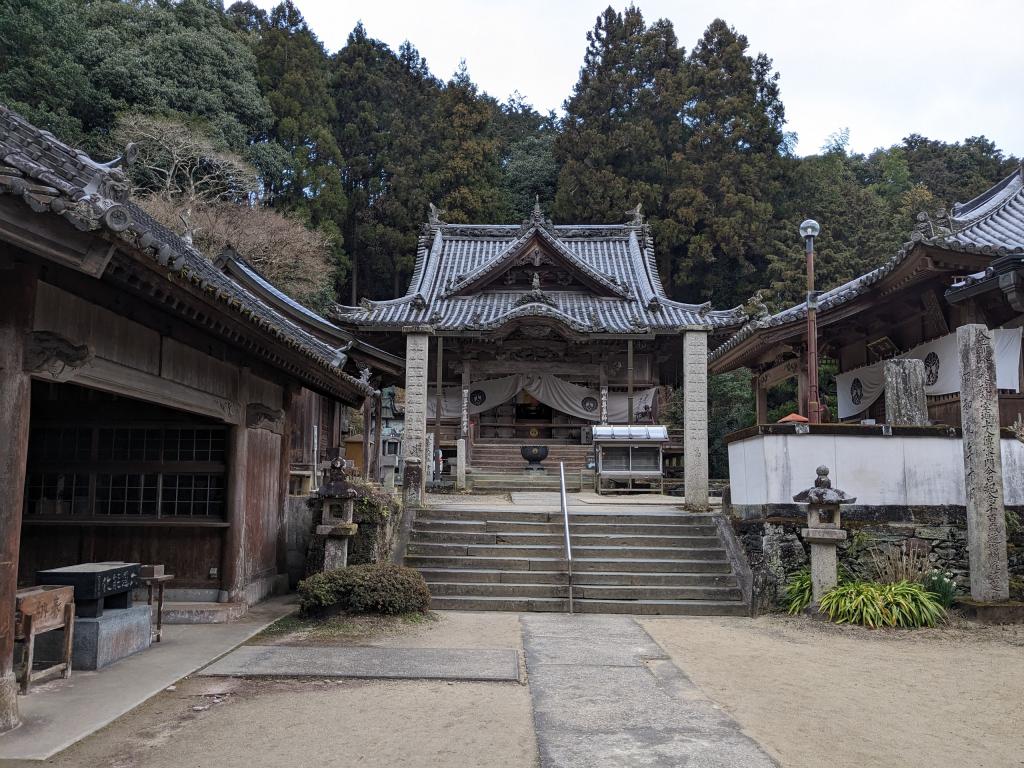
Temple 11
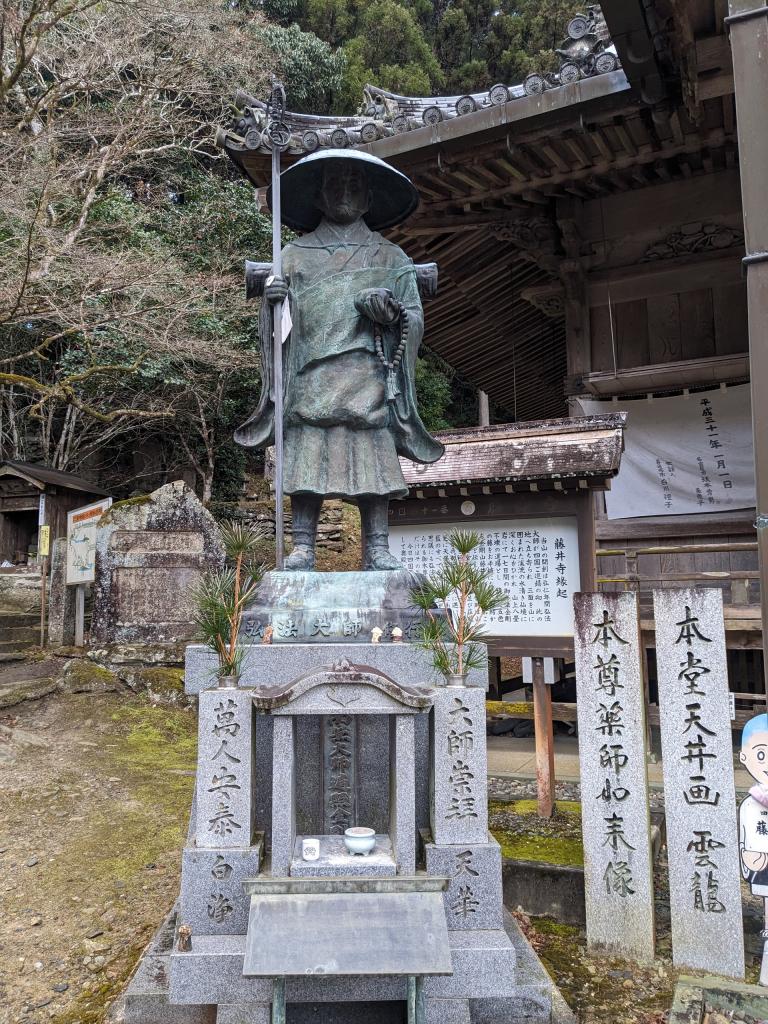
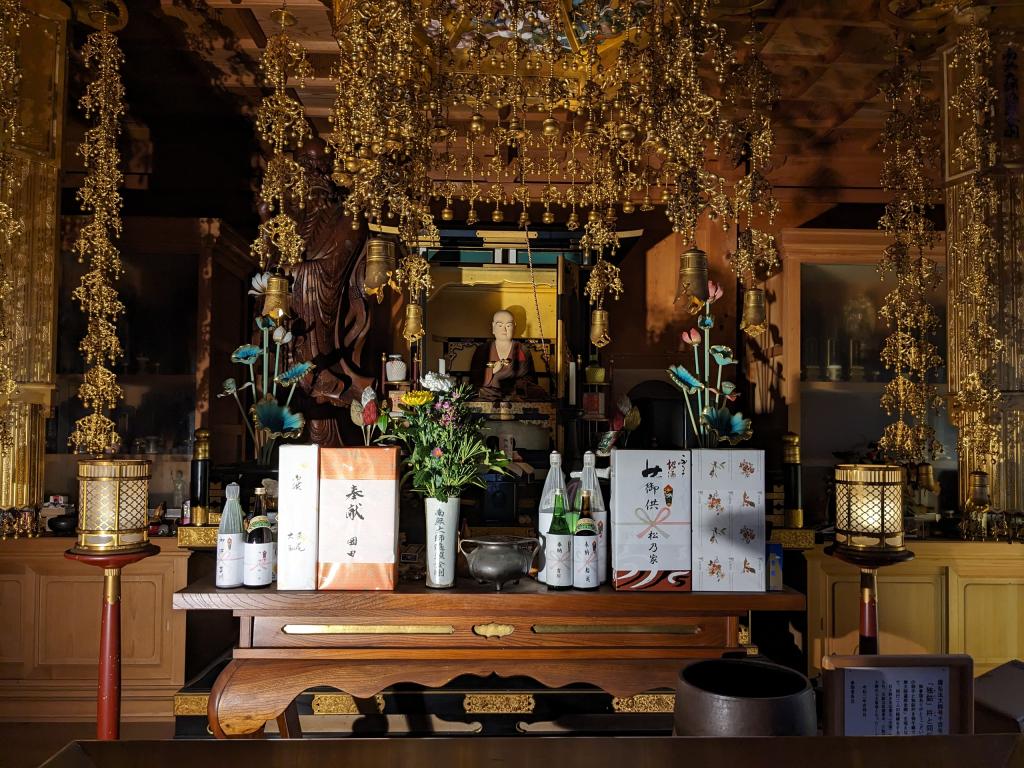
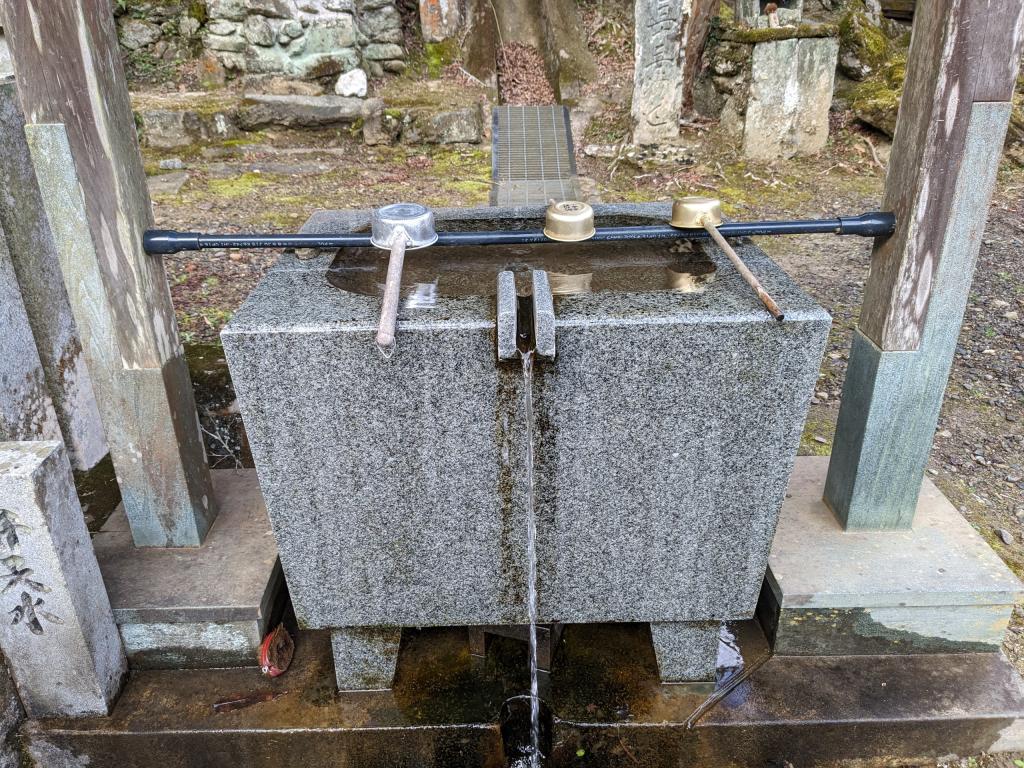
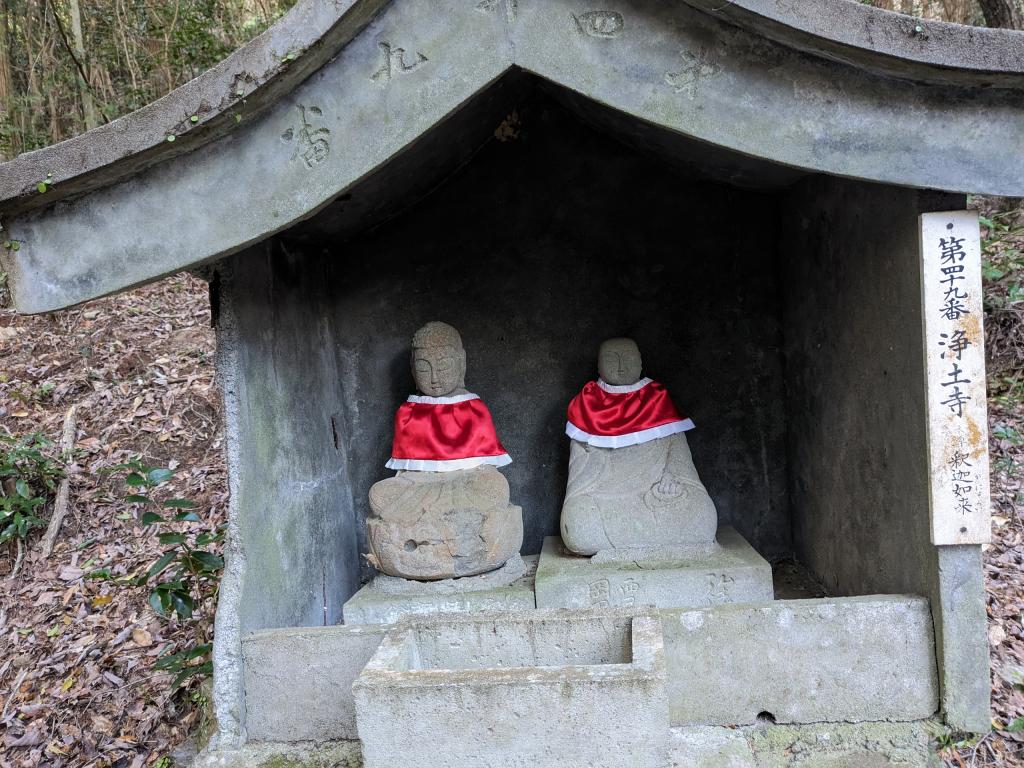
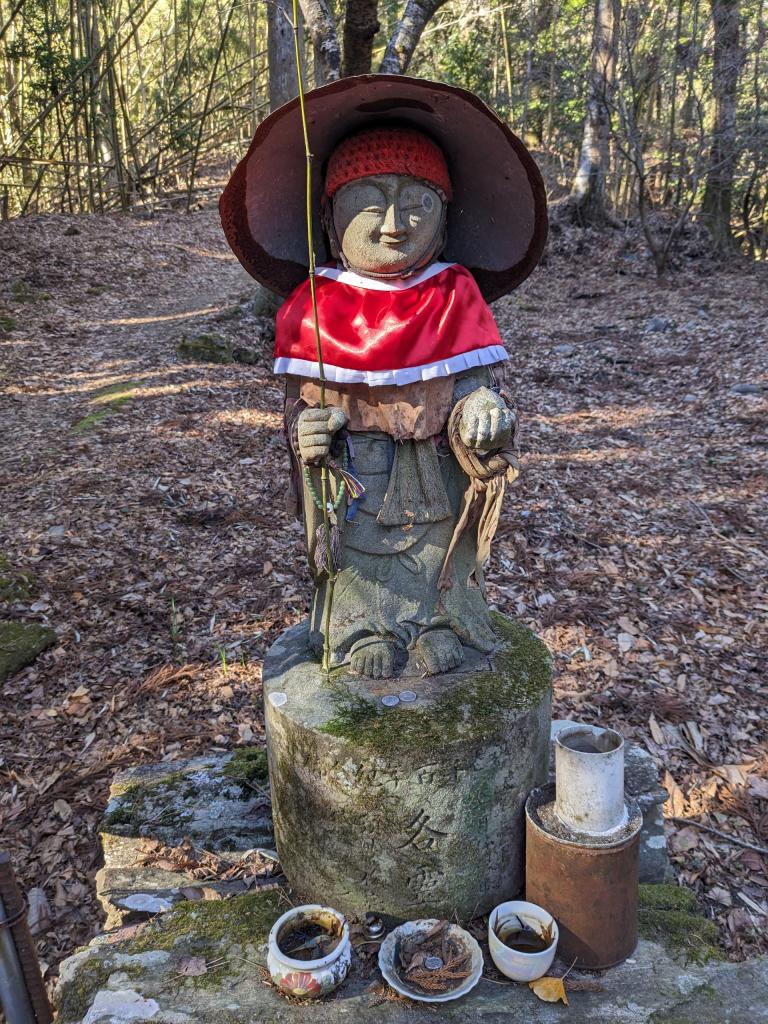
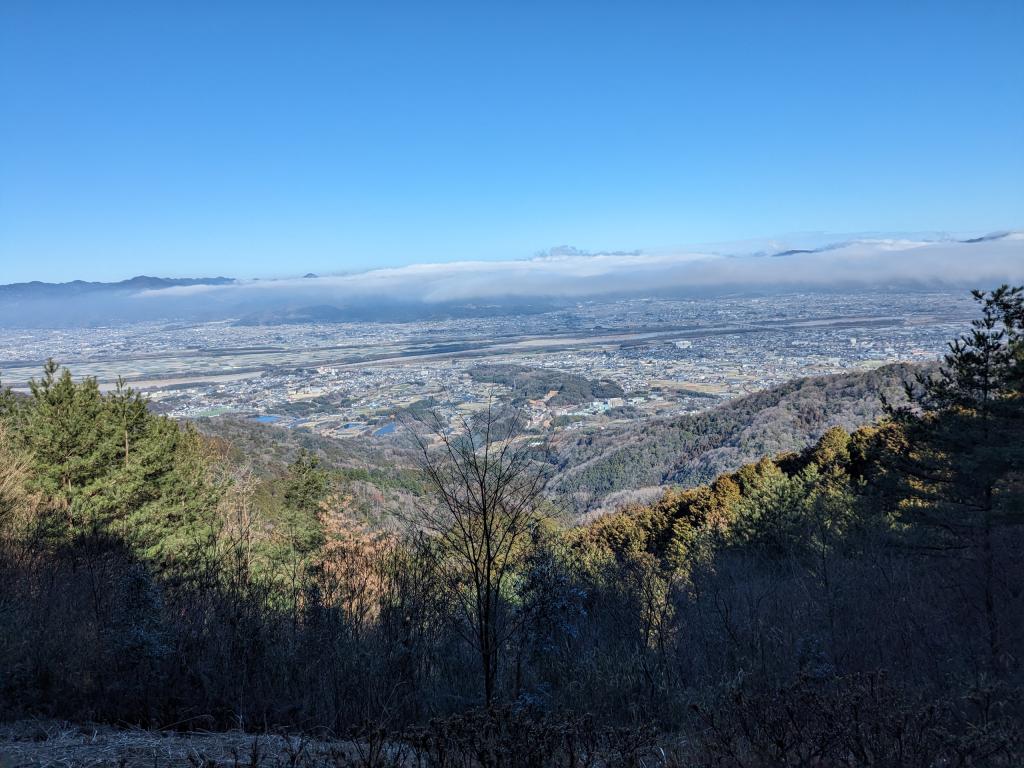

Pine forests
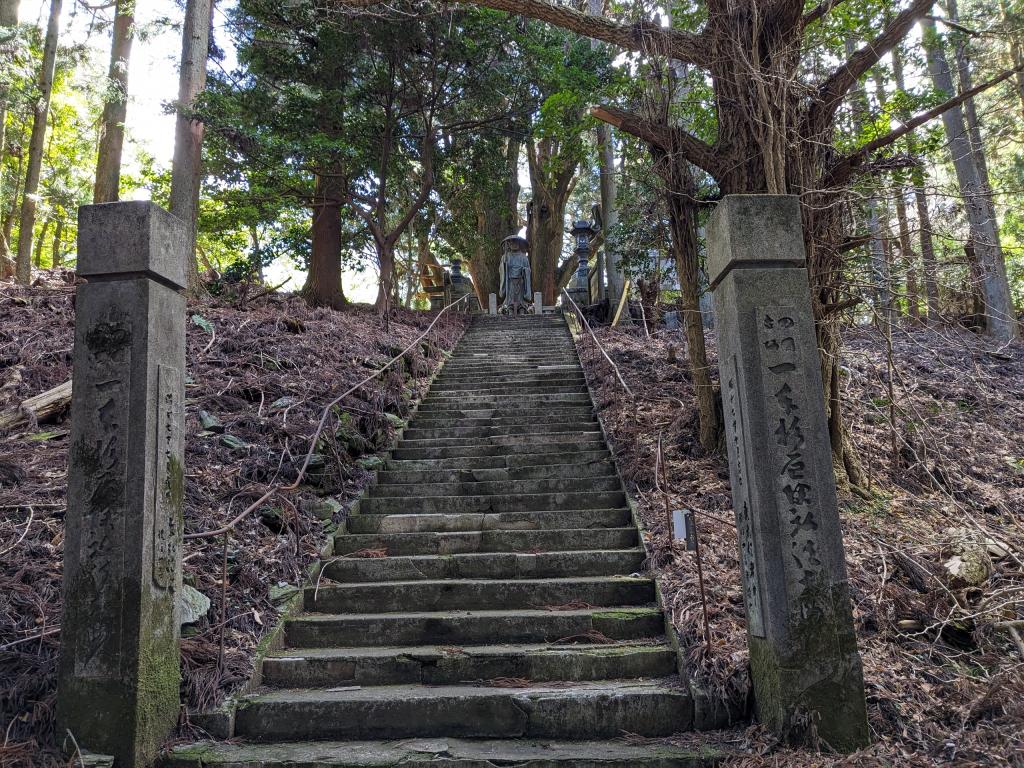
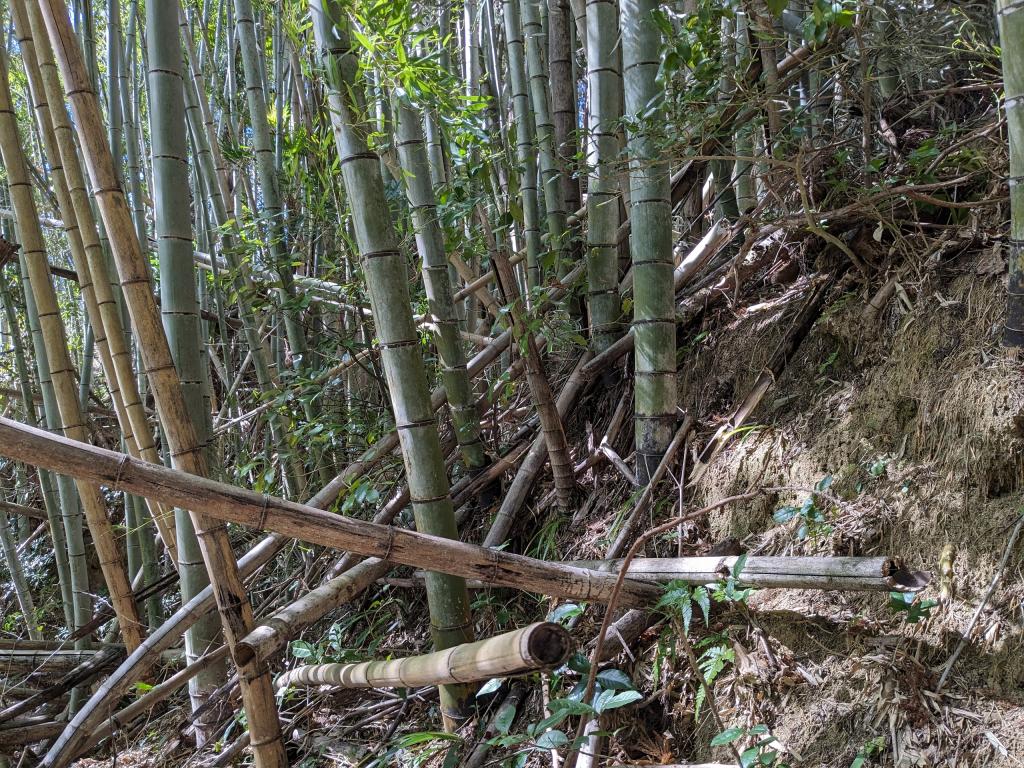
The bamboos
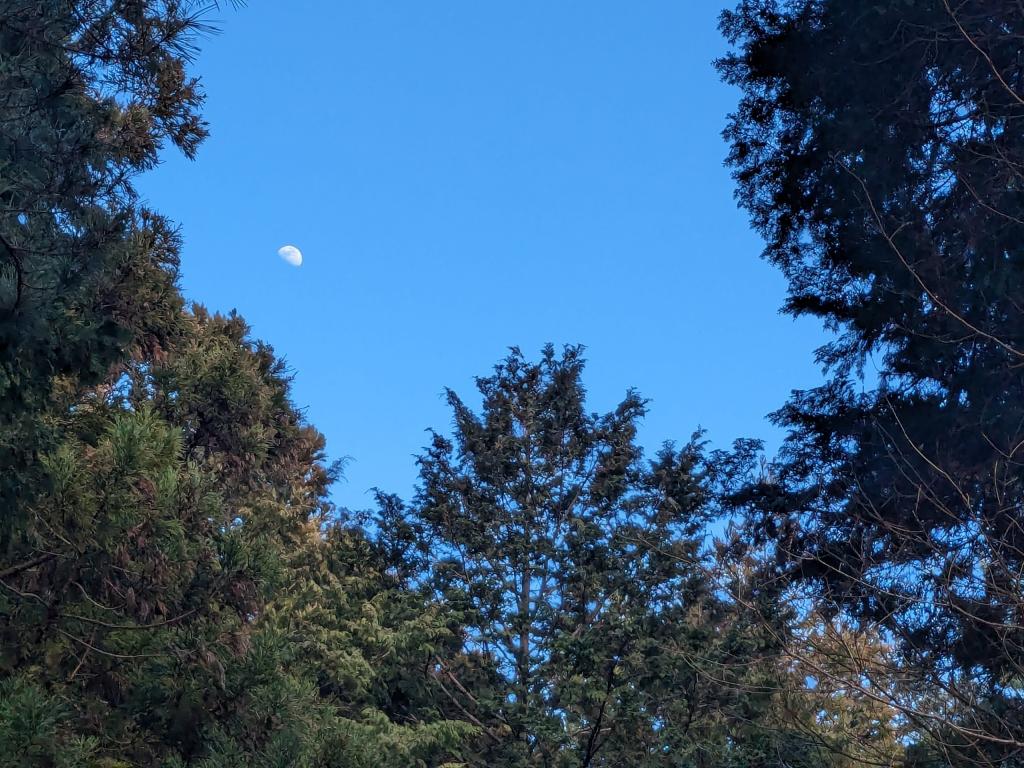
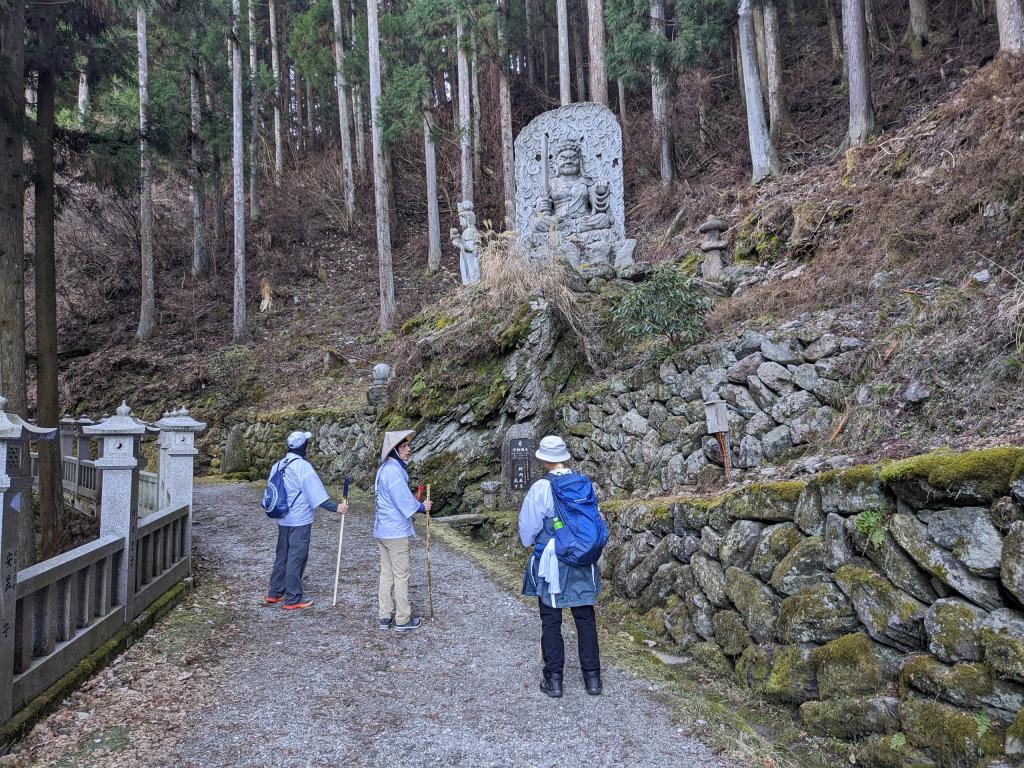
Arrival at temple 12
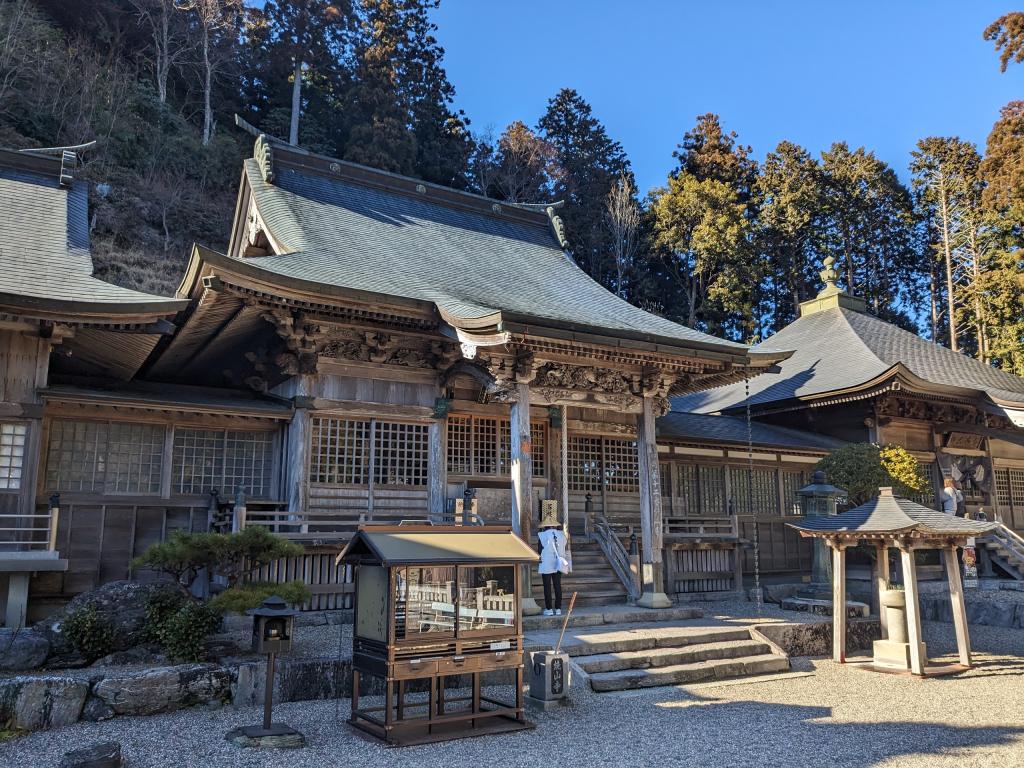
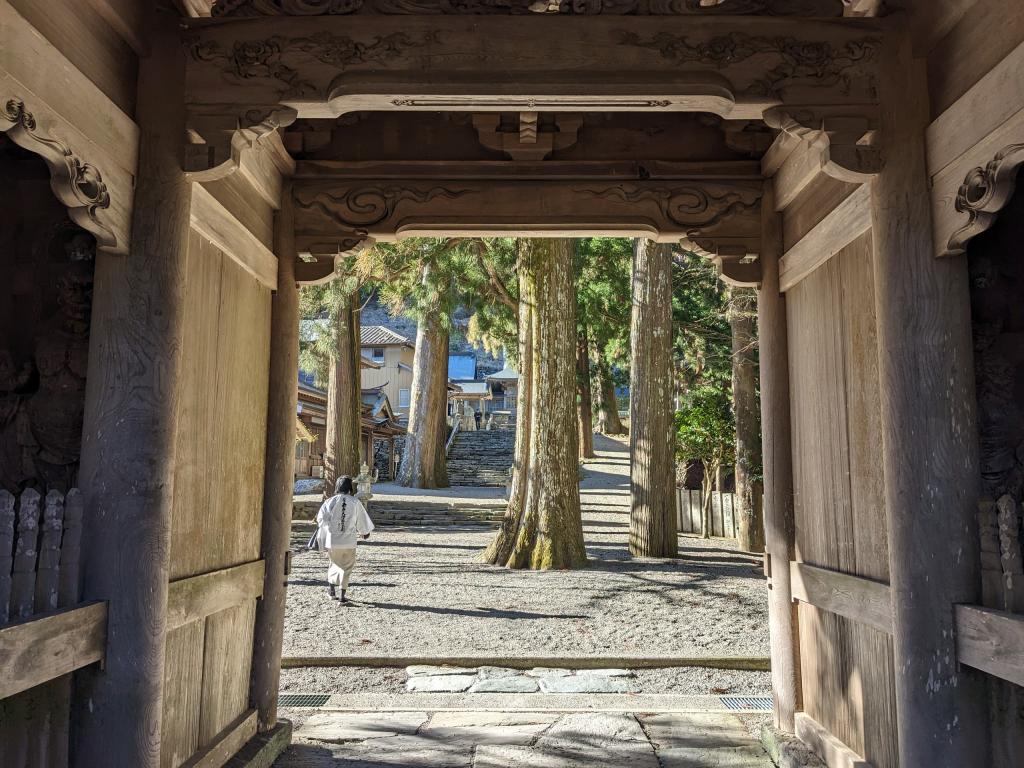
Temple 12
After a walk in the mountain with several drops of 750 m, temple 12 is a major temple on the route which allows it to cost us 500 yen instead of the usual 300.
I begin to chant the sutras facing the 'main temple' of each temple. Of course, I also try to get my little group to sing ultreia, not in the temple, but in the forest.
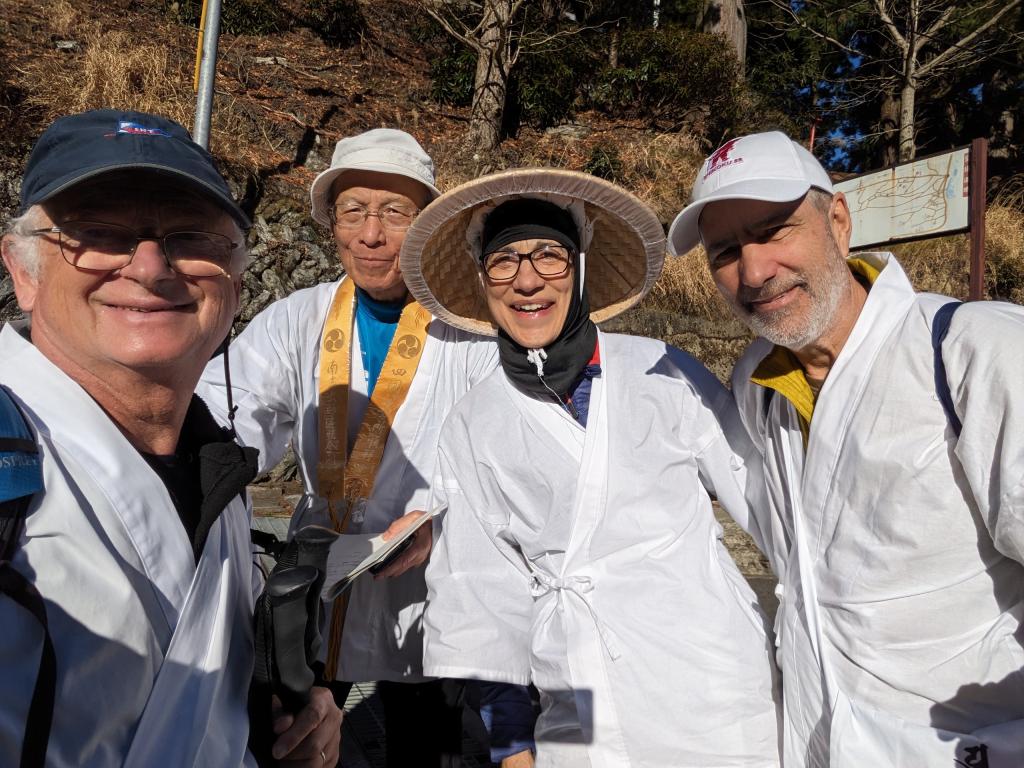
Don t forget to see the beauty

Last drink!
Judy has knee pain. At temple 12, she withdrew and was taken by car to the accommodation by the host. She gives up. Tomorrow, she and her husband Chuck will return to the comfort of a hotel that might allow them to recover and get back on the trail later. Like me, they plan to leave Japan on March 22.
We will miss Judy. Of Italian origin, she is exuberant, always creates a good atmosphere and finds everything wonderfull. She formed a close couple with Chuck who was also a good traveling companion. Judy created a Fabulous Four WhatsApp group to communicate with each other.
I will continue with Yasu the program planned until Friday which should take us to temple 23 and the end of the first quarter of the path.
During the day, I met Frédéric and Jean-Luc from Paris who are passionate about Japanese culture and who do parts of this Shikoku path every year. They had difficulty towards the end of the day and found a car to get to the accommodation.
The goblet is filled with Shikoku wine
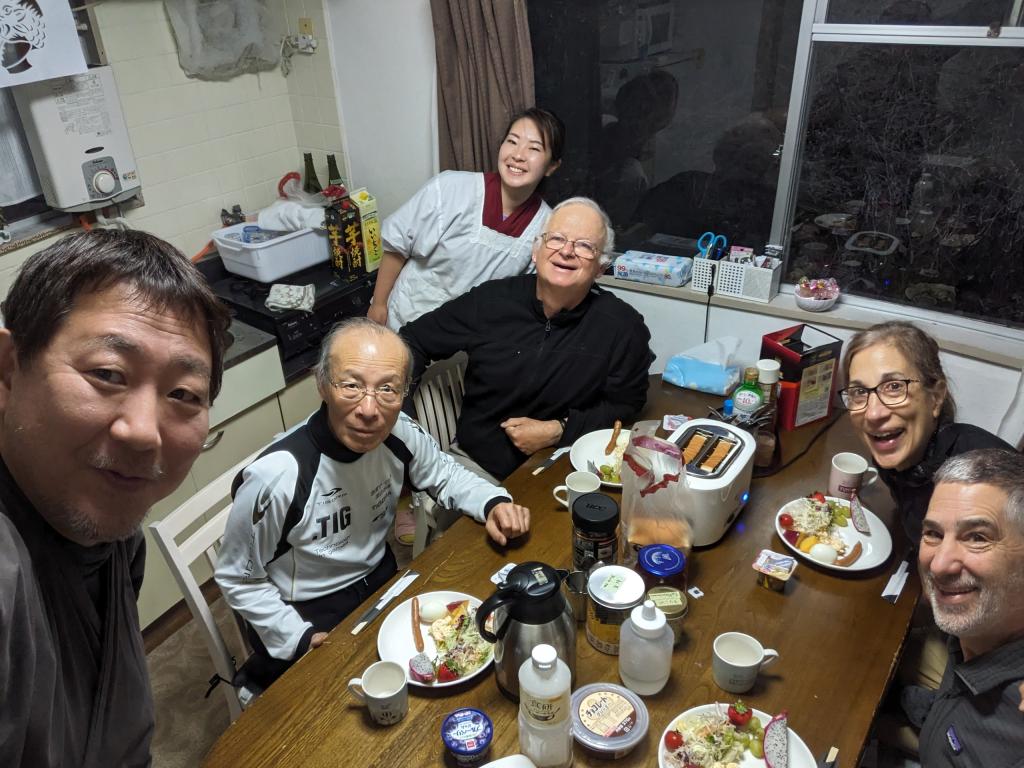
With Tik and Mia our devoted hosts
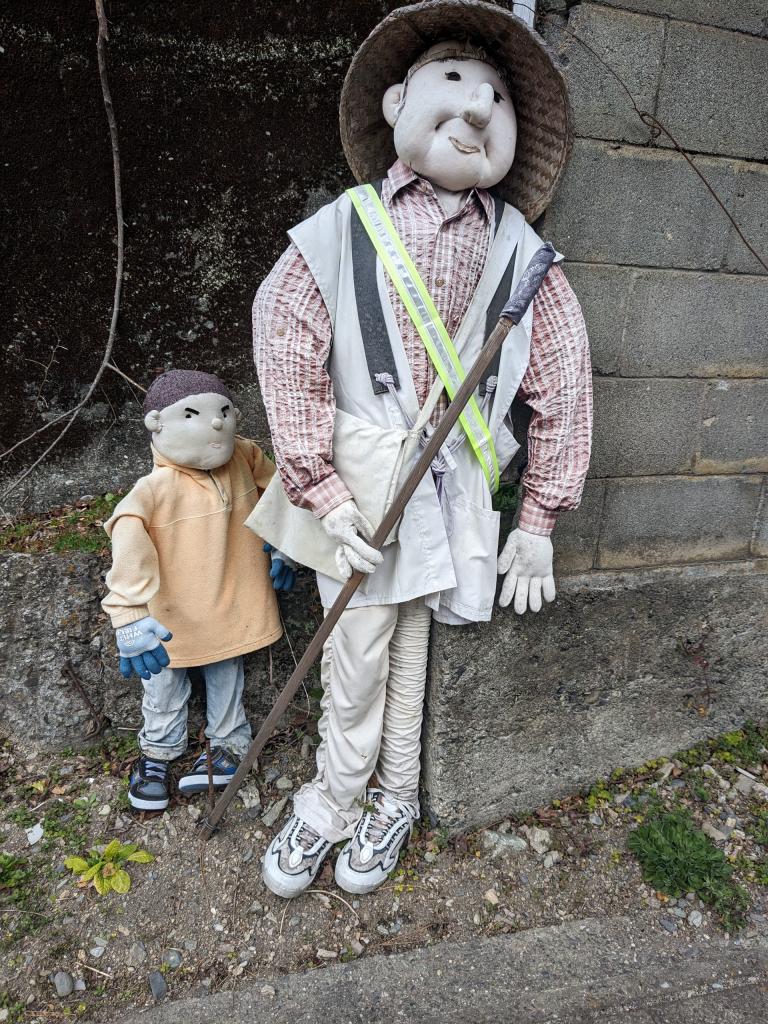
Lots to see on the way. The Henro is considered to be in Spain. In addition, here, the population often offers a small gift that should not be refused: fruit, small cakes, drinks... The convention is to give in exchange a thank you label with their contact details. I bought a bunch of labels initially, I put them in temple urns and also give them as thanks.

Pedestrian crossing over the river

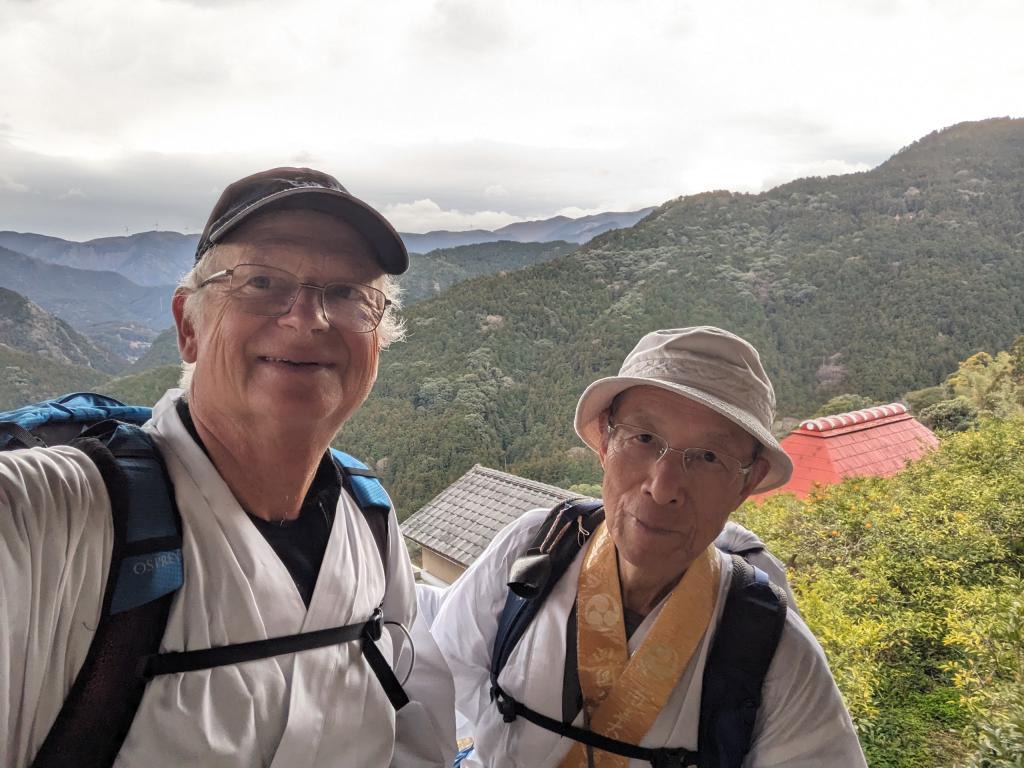

The cherry trees already in bloom
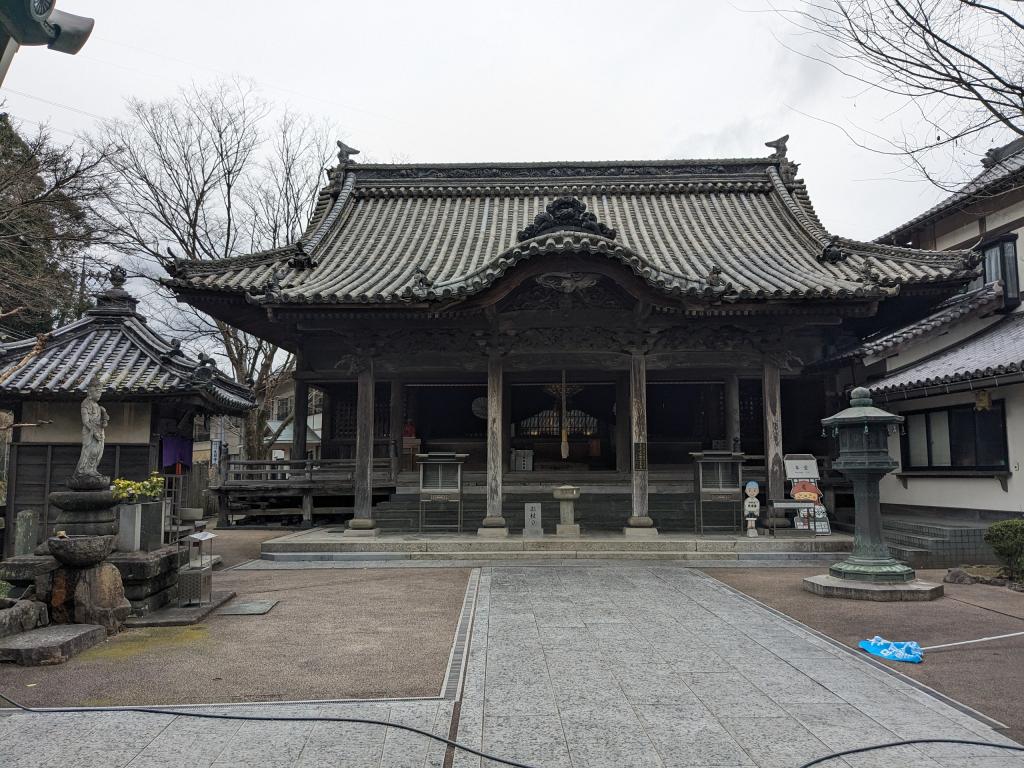
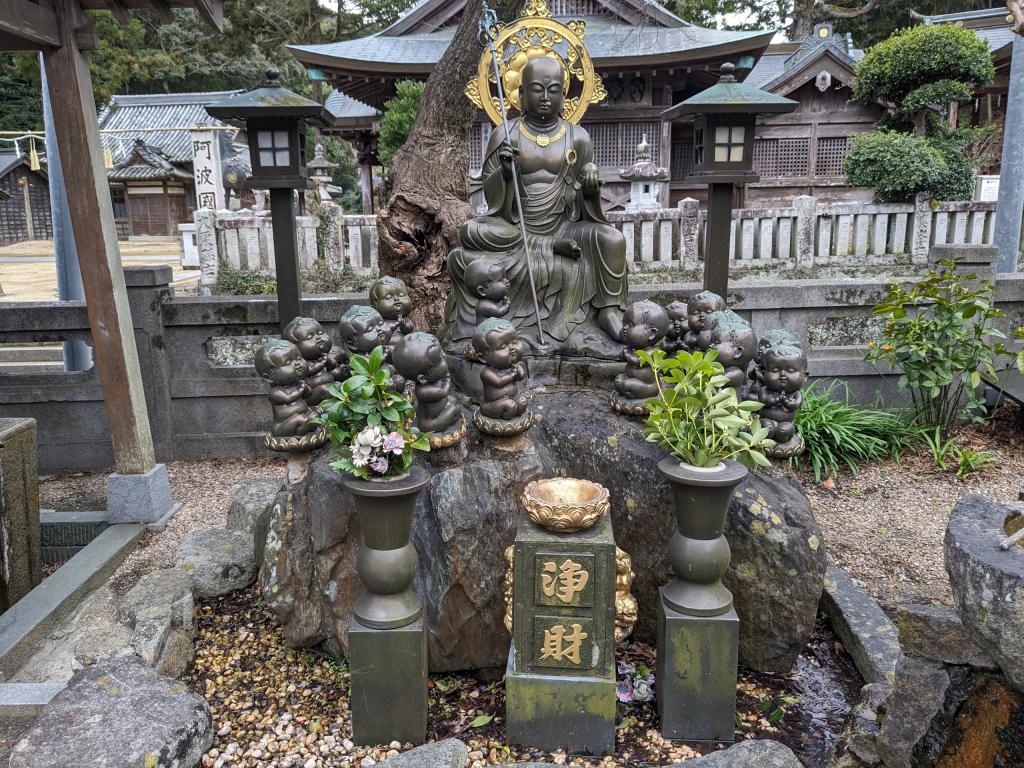
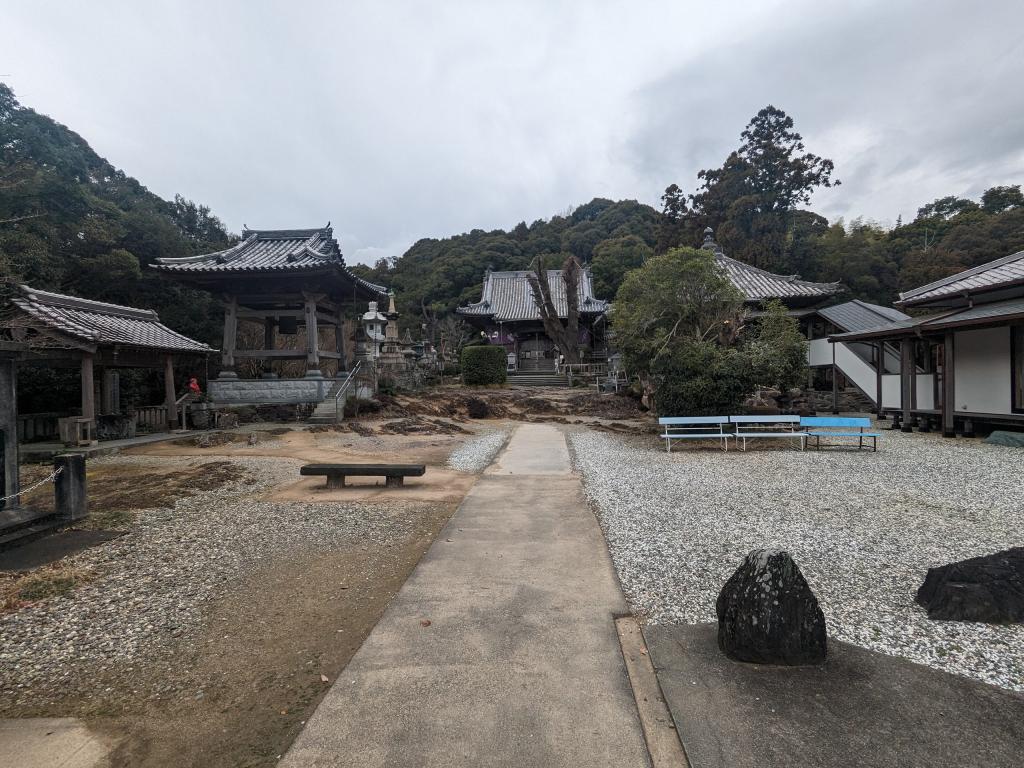
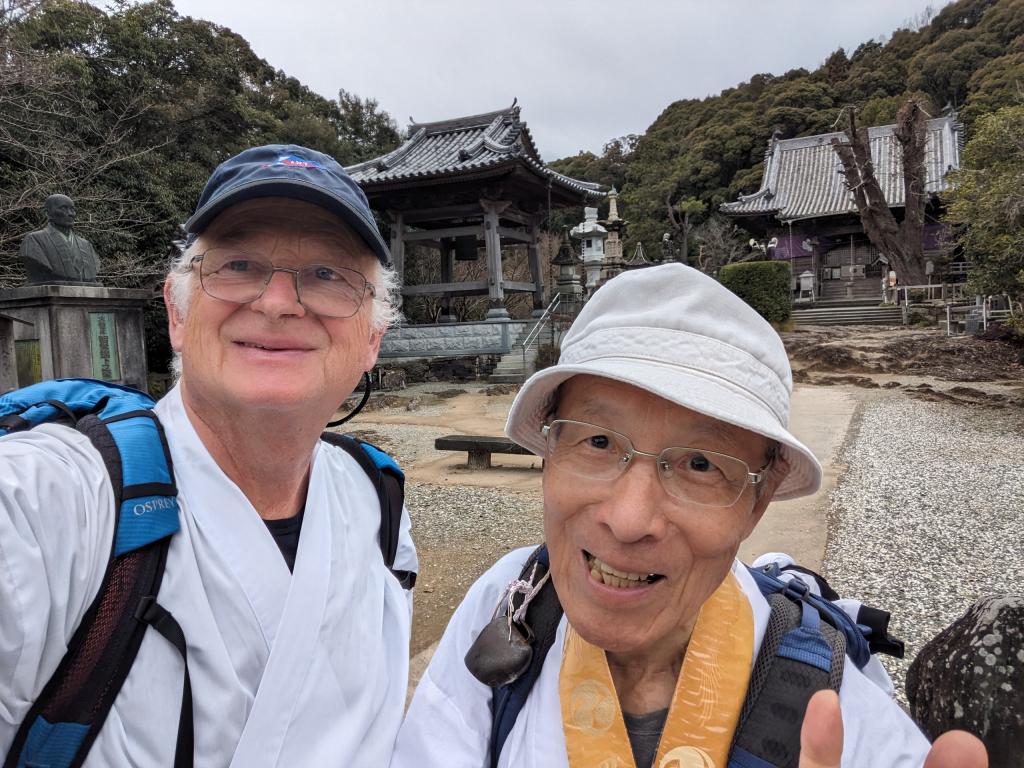
Visiting temples 13 to 16 with Yosu
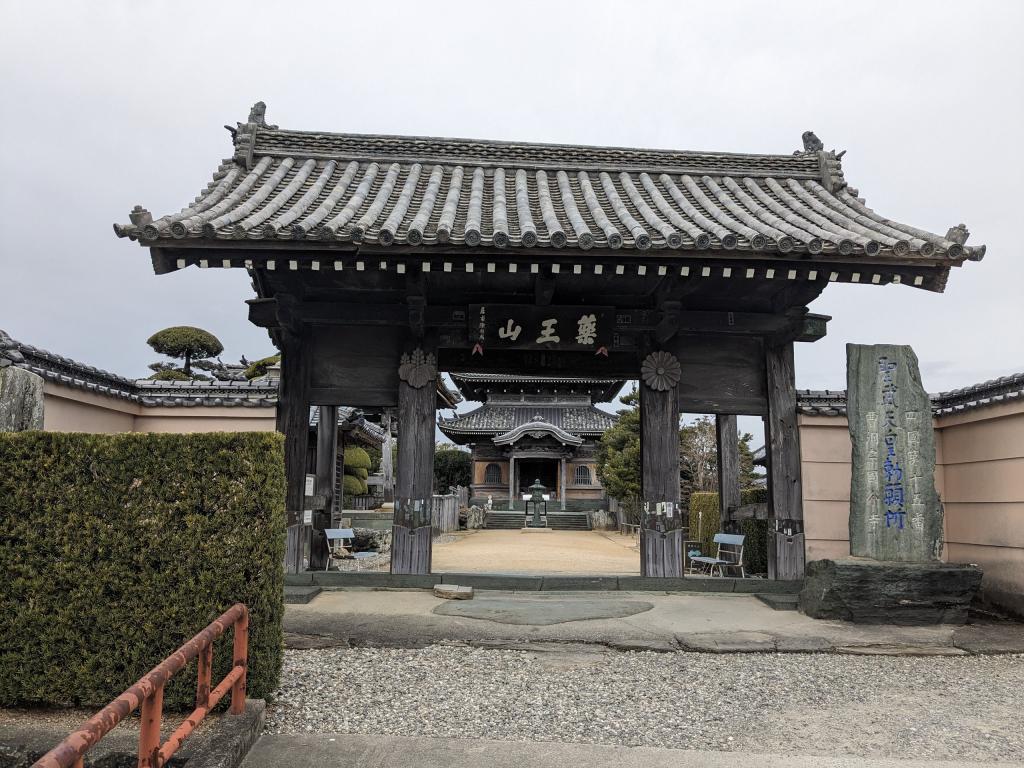
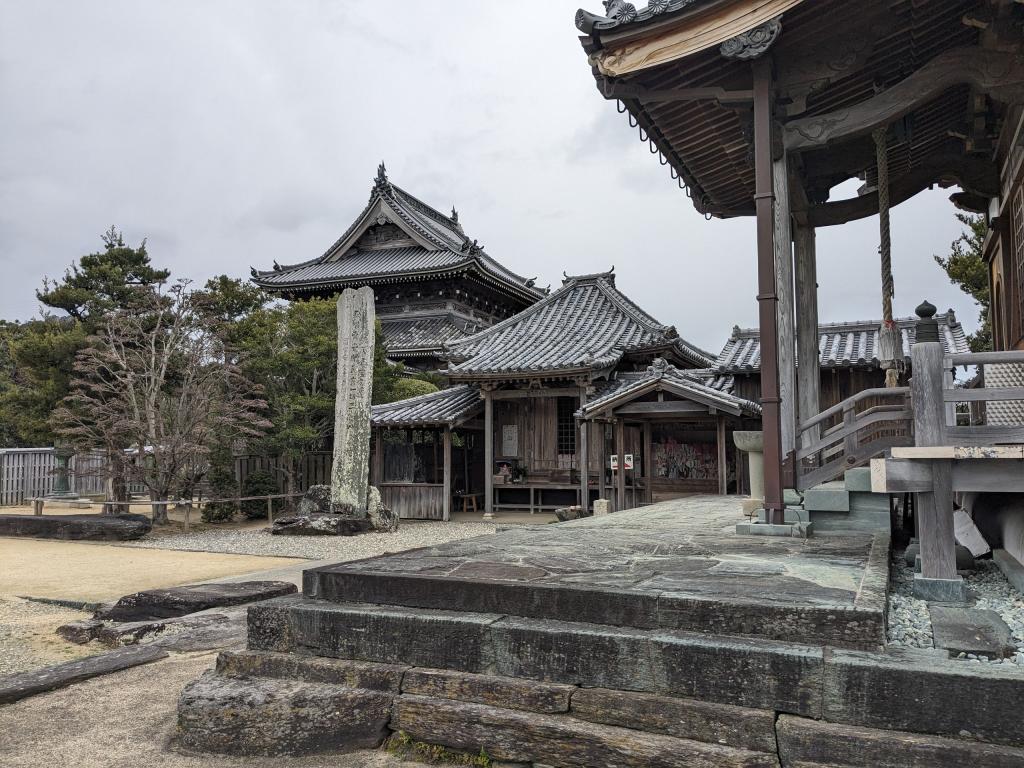
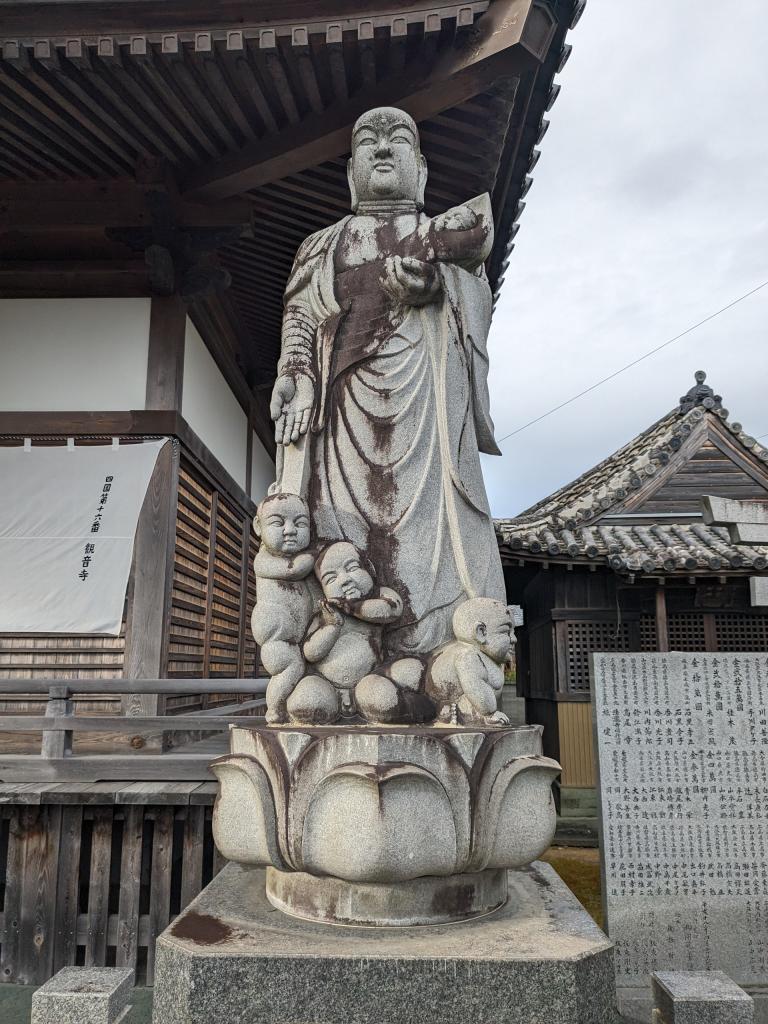

Temple 16
Take care of your health
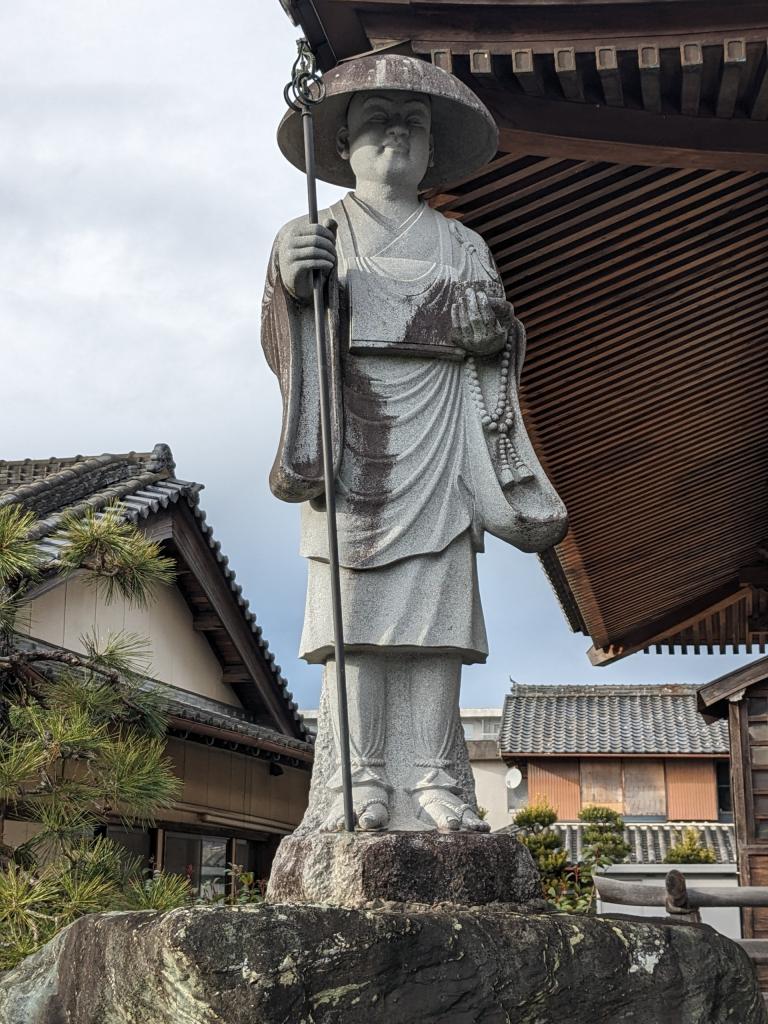
Shikoku or Compostelle ?
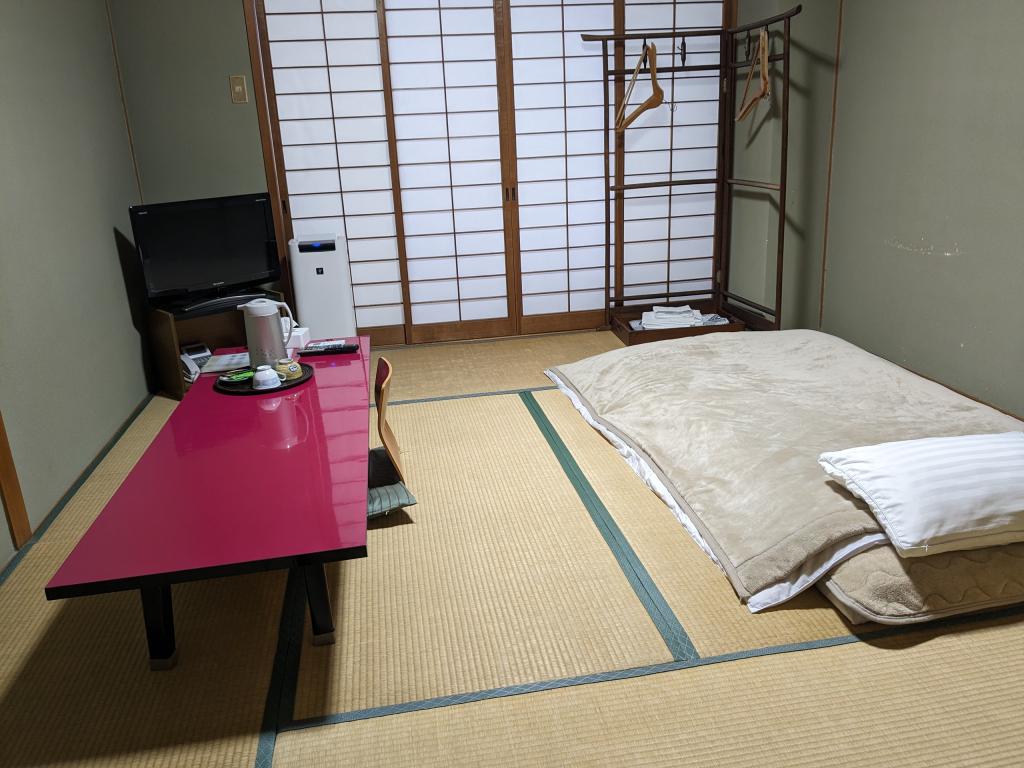
My room is comfortable, but the bed is a little low and the mattress is not very thick. The temperature was set at 26 degrees, a remote control allows you to adjust it to your liking or turn it off.
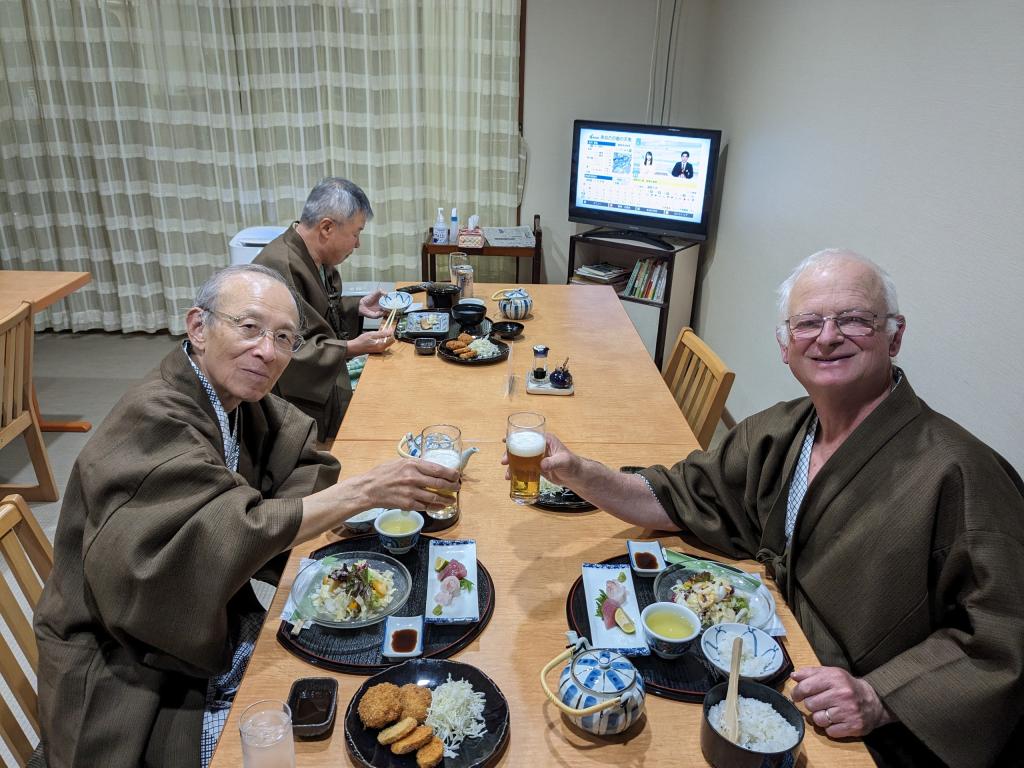
Dinner in evening dress.
Of the 7 pilgrims at our Henro House this morning, Yosu and I are the only ones on foot. The others left in the car of Tik our host.
Judy and Chuck are taking a 5-day break in the Guest House near temple 23, reputed to be the prettiest around Shikoku, hoping that Judy's knee will get better. We should see them again on Friday.
Frédéric and Jean-Luc are exhausted and short-cut the first 20 km of the stage as well as Voila, a 20-year-old Japanese woman.
Yosu gave himself a limit of 20 km per day. But today's stage begins with a steep climb and extends over 25 km with 4 temples to visit. Ultimately the day went well. And we arrived at 5 p.m. with a few drops of rain at our cozy Henro House. Yasu was able to introduce me to Japanese bathing rituals and local tableware.
The bath begins with a shower seated on a small stool to wash well with a basin and hot water. Well washed and rinsed, you can enter the hot water bath to relax, possibly with several people. After bathing, laundry. A washing machine and dryer allow me to leave with clean, dry laundry.
Eating Japanese style means first trying to master chopsticks. The order of the dishes doesn't matter and you shouldn't be surprised if the soup comes at the end. Foods are to be dipped in sauces. I like sushi, these pieces of raw fish. The dishes are to be consumed by switching from one to the other according to your desires. In general, Japanese food is good and tonight it was very good.
This morning, I lightened up on my book presenting Japan. I could also get rid of some of my clothes and even my pajama pants since nightwear is systematically offered.
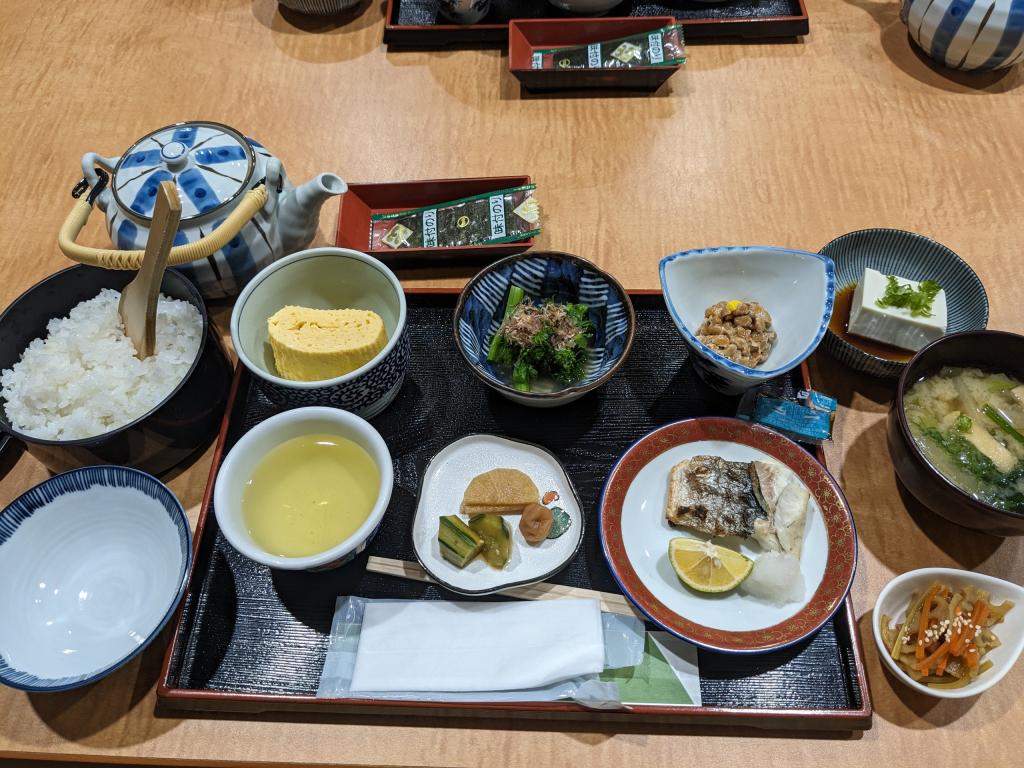
Our breakfast has a slight resemblance to our dinner, rice and soup included
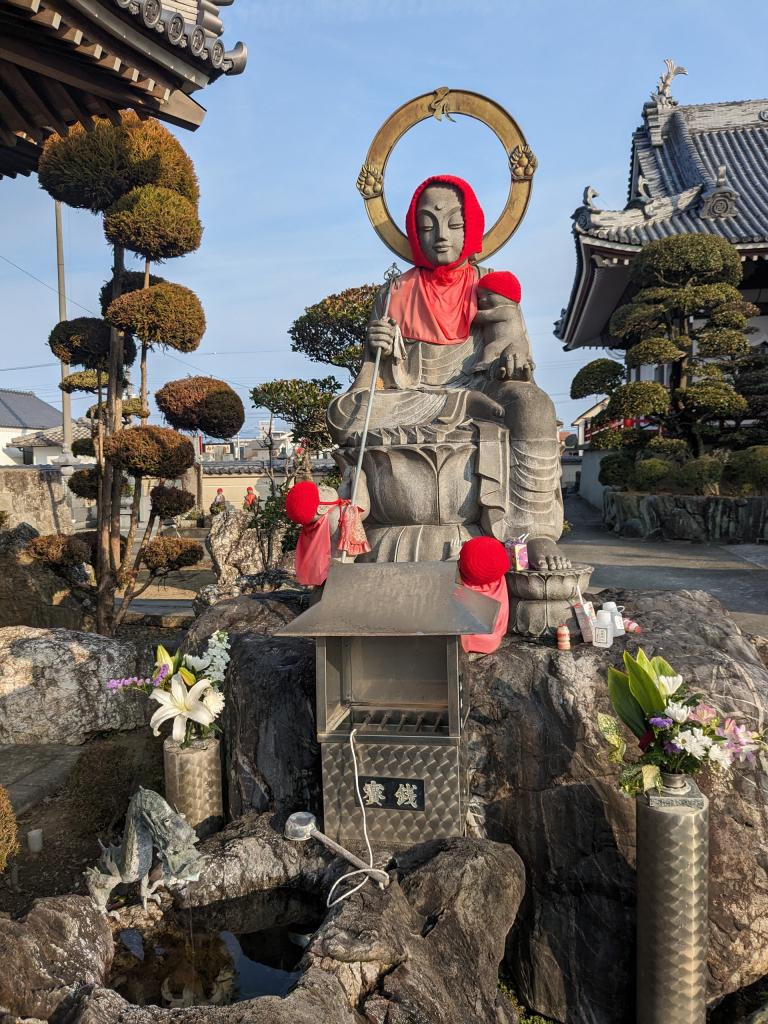
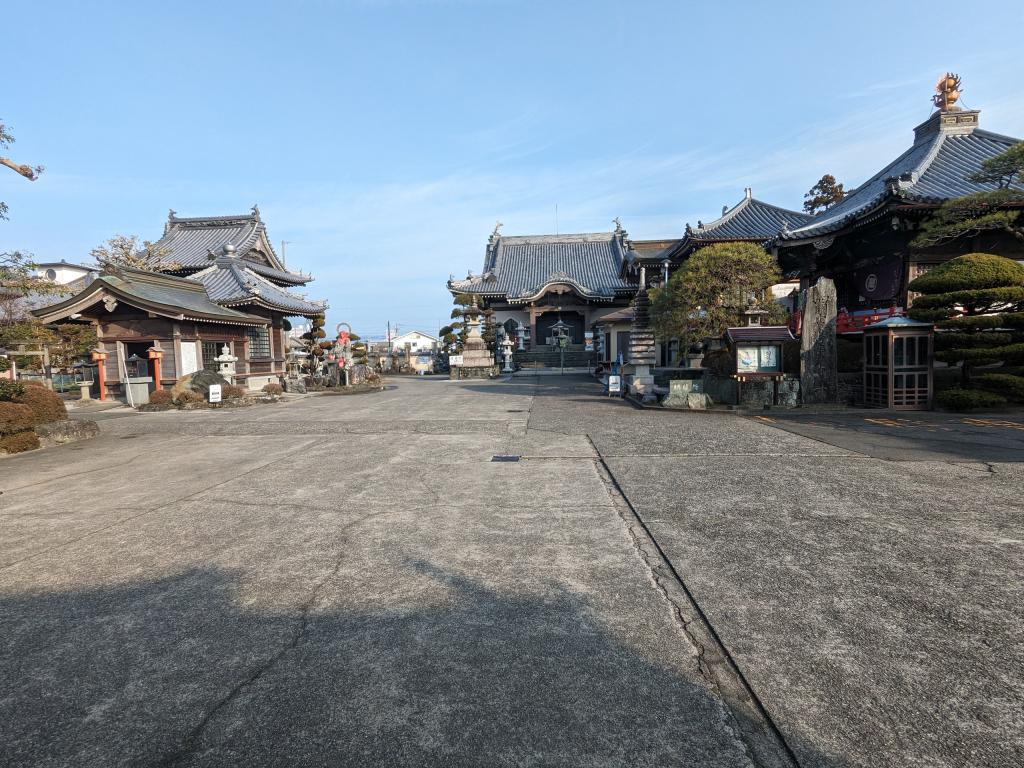
Temple 17

A lady of a certain age gives us money. You should not refuse, but give him a token of thanks in return.

Mir offers us orange juice
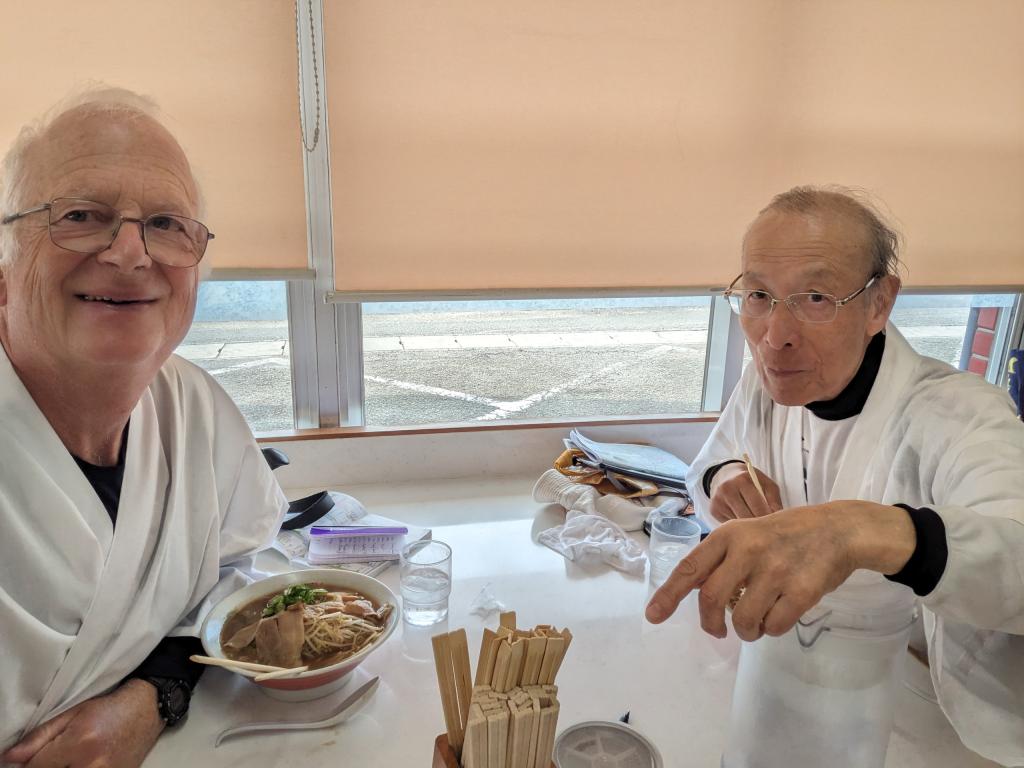
Chinese soup at noon. I try to catch the noodles with the chopsticks without splashing my toga too much.
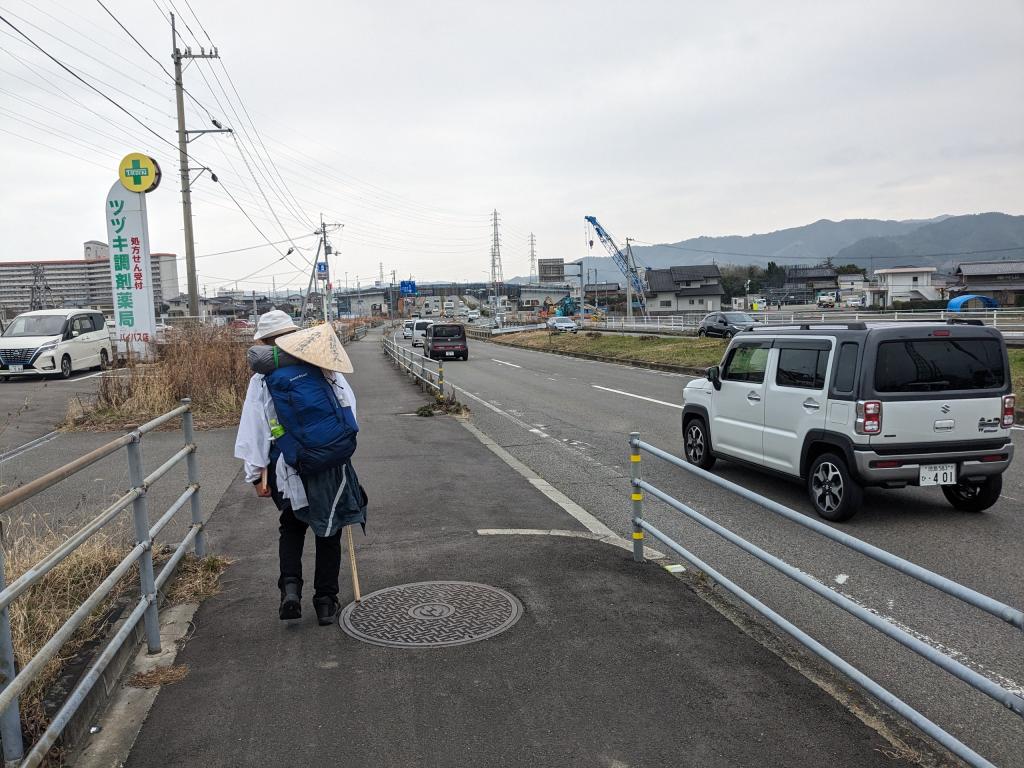
We walked along the road all day with continuous traffic, whereas until yesterday our surroundings were rather bucolic.
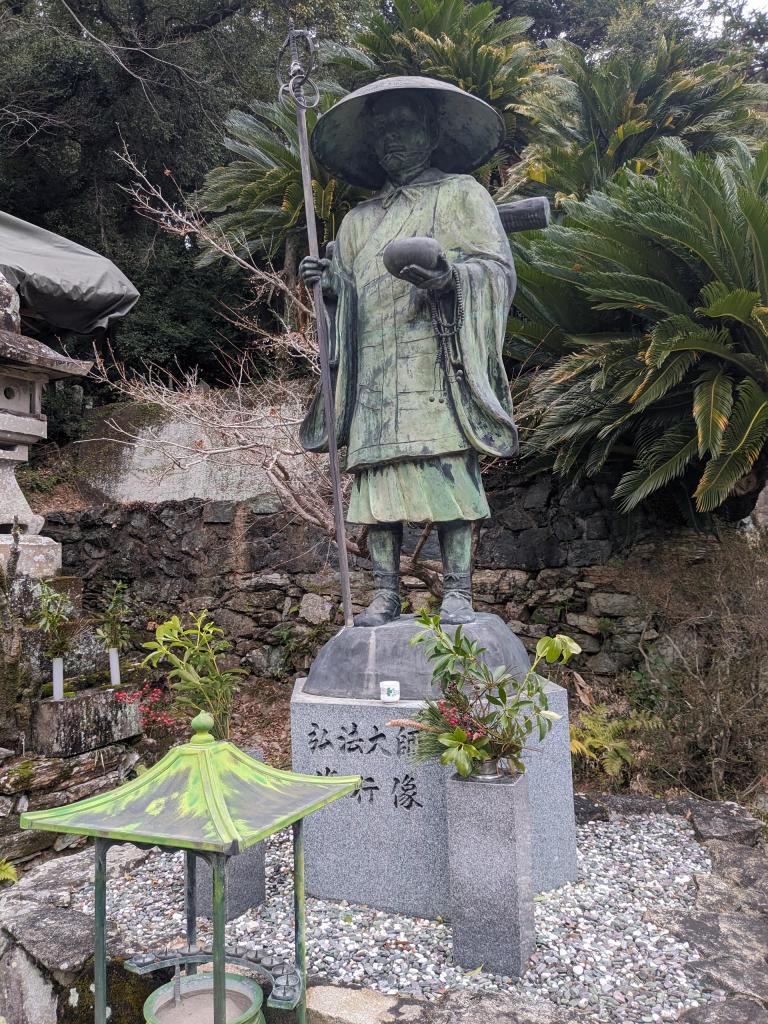
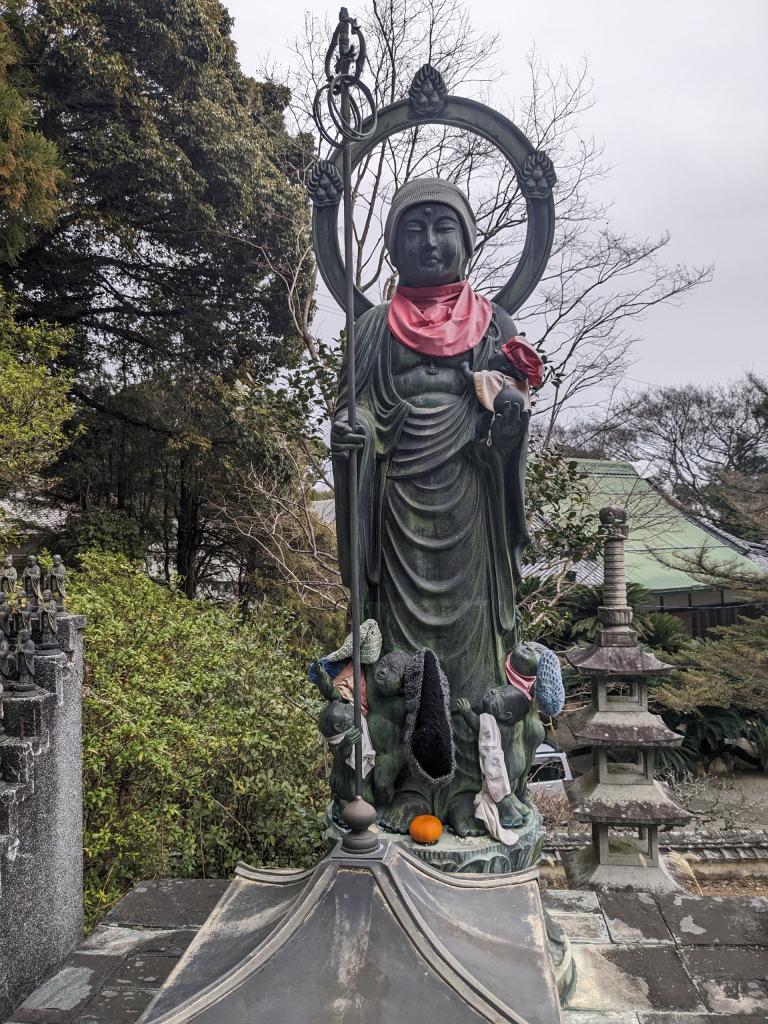
Temple 18
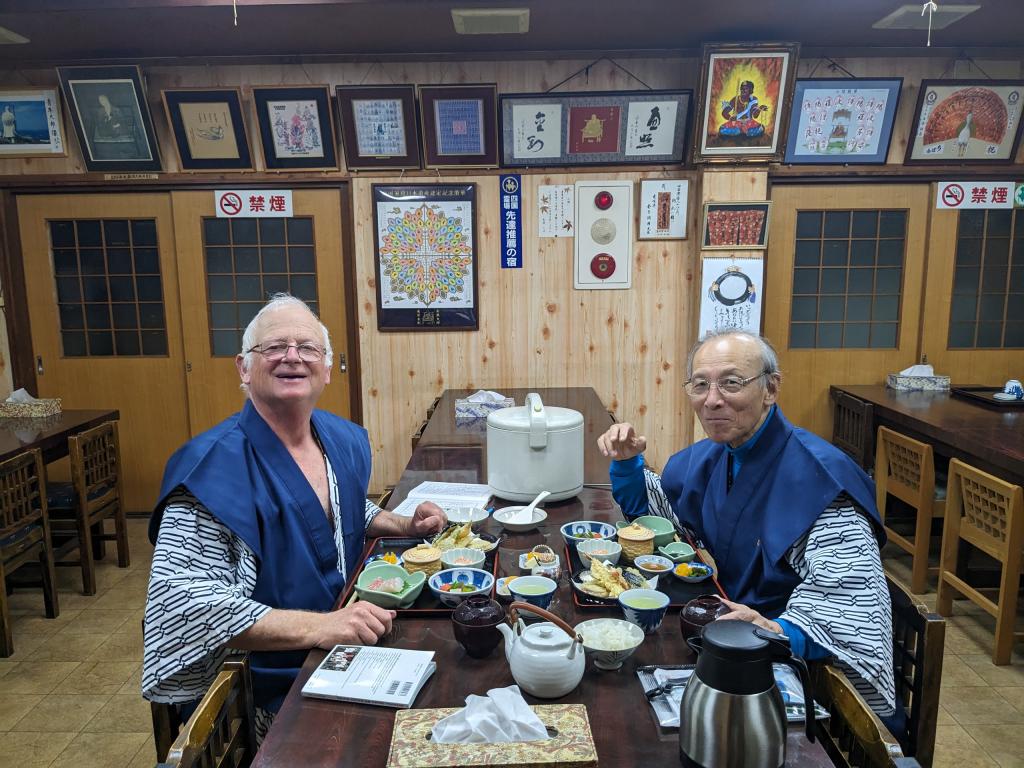
Henro house Urokorou near temple 18.
Day 6, I got into the rhythm of Henro's life. In my evening dress, I appreciate the small dishes offered by our host.
The day's walk started at 7:30 a.m. We quickly arrived at temple 17. Afterwards it was less fun since we had to follow busy roads. A few meetings with an old lady who gave us money, Mir who offered us fruit juice and Aka a coffee with a cake. After 22 kms, we were able to visit temple 18 just before it closed.
Tomorrow, rain is forecast as for today. As it didn't fall today, I hope to get through the drops tomorrow, otherwise I'll have to make do.
My objective for tomorrow is temple 20 which is at the top of a mountain that I will have to climb in the afternoon. I'm going to leave Yasu in a public bath at the foot of the climb.
The Japanese people we meet are friendly and dedicated, always ready to help us with a smile. I've been in a band since I left. Tomorrow afternoon, I will have to test my ability to face the pilgrim's problems alone when most Japanese do not speak English and I only know 4 words like aligato for thank you, konnichiva for hello, konbanwa for hello in the afternoon and Sayonara for goodbye. And for the moment, I don't understand any of the 1200 signs of the Japanese alphabet!
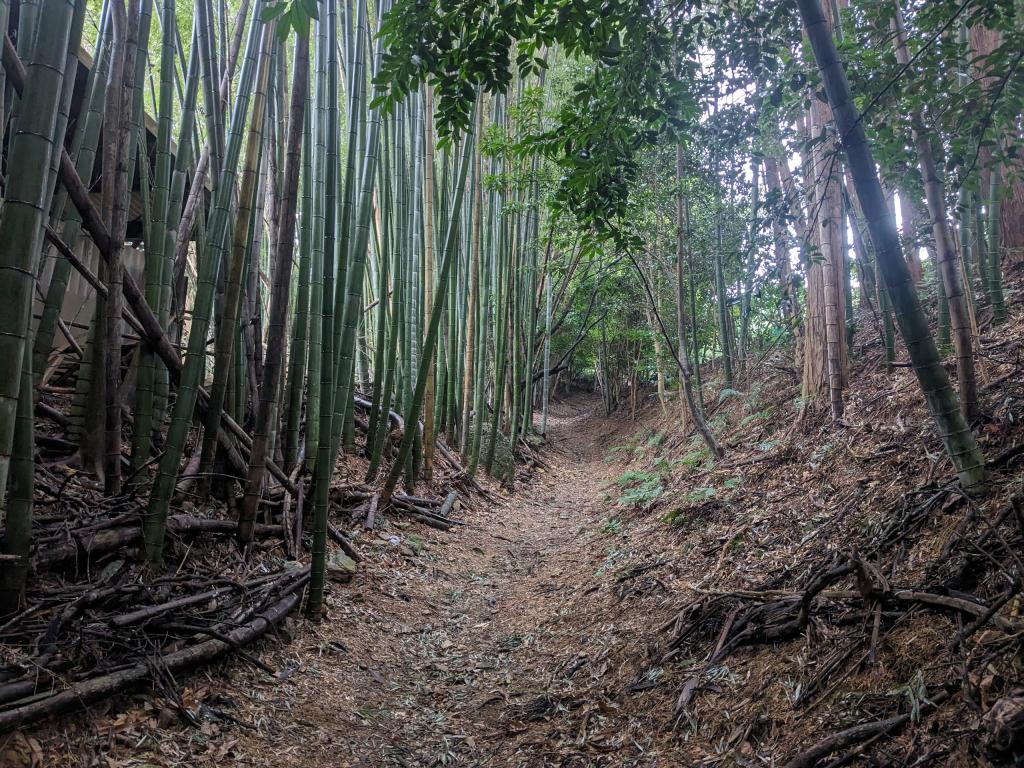
The bamboo forest

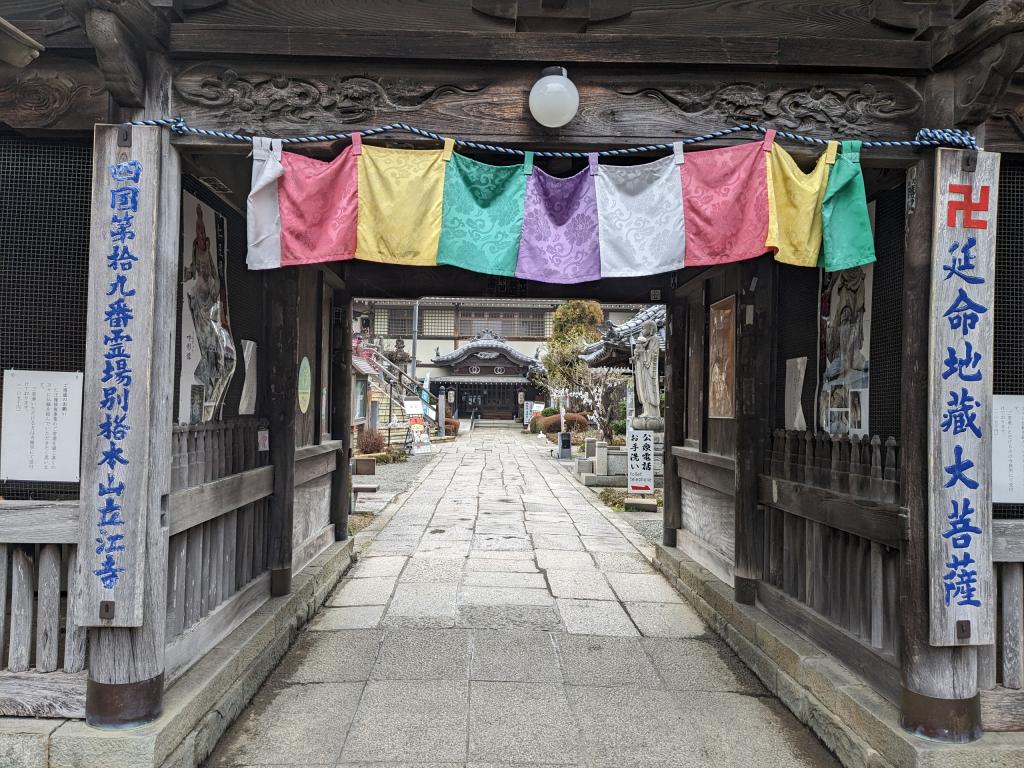
Temple 19
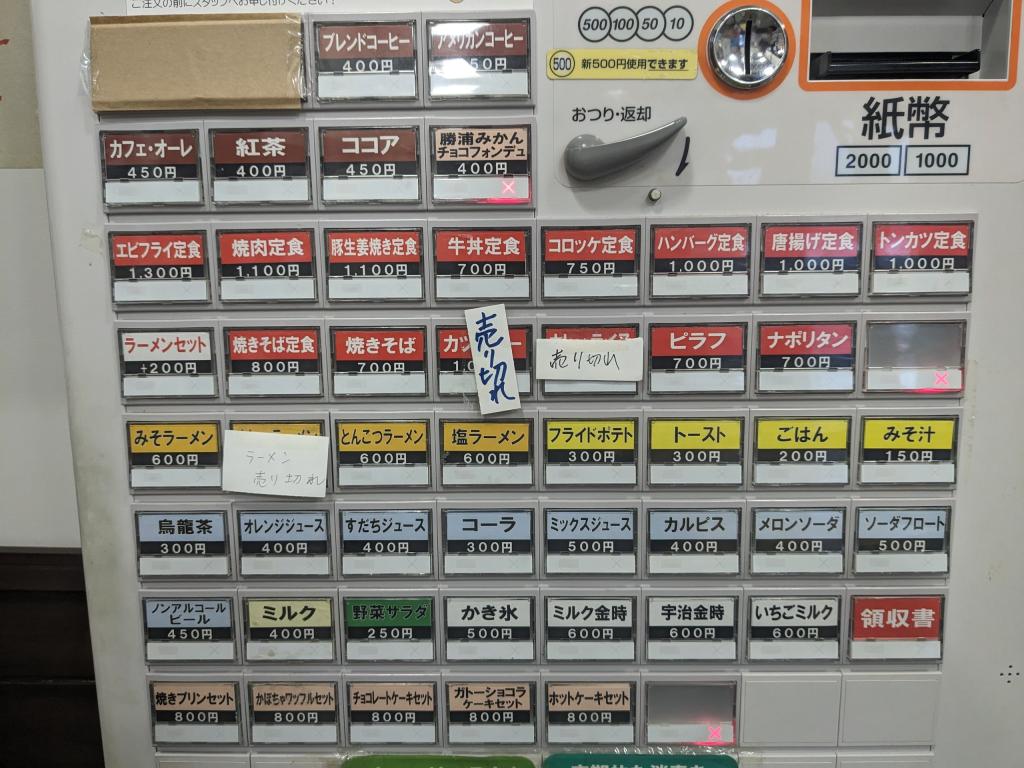
Which menu to choose?
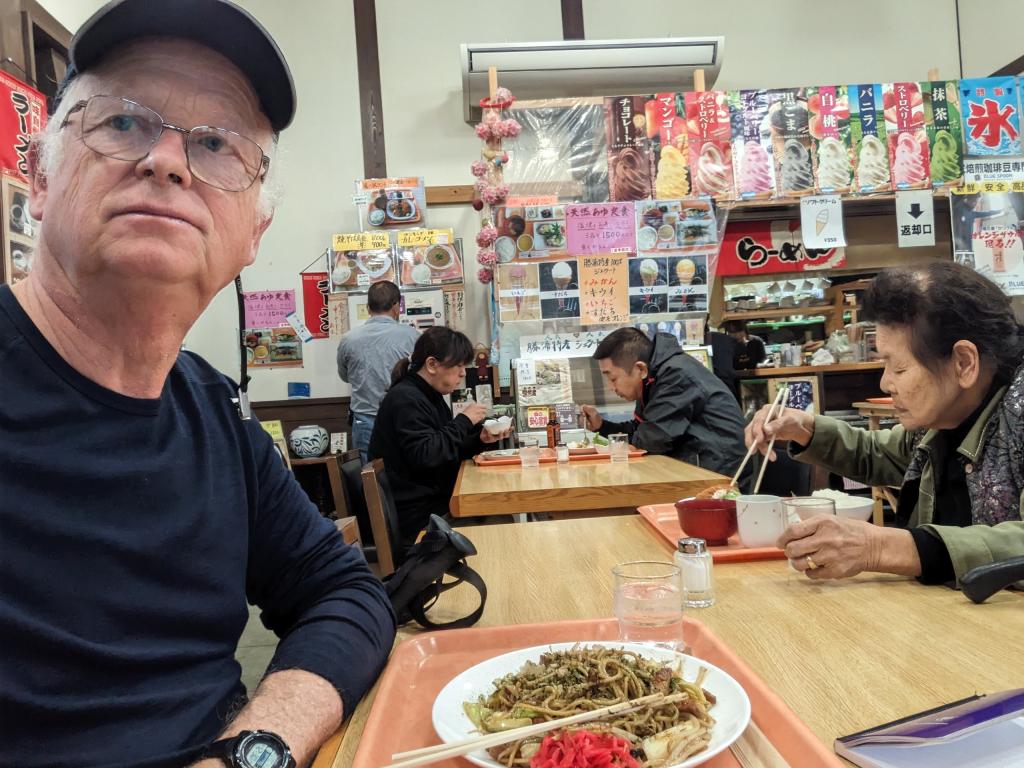
Despite our good intentions, discussions with my neighbor at the table were unsuccessful.
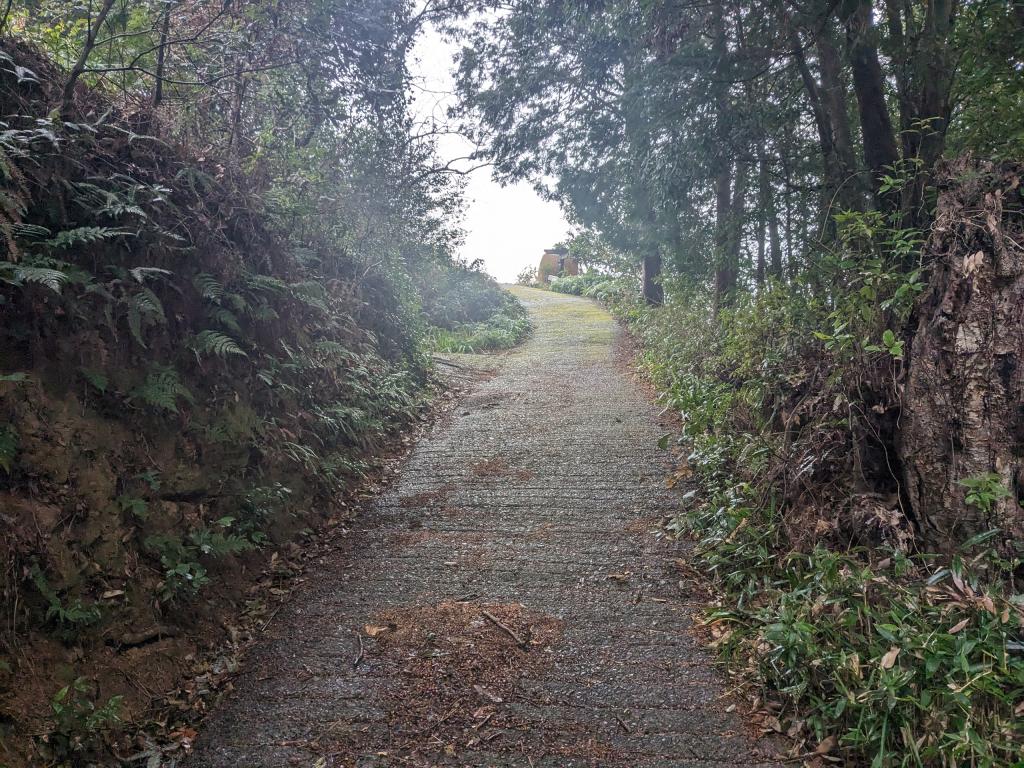
The climb to temple 20. An hour and a half climb to climb 500 meters
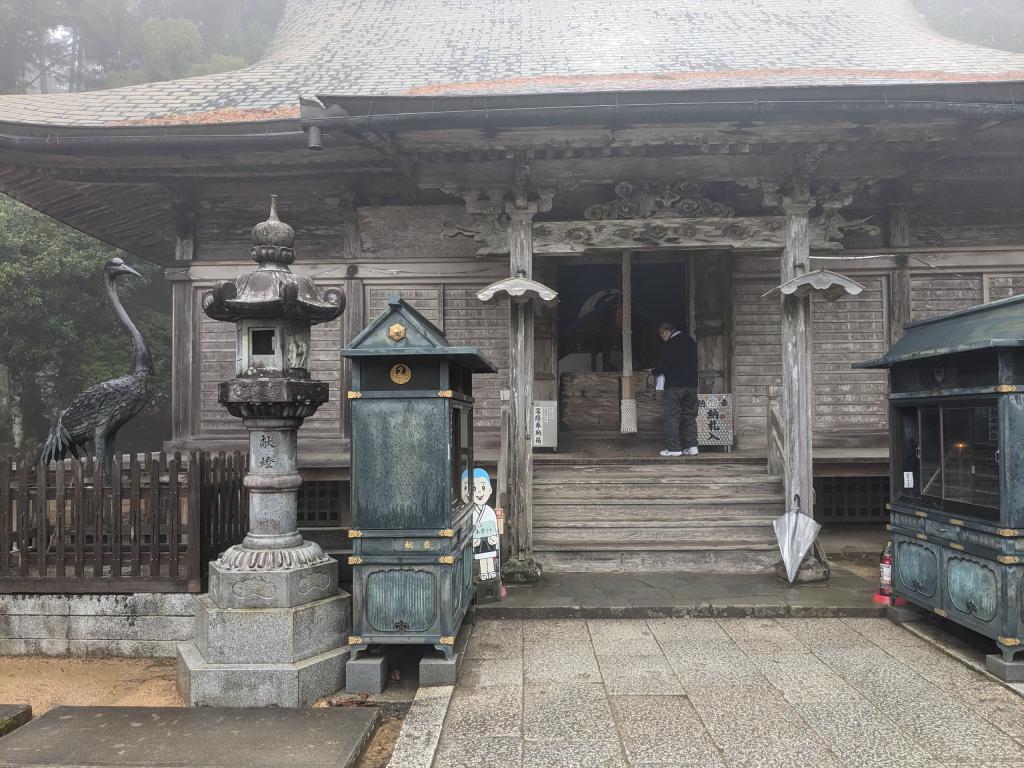
Temple 20

My cozy room
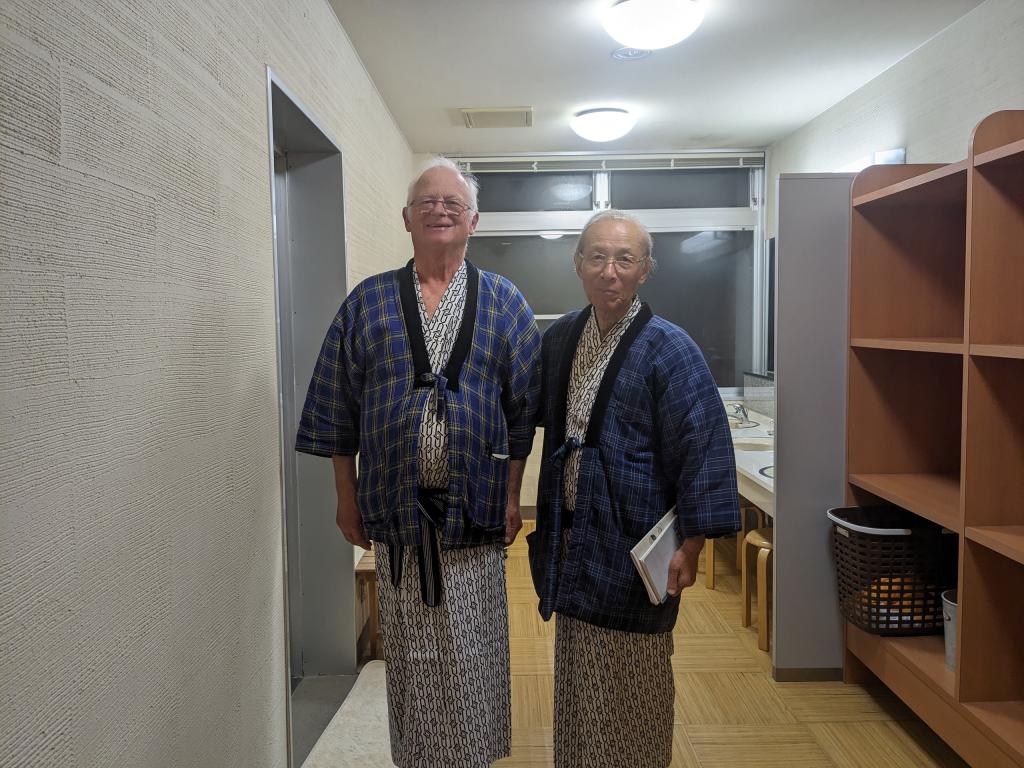
The kimono after bathing is worn all evening
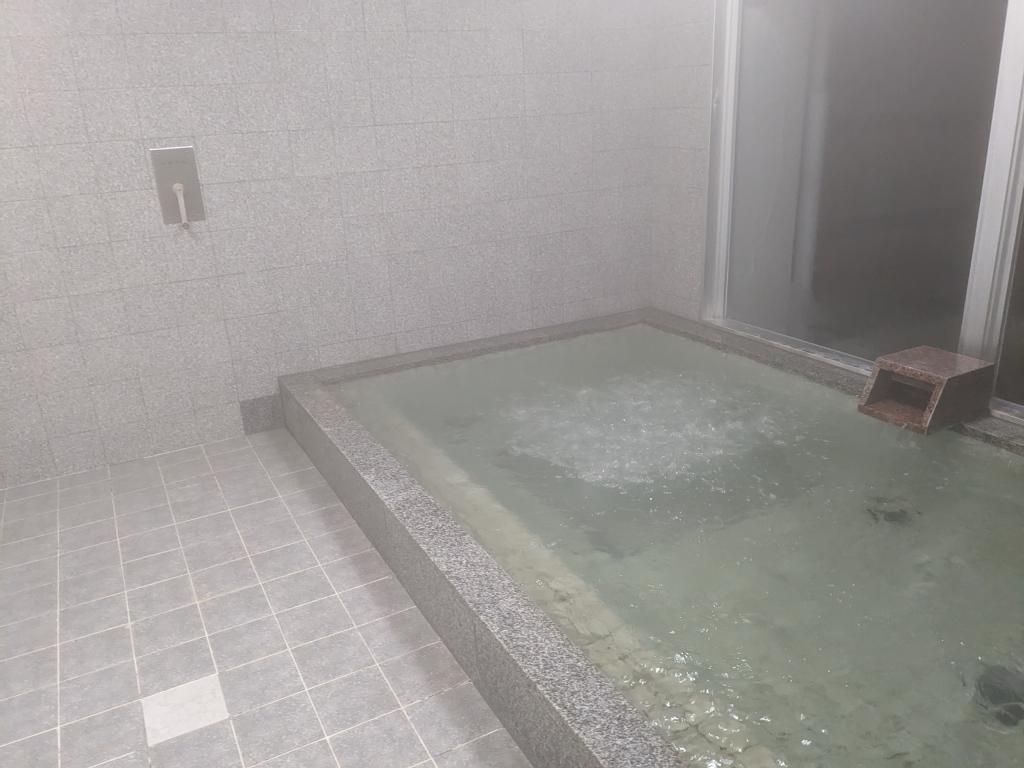
The relaxation bath where we chat relaxed
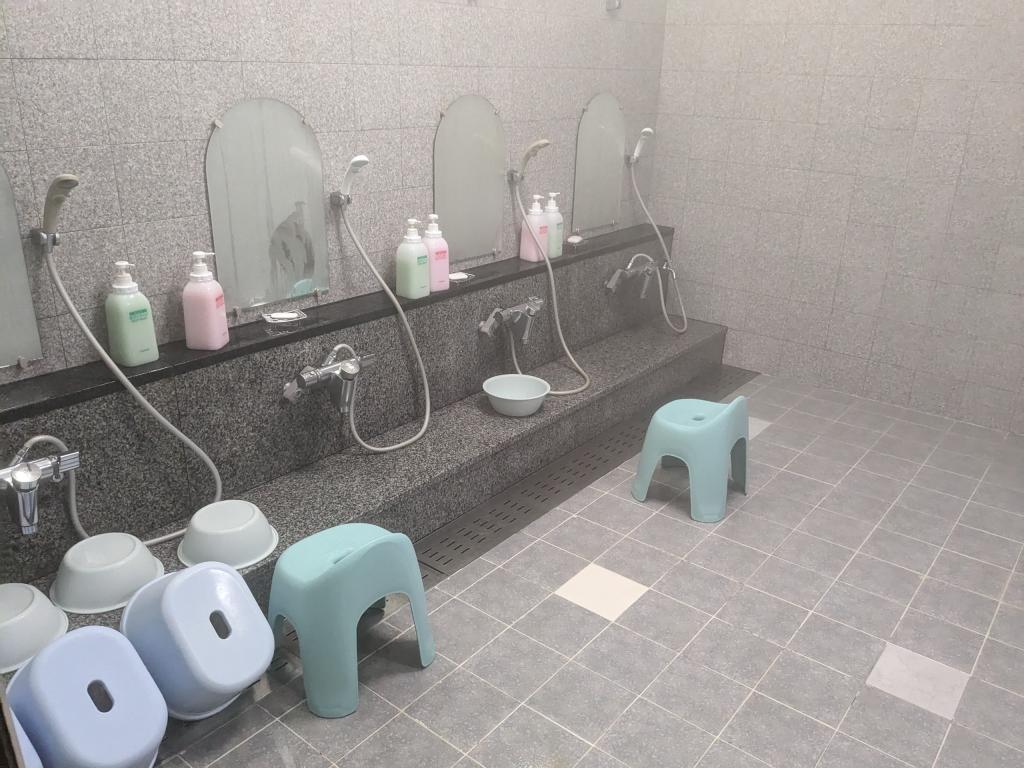
The bathroom where several people shower. Soap and shampoo available.
Day 7: I left early, but Yosu caught up with me at temple 19. After a coffee that was offered to us, I left alone with the goal of reaching the top of temple 20.
At noon, I found the Henro restaurant at the foot of the mountain. It took me a while to understand that I first had to choose and pay for the menu at a machine. I understood the prices, but not at all the contents of the plates offered written with Japanese signs. With the help of a customer who spoke a little English, I had the same pasta dish as my neighbor.
My neighbor of a certain age would have liked to talk to me. My konnichiva must have been encouraging. But it’s impossible to understand each other any further. I showed him France on Google Maps. She gave some unconvincing nods.
The climb was completed in 1h30 with a little sweat, but I was not exhausted. The stamp attendant at my credential was worried about my night ahead. Despite the translation tools on his phone, it took me a while to make him understand that I had the situation under control and didn't need help.
As there is no accommodation near the isolated temple, I am forced to go back down the mountain the way I came. For this night, the only solution is the small Fureai-no-sato hotel 20 km away. A car comes to pick us up. The establishment is nice with comfort that allows me to dry all my wet clothes.
Tomorrow, go back to temple 20 by car, then direction temple 21, then 22 in mountainous terrain with rain.
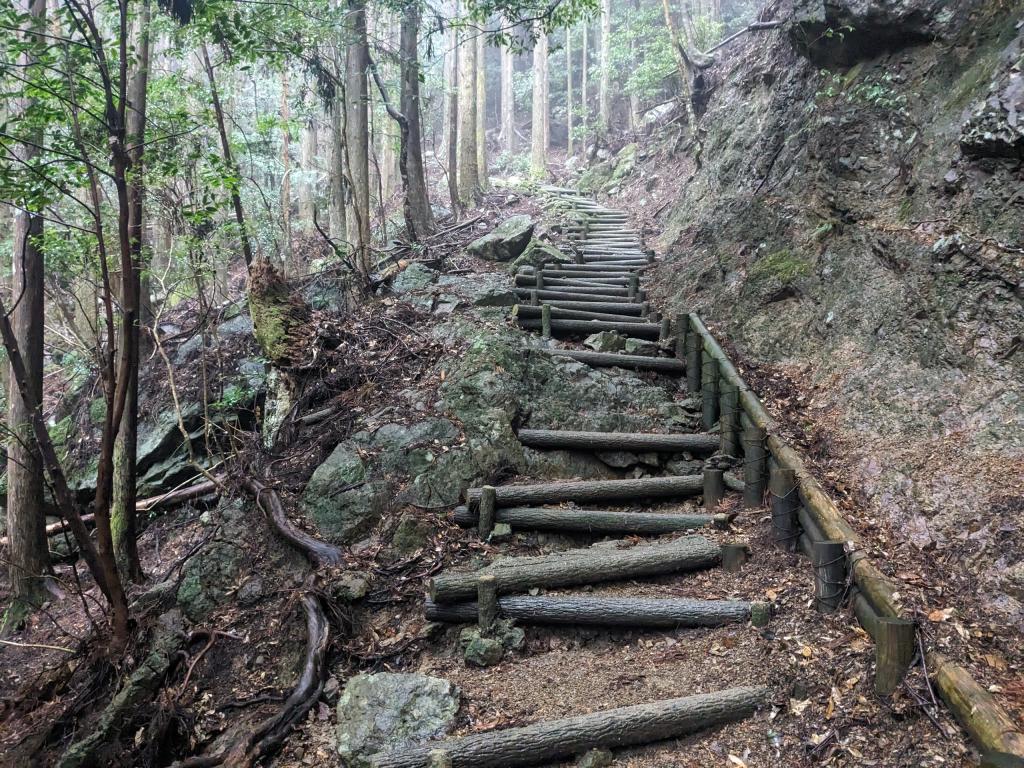
Trail to Temple 21
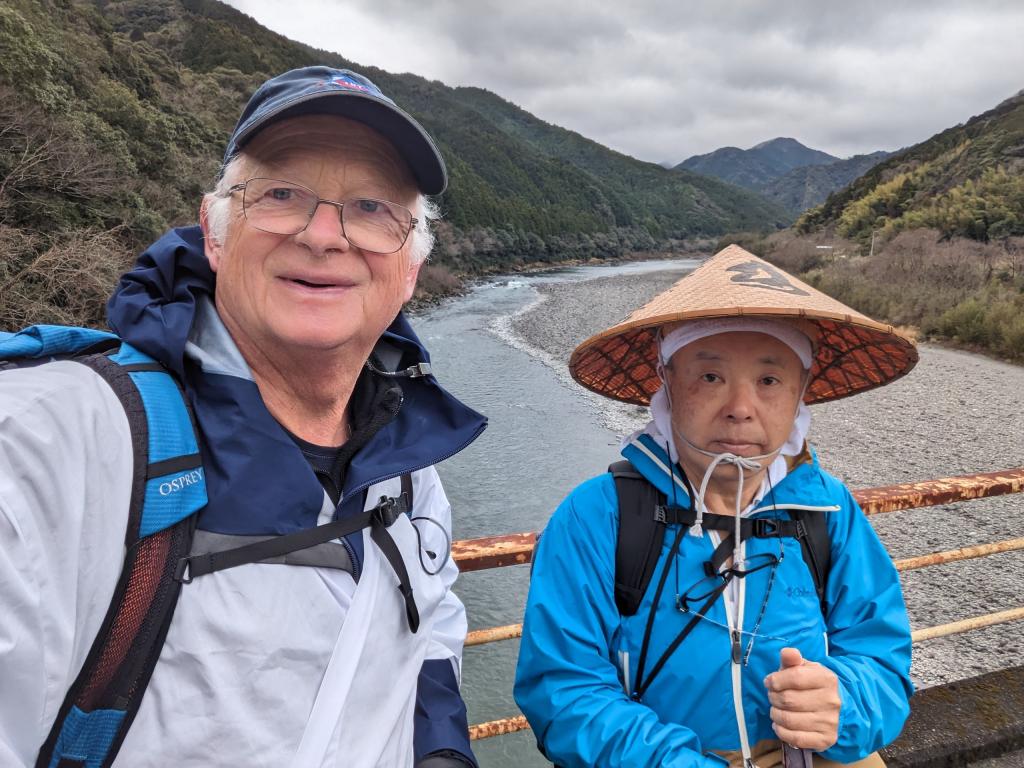
With Yamasen

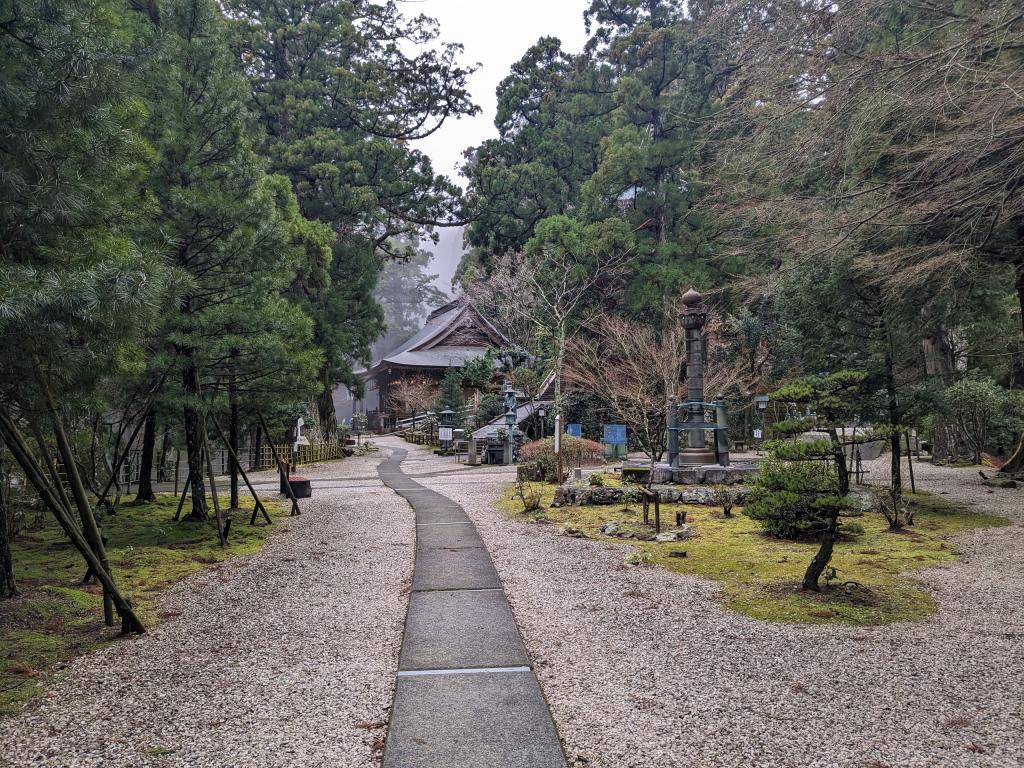
Temple 21. The temple grounds are huge with many small temples. Unfortunately, like elsewhere, you cannot enter the temples. Only in the stamps office can we recover some heat.

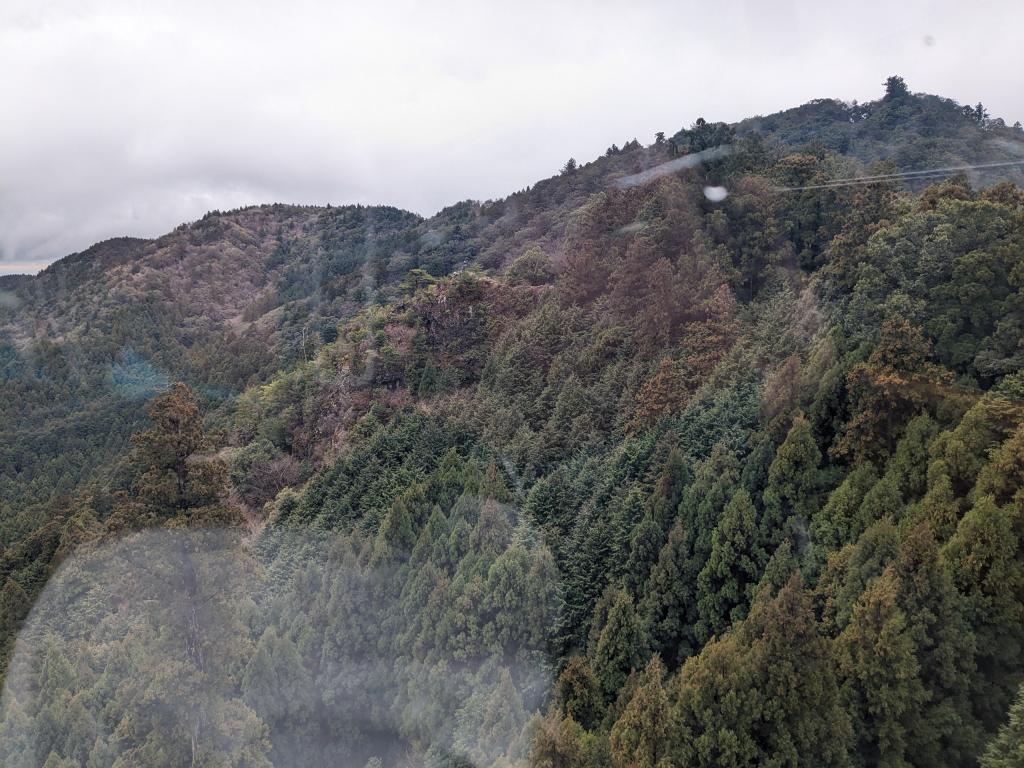
View from the rope way. By zooming in, we can see a Buddha perched on a rock
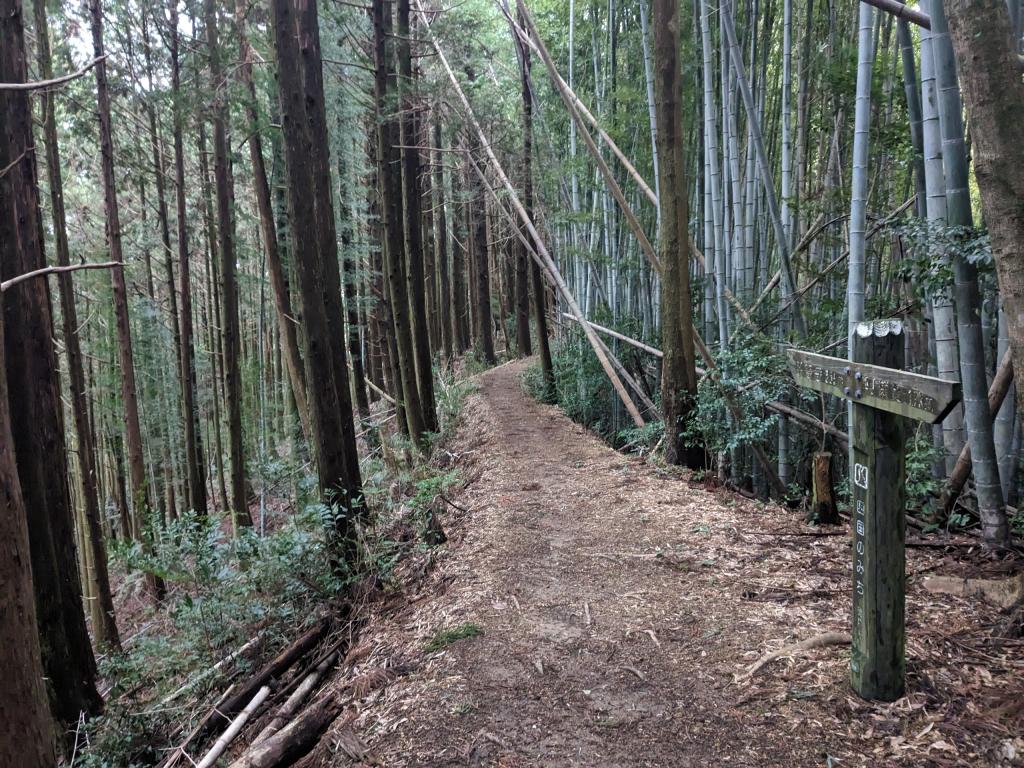
One of the paths that runs along the ridge between bamboos and pines
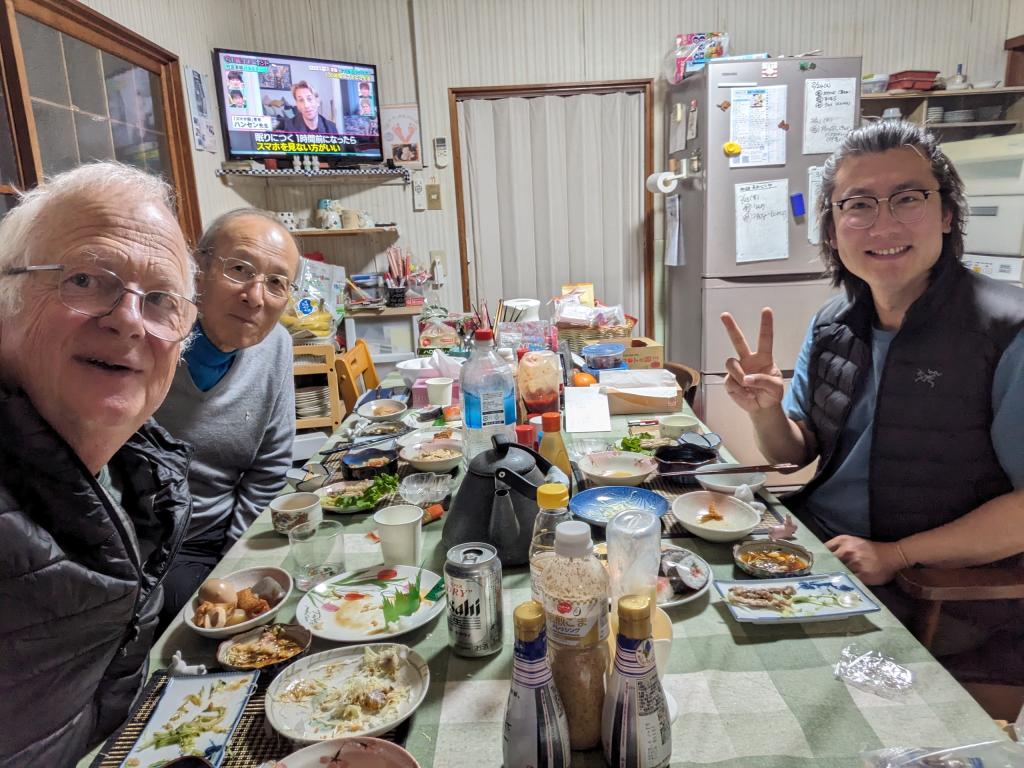
With Tian Shu who comes from Chengdu in China
Day 8: a car takes me to my last walking point, temple 20, perched on the top of a mountain. The descent on foot to the other side is tedious and slippery.
In the valley, I find Yamasen, another Henro, whom I saw several times and at the same table last night. He speaks a few words of English. We follow each other in the laborious climb towards temple 21.
It's noon, it's cold and damp. All directional signs speak Japanese. I no longer have an internet network, Google Maps no longer works. I resolve to blindly follow Yamasen who heads towards a building where we are immediately offered tea. We sit down on benches to have lunch with rice balls offered by our hotel.
Yamasen asks me if I bought a ticket. Without really knowing why, I bought a ticket. This is how I find myself in a rope way without having wanted it and which takes me to an unknown destination. It first climbs to another peak with views of a large Buddha, animal statues. Then the cable car plunges into a valley. With internet regained, I realize that this rope way saves me the descent of the mountain, but bad luck not on the good side.
The rest is not so funny. The afternoon is already well underway and we are a long way from temple 22. We come across a bus stop by chance, a bus will pass in an hour. As we come forward, we are offered a cake. Finally, it is already 4 p.m. when the bus stops me near a mountainous path which takes me in an hour and a half to my Panda house accommodation where I meet Yasu who has also come with public transport. The house is modest and cluttered which allows me to see a more common interior which, like everywhere, offers a bathroom with a shower for washing and a bathtub for relaxing in the same water in turn. The water is too hot to be enjoyable. I sleep in a real bed, but I miss the kimono.
We share the table with Tian Shu who planned to do the Camino de Santiago after seeing the film The Way.
Tomorrow, at temple 23, we will reenact the Fabulous Four with Judy and Chuck!
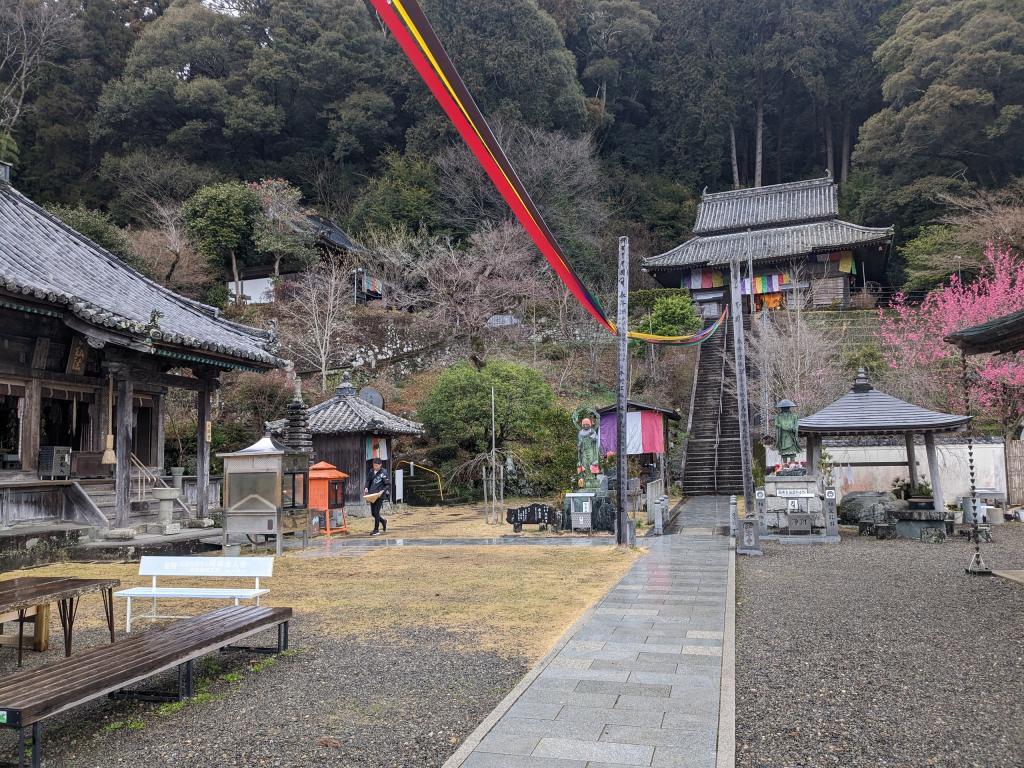
Temple 22
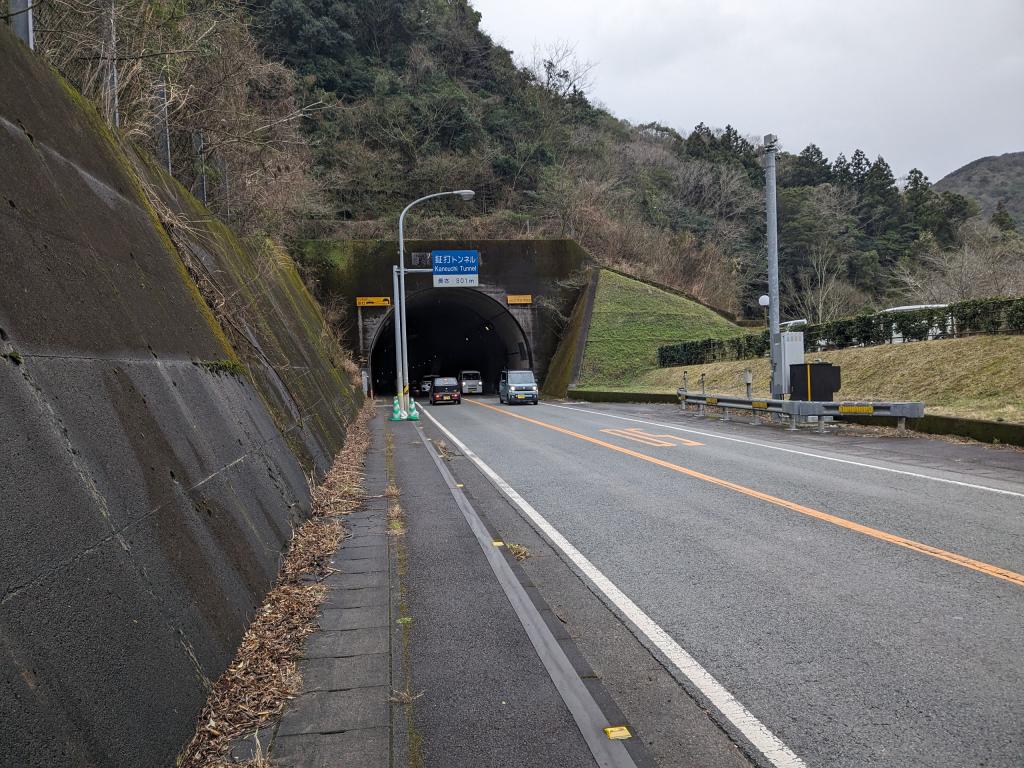
The path also goes through this tunnel
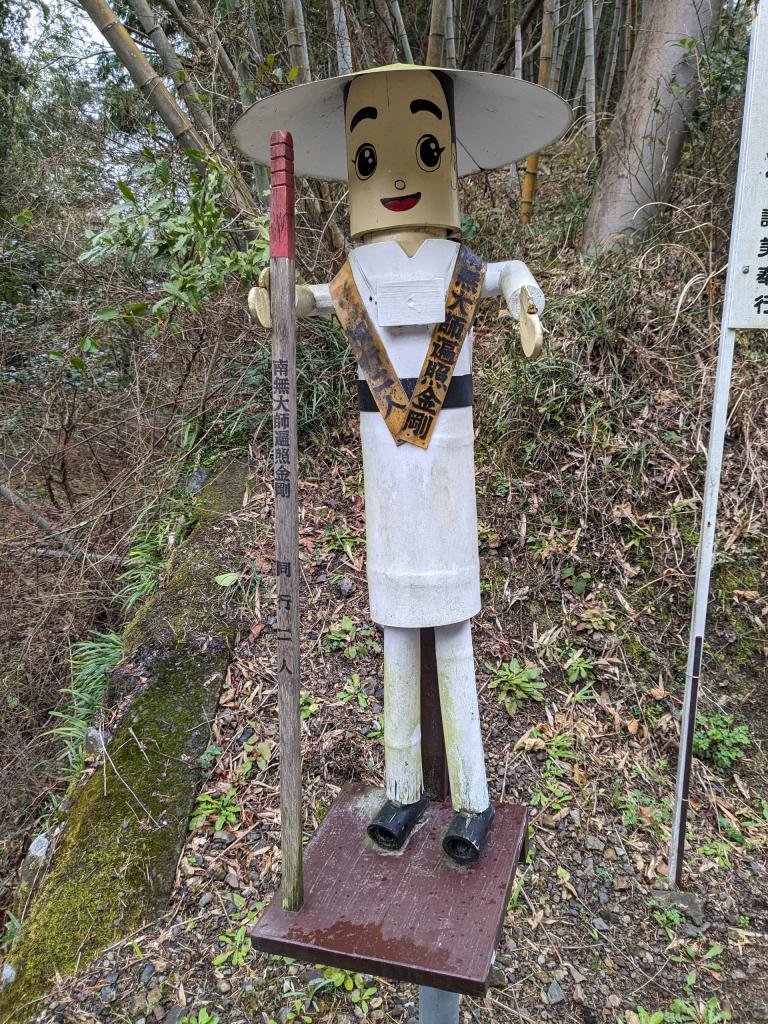
A traveling companion
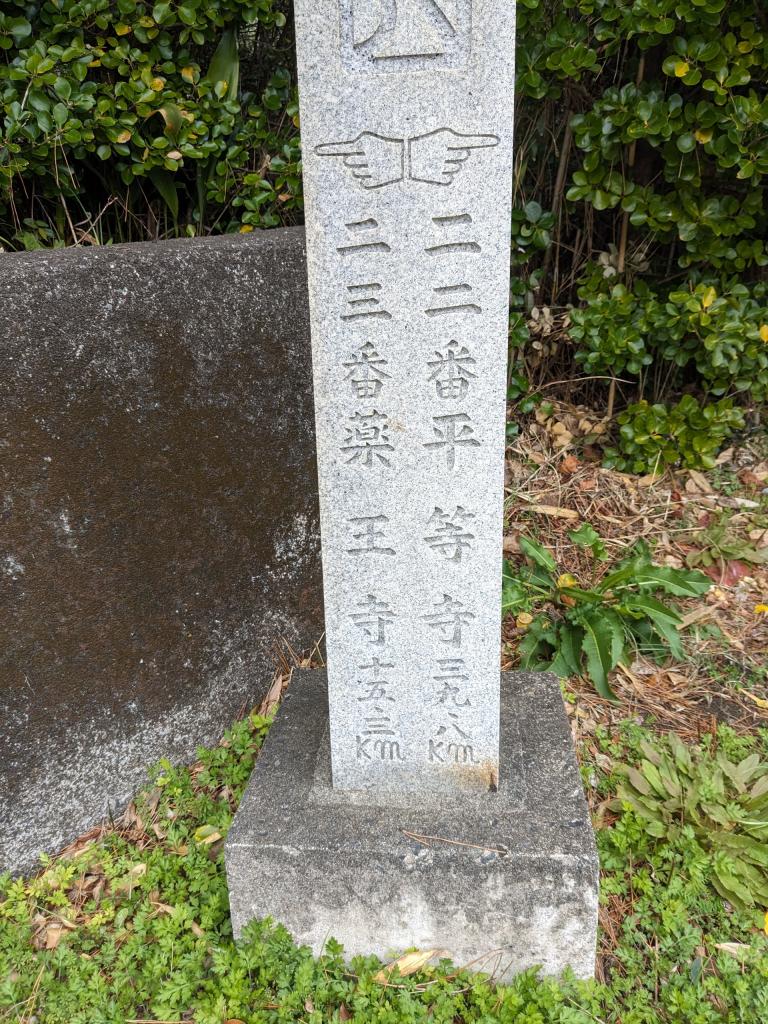
To the left or to the right ?

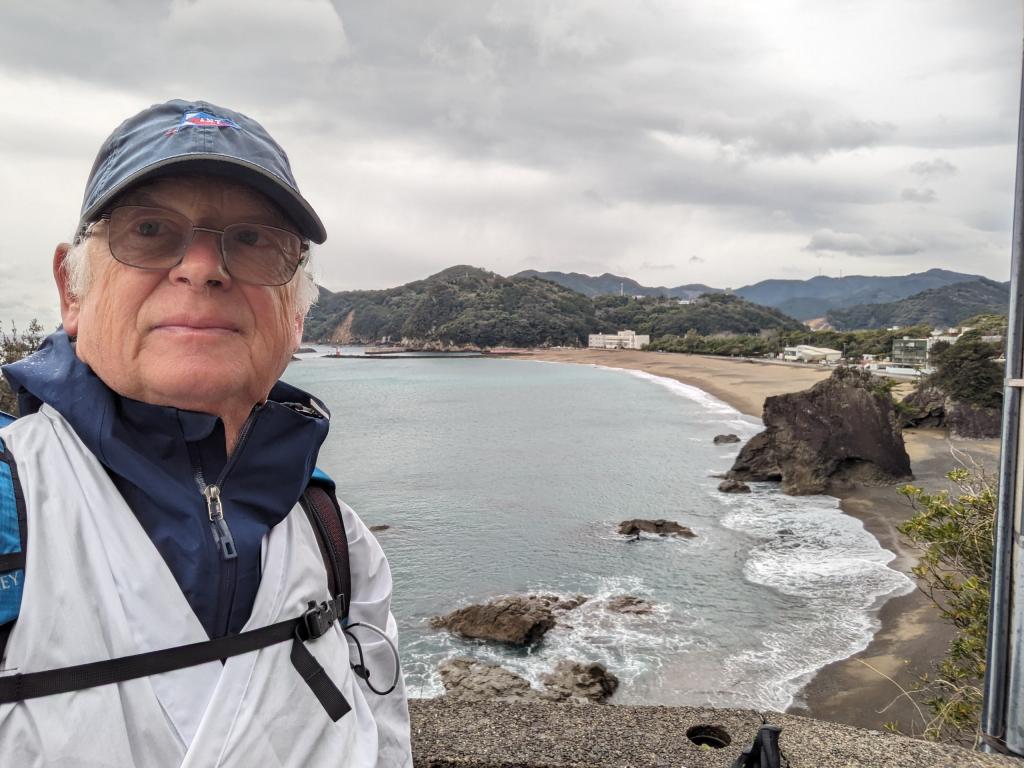
I find the Pacific again
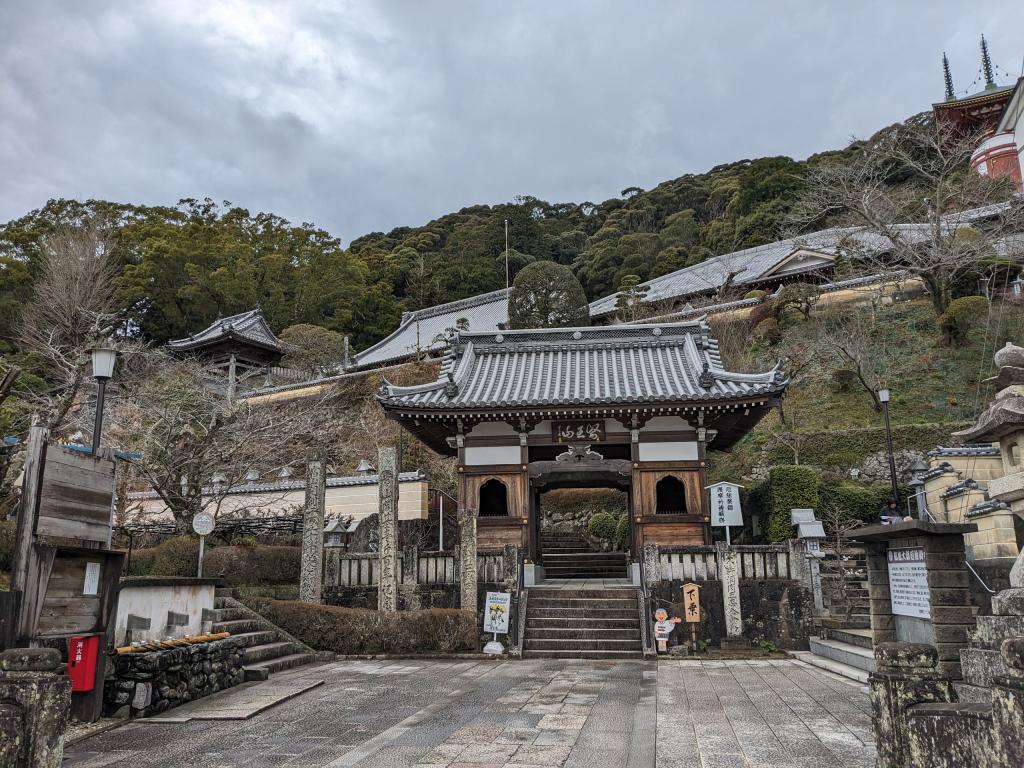
Temple 23

With Yu, our hostess who speaks perfect French
Day 9
Yosu, my traveling companion, decided to return home due to medical problems during the night. I have lost a pleasant and courageous companion. He has conjuring skills that amazed us. He cycled around Japan in 6 months, two years ago. At 80, his abilities have become limited.
At temple 21, I had the chance to sit and attend a ceremony in the temple which was open for the occasion. A monk recites sutras punctuated by the sound of cymbals.
Then head south to the Pacific. I walk about 25 km in the damp cold. I'm sure I'll find something to eat along the way, but nothing, not even an orange. In my bag, I found a small piece of Japanese cheese called Camembert and some biscuits. Arriving in Minami, I start by buying oranges and cakes.
I visit temple 23, the last of the first part. I then find Judy and Chuck to start a new life together in the old house apartment of Philippe and Yu who speak French.
We are staying in a traditional and charming old house over a hundred years old for the three of us. The rooms follow each other with differences in height of one step and are separated by sliding partitions. In the middle of the corridor, the old hearth with a 3-stone fire can fall if you're not careful. The lack of insulation makes us feel cold drafts.
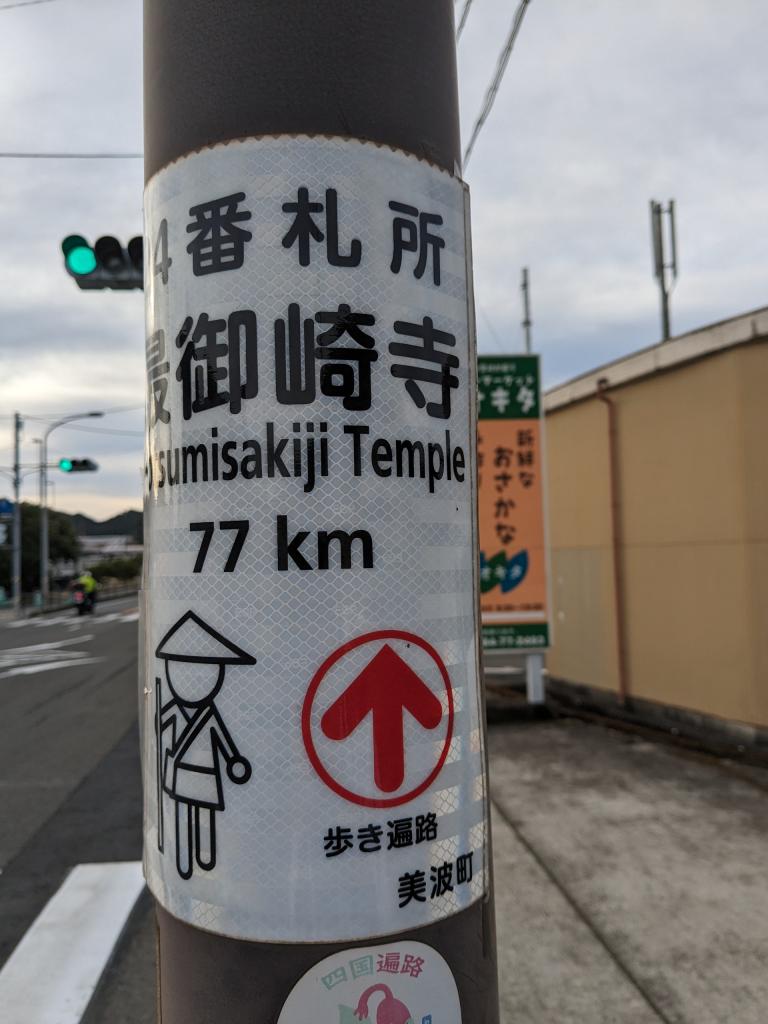
It will take us several days to reach the next temple.
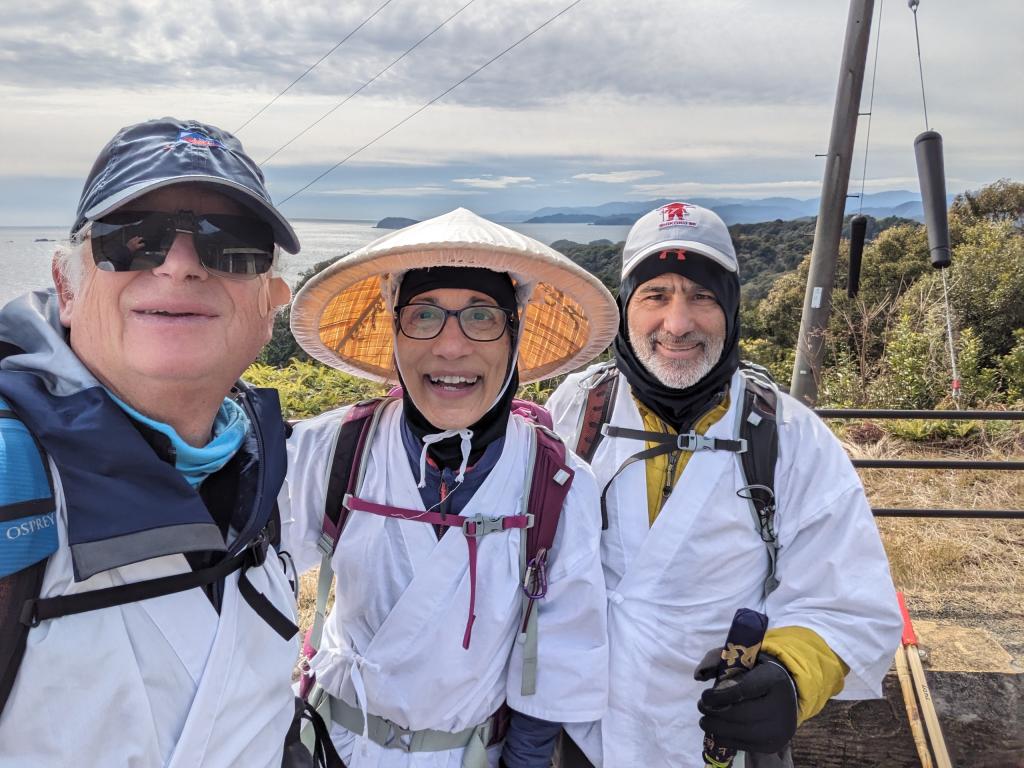
A walk along the Pacific on a longer, but prettier and more pleasant coastal variant
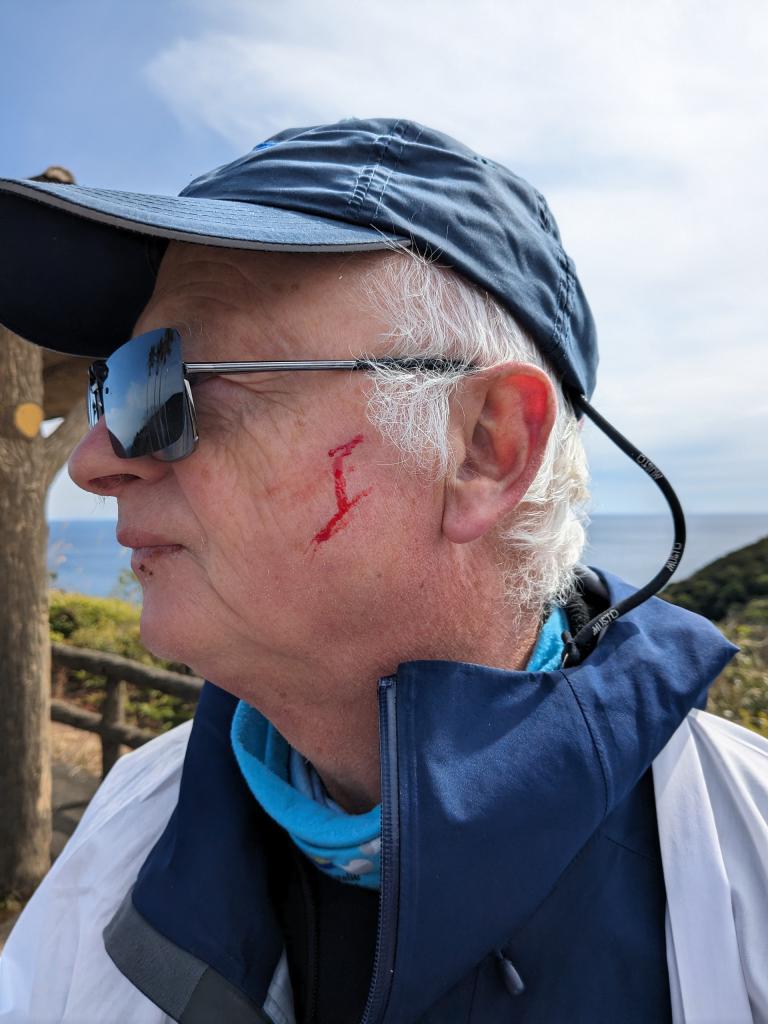
An eagle hit my head, leaving a small scar between my left eye and ear.
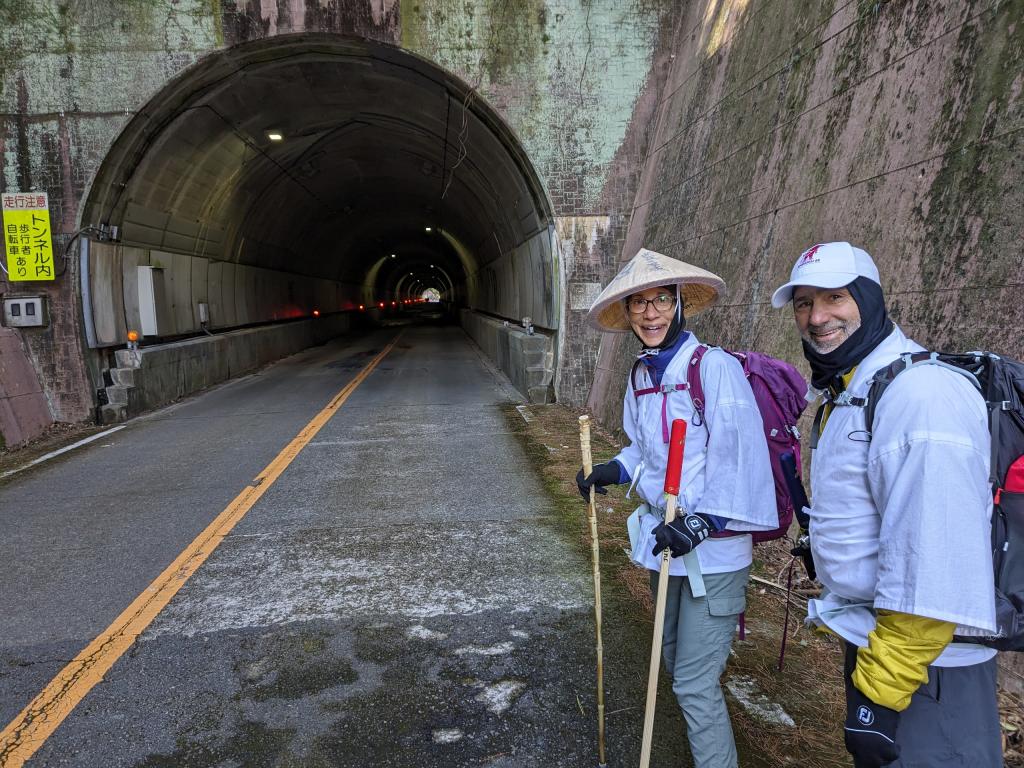
Passage of numerous tunnels at the end of the route today
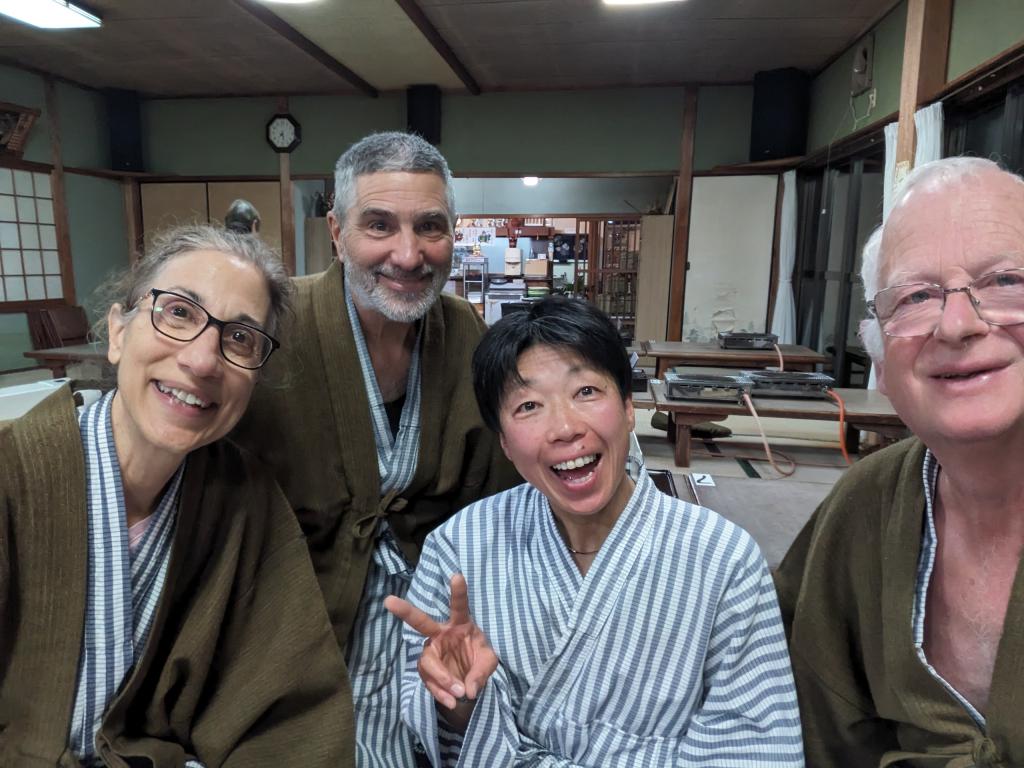
With Yoko who has just done 47 km during the day from temple 22
Day 10: attacked by an eagle
We're sitting having lunch overlooking the ocean when I get hit on the left side of my head. I'm a little stunned wondering what could possibly be going on. Turning to Chuck, he shows me the bird of prey moving away and exclaims at the blood running down my cheek.
The eagle resumes its flight and hovers above us. Was he knocked off balance by a gust of wind or was he interested in my sandwich, my cap, my glasses or was he in a bad mood because we were on his territory...?
I clean the wound in the nearby toilets and Judy sticks a plaster on me and we are off again for a beautiful day of 24 km.
New gifts were given to us: a bottle of tea, bananas, fluorescent strips. Finally, a car stops on the other side of the road, the driver gets out and brings us chocolate. Why so much thoughtfulness and kindness?
At dinner this evening at the Kaizan-So Hotel, Judy tells me about her desire to return home. After this walk today, her knee pain started again and she thinks that it is no longer possible for her to return to Shikoku this year. I lost my two good traveling companions.
I'm going to rethink the plan for my next steps. Ahead of me are around sixty kms to temple 24 along the coast of course, but also along the road that we followed at the end of the journey today. The temptation is great to take the little coastal train.
The Kaizan-So hotel enjoys a privileged position on a rock overlooking the sea. But its comfort dates from another era, there has been no updating work. The comfort of the bedding is minimal, no mattress, the bathroom does not have a thermostatic faucet like everywhere else, the toilets are Turkish style...
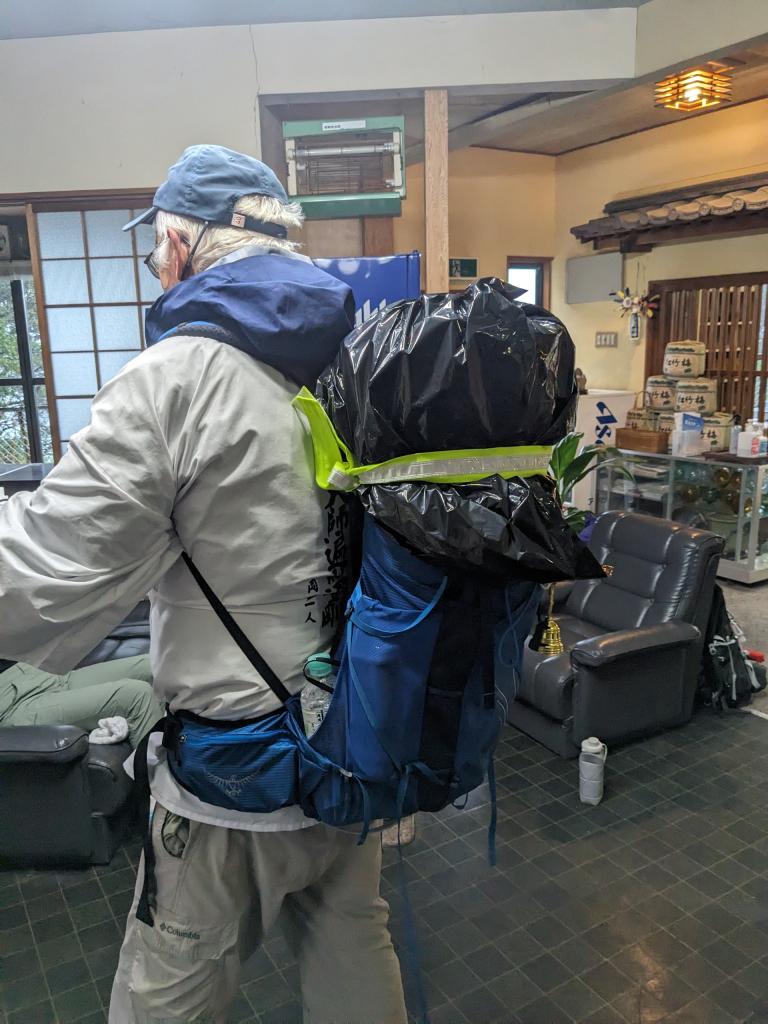
My backpack prepared to face the rain.

Last photo with Judy and Chuck whom I met at Temple 1
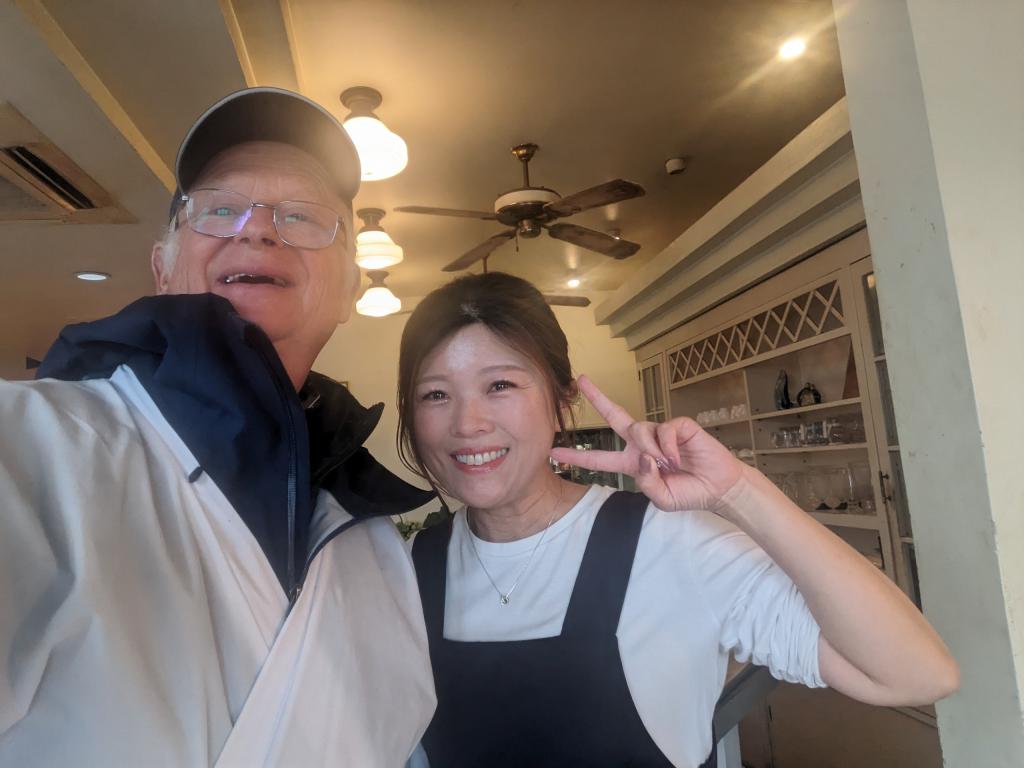
With Ytoko who served me my coffee with a beautiful smile
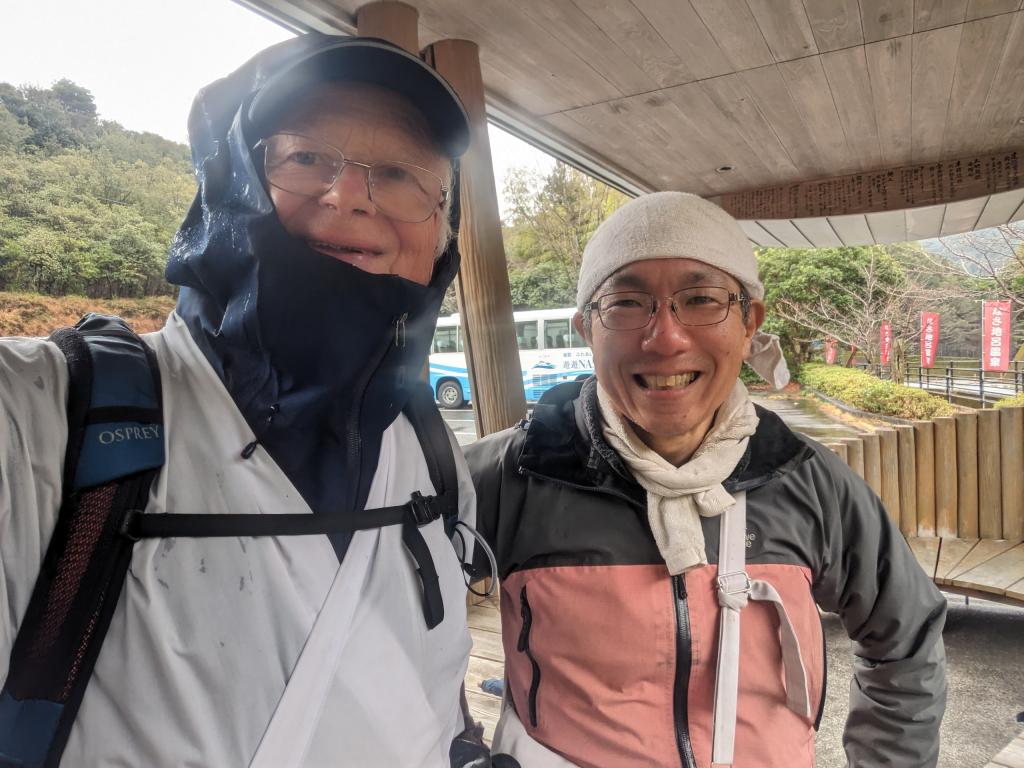
With Yutaka, Henro for a year and a half who has been writing sutras
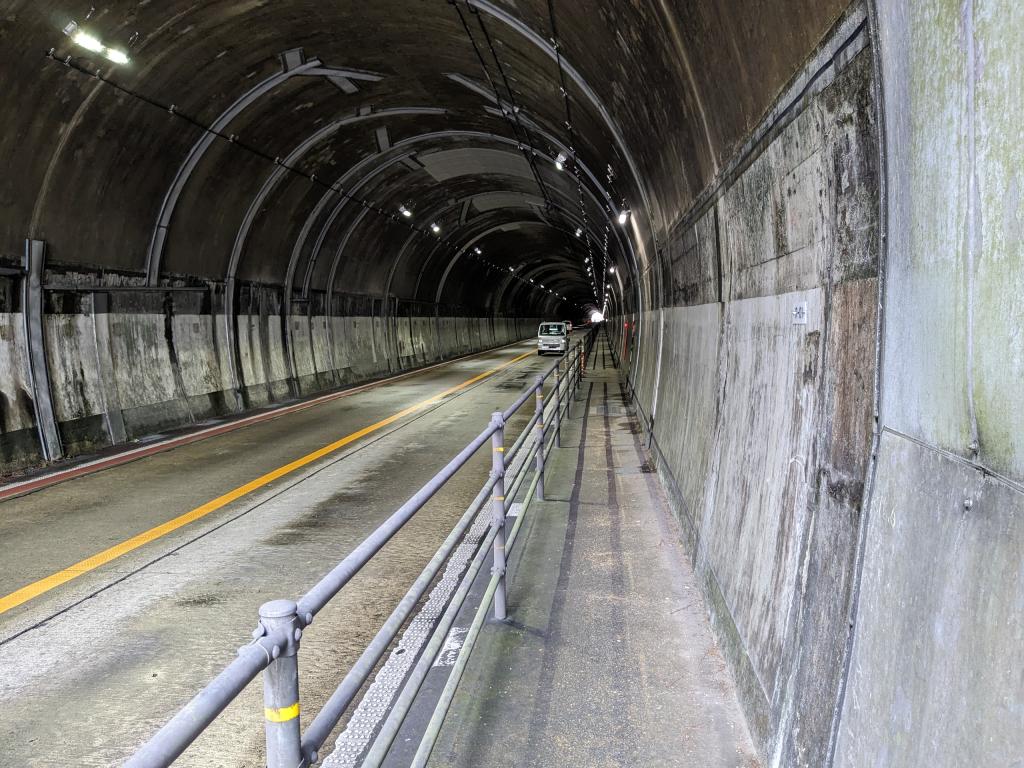
Still plenty of tunnels and bridges to span the mountainous landscape
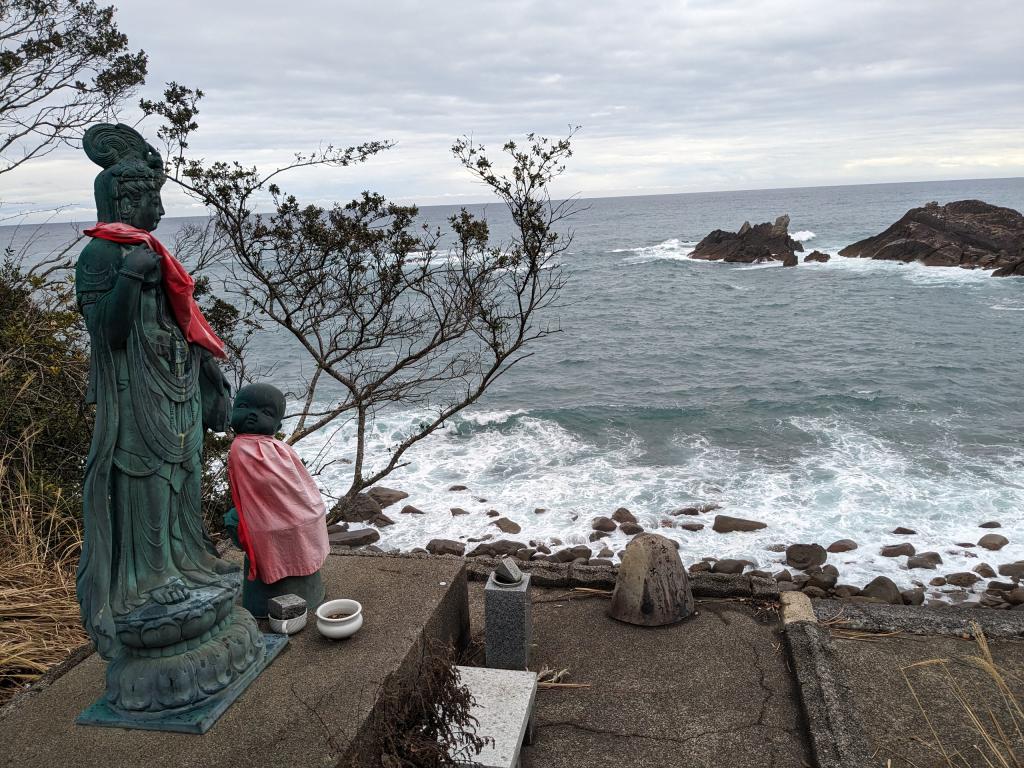
The Pacific on my left
Day 11: rain
To face the good rain this morning, I styled my backpack with a garbage bag tied with a fluorescent banner. With this outfit, I am well protected from the rain which lasts all morning. This year, I skipped my poncho which weighs 350 g, focusing on my new jacket which is effective.
The bell on the back of the bag is supposed to ward off bears, snakes and other wild animals by preventing them from being surprised. It is often hung on the stick. To be more discreet, I attached it in place of my scallop shell.
I walked alone all that Sunday. At the 10 a.m. coffee shop, Ytoko was friendly and smiling towards the dripping Henro. She explained to me that she had also walked this path. Yutaka is a professional pilgrim since he has been on the trail for a year and a half. Today, he takes advantage of a precarious shelter to write sutras.
I followed the road that runs along the coast with tunnels, bridges and views of the ocean, rocky beaches, surfers, fishing boats. No pleasure boats, either sail or motor. The gray and hostile sea does not make you want to dive. But it’s February!
I regularly see information about the arrangements made against tsunamis. Arrows indicate places to take refuge with height above sea level.
Half of Japanese people wear a covid-type mask even when they are alone in the car. It is more difficult to understand them because we cannot see their expressions. This mask has been worn for a long time, before 2020. It corresponds to the concern for hygiene with very different habits of the French. We take off our shoes and put on slippers when we enter a house. To enter the toilet, you change your slippers. The evening begins with a shower, then a relaxation bath and another shower. We then put on a kimono with a kimono jacket...
Tonight I am the only Henro in this Taniguchi pilgrims welcome. The owner tried to make conversation with me during dinner. As she only speaks Japanese, I used the Translate app I found on my smartphone to communicate with her with some success. She fishes on foot on the nearby shore, but does not swim. She has already received a few French people.
Japanese menus are all a bit similar. They contain raw fish, a whole series of vegetables, sometimes fried chicken and finally soup.

Road 55 to follow to Cape Muroto
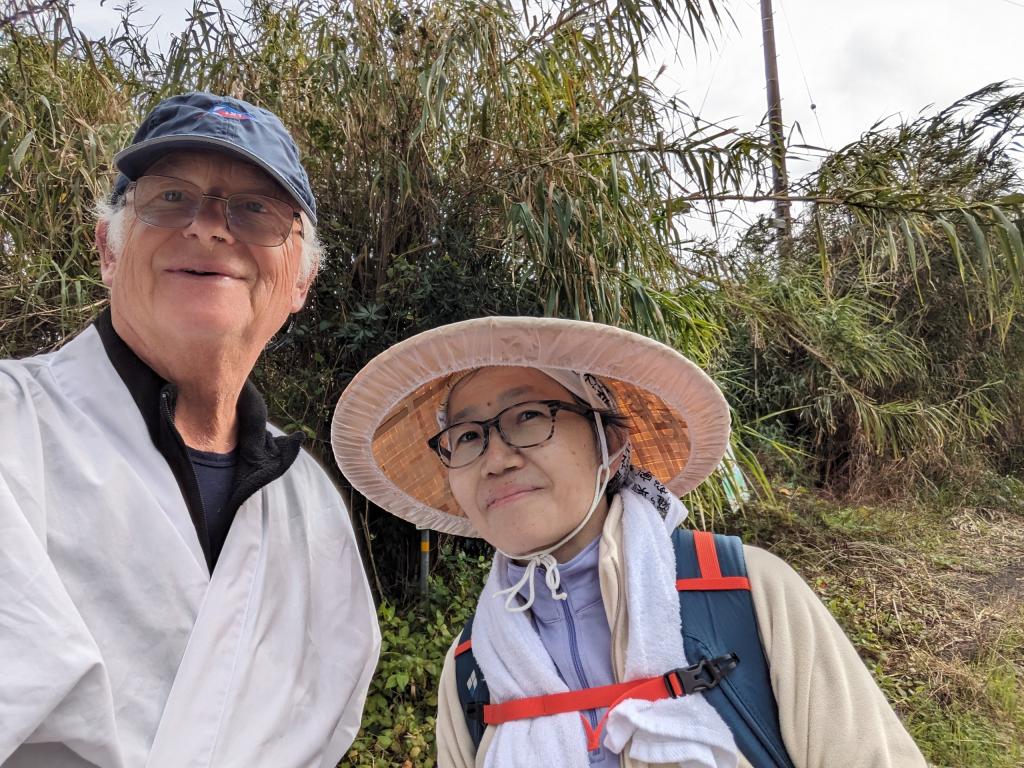
Meeting Teiko, a Japanese woman who also tours the 88 temples
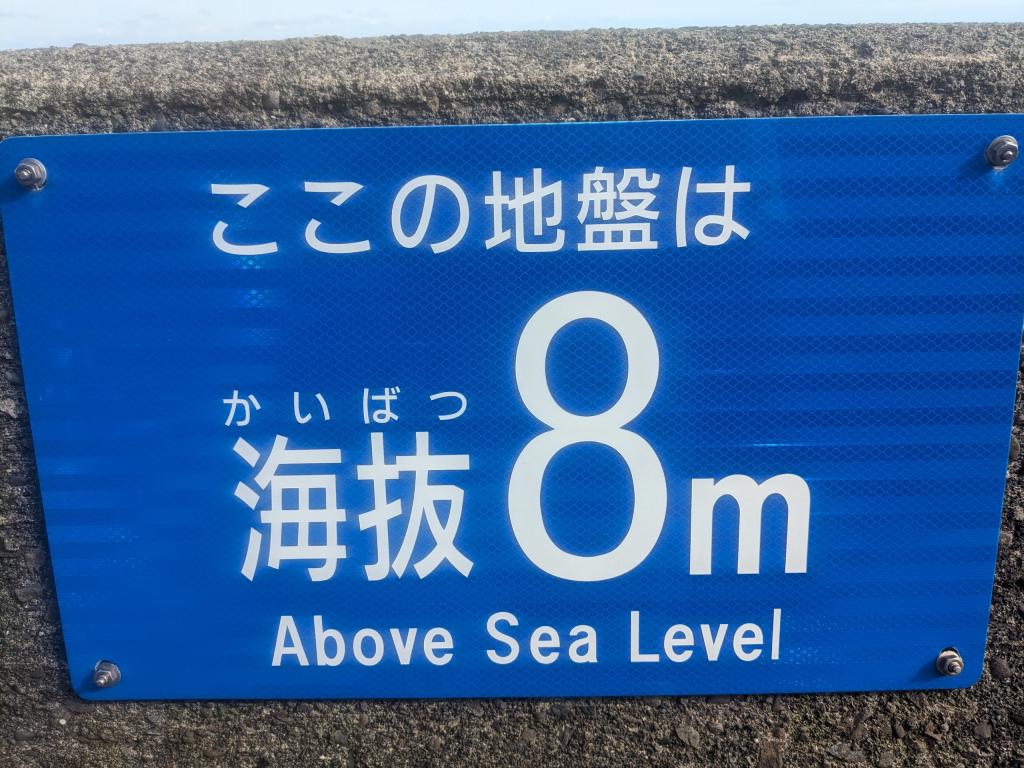
8 m above sea level
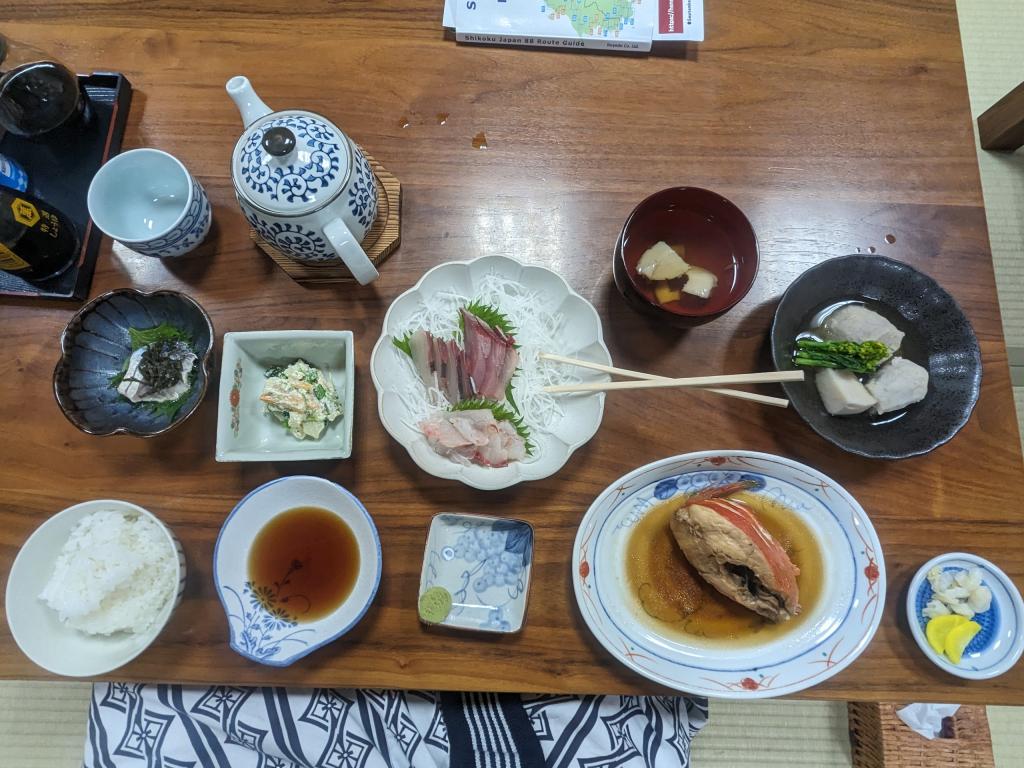
My dinner in Tokomasu Guest House
Sashimi : Yellow tail, Japanese amberjack (young), Leopard fish
Nizaka : Deep sea red snapper
Oar : Chinese cabbage, spinach, persimmon (kaki) Cooked with tofu & sesame
Nimono : Japanese taro potato & Cardinal flower cooked with ginger
Special :Salted & vinegaref with Yuzu citras. Mackerel
Tempura : Thistle & dried squid
Then, I added a beer and a glass of sake. The sake has 15 degrees and is transparent. I prefer a good wine
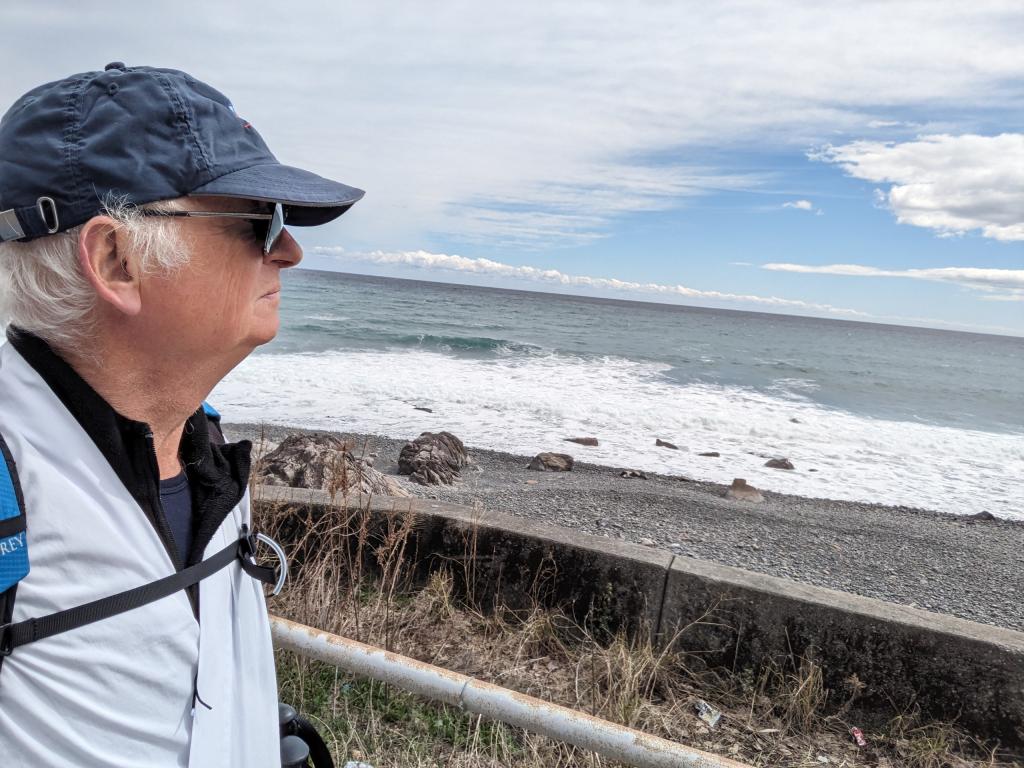
Day 12: fear of the tsunami
I scan the horizon to detect if a giant wave is heading towards the coast. I am overcome by tsunami psychosis. Signs regularly inform me of this danger. They sometimes indicate the height of the place and the direction to take shelter either on a natural height or on a building constructed for this purpose. Walls are built on the seaside and block the view of the houses behind them.
All the ingredients in Japanese meals are supposed to be, above all, good for your health. Most often, they are presented raw and it is up to the consumer to make the assortment with sauces that suits them. This morning, I had a raw egg to mix with the rice in addition to the usual ingredients.
A belief is a rock on which we can move forward
The comparison between Japanese and French civilization is an interesting exercise. These two countries have a comparable level of development, each have a long history, a sophisticated culture and equivalent levels of complexity. Very distant from each other geographically, they have had little influence between them in the past. Many differences exist. Hygiene, food, the way of behaving with others, writing, religious beliefs... Studying these differences allows you to step back from your own convictions. Would one be right and not the other? Would there be different truths? Uniformity would be boring. These differences are a great asset. But then can we still believe in anything? The only solution in my opinion is tolerance to accept that others also hold interesting truths.
I am staying at the Tokomasu Guest House, one of the nicest on the 88 temples tour. From my room, I have a view of the ocean. And my foldable mattress is very thick.
At dinner, there are 7 customers in the room including 3 Henros, Teiko, Jeff an American and me. The atmosphere is good, the beer and sake perhaps contribute to that. Next to me, Jeff, who is doing the tour on his bike, tries to sit first like the Japanese, that is to say on a chair without legs, then on a mini stool. After 10 minutes, he throws in the towel and asks to sit on a real chair in front of a real table. The Japanese sit on bent knees. I know my limits and I immediately asked for a mini stool on which I can stand for a meal while being almost at the same height as the locals.
I left Tokushima Prefecture and entered Kōchi Prefecture. Tomorrow 24 km with a climb of 164 m and the visit of temples 24 and 25.
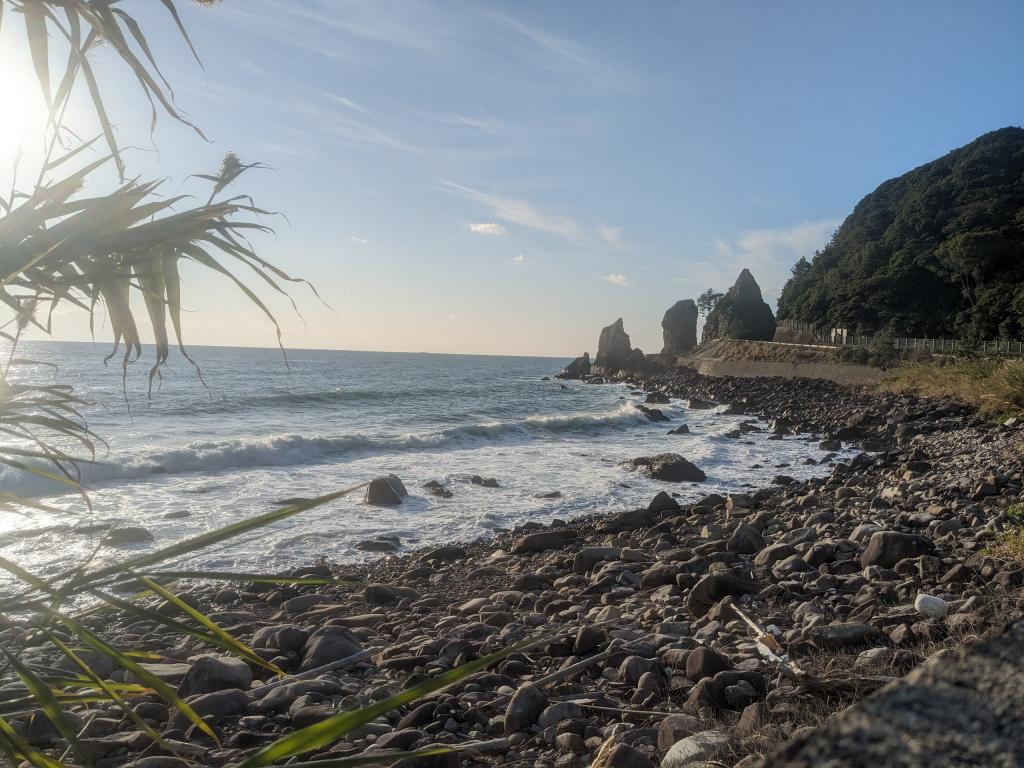
Early morning
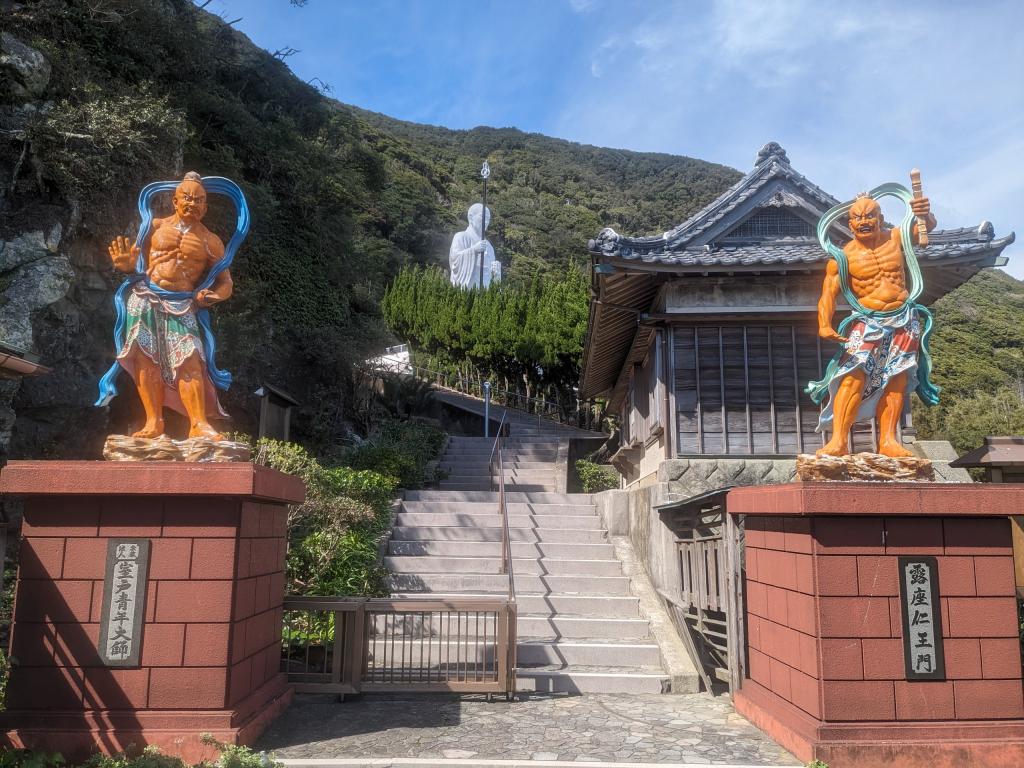
Statue of the young Kōbō Daishi who initiated this trip around Shikoku
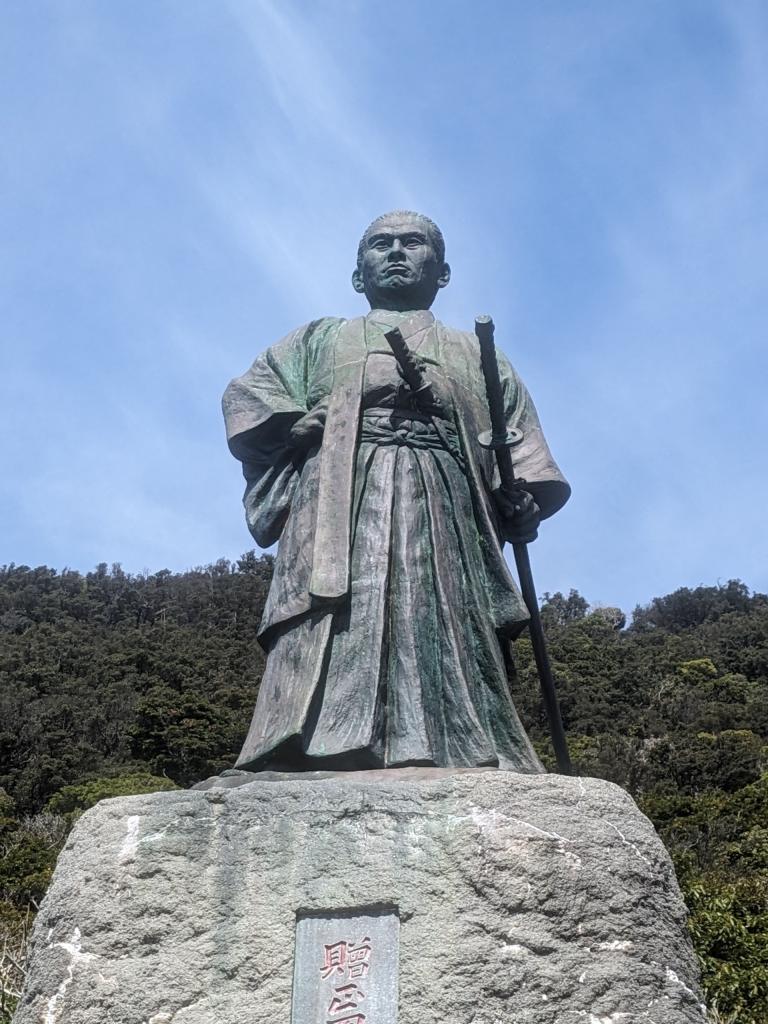
Statue of Shintaro Nakaoka at the tip of Cape Murato
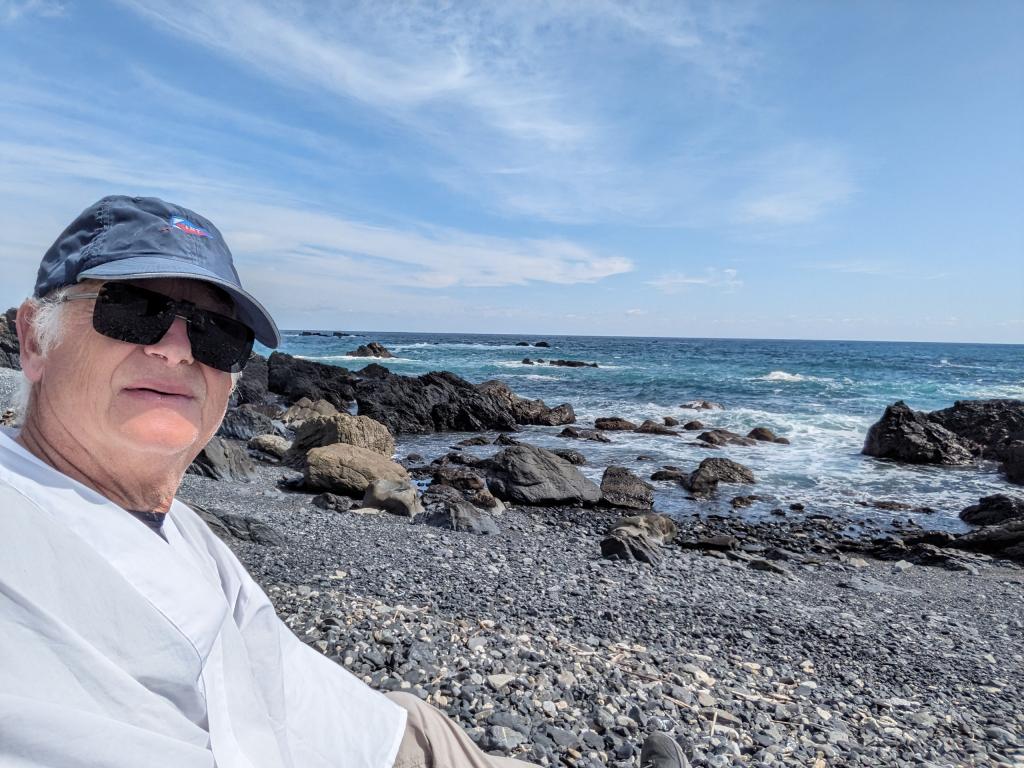
Lunch at Cape Muroto
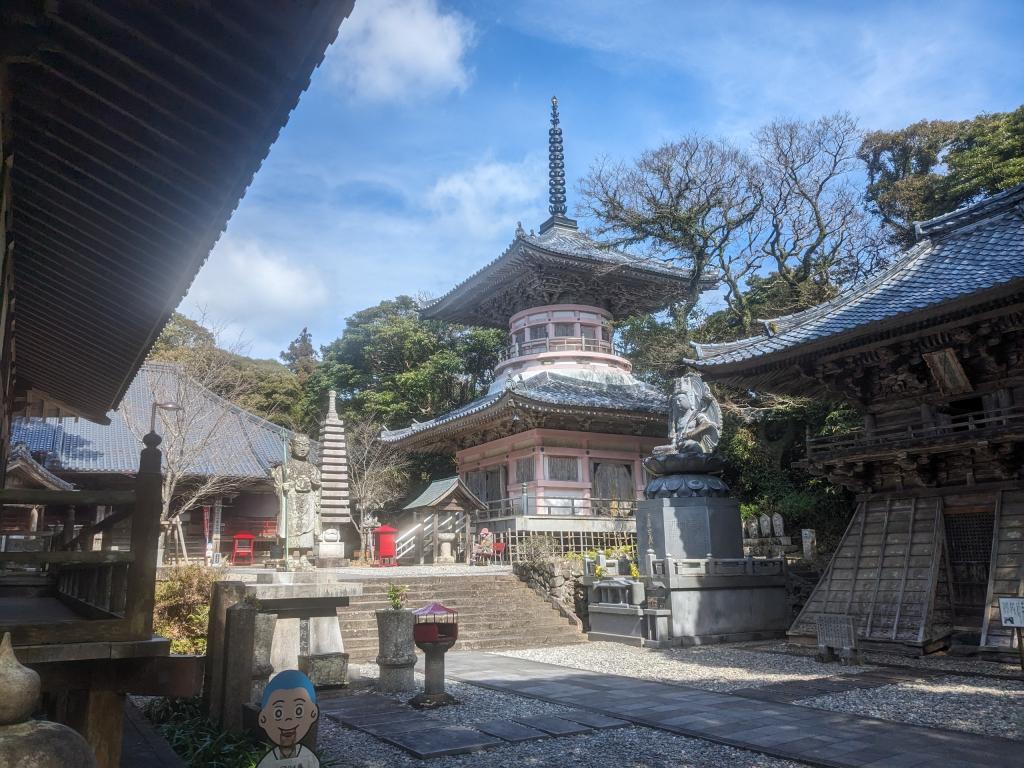
Temple 24
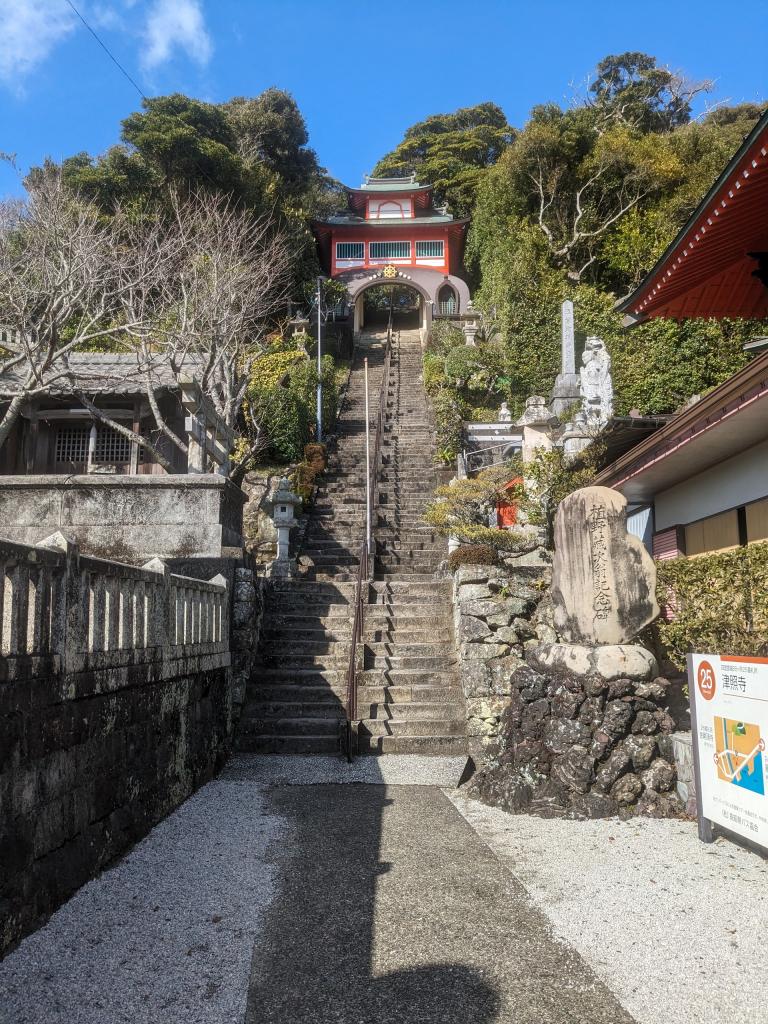
Temple 25
Day 13: I found the temples again
The morning was spent following the sea with a few incursions into the villages. I didn't find a coffee shop or small restaurant on my route. I had lunch in front of the sea at Cape Muroto with some toasts that I found at the entrance to an aquatic center.
I'm happy to find temples again. Each temple has its particularities. As on the road to Compostela, adding stamps to my book is a rite to which I willingly comply.
Temple 24 is perched on a hill atop Cape Muroto.
Temple 25 is located near a fishing port.
This evening, I am sleeping at the M Urashima which was indicated to me by the hostess of Tohumasu. Tomorrow, I climb to temple 26, then head towards temple 27. Depending on how tired I am, I stop at the foot of M Tonohama like Teiko or I do the round trip again with a climb of 427 m!

The steps receive coins
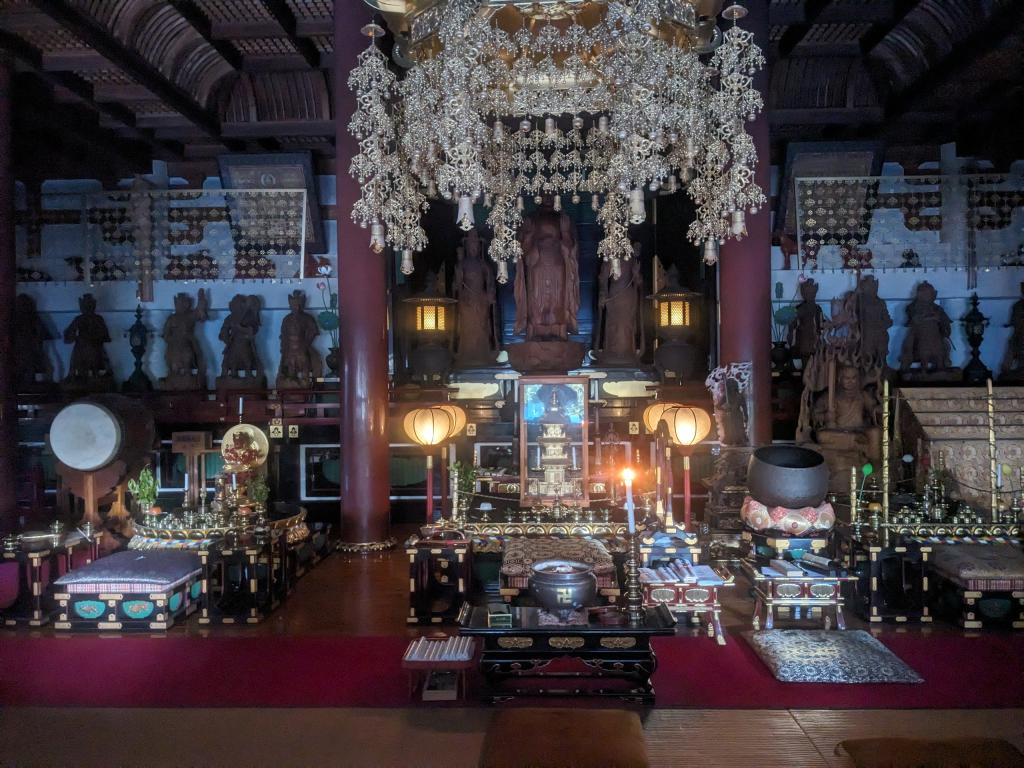
The interior of the temple 26

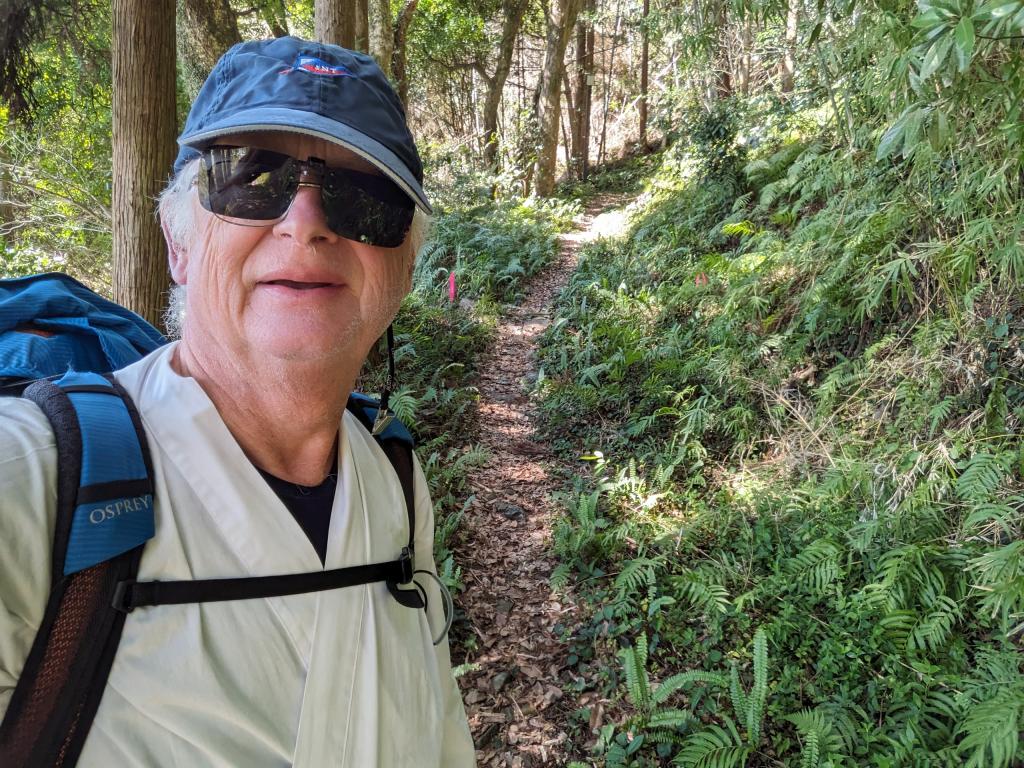
On the way to Tonohama
Day 14: 25 km with the climb to temple 26
Long day of walking starting with the climb to temple 26. Coins were placed on the stairs to bring luck. I added one. The main temple was open. I sang with my sutra notebook.
Bad luck, to leave, I took a descending staircase and I got lost for a good quarter of an hour. Luckily Google Maps was there to help me because a lot of the directions on the signs are only given in Japanese.
A lady on a bike walks up to me and gives me 100 yen for tea. Then around noon I get a full meal. The magic of Shikoku?
I found the explanation: the culture of Osettai, this hospitality of the inhabitants which is expressed in the form of gifts of food to pilgrims during their passage. In the past, when there were no ATMs or convenience stores, the help of locals allowed pilgrims to survive. Rice or clothes were then very valuable gifts. These charitable actions had the counterpart of the fact that the pilgrims represented Kōbō Daishi and made it possible to represent the inhabitants in distant temples to say the prayers on their behalf. This Osettai tradition still exists today.
At 4:30 p.m., I arrived at my stop at M Tonohama at the foot of temple 27. Tomorrow, I have 4 km to climb to the temple, then go back down the same way. I then plan to take the train to the next temple which is 35 kms away along busy Route 55 and it rains in the afternoon. So far I've been walking. To try to do the complete tour of the 88 temples, I will speed up on the large sections without temples by train or bus.
For tomorrow evening, I have identified an 'accommodation', but not yet booked.

A heron
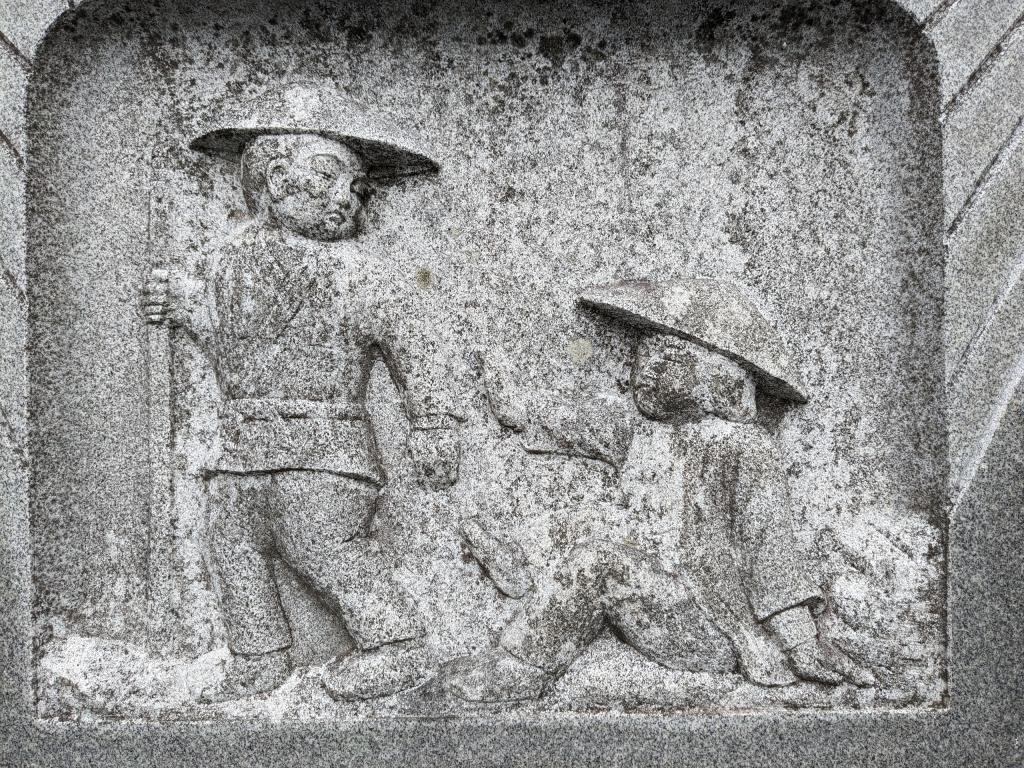
Same scene seen on the way to Compostela
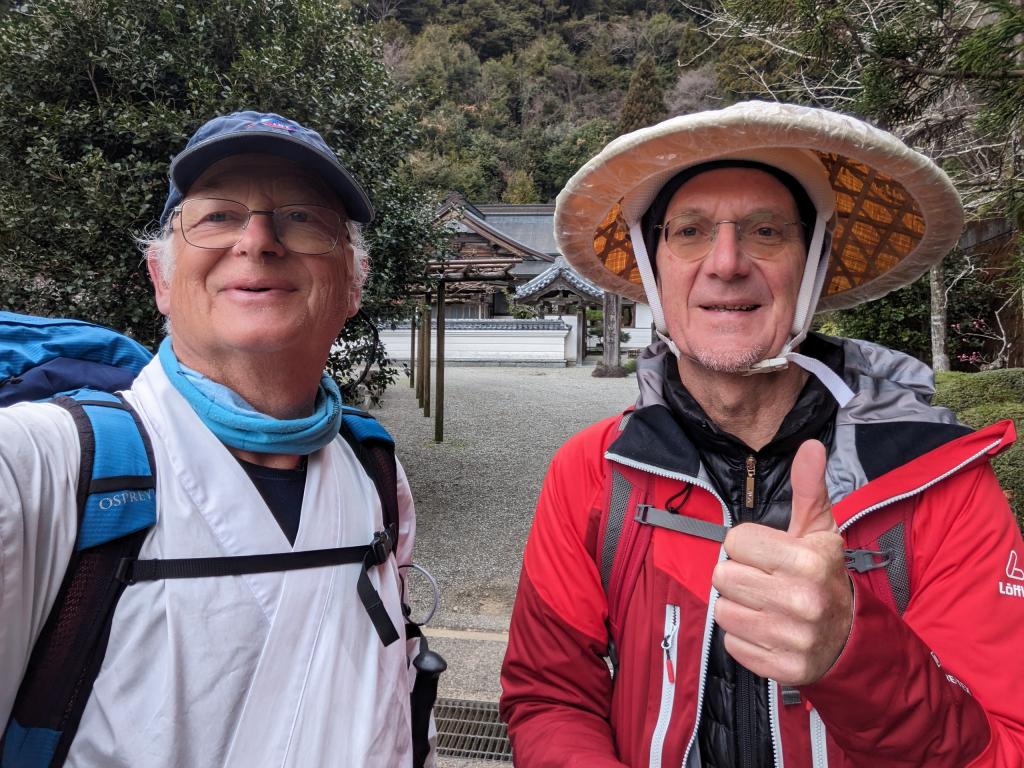
With Ossi, who comes from Tyrol to do his 7th tour of Shikoku
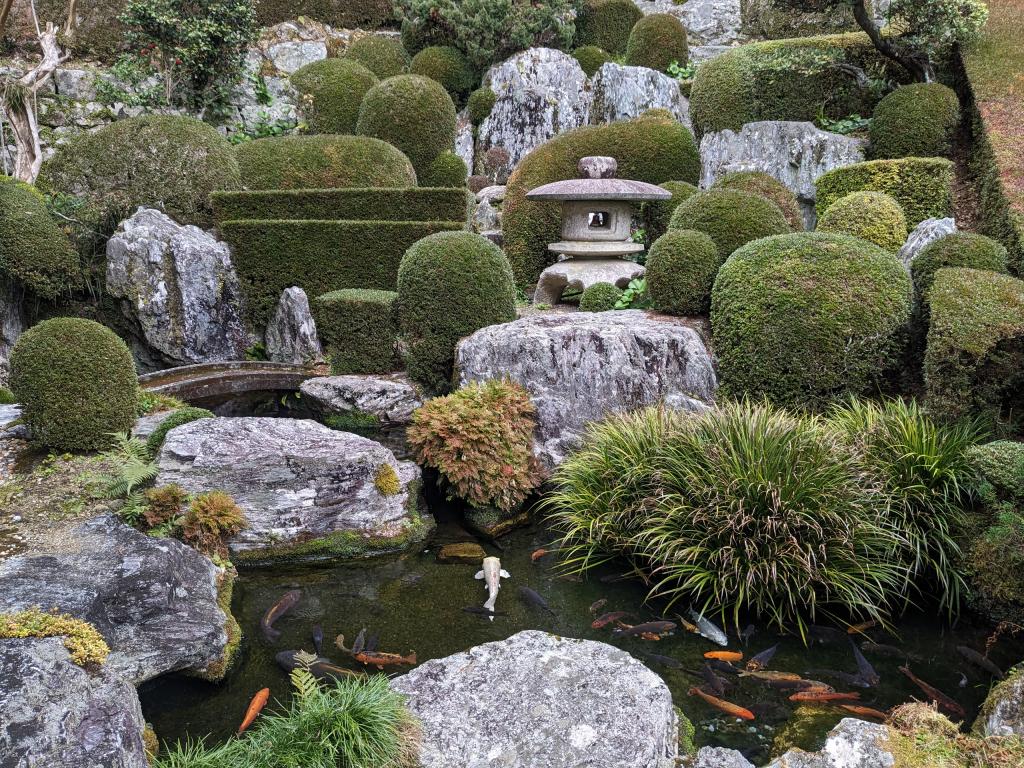
I am captivated by the pond with beautiful fish in transparent water surrounded by stones and plants
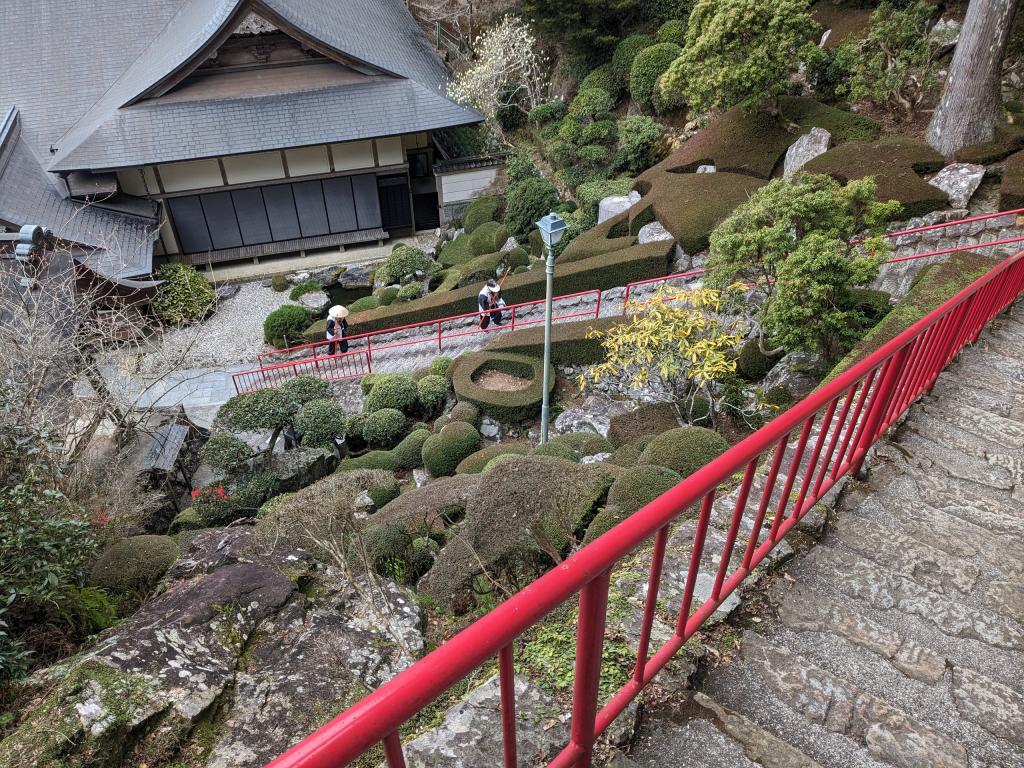
Temple 27
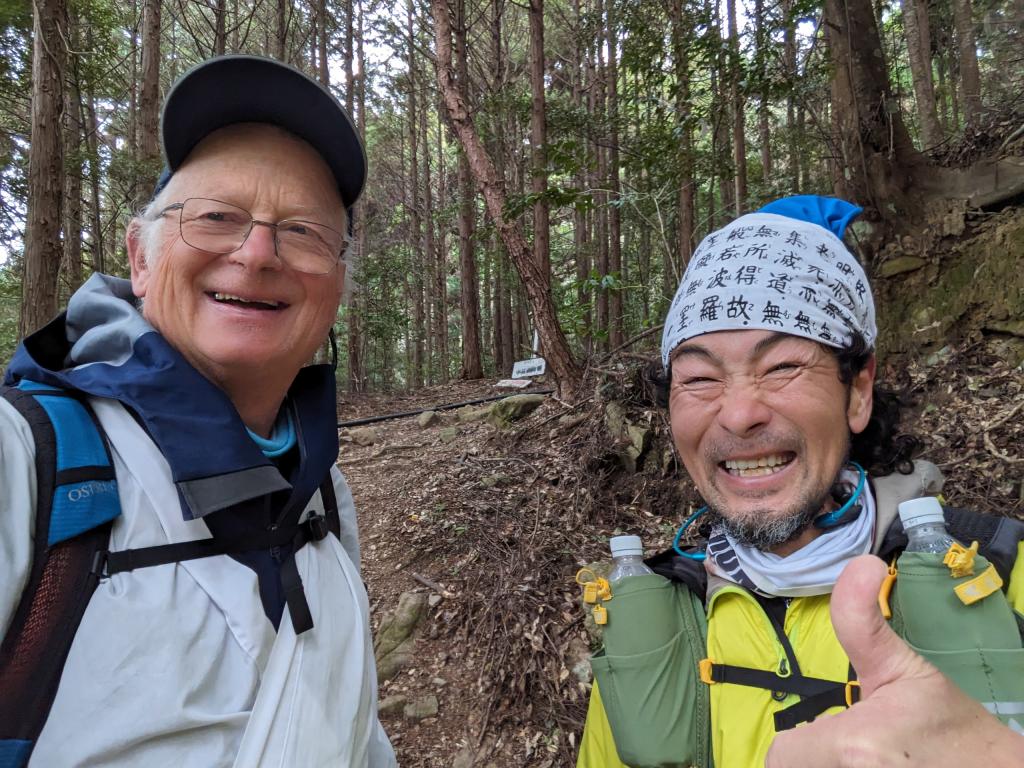
With Chu who is a running Henro
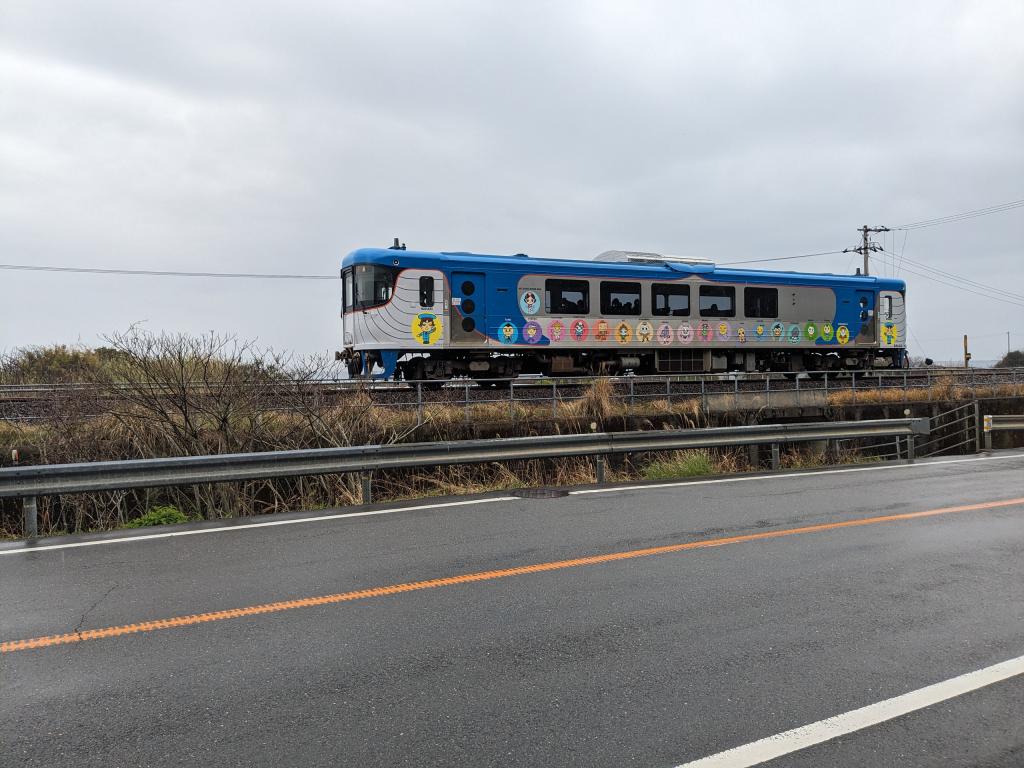
My train

Dry on the train

Under the rain
Day 15: the train
I walk about twenty kms and I use the bus and the train to get past the difficult sections along Route 55.
This morning, it takes me 2 hours to go up to temple 27. There I meet Ossi, an Austrian who is touring Shikoku for the 7th time in sports mode. Maybe I'll send it back tomorrow night?
On the way down, I meet Chu, a Japanese man who is a Henro runner. So he runs instead of walking, which doesn't stop him from singing Oh Champs Elysées to me.
Around lunchtime, I find a little restaurant that I like, with real people who seem happy to welcome me.
On the train, 8 km from my arrival, I decide to get off. It's not 3 p.m., it's not raining and I want to arrive by walking. As soon as it descends, it begins to rain this good little rain which delights the farmers and which wets the earth well. I hurry my walk so as not to end up in a mop, but I arrive soaked at temple 28 and at my Kuruku accommodation. The shower and the bath are welcome to come out in very dry pajamas.
From here, I have a whole series of temples which will follow one another until 36. But it's complicated for accommodation and I will probably stop at temple 30 tomorrow evening.
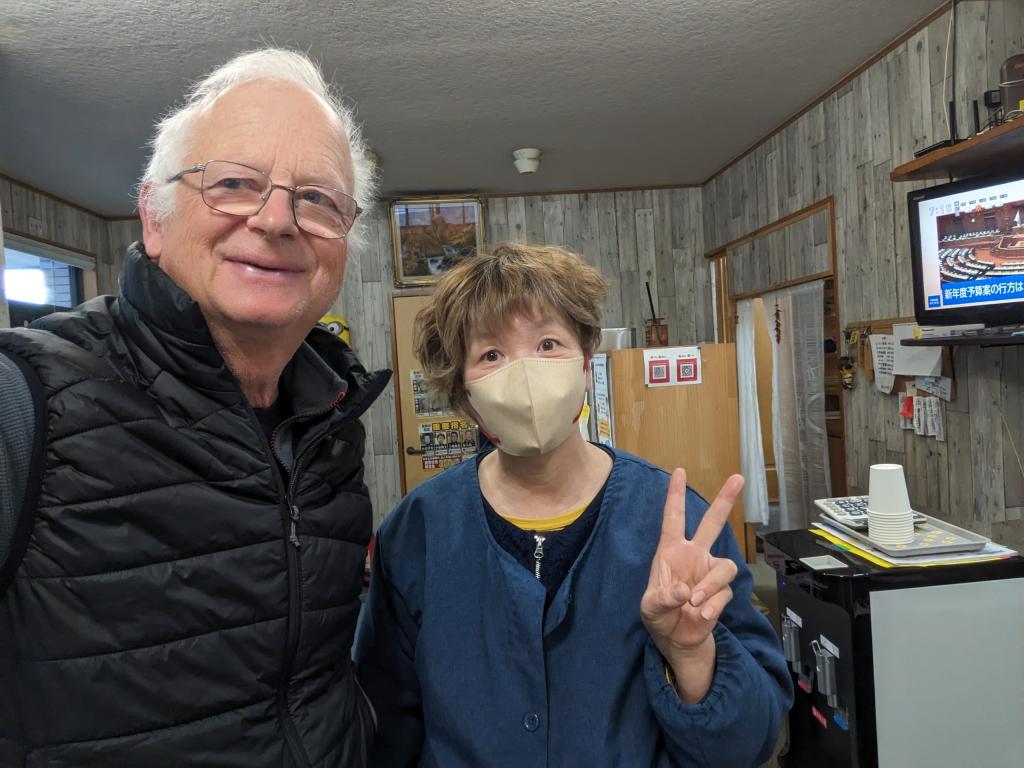
With Chieko
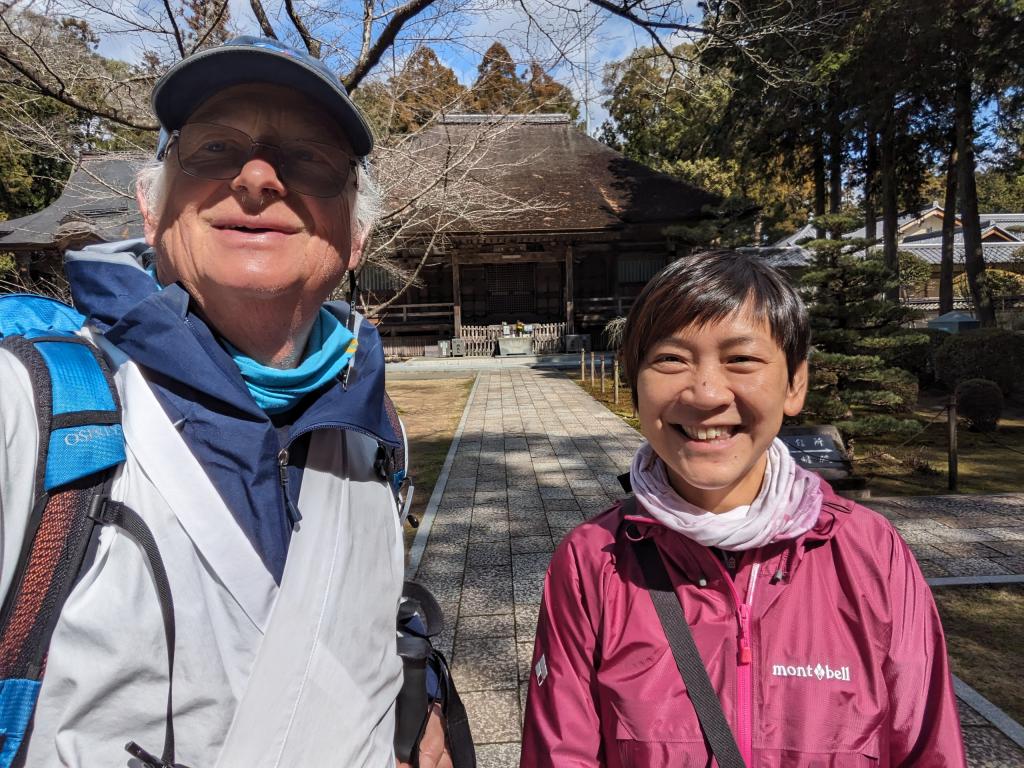
With Joanne
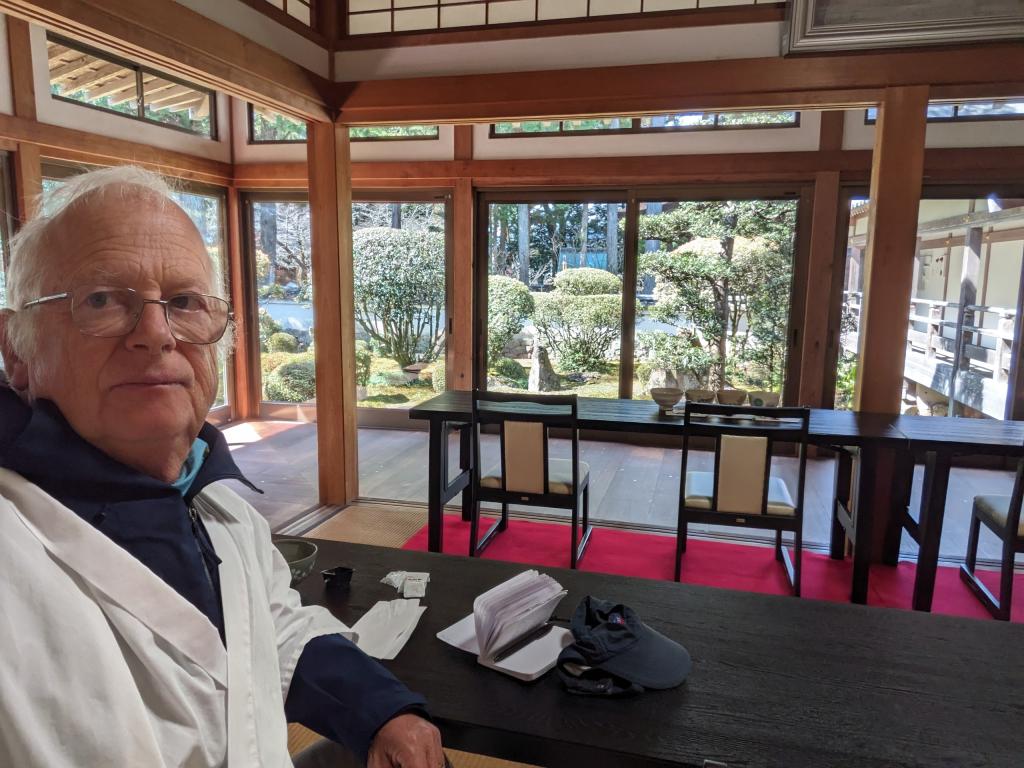
Temple 29
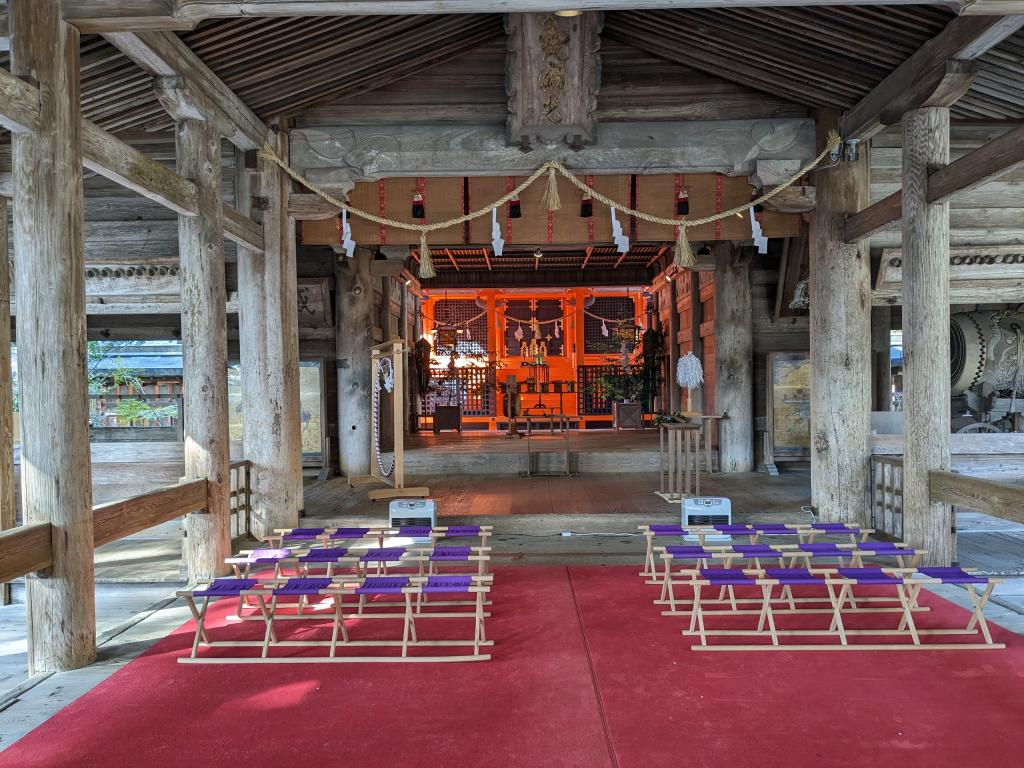
Shrine near temple 30
Day 16: Chieko sings for me
This morning I got a special gift from Chieko, my landlady. For me, she sang to the accompaniment of a synth. I asked her who played the instrument. She told me that she composes music in her spare time. She's talented, but I didn't understand the lyrics. She is modest and didn't want me to record her and when it was time to take a selfie together, she put her mask back on.
At temple 29, I met Joanne who is from Sydney and who approaches me with a 'Bonjour'. She was the one who stopped the train that was starting to move yesterday so that I could get on. Speaking English well, it's pleasant to discuss the realities of the journey with her.
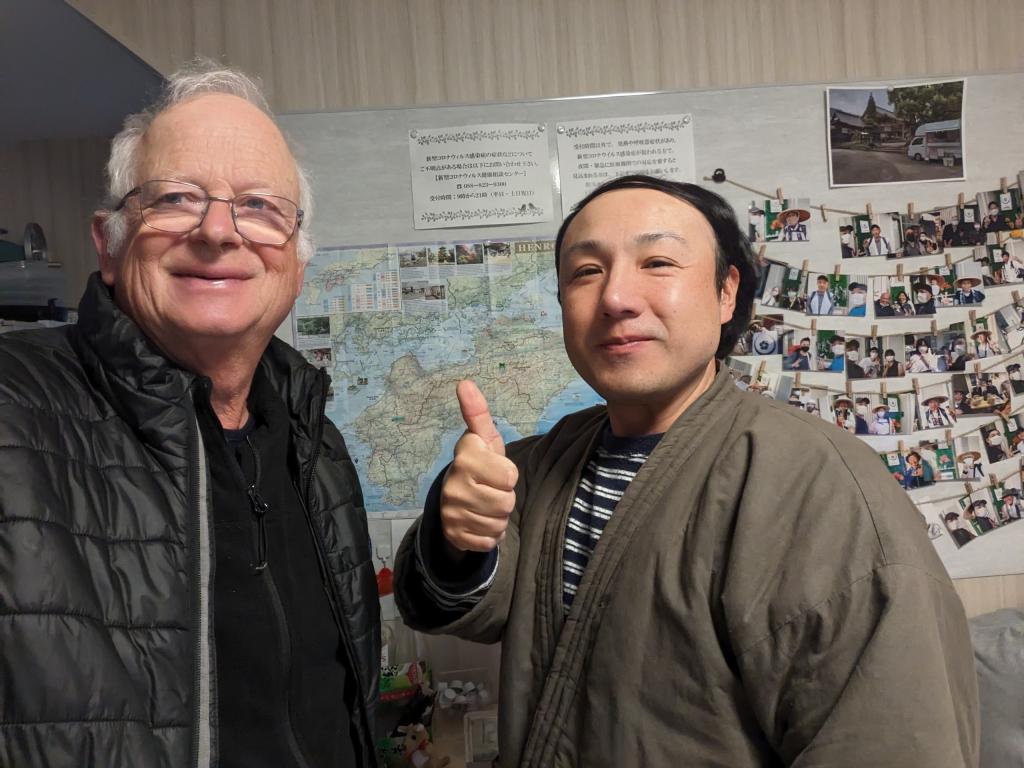
With Jumpei, my landlord
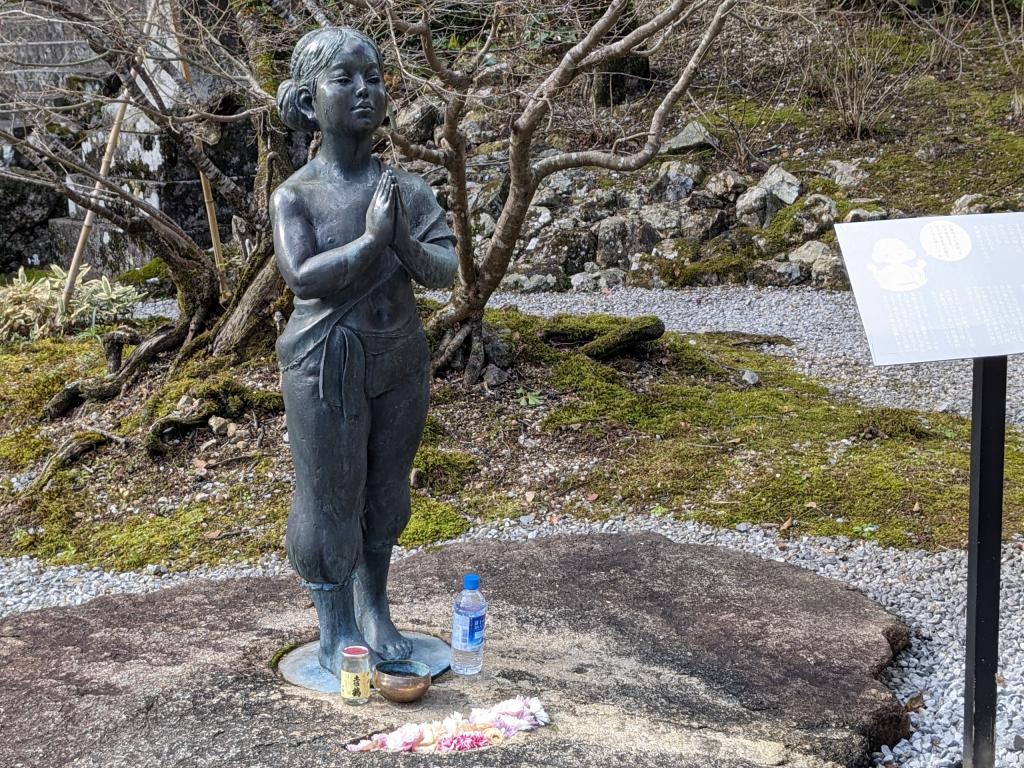
Temple 31
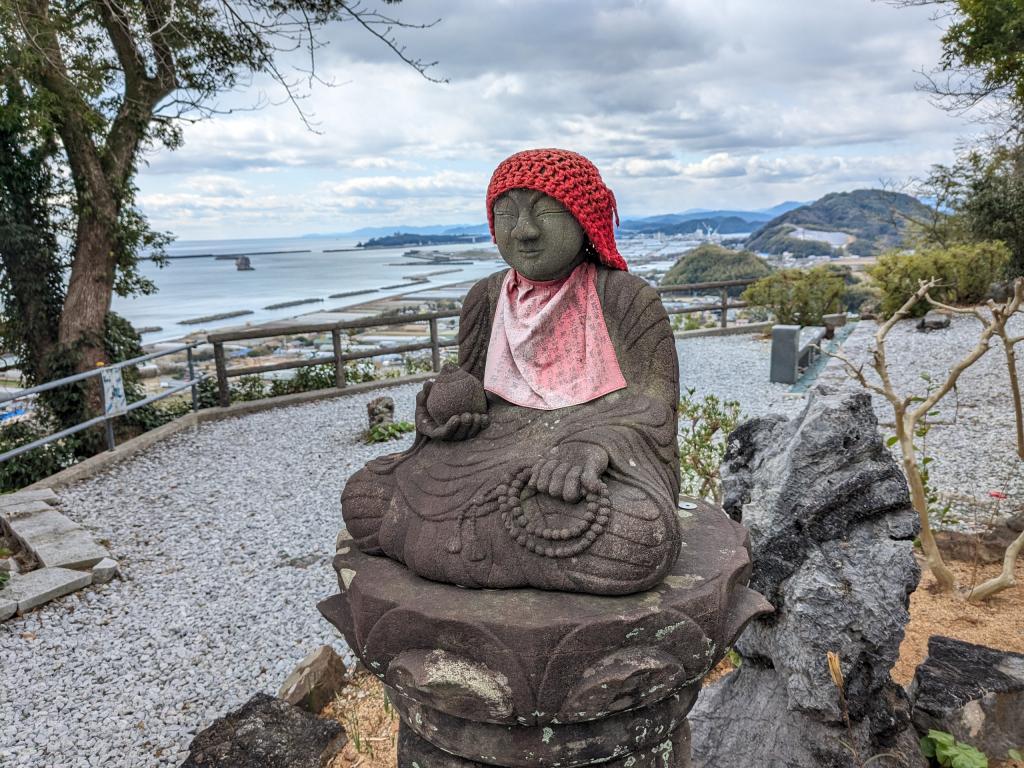
Temple 32
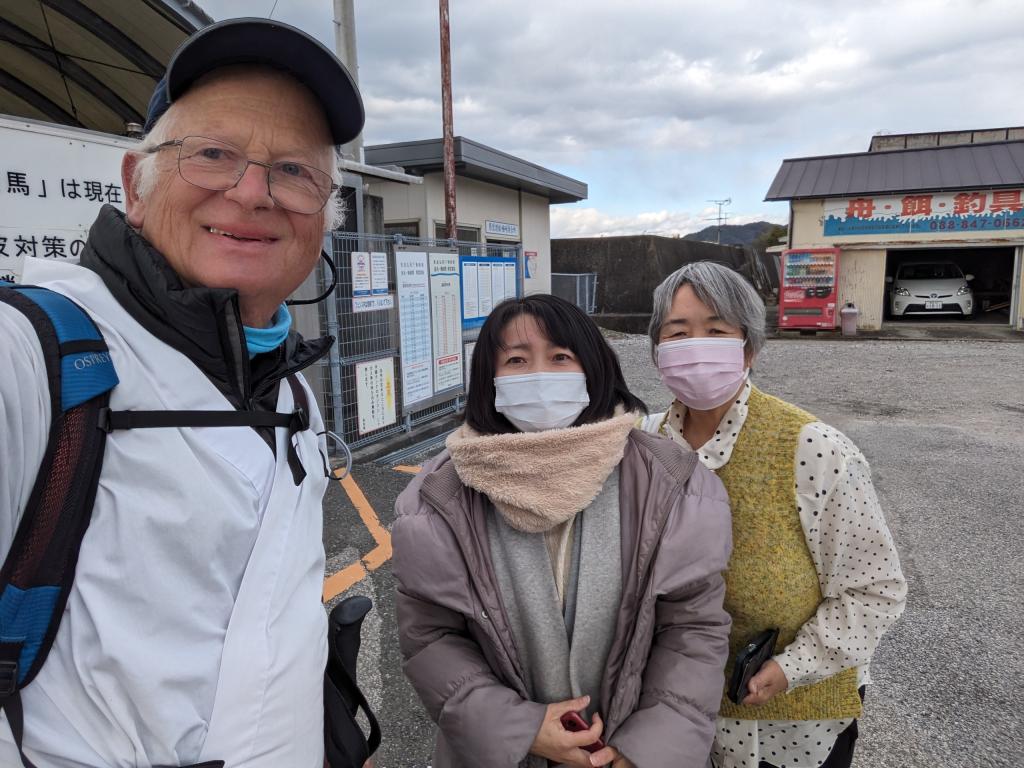
With Hayashi and Oonishi talking to me taking advantage of the fact that I can't find an excuse to escape
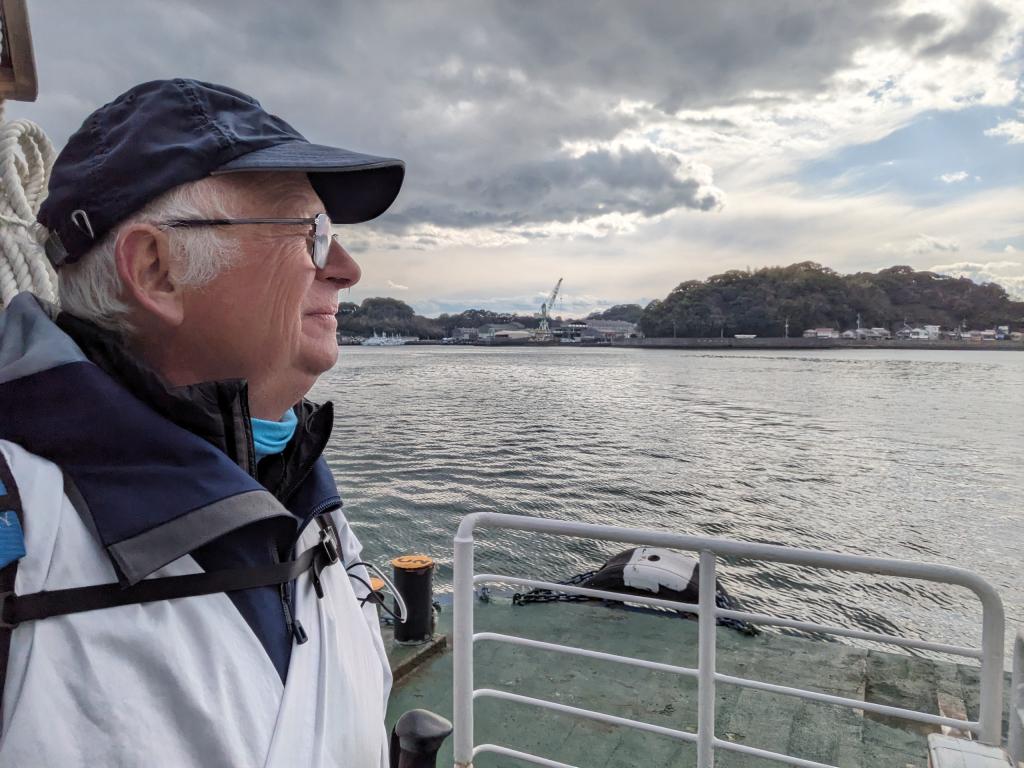
Day 17: I got back on a boat
It's cold today, I'm walking in a city along canals, roads and market garden areas. In the gardens of Temple 31, I found Joanne still in a good mood. And at noon, I see her again at temple 32.
I then snack on some pasta while walking because I still have to go 10 km to temple 33. But 2 km from the goal, I come across a large wall with a closed metal door. But where am I then? There is a digital scoreboard, but it is turned off. I find river shuttle timetables on paper without understanding their meaning. Two women arrive and give me information using the translator on the smartphone. I am in front of an embarkation point to cross an arm of the sea.
The great walls were built to protect the population from tsunamis. I still have half an hour to wait. The two women talk to me. I quickly understand that they are part of a sect that wants to save me, that doesn't like temples and that prefers Mount Fudji. I am disappointed by their intolerance. Plus, when I say I'm a Christian, I still have to go down 3 floors in their esteem for me. Finally, I'm happy when the big door opens to escape into the boat.
The very quiet navigation saves me from passing over a huge Saint-Nazaire bridge style bridge. I still have half an hour of walking to reach temple 33 and my reservation M Kochiya where I meet Ossi, Ootani, another sports walker who left temple 1 five days after me and 4 other clients.
Tomorrow, a 30 km stage to arrive in front of temple 36. I booked the 6 a.m. breakfast so that I can enjoy Sanyo-so in the evening, one of the best accommodations of the tour.
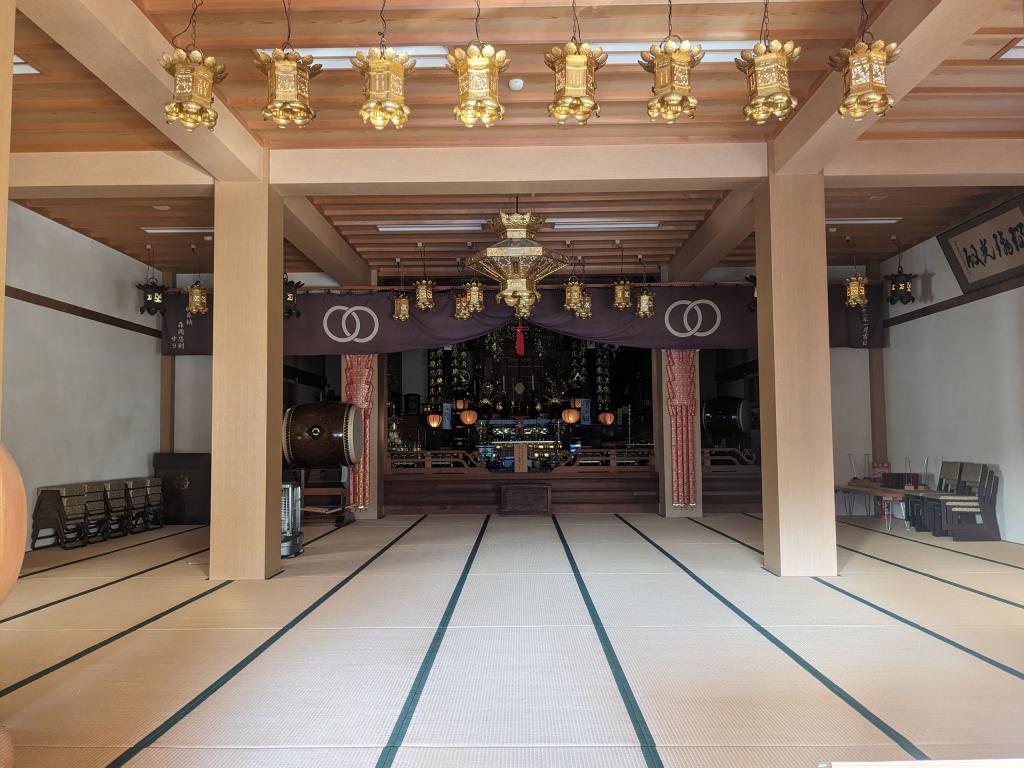
Temple 34
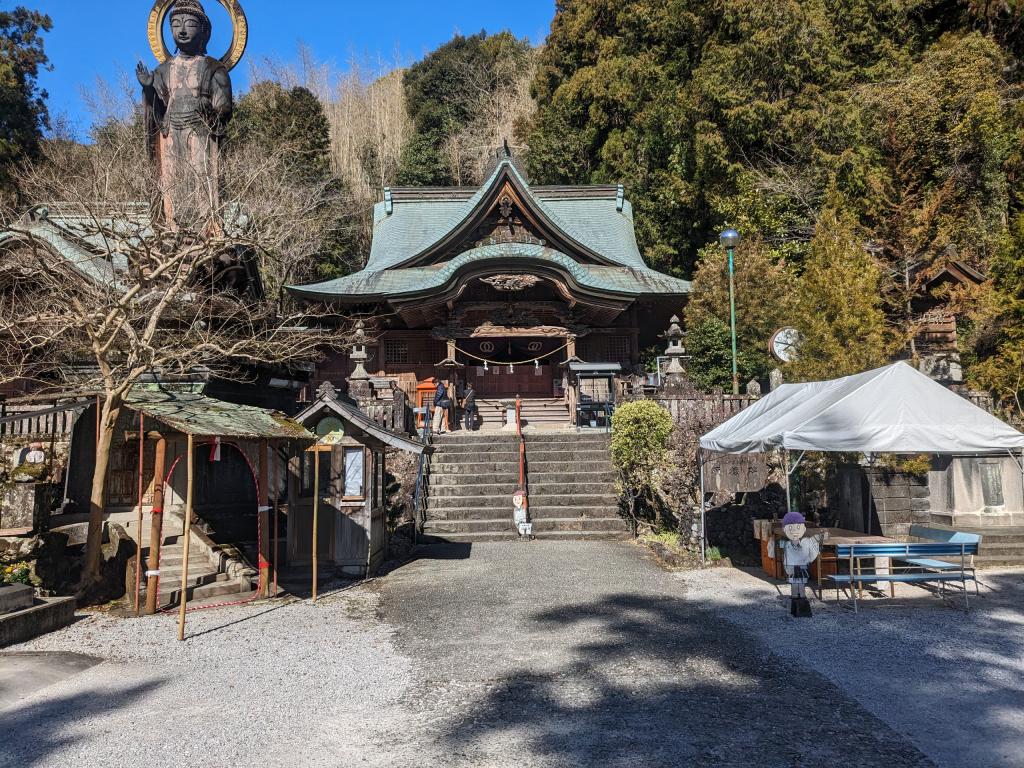
Temple 35
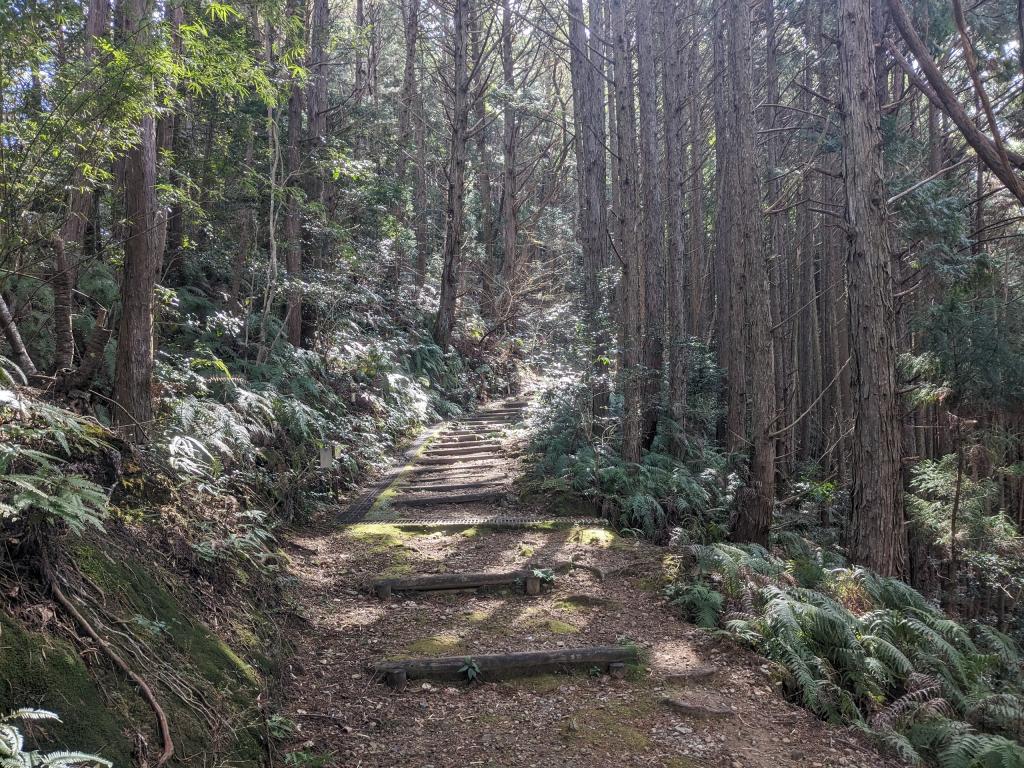
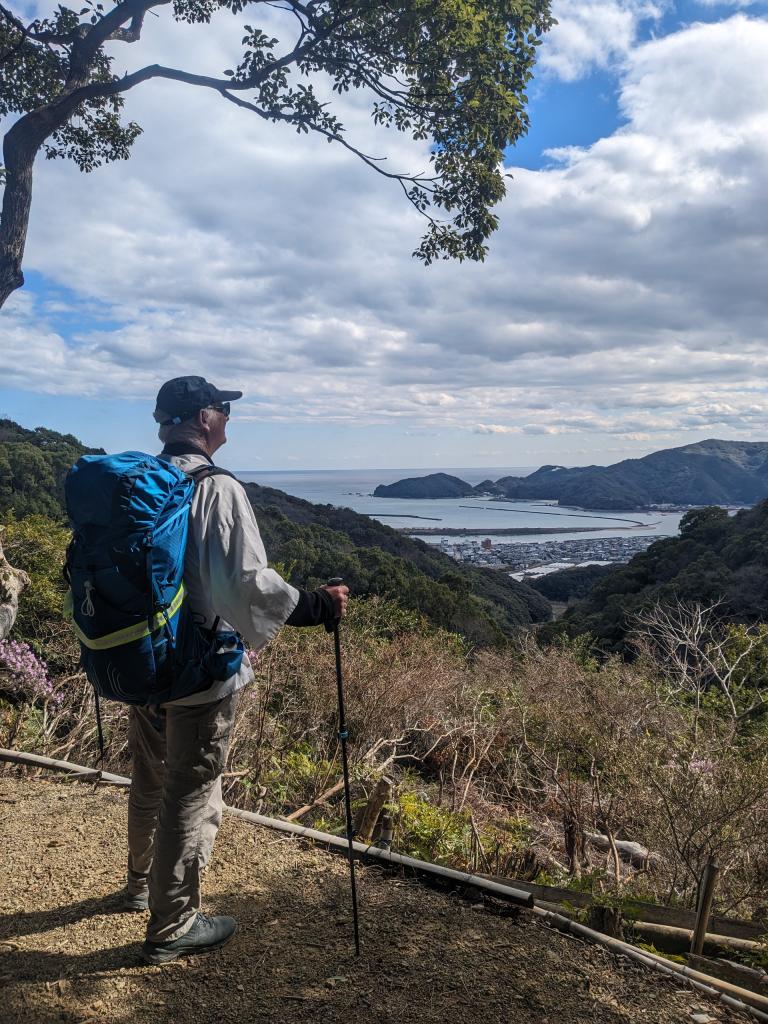
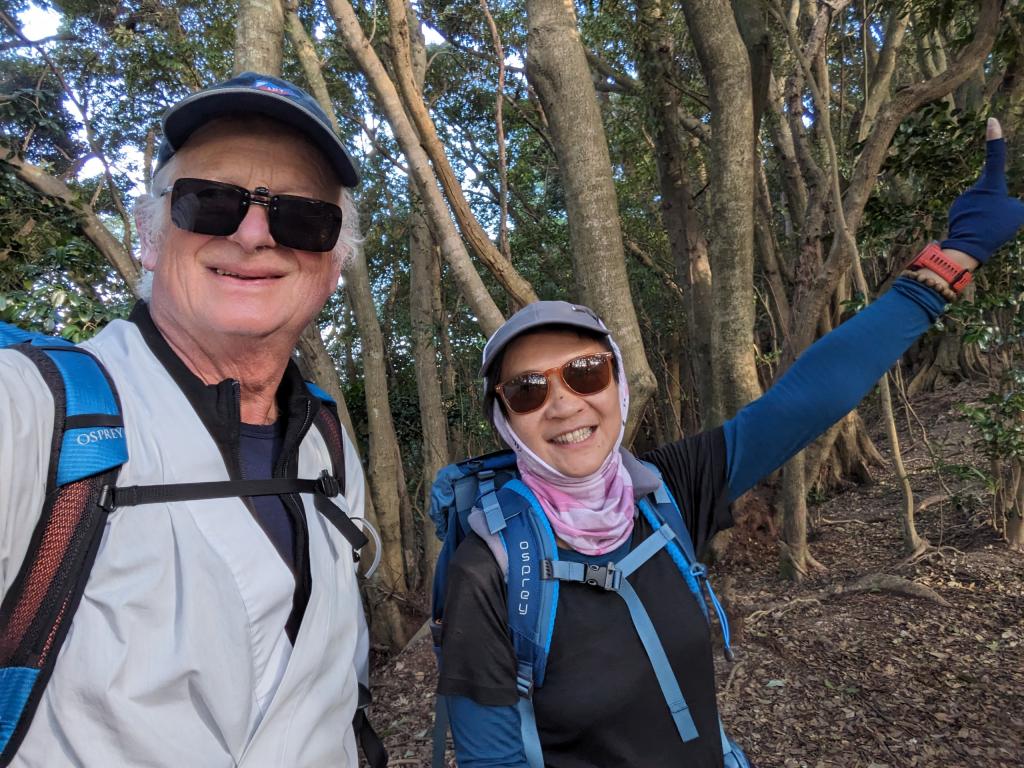
With Joanne
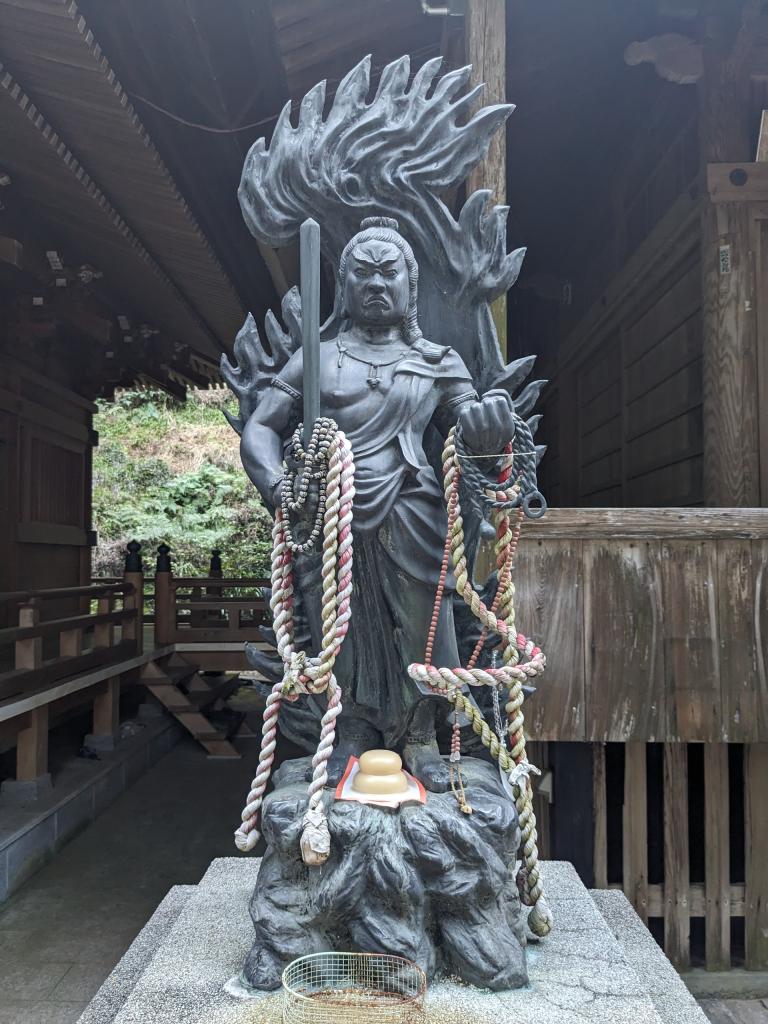
Temple 36
Day 18
Minus 1 degree awaits me when I leave the accommodation. Well covered and without wind, it's nice to feel this semblance of winter hurrying before spring arrives. Ossi suggests that I get into his taxi to reach temple 34, which allows me to walk down 25 km.
After visiting temple 34, the solitary walk inspires me with metaphysical subjects. My head is in the clouds and when I leave temple 35, I still find ways to get lost. I have to do some acrobatics to get back on the right path. I see Joanne again with pleasure. It is now part of my daily encounters. Besides, during my lunch break, she catches up with me again and we walk together to temple 36.
At the Sanyo-so hotel, I am received like a distinguished guest, due to the price of the room! I meet Ossi for dinner and it is the opportunity to talk about the day, the future stages and the experience he acquired by making the complete tour of the 88 temples for the 7th time. And tomorrow for him, the alarm rings at 3:30 a.m., so that he can connect to temple 37 which is 55 km away.
After dinner, I try the 'hot spring', a hot thermal water bath. The water is slightly cloudy and is said to have beneficial properties.
For me, wake up at 5:45 a.m. so that I can catch a ferry which covers the first 10 km of this stage towards temple 37. I will only have 45 km left to travel on foot or by train. Ok, I will have less merit than Ossi.
Reflections on the divine
The divine is all the creative forces of life on earth.
The probability that life on earth will reach this stage of development is infinitesimal.
For a long time, humans have imagined that superior forces organized this assembly of our environment.
Humans, being the most sophisticated being, grants himself the main object of these creative forces, but all other forms of animal, vegetable and mineral life are concerned.
Humanity has tried to give faces to these forces. Some prophets created religions.
Due to the geographical distance of France and Japan, it is normal that the references are different. But each religion can contain complementary messages improving life on earth.
Referring only to chance doing things well to explain our presence on earth seems unsatisfactory to me.
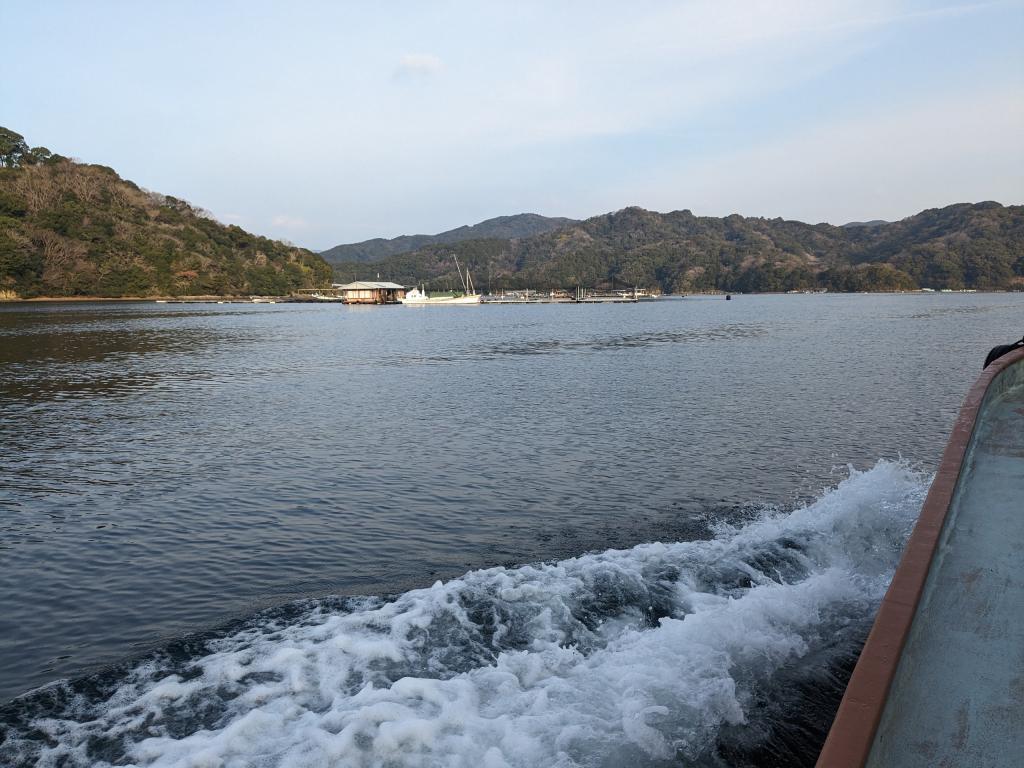
Navigation for the first 10 km
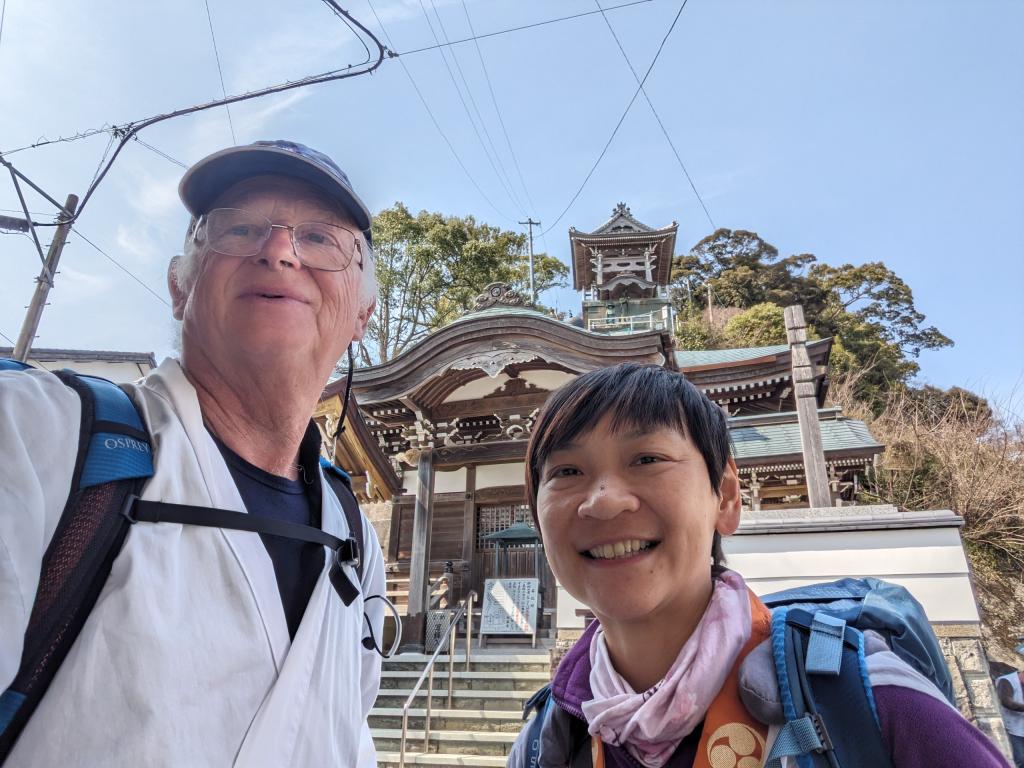
Visit to the small Susaki temple with Joanne
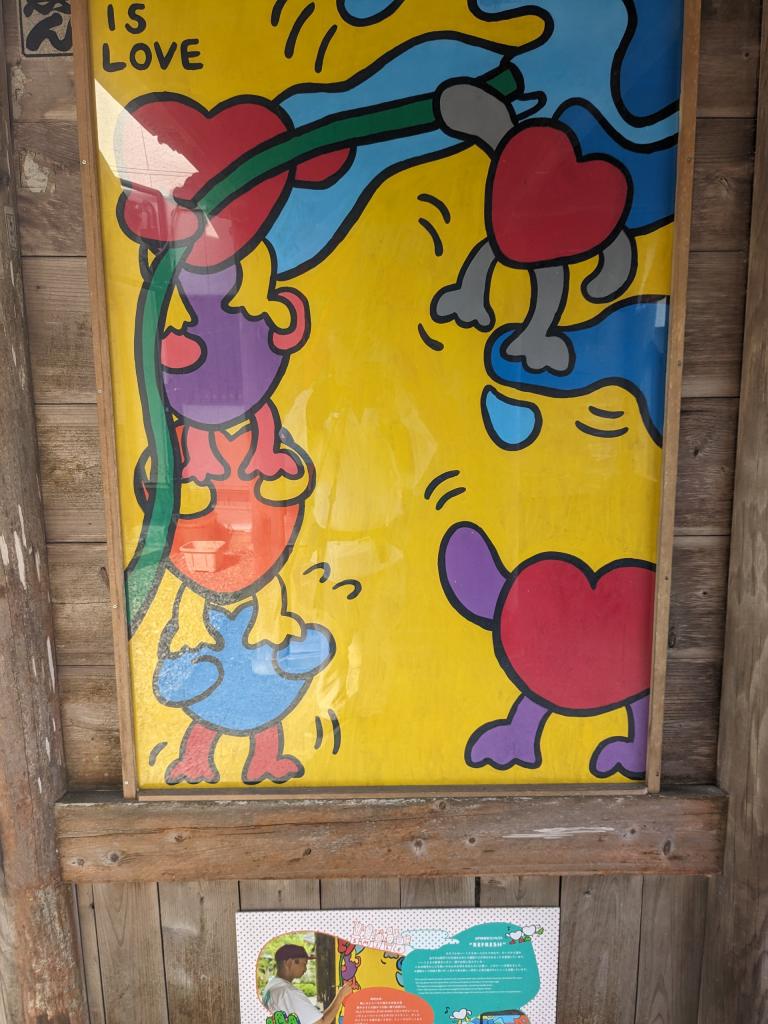
Temple 37
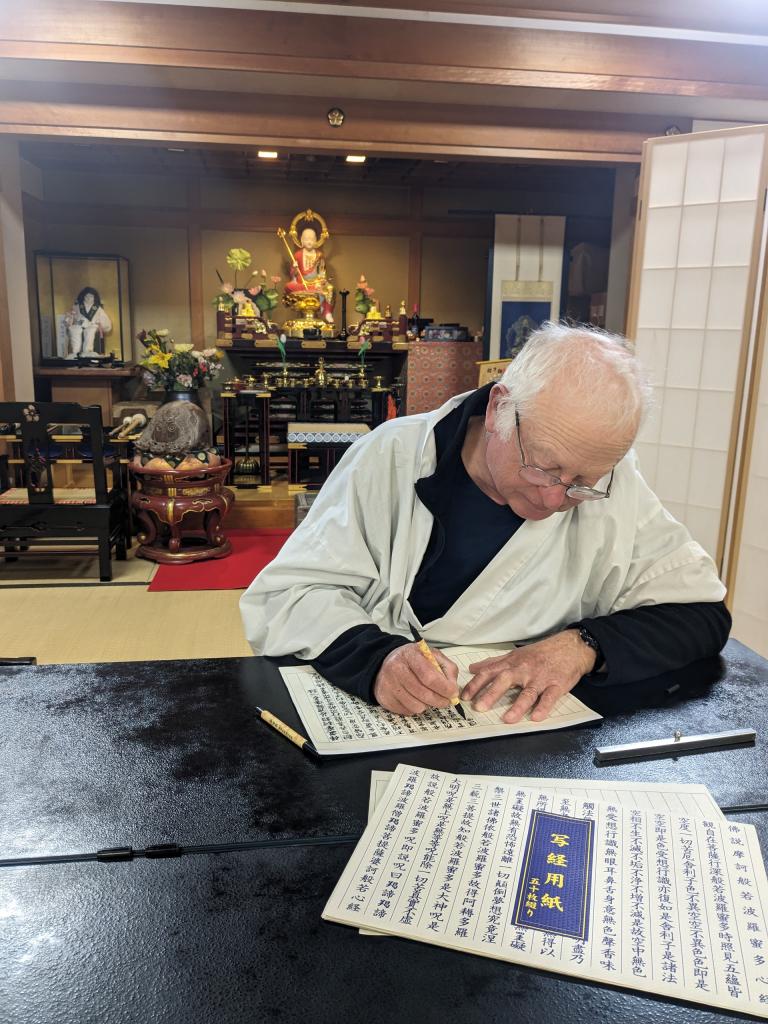
Sutra writing
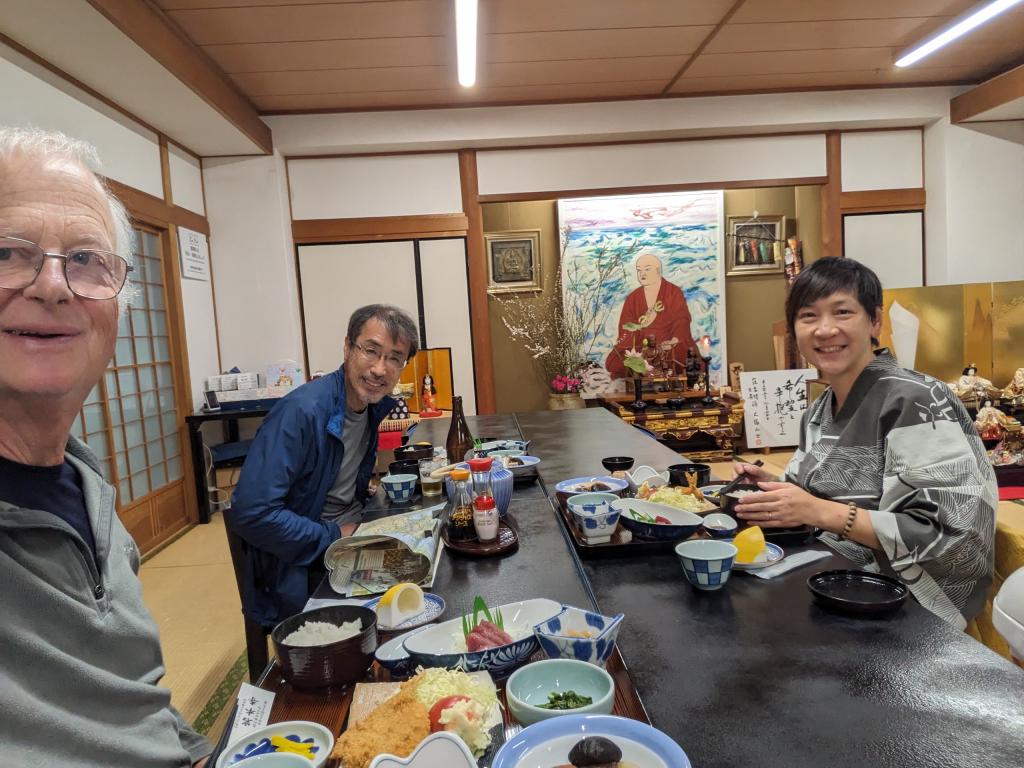
Dinner at the temple with Fukuda and Joanne
Day 19: I sleep in temple 37.
Today, I found 3 other Henros on the boat: Keito, Joanne and Ootani. The motorboat zigzagged between 2 islands for about ten km in the right direction. I saw a lot of aquaculture facilities. Then I walked with Joanne, the other two walking much too quickly for me, to the town of Susaki where we found a good little restaurant frequented by people from the neighborhood. Noodle and fish soup. We had time to visit a small temple which is on an additional list before taking the train. We went down 5 km before the destination to finish walking.
Ossi for his part left at 4 a.m. and walked these 55 km until 4:30 p.m. Well done !
In the temple, I started by copying out a page of sutras. It takes an hour, then bath and meal. After shifting our plates, we spread the maps on the table to find accommodation for tomorrow. By studying all the parameters, it will be Ōkinohama.
But the day will begin with a ceremony in the temple at 6 a.m.!

Illuminated bamboos

The big bell in the night
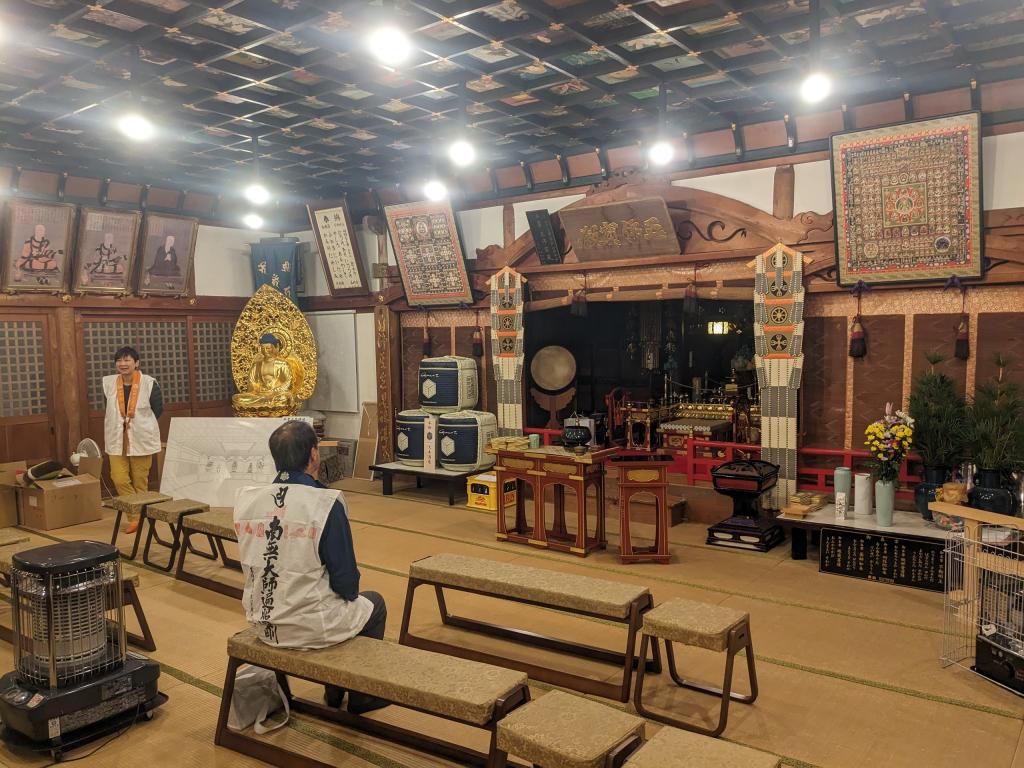
Main temple at 6 a.m.
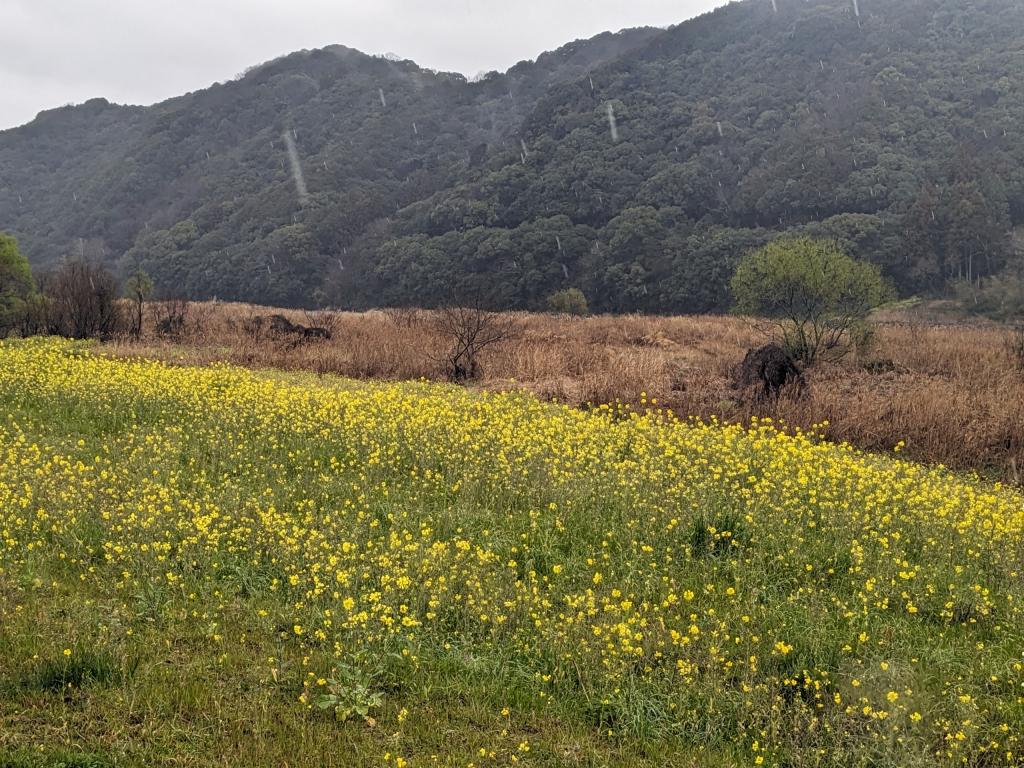
A yellow spot in the landscape: a field of rapeseed
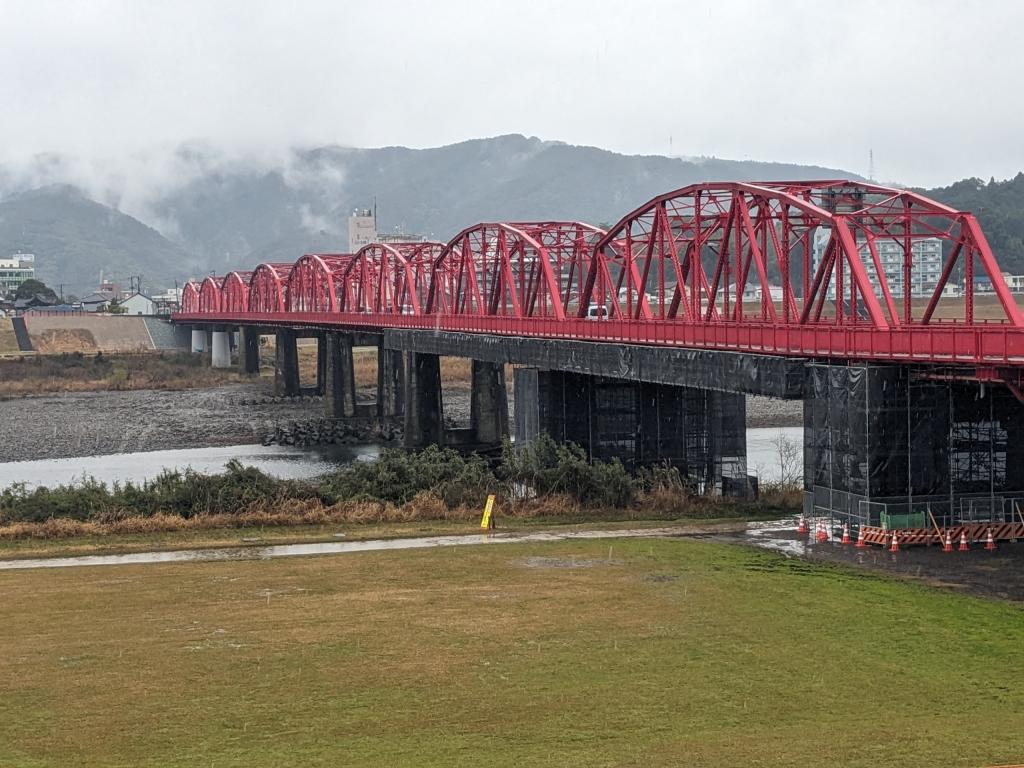
Shimanto Bridge
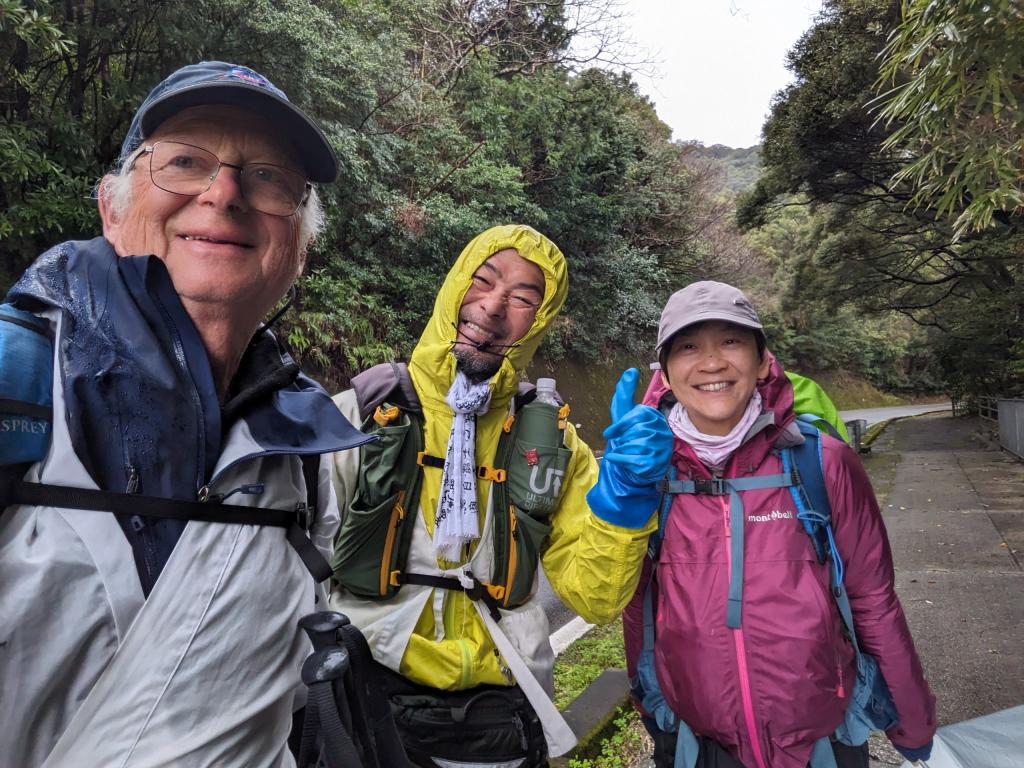
I meet Chu again, the Henro runner who wants to run the complete circuit in 25 days. Today he is all wet!
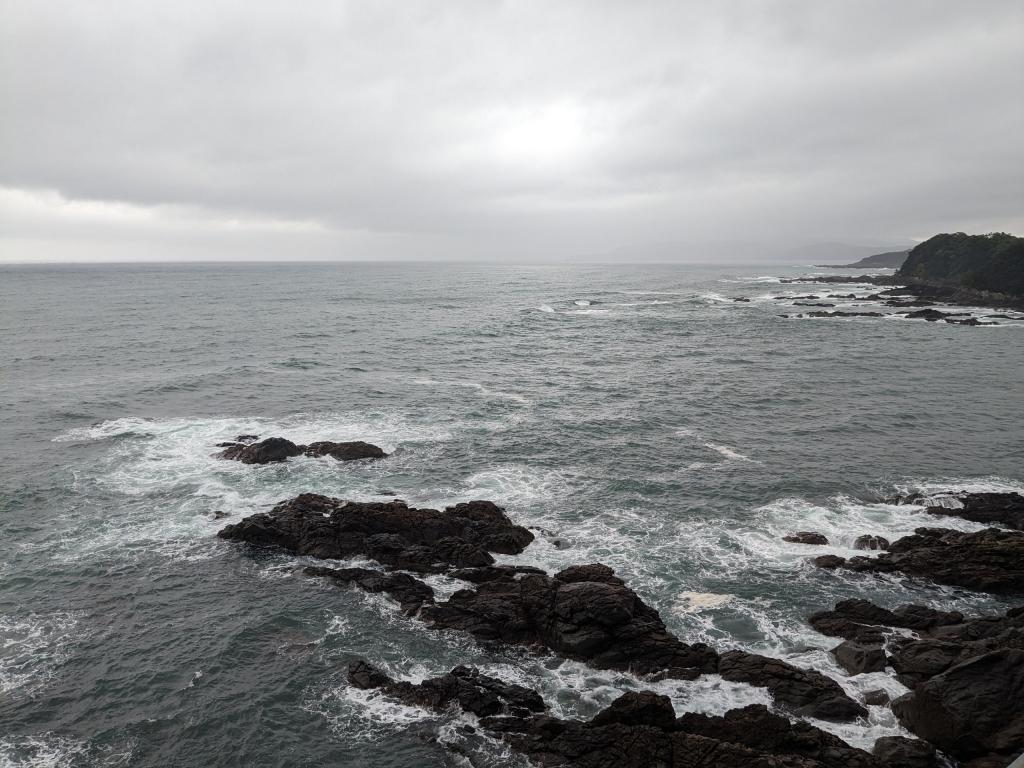
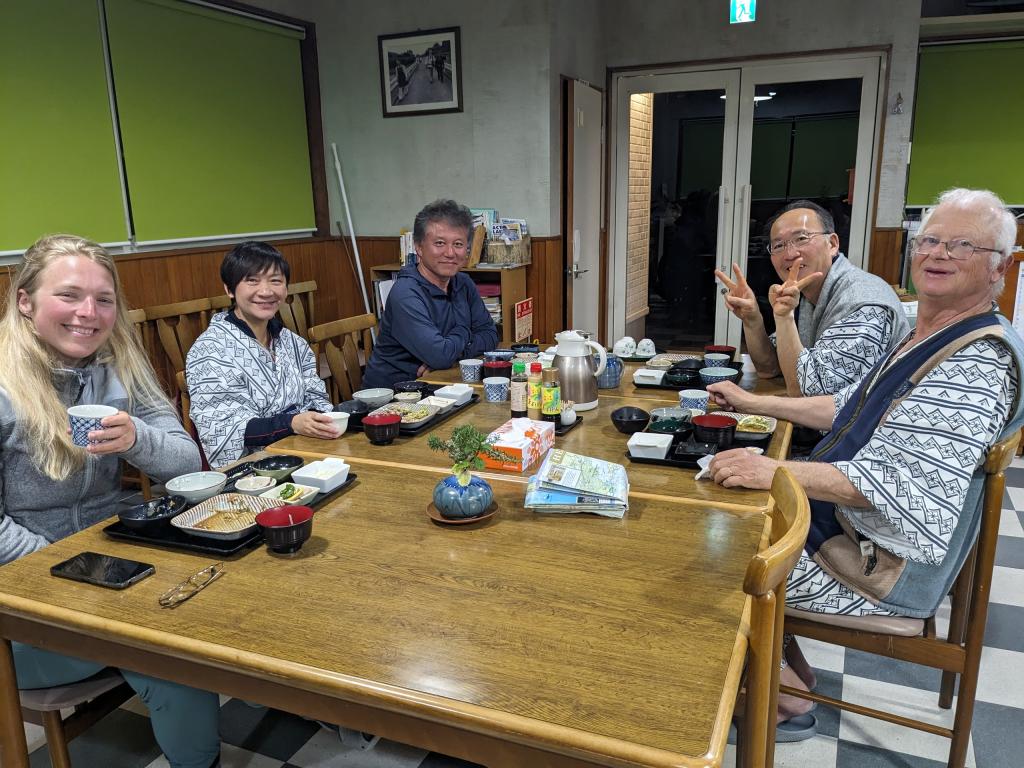
Ōkinohama: Virginie, Joanne, Koba, Aki and me
Day 20: night in temple 37
Temple 37 is illuminated at night. The buildings are highlighted by displays of light. But the originality of this temple is the artistic touch. This evening, bamboos are placed at the bottom of the steps of the main staircase. The stems are pierced and illuminated from the inside. Further on, another assembly of illuminated bamboos is arranged vertically. All of this gives the place a magical touch.
At 6 a.m. this morning, we are at the morning prayer ceremony. The officiating monk says a few words to us, then sits down to chant sutras punctuated by bells that he holds in his right hand. For new sutras, he taps a small bell. We are invited to take turns adding a little incense to the altar. The officiant begins a final salvo of sutras covered by the sound of percussion on a large drum worthy of an artistic show. First small, quick blows, then stronger blows until blows with all his force. He ends by telling us words of kindness for the rest of our journey. I still admire the ceiling decorated with multiple drawings for which this temple is famous.
It is almost 7 a.m. when we go out to have breakfast served by the nuns. Today it's pouring rain. Our train is at 10 a.m. We can still enjoy the setting of this beautiful, welcoming temple.
At noon, our train stops at Shimanto, famous for its bridge. Joanne and I walk the 2 km to put it in our phones, then return with a pastry stop and a noodle soup break. A bus drops us off 20 km further so that we can walk the last few km to the Henros house in Ōkinohama. I meet again Chu, the Henro runner, who wants to do the tour in 25 days. Today he is all wet.
At dinner, I met Virginie from Flemish Belgium and two Japanese people, Aki and Koba. They all have interesting stories that liven up the meal. Tomorrow, everyone leaves on foot for 20 km towards temple 38 which is the furthest south of this loop with drier weather. Then, the paths diverge to go back towards the northwest. I will return to today's accommodation which will allow me to carry a lighter bag.
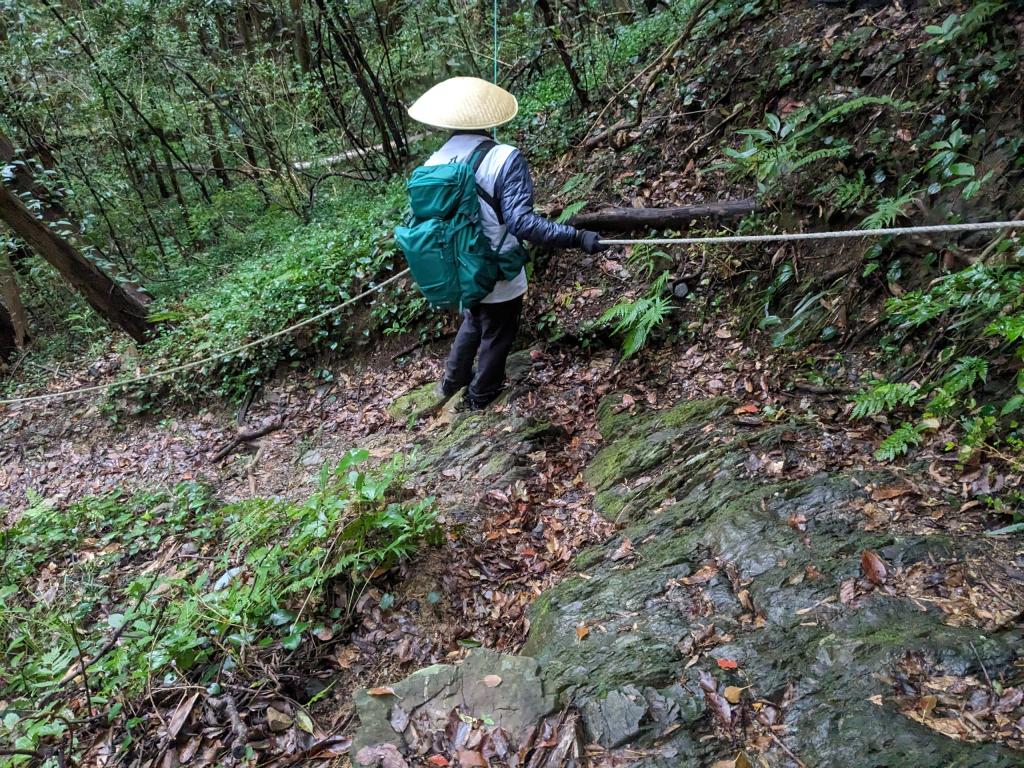
Acrobatic descent of Yoshjya

Crossing a bamboo forest
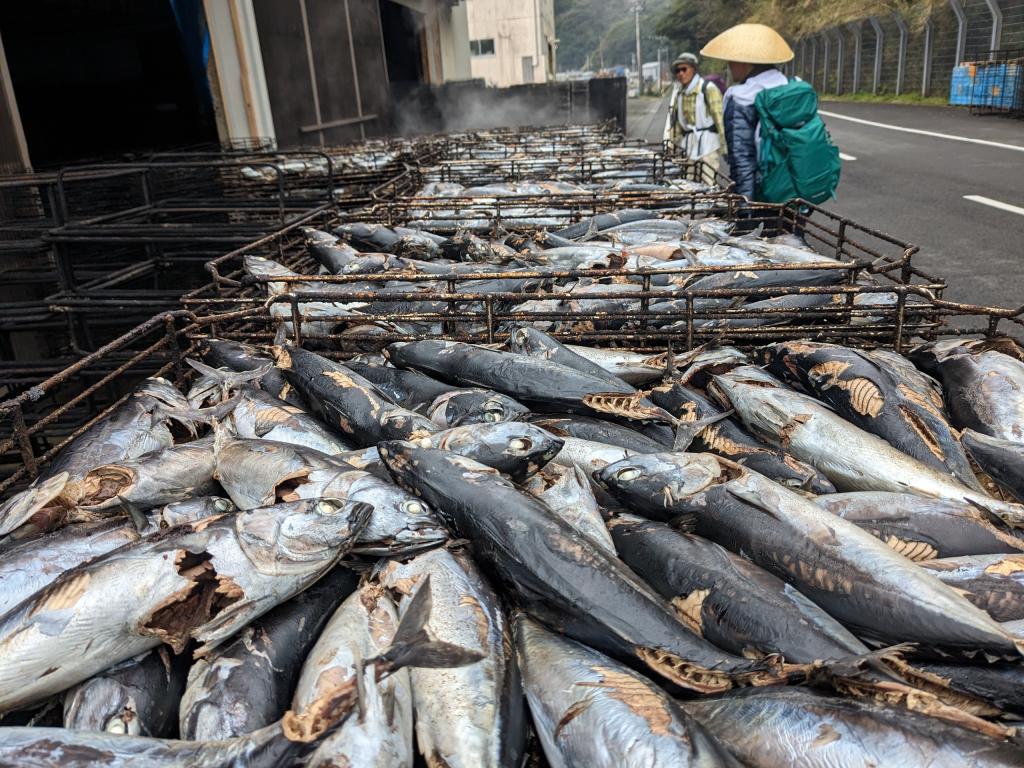
Drying fish
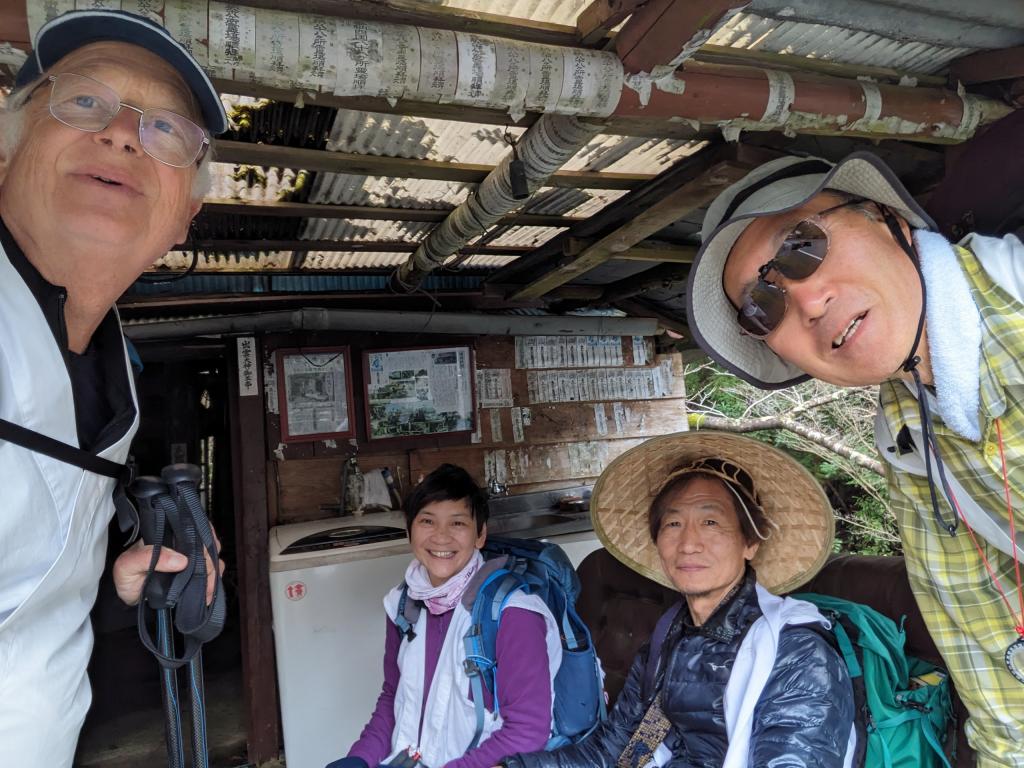
Lunch break in a Henros shelter

Arrival at the southern tip of Shikoku
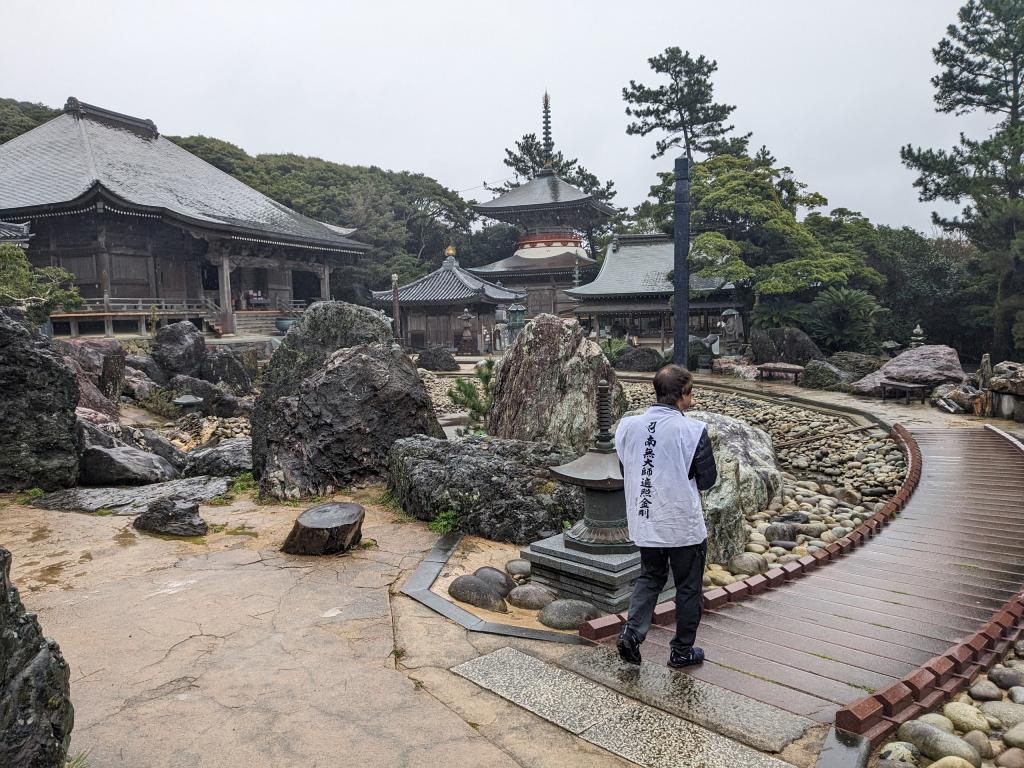
Temple 38
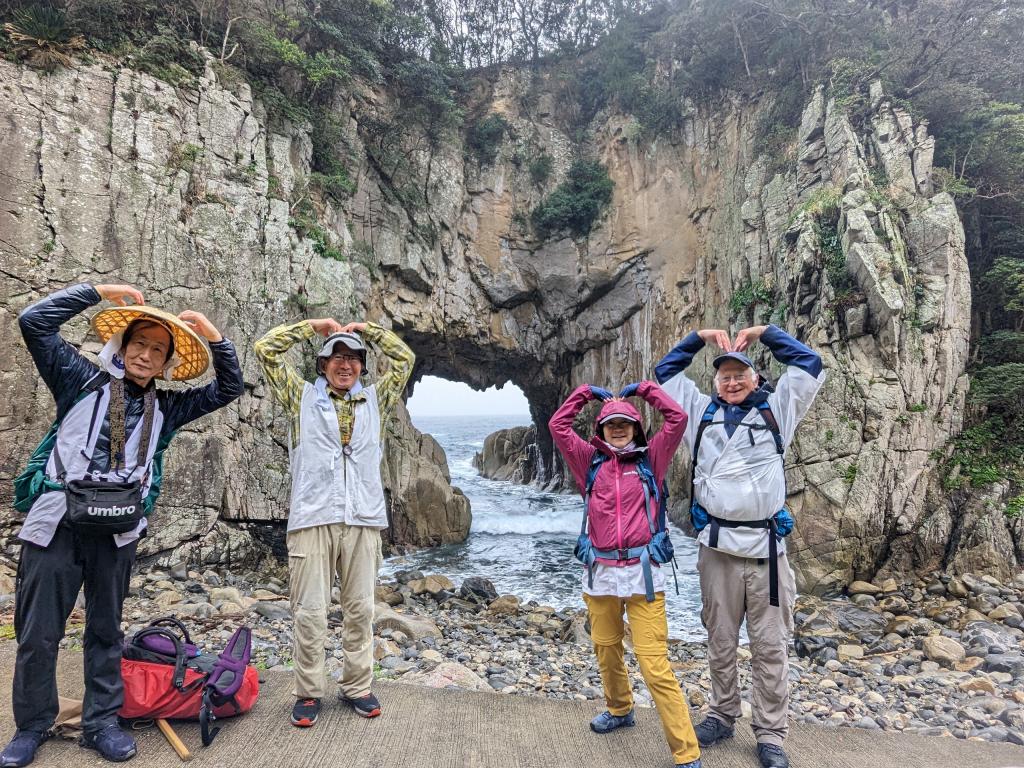
Yoshjya, Aki, Joanne and I in front of the heart-shaped cavity
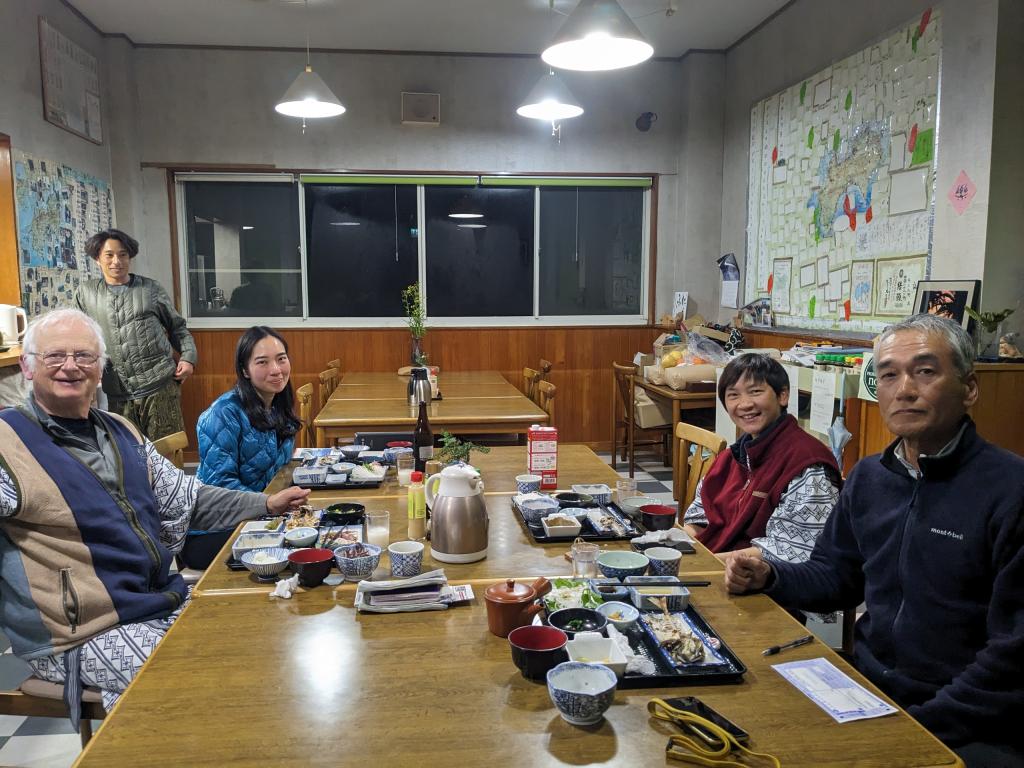
Dinner with Akihiko, Joanne and Ootani
Day 21: the southern tip of Shikoku
All the Henros of the day leave for temple 38 in dispersed order. Quickly, a homogeneous group reformed with Oshija, Aki, Joanne and me. We take videos of difficult river crossings, steep slopes and a gate without a wall. In a small shelter in Henros, we have lunch with our rice balls.
The rain surprises us when we arrive at the southern tip and temple 38. We take a final pose in front of the heart-shaped cavity and Joanne and I take the bus back to our starting point.
This evening, around the Ōkinohama dinner table, I find Ootani who walks very quickly his 30 to 35 km per day. Akahiko is a young Japanese girl who rides her bike in reverse. We exchange our good references in English, but also in French. Sleeping in temple 37 will be a good solution for her.
For my part, I will leave Kōchi prefecture to enter Ehime prefecture. I am not sure to this day that I will be able to complete the tour with the fourth and final prefecture of Kagawa in the two weeks I have left. The steps envisaged are:
. Thursday T39 Sukumo already booked
. Friday T40 Uwajimo
. Saturday T41-43 Uchiko
. Sunday-Tuesday T44-53 Matsuyama
I will have 8 days left.
The 4 prefectures and practice locations
. Tokushima, the spiritual awakening
. Kōchi, ascetic practice
. Ehime, enlightenment
. Kagawa, Nirvana
Arriving today at the southern tip, I had the impression of arriving at a turning point in my journey. It is not the end of the end of the earth like in Fisterra at the end of the journey to Compostela. It's a turn to discover different aspects by returning towards an end which is close to the beginning and perhaps thus starting again to turn around this wheel which no longer wants to stop. Like the cycle of life which passes from birth to finiteness to better reincarnate... Unless we manage to stop the cycle of reincarnations by reaching Nirvana at the end of a holy life.
My fear is that Nirvana will be very boring and for the moment, I prefer to return to earth to relive beautiful lives and share good times with humans. Despite the tribulations of our humanity, life is still very beautiful!
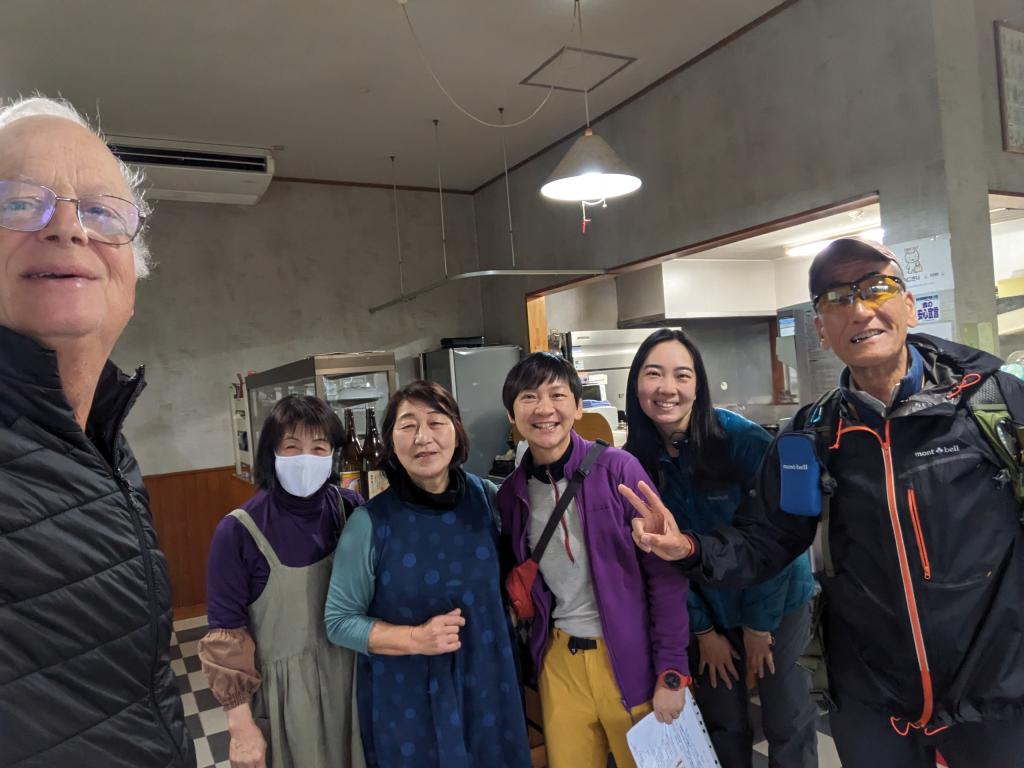
With our landladies
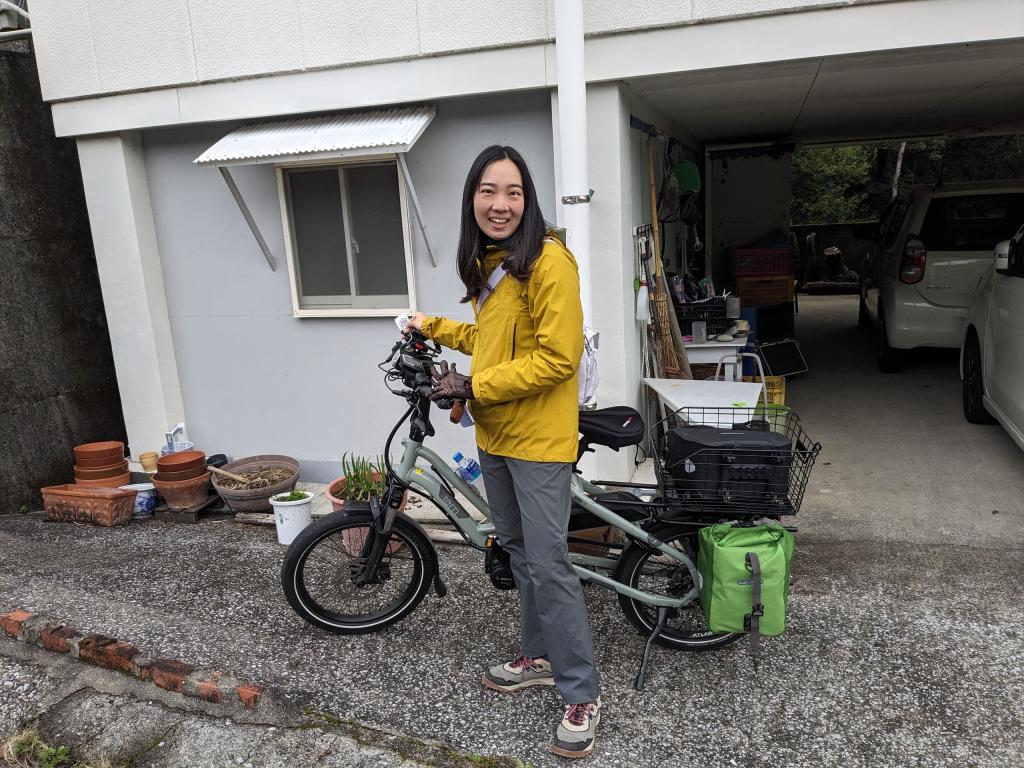
Akihiko is cycling for a 100 km program today
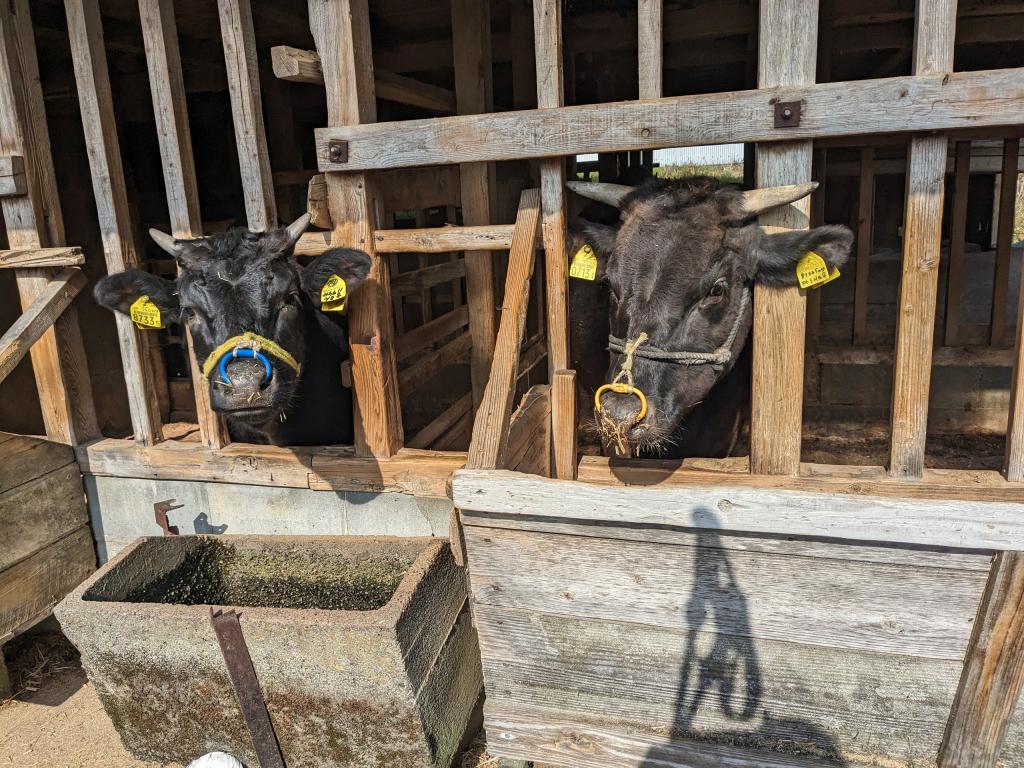

With Joram from Switzerland and Joanne
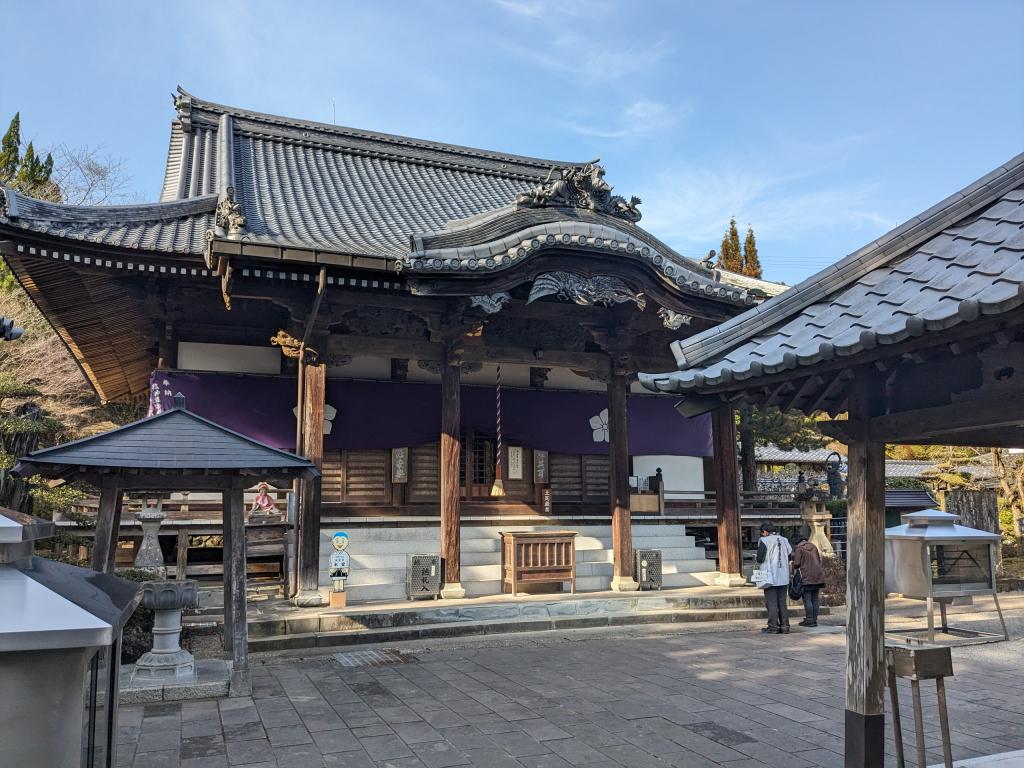
Temple 39
Day 22
The path winds through the countryside between the reliefs, then gains altitude with a historic path through the forest. On the way down, we meet Joram, a very young Swiss retiree. At 2:30 p.m., we finally found a table that served us a mixture of vegetables and pork on a hot plate in the middle of the table.
I walk at exactly the same speed as Joanne. We are often out of step, but we do not lose sight of each other. Knee and Achilles tendon pain threatens her and could hinder her future progress.
After visiting temple 39, we find a visitors car which takes us the last 7 kms.
I am staying at Manabe in Sukumo. Joanne went to a traditional hotel. At dinner, I am the only pilgrim. I miss the big tables.
Certainly, the small dishes on my table are abundant and of good quality. The room is comfortable and even has a full bathroom. The wifi works perfectly. But the comfort leaves me indifferent
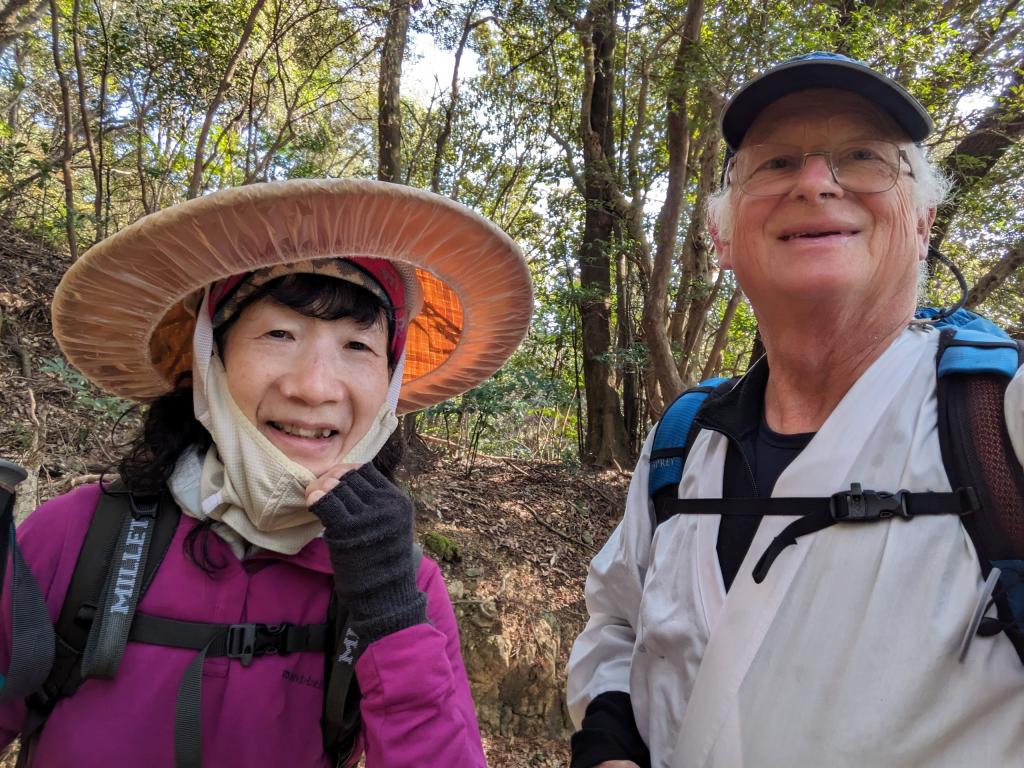
With Yuko
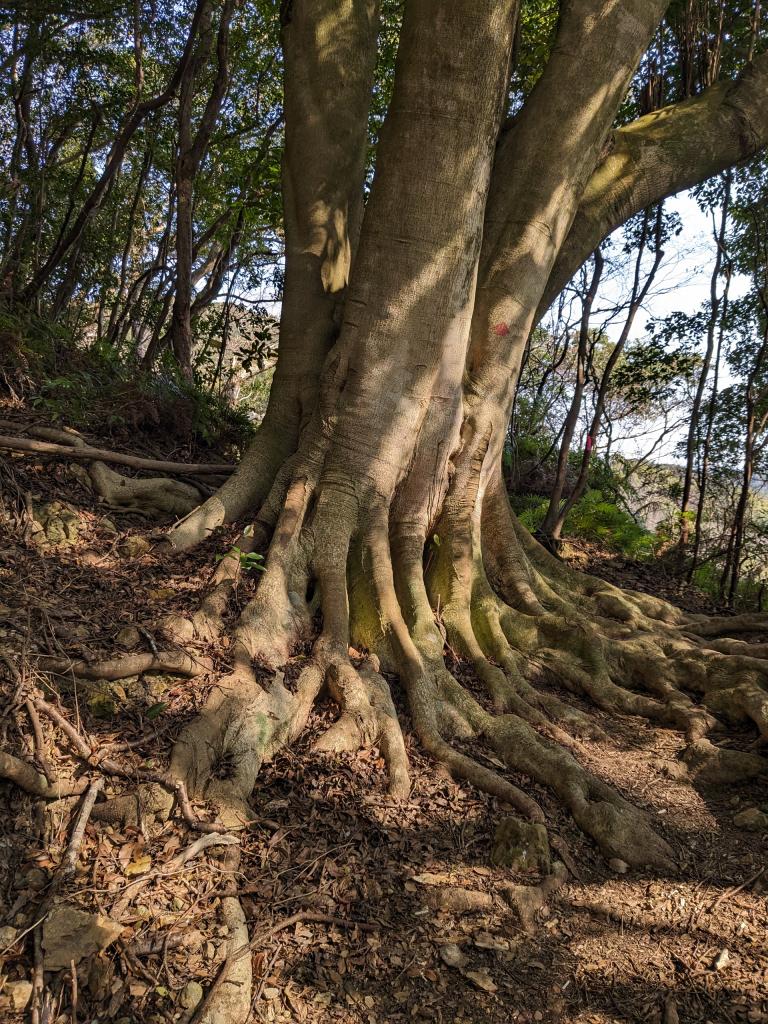
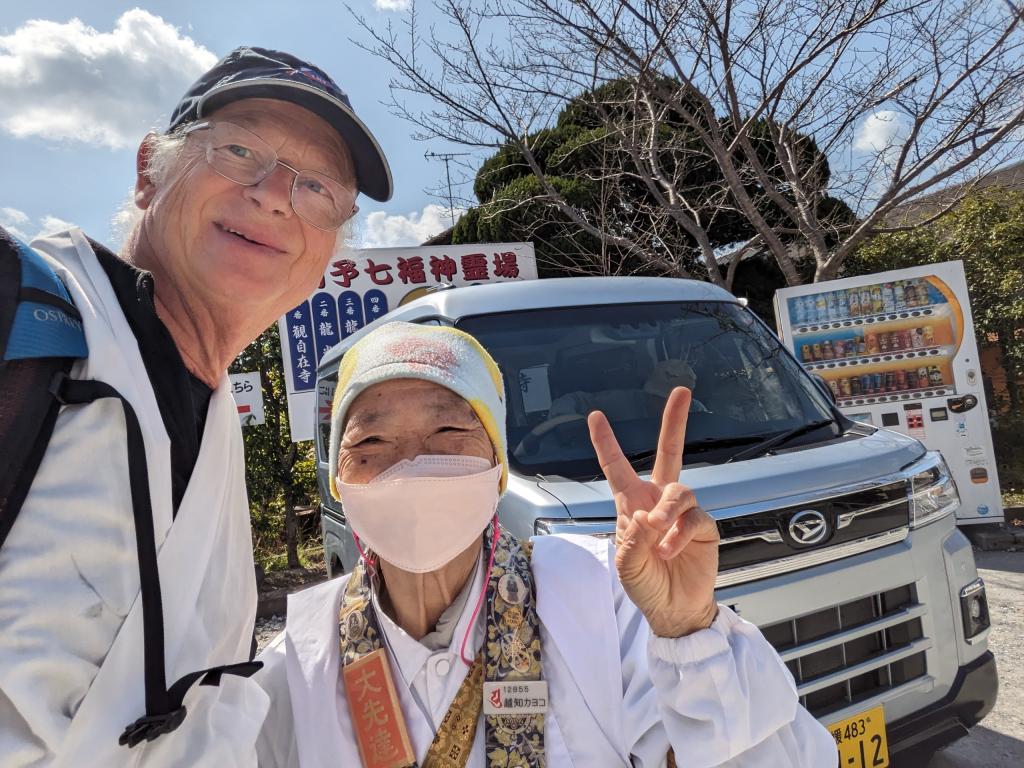
With Hiroyuki
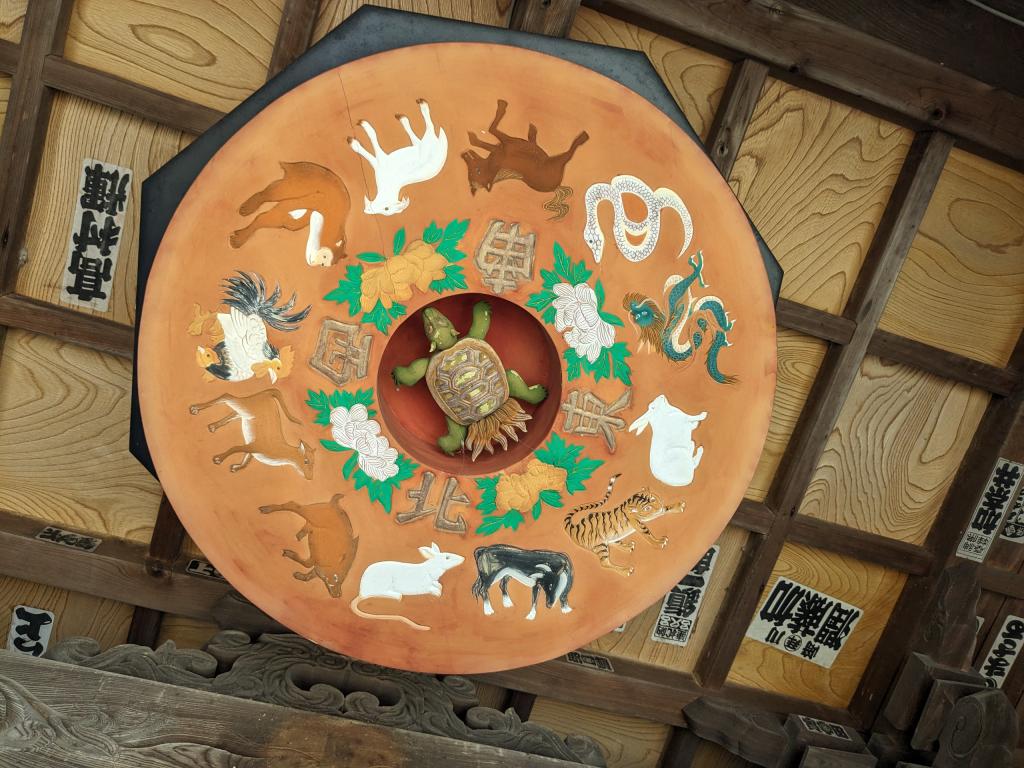
Under the entrance to temple 40
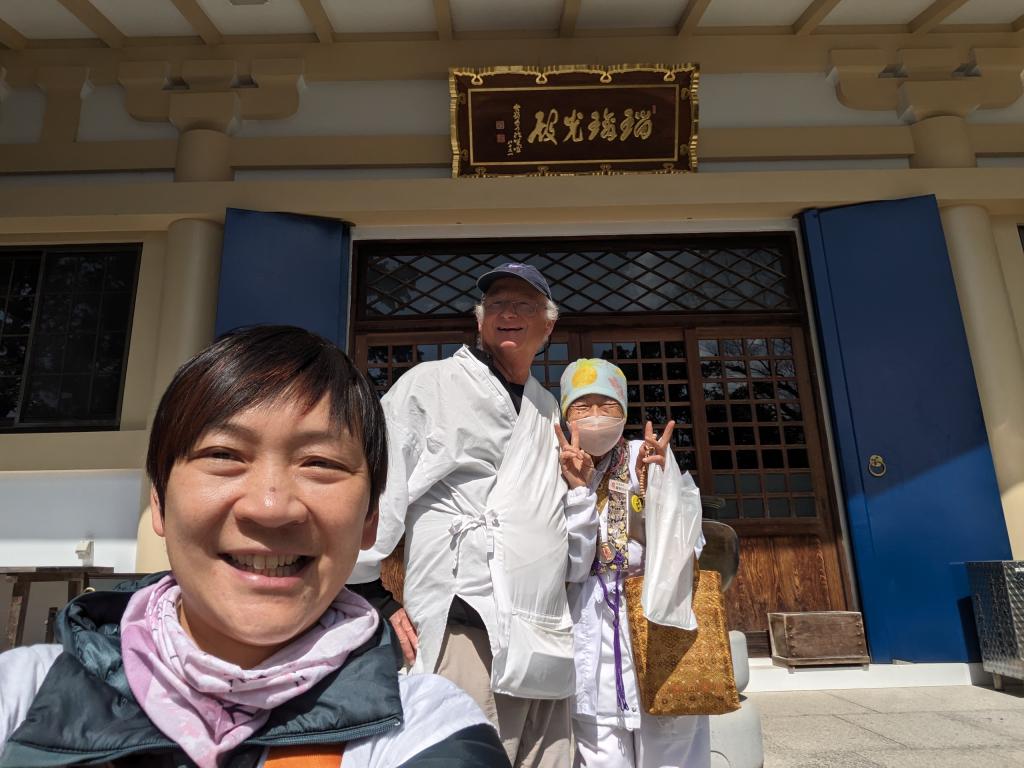
With Hiroyuki.

Le temple 40
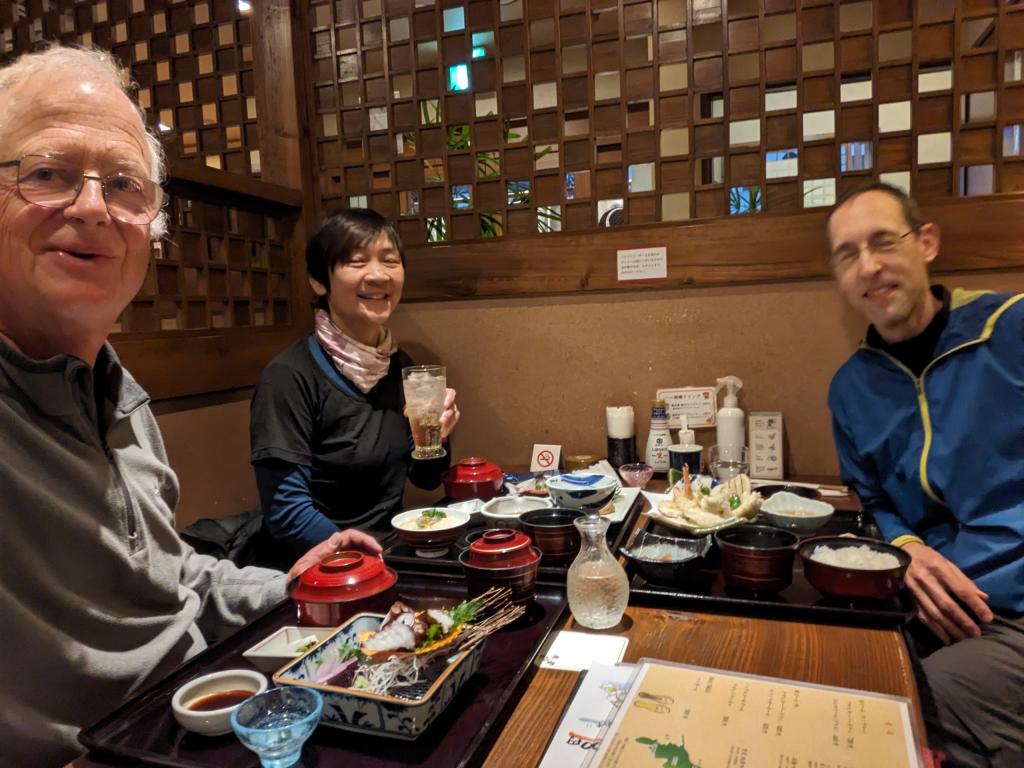
Restaurant in Uwajimo with Joanne and Joram
Day 23: I hitchhike
A message from Joanne tells me that she can't walk today. So I set off alone on a mountainous route which marks the separation between the two prefectures of Kōchi and Ehime. I pass Yuko who is impressed by my rapid climb. She meets me at the top where she takes a photo break with me.
After my walk this morning, it is 11:15 am and I should reach temple 40 at noon, it is still 10 km away. Arriving at the bus stop, this one has just passed fifteen minutes ago and the next one will pass in an hour and a half. What to do ? I try to hitchhike by trying a Japanese posture. A few cars pass by and chic, a small van stops. The driver doesn't seem to understand English, but she is dressed all in white. I think she understood that I want to go to the temple. And here we are on our way.
Hiroyuki, my driver is actually the owner of Kayo-chan House, a house for Henros between temple 45 and 46. She guides me around temple 40 which she knows well. I follow her in the rituals specific to this temple.
On the right side building, we turn clockwise stopping at each engraved stone which bears the number and name of each temple. If we didn't have time, doing this tour of the 88 engraved stones would be considered the equivalent of a complete tour of the 88 temples. In front of a series of Buddhas, we also have to pour water on the one that corresponds to our zodiac... And another statue of a frog with its young on its back...
I find Joanne who came by the bus and to whom I show some particularities that I have just learned from Hiroyuki.
In the second bus which takes us 40 km towards temple 41, we find Joram whom we get to know better.
Getting off the bus at Uwajimo, we experience lunch in a supermarket. The quality is decent, but I definitely prefer to be served by people than by machines.
This evening, the Oriental Hotel in Uwajimo is hosting me in the center of this medium-sized city by the sea where pearl oysters are cultivated. I don't go out and walk to the castle perched on a hill, but we go to the restaurant next door. I chose the pulpo in memory of the dishes I enjoyed in Galicia on the way to Santiago de Compostela. I pout at the Japanese version which is raw and which I find rubbery. Fortunately there is sake!
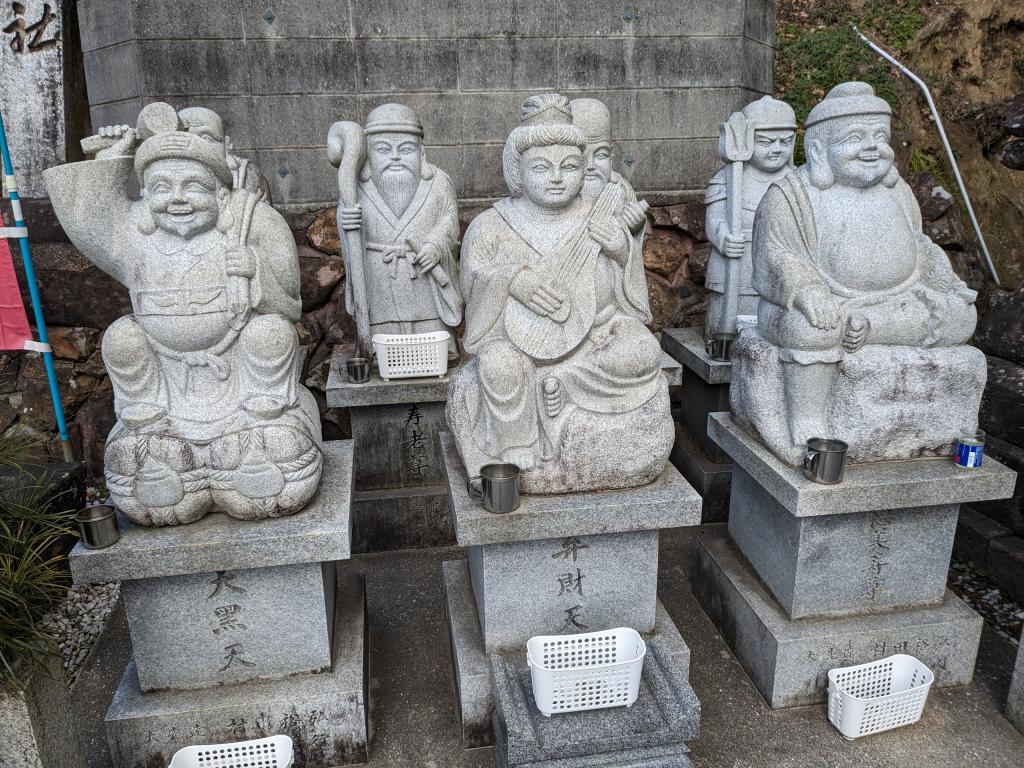
Temple 41
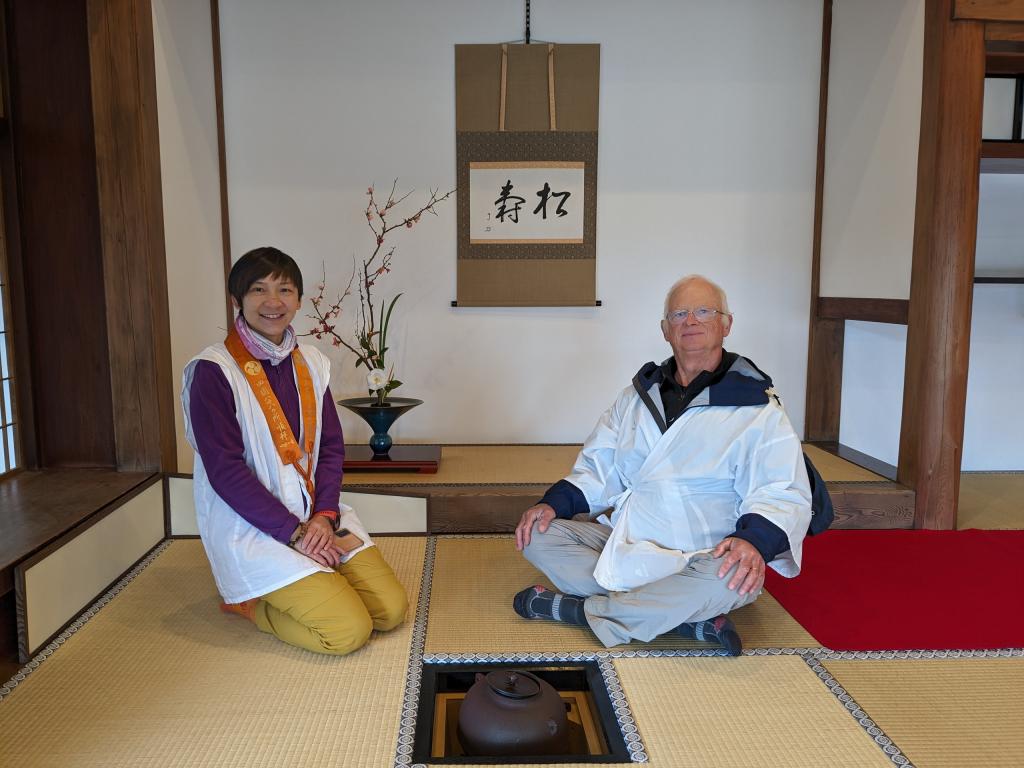
In the temple 42
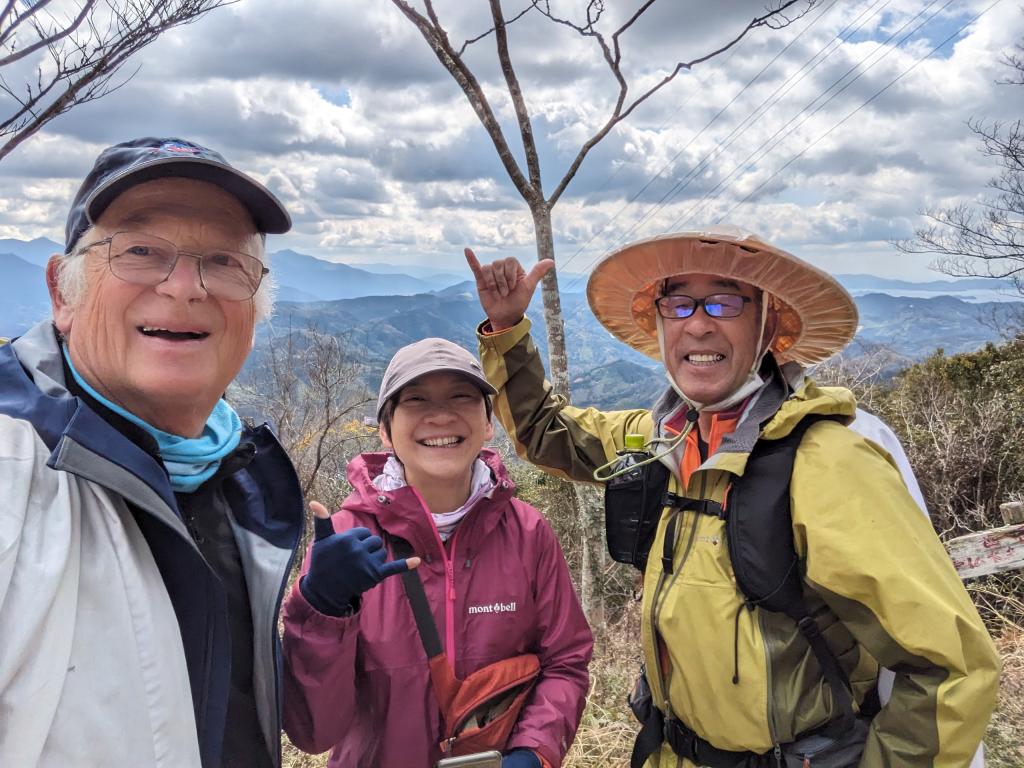
At the top of the mountain with Yuchimi
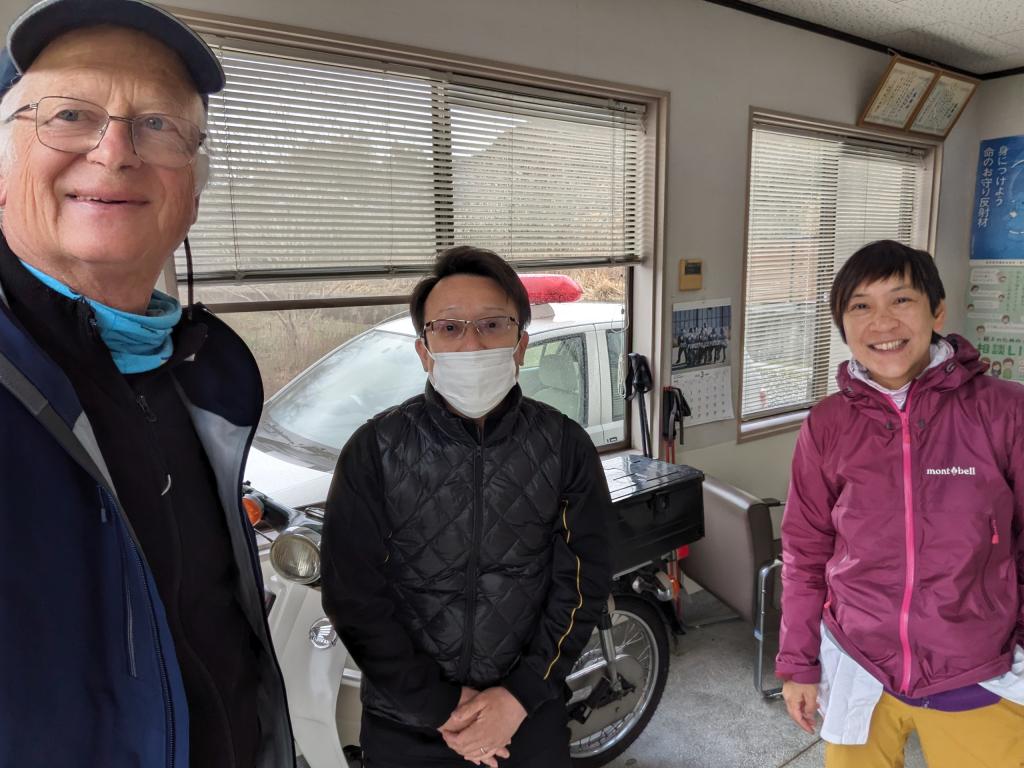
Why am I at the police station with Joanne?
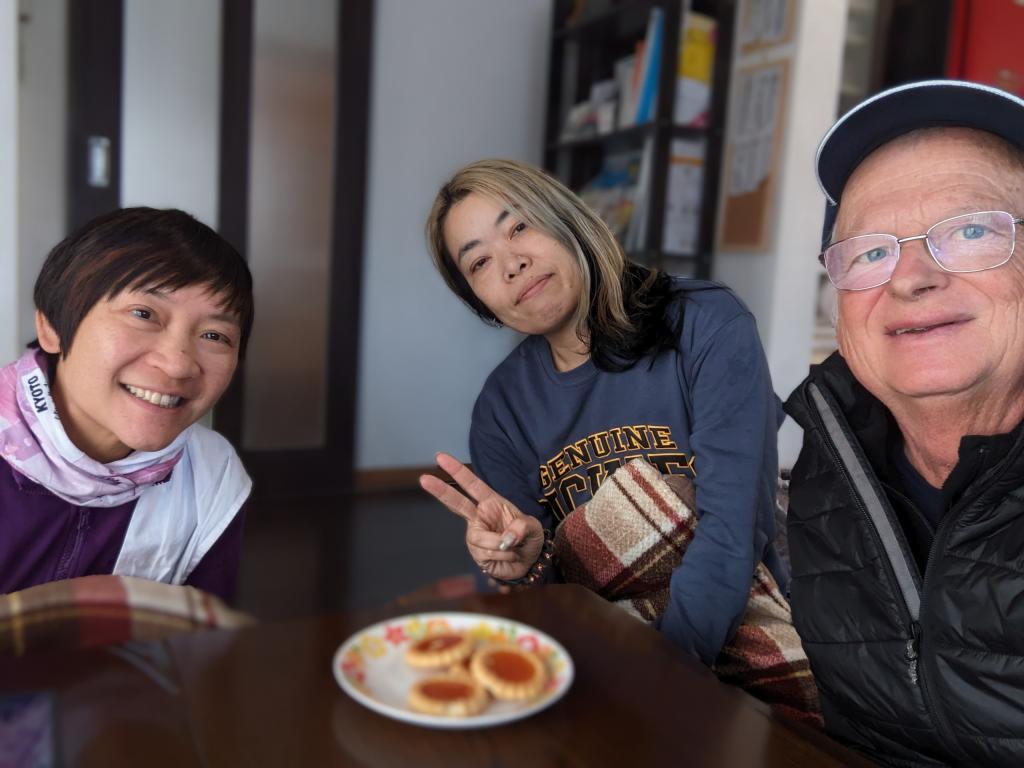
With Kyoko, our landlady
Day 24: why am I at the police station with Joanne?
The day starts normally though. With Joanne, I take the bus to visit temple 41. From there, we have a few km to arrive at temple 42. A welcoming committee awaits us dressed all in yellow. The members are all smiles and encourage us to go to the places of devotion. On the way back, the group gives us a small bag with a tangerine and a cake and a cup of tea and invites us to sit in the large reception room of the temple. This exceptional place radiates us with its good spiritual waves. I didn't really understand the role of the group who didn't speak English. Probably young people who were testing their abilities in hospitality.
A tough climb now awaits us with ropes on the most difficult section. We also have to get around a landslide with a ladder. Finally we reach the summit with Yuchimi, another Japanese Henro. On the other side, the cold and a light shower caught up with us. We are happy to reach our accommodation. But it's still closed...
Teachings of Buddhism
1. Look upon others with kindness.
2. Smile to others when you meet.
3. Speak to others with kind words.
4. Offer to others those free services you are capable of offering.
5. Offer your heart to others.
6. Surrender your seat or similar location to those that could better use them.
7. Offer your own lodging to others in need.
And why not stay warm in the police station next door. We open the sliding door of the station: no one, but a coffee table and two armchairs, facing each other, hold out their arms to us. Without waiting, we sit down as unconscious accomplices and take out our food, wondering how the police will react when they notice our intrusion. Time passes. All of a sudden, a noise comes towards us. A door opens and a police officer appears...
Is our stress at its peak? I think both of us are a little surprised to find ourselves caught in the act. But at the same time, we feel protected by Kōbō Daichi with our white jacket. But in fact, we put it away so as not to dirty it with our meal...
The policeman bursts out laughing when he sees us making ourselves at home. Joanne, who speaks a little Japanese, tries to explain that we have reserved the Henros house next door, that it is still closed, that it is raining and cold. Nothing works.
While continuing to laugh, the policeman goes to get us tea, makes conversation and jokes around this house in Henros which is the safest in Japan since it is next to the police station. He agrees to be in a photo with us, then he calls the owner and finds us a key so we can enter our reservation. The house is still cold. Joanne and I are already starting to miss the warm warmth of the police station.
The Umeya house is very nice. In the large room, a beautiful kitchen, a large table and a coffee table. Kyoko, our dedicated landlady, takes all her time to help us plan the following days.
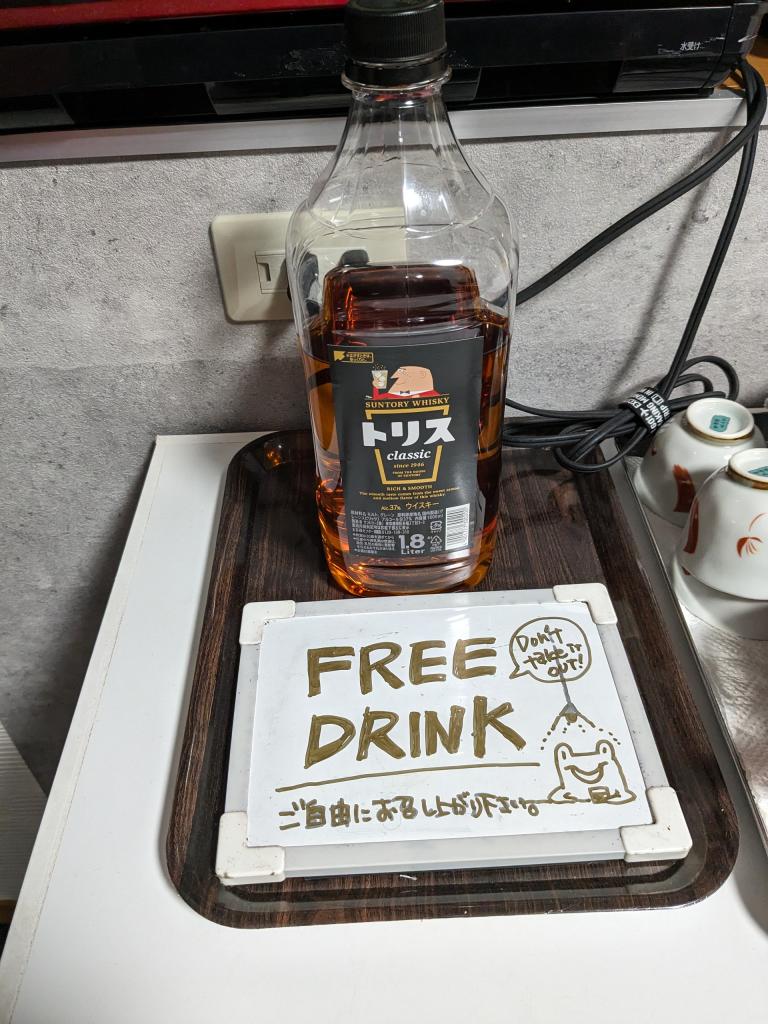
For me it was fruit juice

Dinner at Umeya
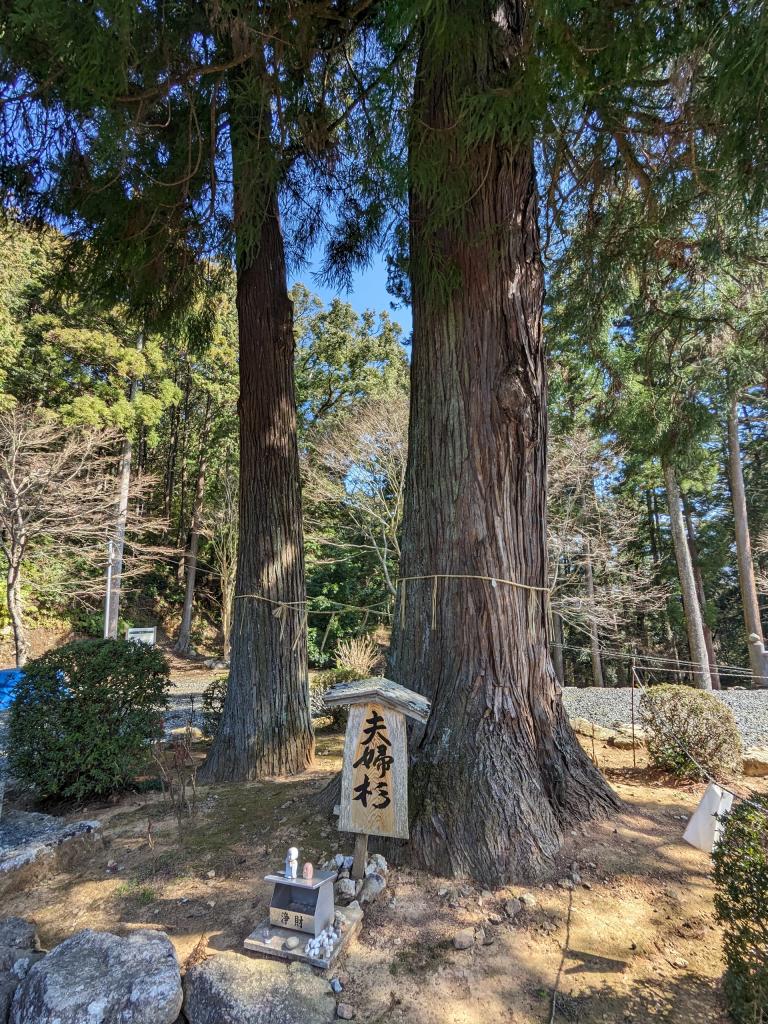
Temple 43
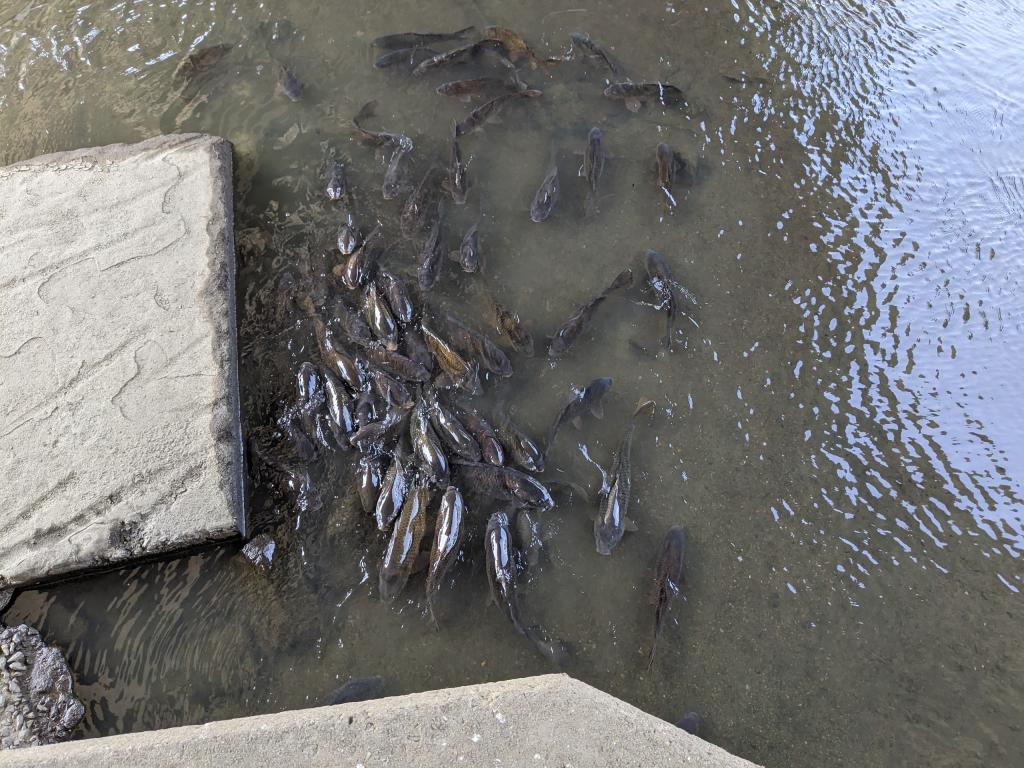
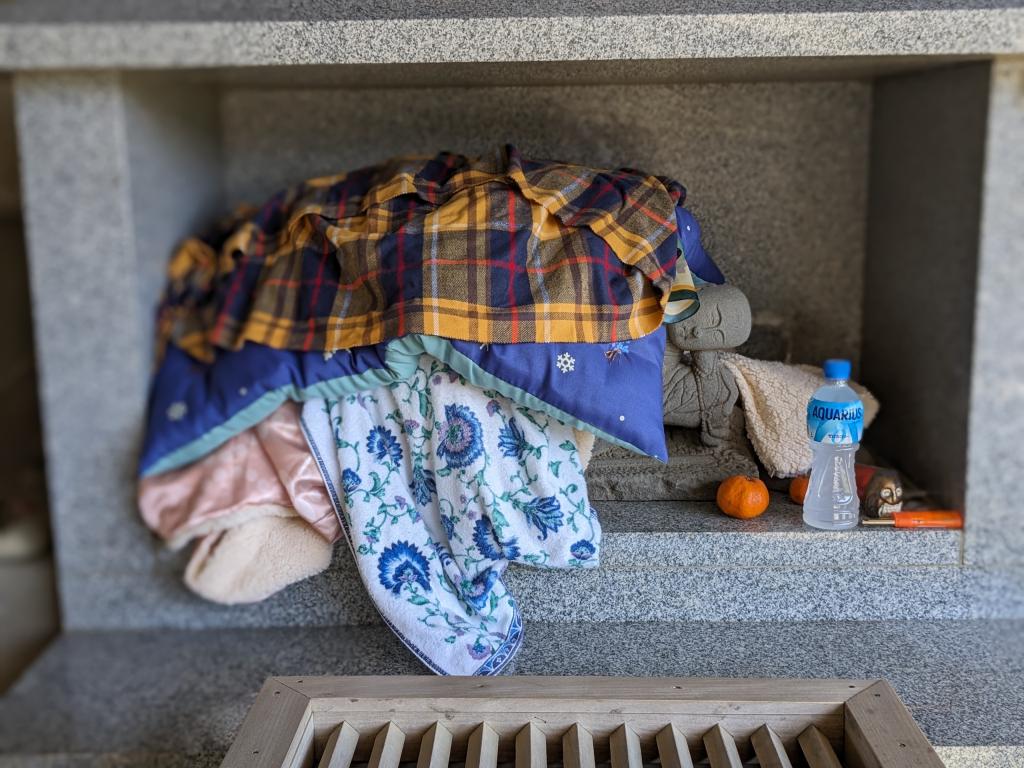
Day 25: sleep under a bridge
The day starts normally though. It's cold, but beautiful. A stress-free program awaits me. I have accommodation booked for the next night not too far away which will allow me to visit temple 43 and other places of devotion to Buddhism. But this is not going to go as planned.
In the morning, the Umeya house tries to retain us with its charm. Everything is perfection. On the large table, we can spread out the delicious meal dishes. The underside of the coffee table is heated. A thousand little touches make it a pleasure to be here. The atmosphere is warm and everything is well thought out for Henro. And Joanne's good humor is a delight. Our program for the day allows us to enjoy a little more of this exceptional moment tinged with melancholy as the end of the trip approaches. We leave entries in the house diary and check the quality of the shots. The episode at the police station did not traumatize us!
At 9 a.m., Joanne and I are finally on the way to temple 43, 4 km away, where my attention is attracted by the symbolism around the trees and fish. Taking a mountainous path, we arrive at Unomachi to take a bus. While waiting for him, we change the day's program by planning to go today instead of tomorrow to Matsuyama, the large city from which it is possible to visit the following dozen temples. To do this, you have to cancel the reservation already made, which I had not yet done until now on the way to Shikoku, and find new accommodation. Canceling a reservation is unpleasant because the host has organized to accommodate and we may have prevented someone else from booking. Finally, it's done.
Reserved is not easy for me because I don't speak Japanese and my Japanese eSIM card doesn't allow calling. After 5 p.m., I start to scout the bridges to find one without too many drafts...
But back to this afternoon. Objective number 1: visit Kōbō Daichi who slept under the Toyogabashi Bridge. This path of 88 temples exists because Kōbō Daichi (774-836) deepened his knowledge of Buddhism there and founded temples around the island of Shikoku. Legend has it that he is not dead and is only sleeping under this bridge which is under our road. This is why you should not hit this bridge with a stick so as not to wake it up. By extension, the pilgrim who is in the know does not use his walking sticks on bridges! So we visit him. It is well protected from the cold by blankets. I assist Joanne who recites the sutras. In the river under this bridge, many fish swim constantly as if to keep Kōbō Daichi company.
For now, everything is okay. We enjoy noodle soup with chopsticks. As Joanne says: you improve, but... There's still splashes to catch those slippery noodles!
Second objective with a short train ride, tourism in Uchiko, a typical small town with old houses and old trades. We stop at a coffee shop to enjoy a cake and a coffee in front of a pretty little pool of water summarizing the Japanese art of living. A new moment of serenity that should not end. Then return to the train for Matsuyama. It's after 5 a.m. and I don't know where to sleep yet.
My son Vincent is full of concern when I tell him about my little problem, that I am looking for a bridge without too many drafts. But Kōbō Daichi watches over the Henros. When leaving the station, the hotel terminal still has one 'smoking' room. I'm not being choosy and I'm booking it for two nights and I'm very happy to be able to visit temples 44 and 45 tomorrow morning with Joanne, my friendly guide interpreter without whom everything would be more complicated for me.
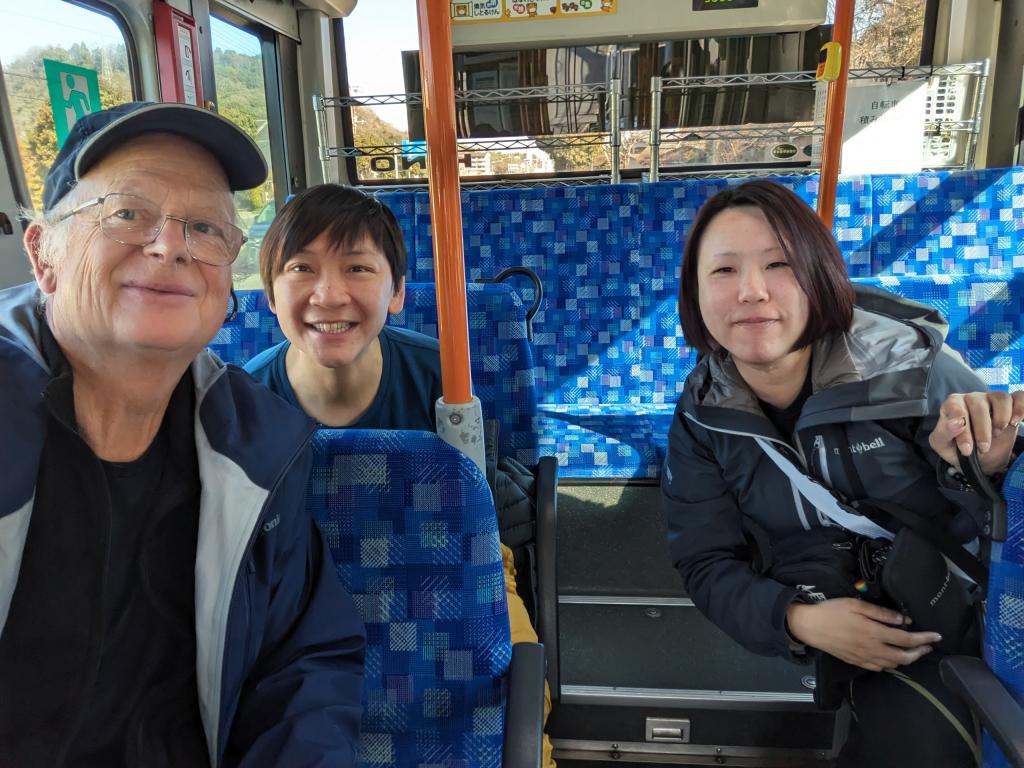
On the way to temple 44 with Kimmy
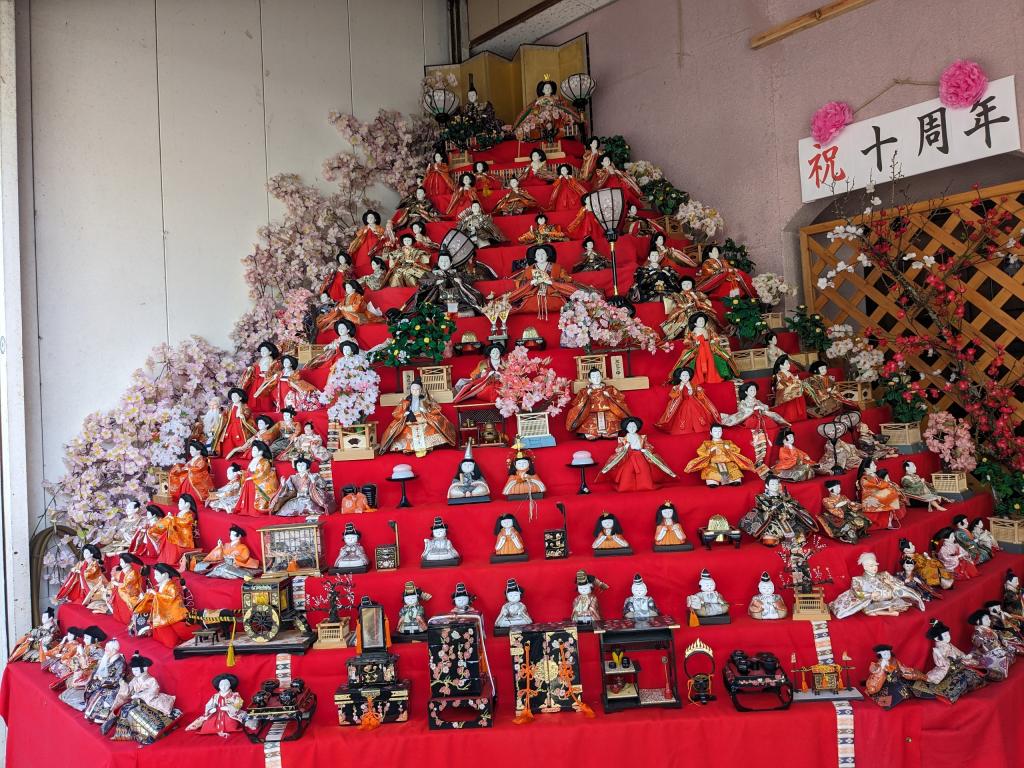
14 floors of Japanese dolls
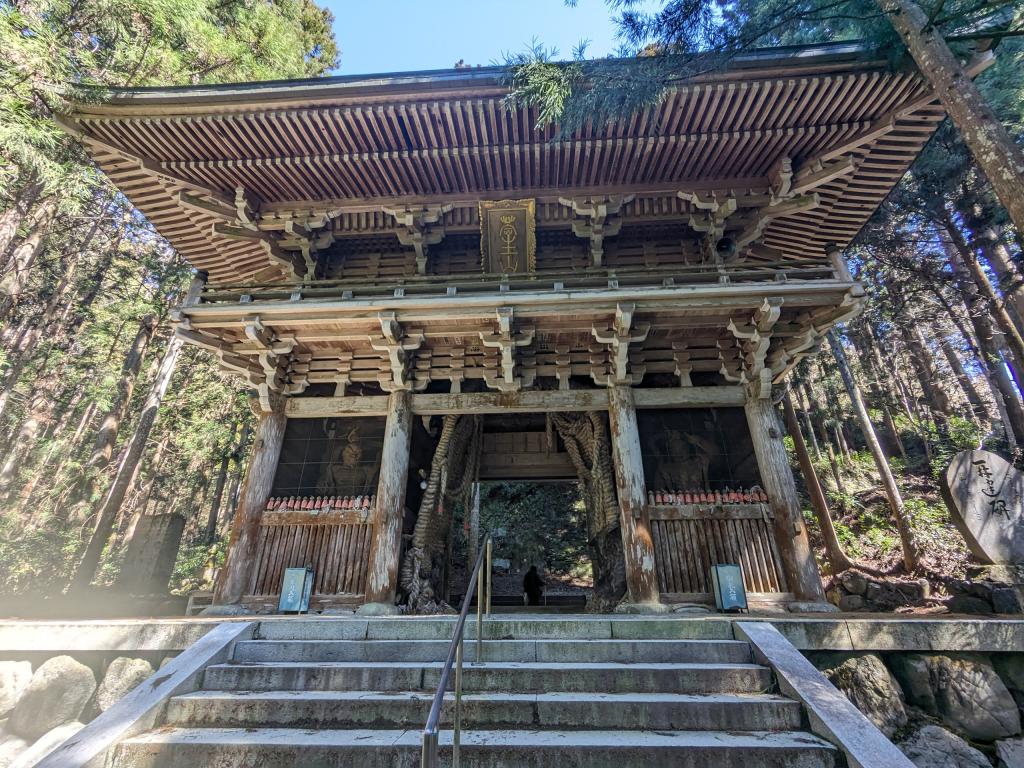
Temple 44
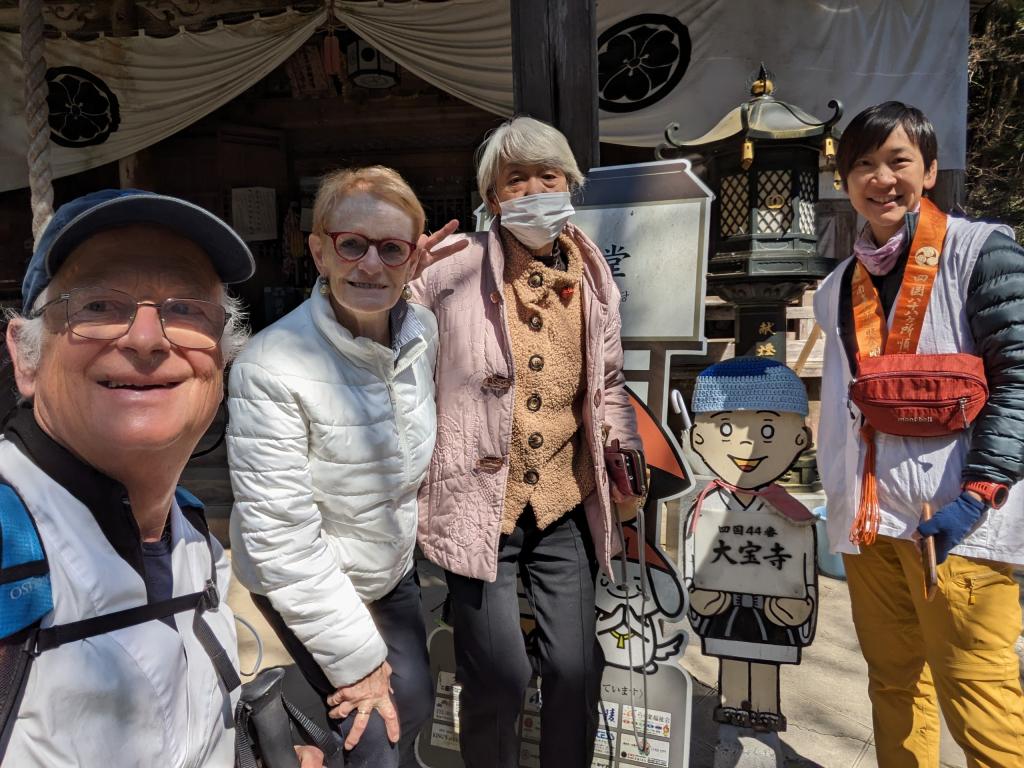
With Monette who comes from Laval and Naoko our pilot
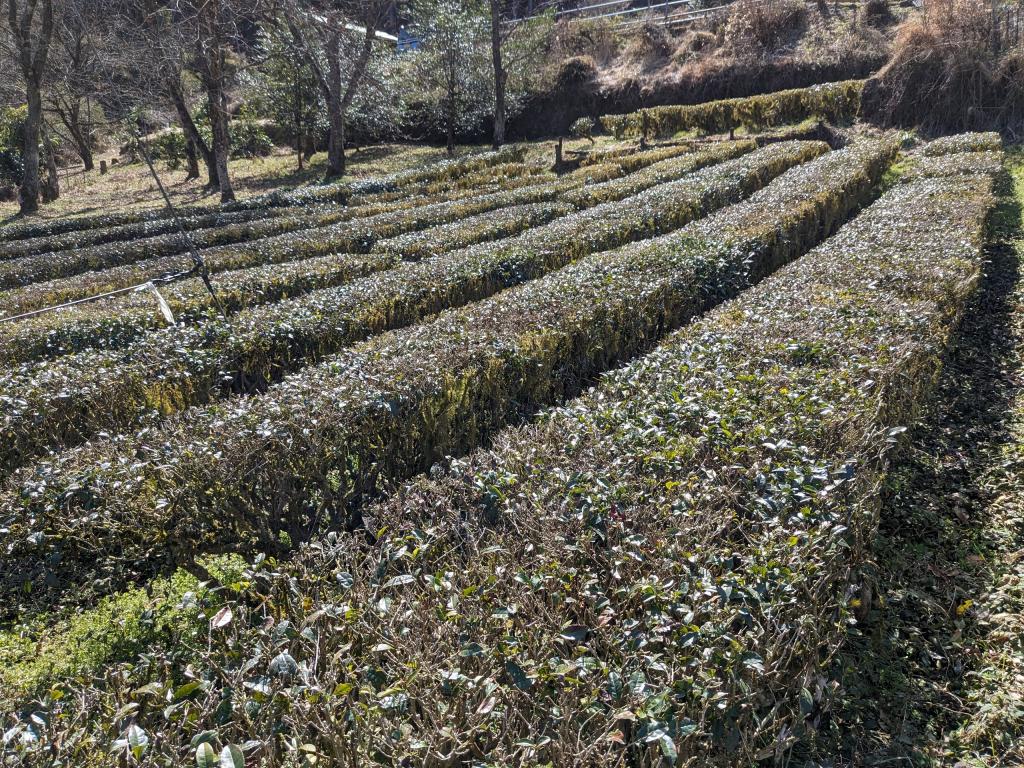
Tea cultivation
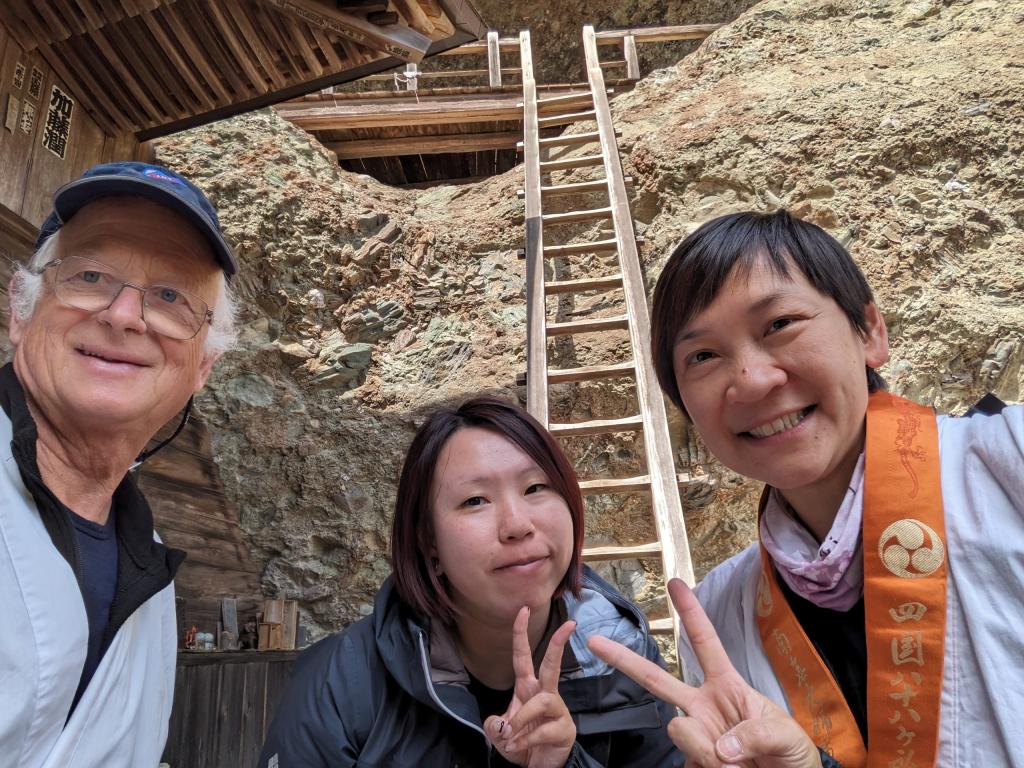
Temple 45
Day 26: Dangers on the way
Jimmy, Joanne and I are leaving with a light bag to visit temples 44 and 45 by bus. The nearest stop takes us another half hour, or even double if we count the detour we made involuntarily while admiring the beautiful displays of Japanese dolls.
Leaving temple 44, we look for the bus to go to temple 45. After checking, the expected bus passes on the other side of the hill. Kimmy manages to get into a taxi.
Joanne and I remain broken down. Naoko, a lady of a certain age, seems to want to be interested in our fate. She drives a small car for Monette, a French girl who takes a lot of photos with a SLR and who also wants us in Naoko's car.
Naoko wastes no time and engages the gears vigorously and launches the car onto a confident dirt road. I suffer for the vehicle which rubs on the embankments. The dirt road divides: right or left? She goes left, then stops. I check the GPS. The car went due south when the correct direction is due east. We have to go back to the beginning. But at the time of Naoko's license, reversing had to be optional. And for us today, the gap is very close. It's also complicated when a large truck is facing us. We have to get out of the car to guide her back. Finally, we arrive safely at temple 45.
At the end of the climb towards this temple, a ladder still awaits us to climb into a cave where we add coins into the cavities in the rock. For Joanne, who is sensitive to vertigo, the descent is delicate. We walk a short part of the way back to the big city, then it's the bus that makes the last 40 km to the same hotel as the day before.

Temple 46. Here we go, vamos
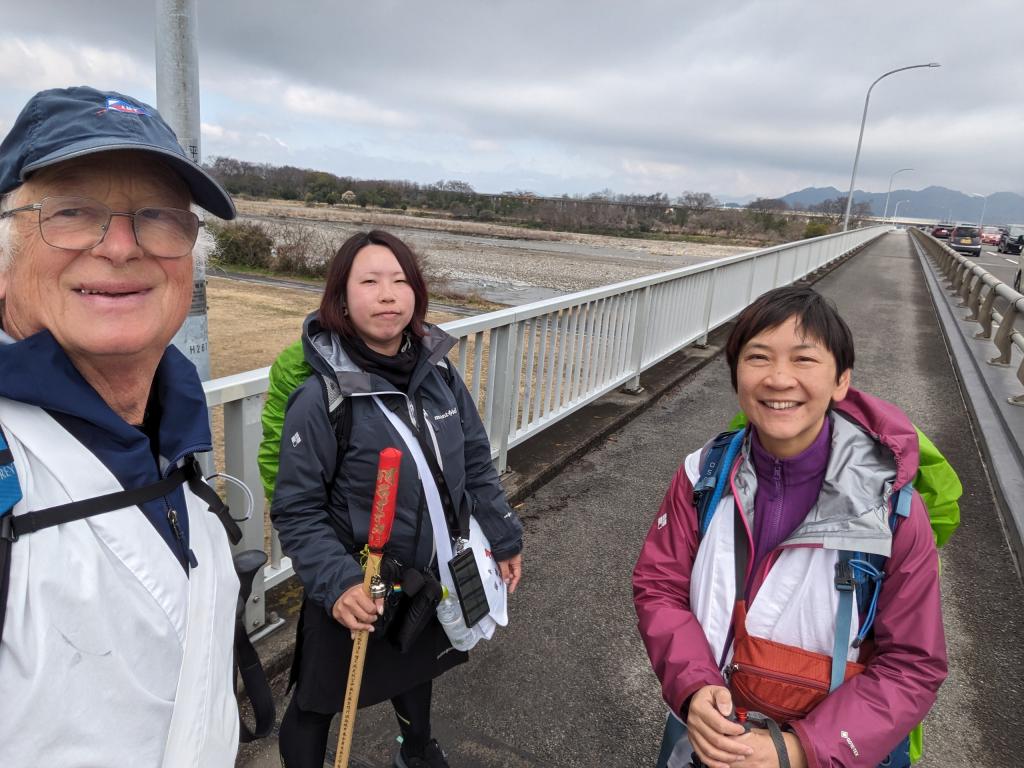
Front of a long bridge and may be plenty of room for sleeping

Temple 48
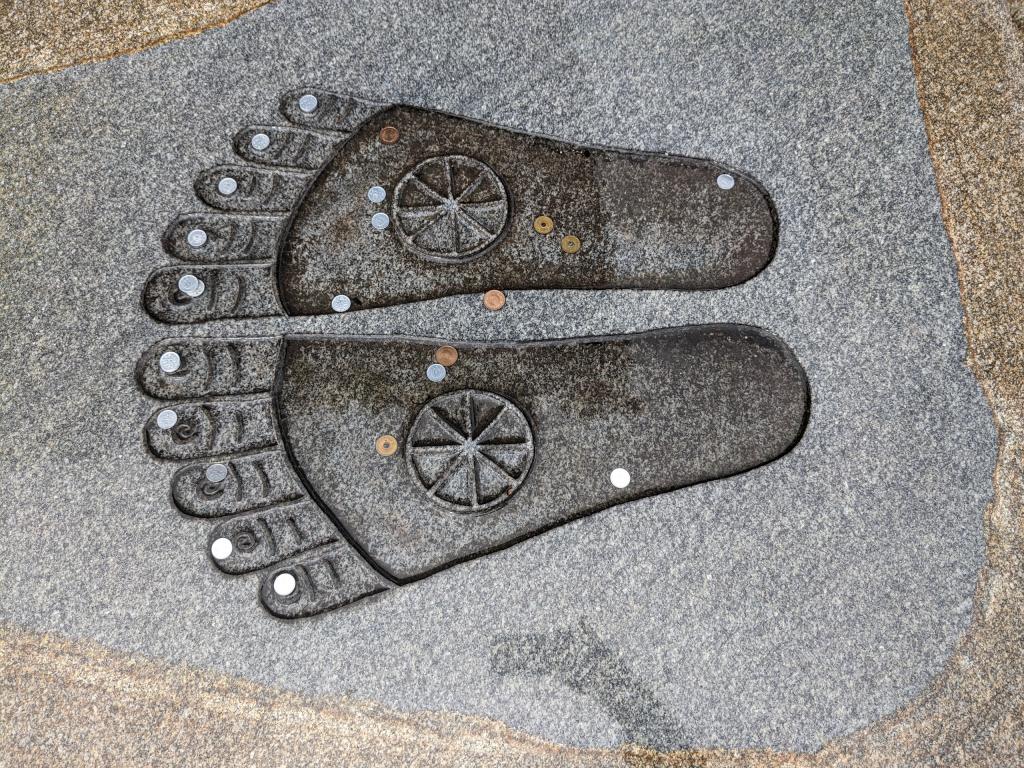
Temple 49
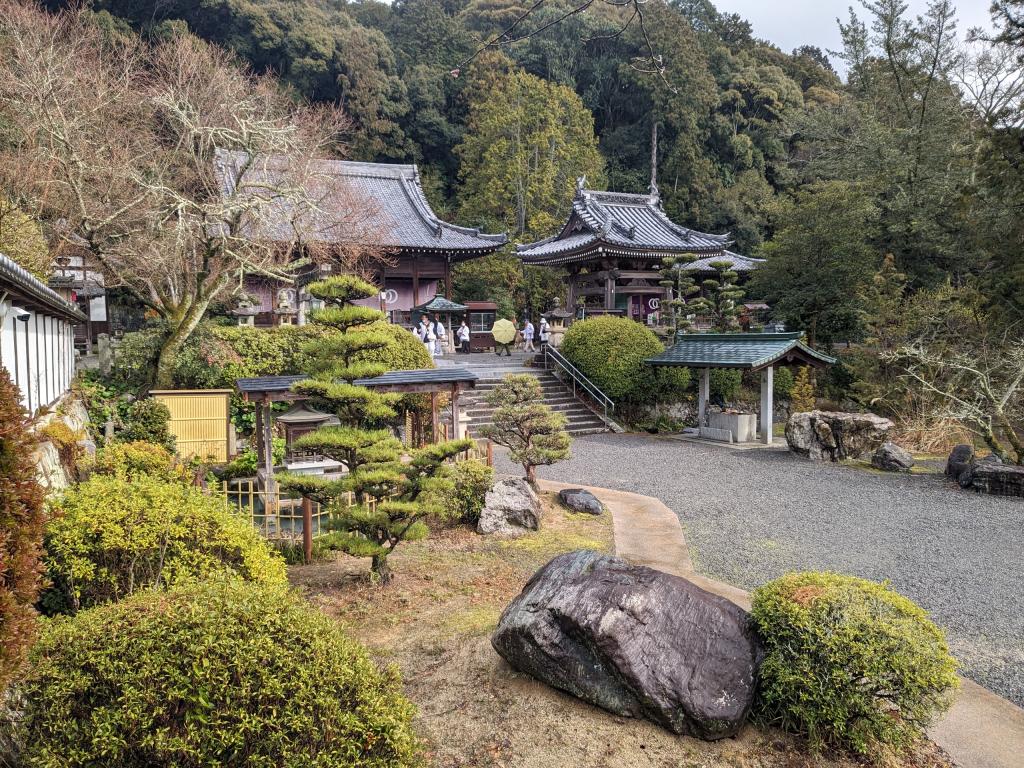
Temple 50
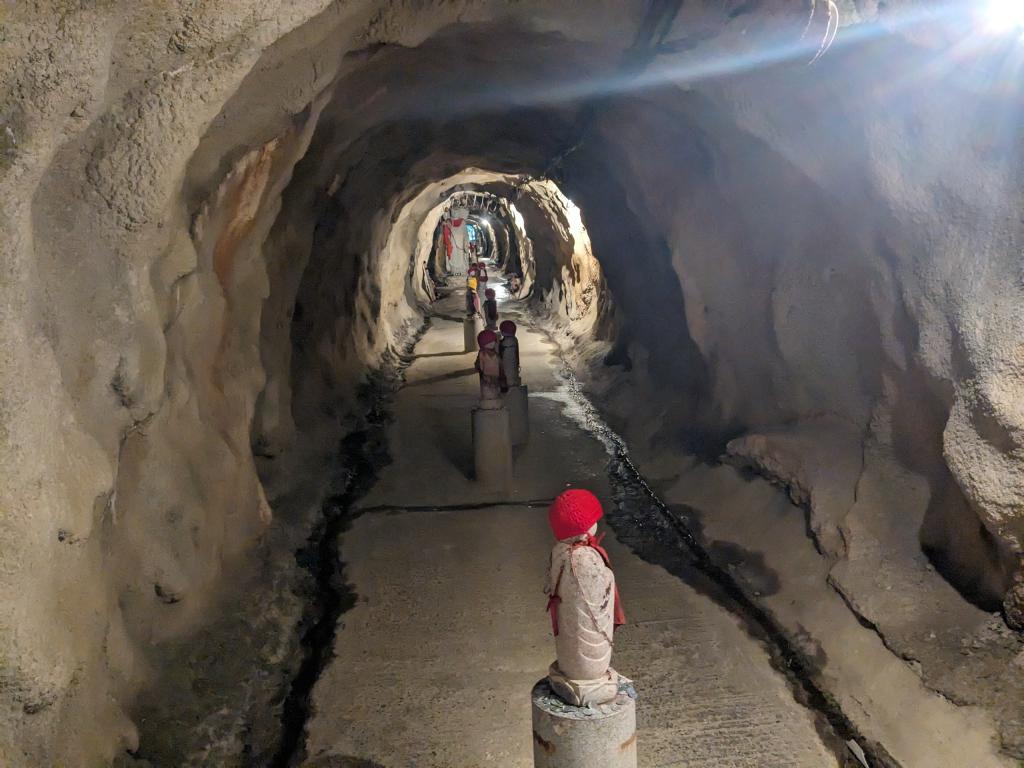
Temple 51
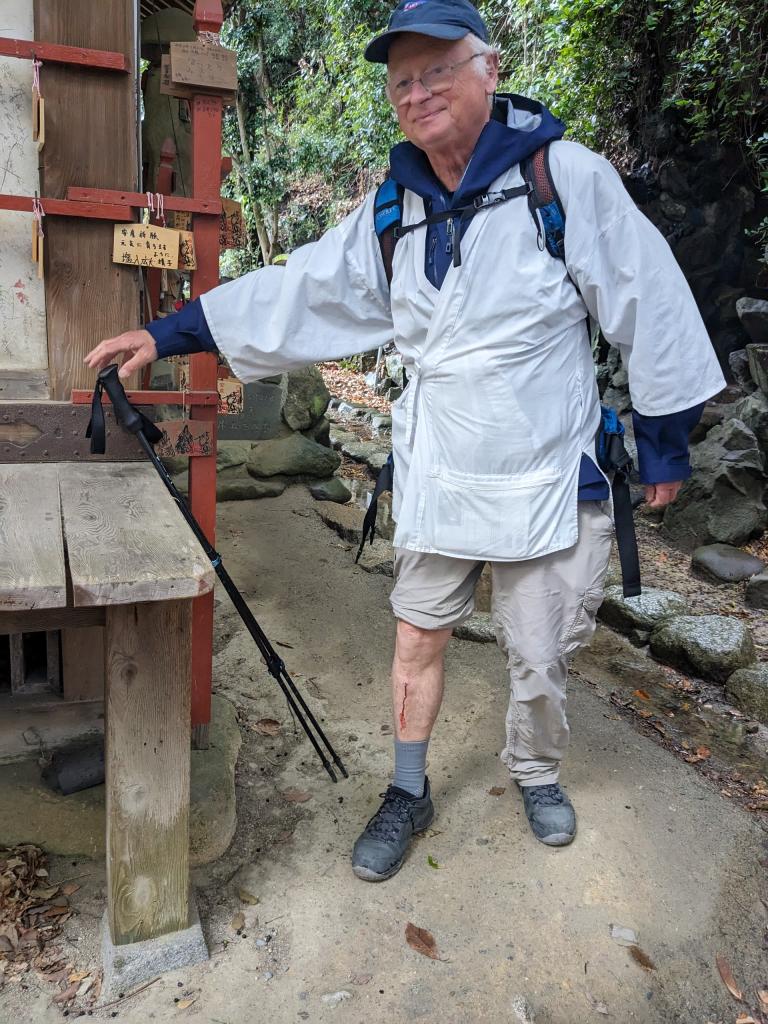
Zenitude

With Angélique leaving the temple 51

Day 27: six in a day
6 temples are on the program for the day. To visit a temple, it takes half an hour. You have to add the walking time between the temples and the lunch break. It's an intense day.
Each temple has its particularities that we try to capture. I take pictures. Joanne does well in the videos she presents on Instagram.
We arrive at the last temple of the day at 4 p.m. The visit continues here in a gallery of a cavern 200 m long. In the darkness, trying to avoid tapping my head, I hit myself violently with my right shin. I'm stunned and the blood turns my pants red. But at 5 p.m., we still want to see the Dōgo Onsen up close, the sauna baths which have used thermal water for 30 centuries and which have made the city famous. To enter, you must have a reservation. We settle for a foot bath outside with hot water that comes from the depths of the earth.
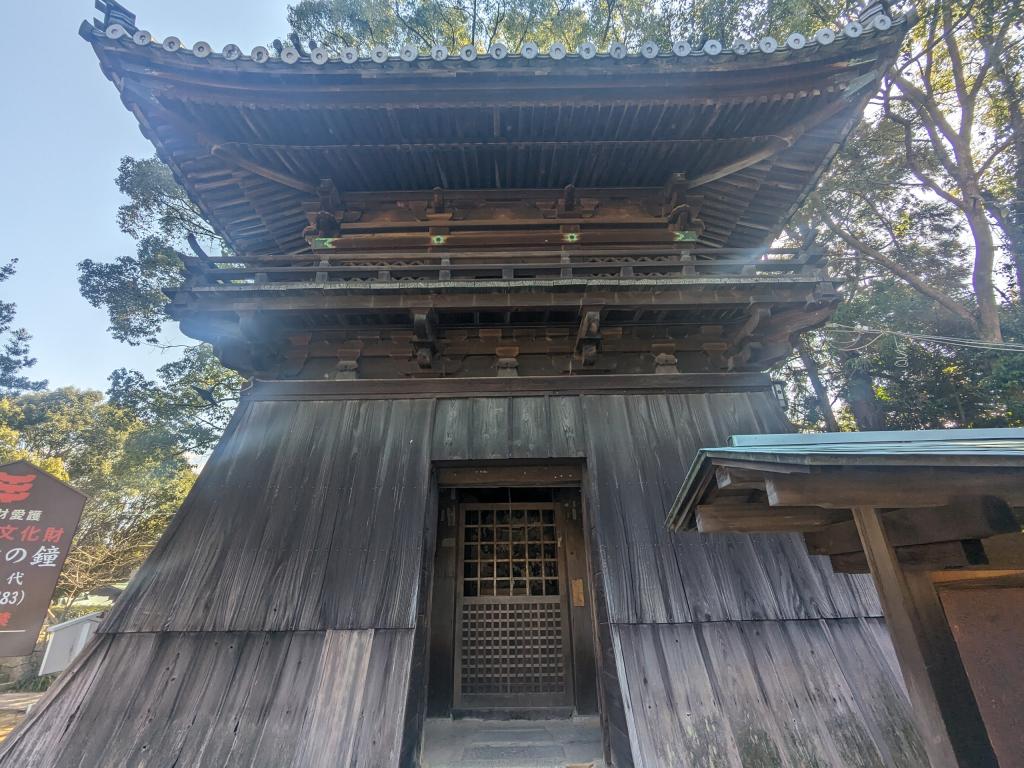
Temple 52, the bell is in a closed building
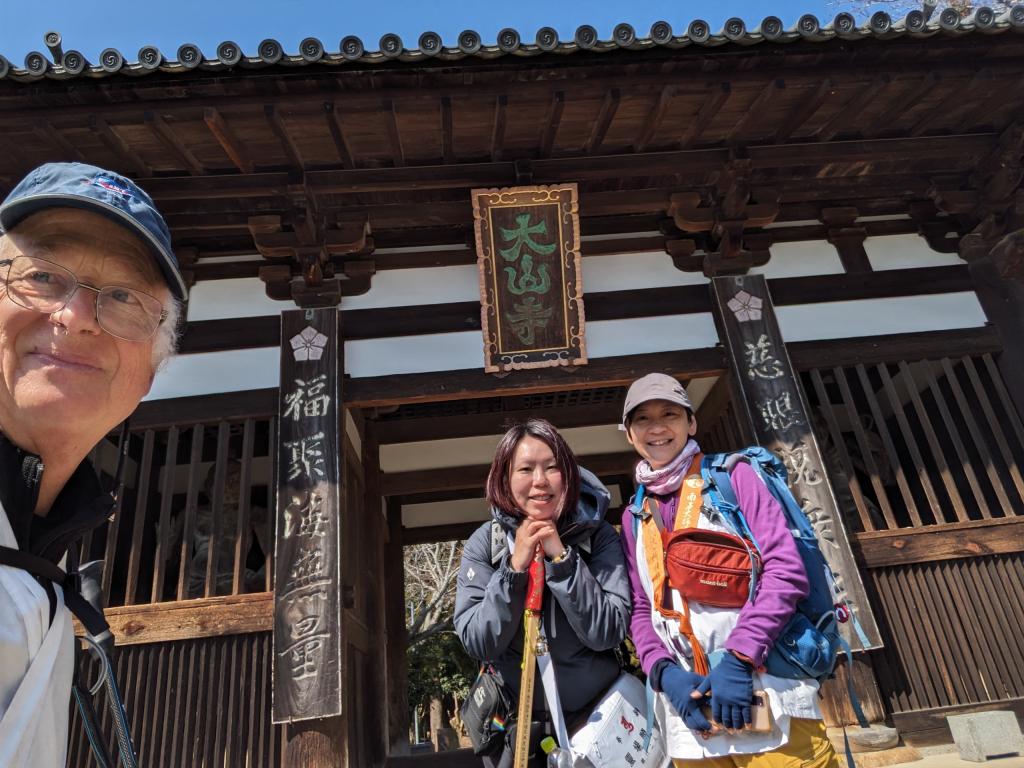
With Kimmy and Joanne
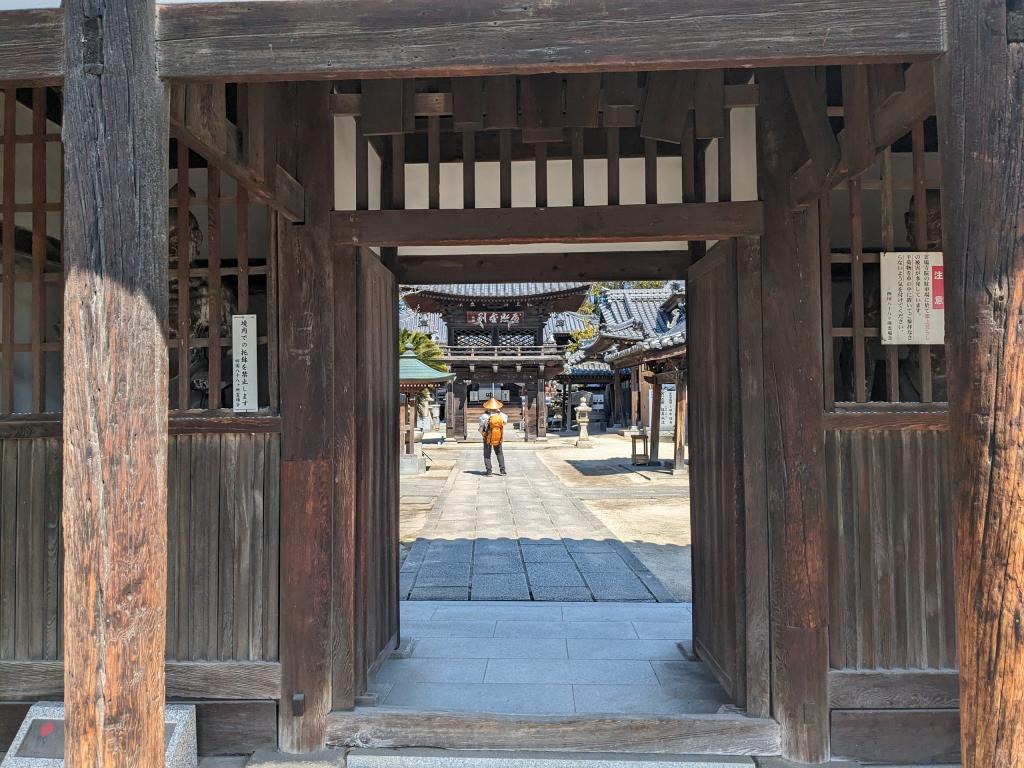
Temple 53: a row of two doors
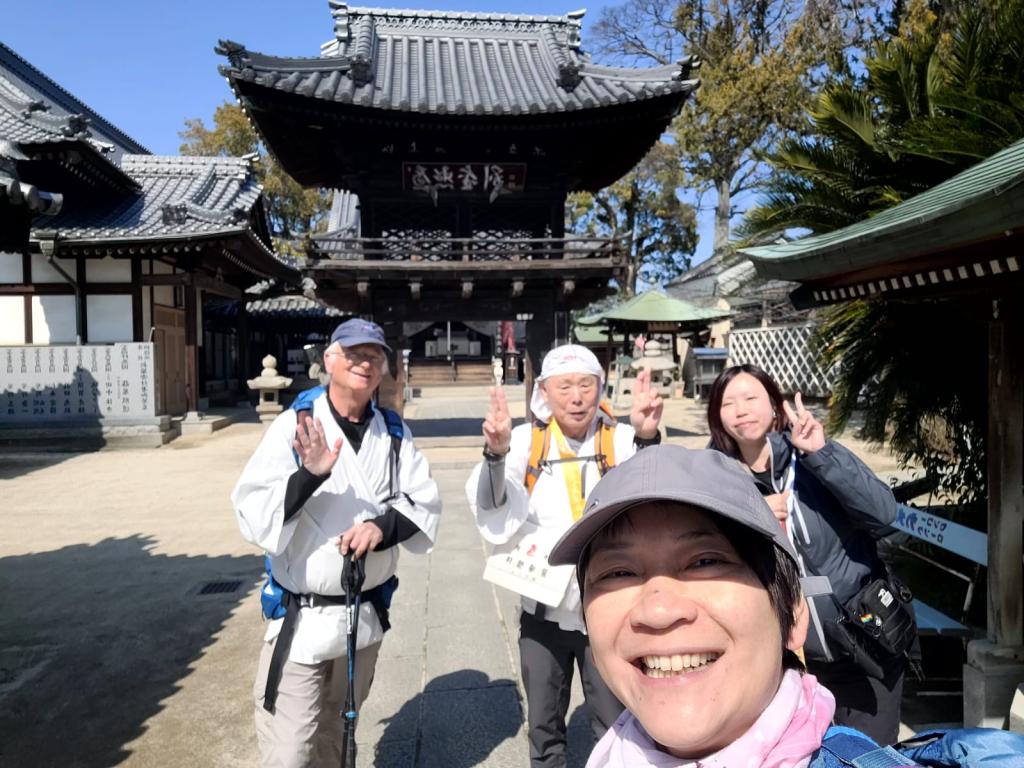
With Wada, Joanne and Kimmy
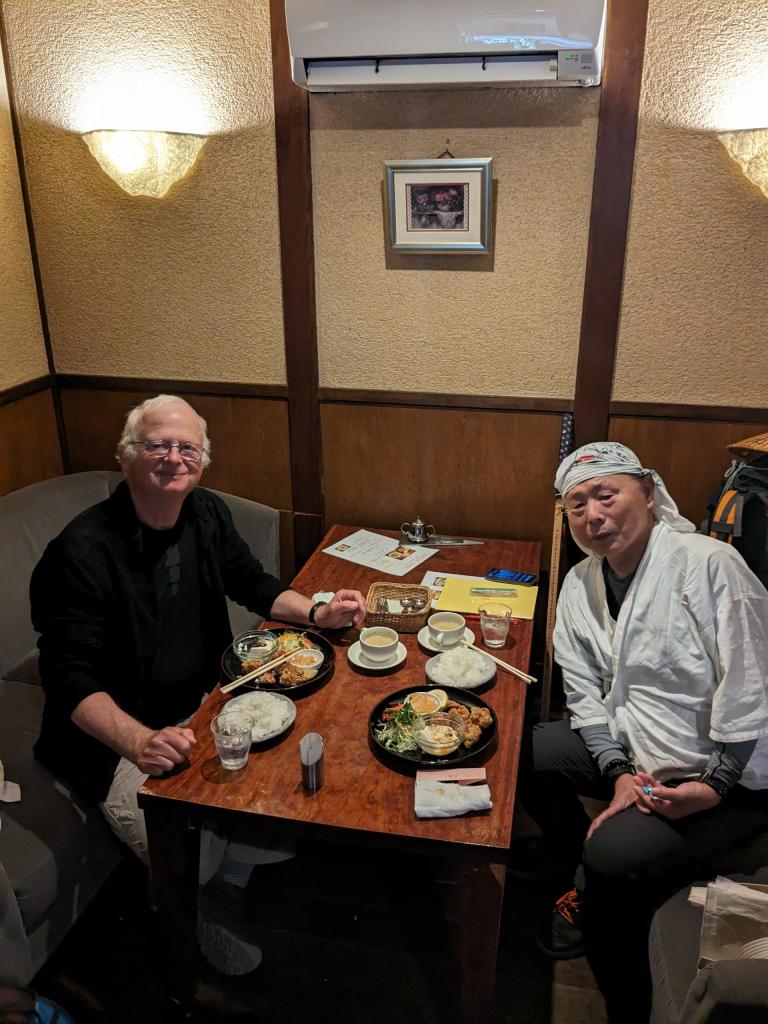
Japanese lunch with Wada Hideo
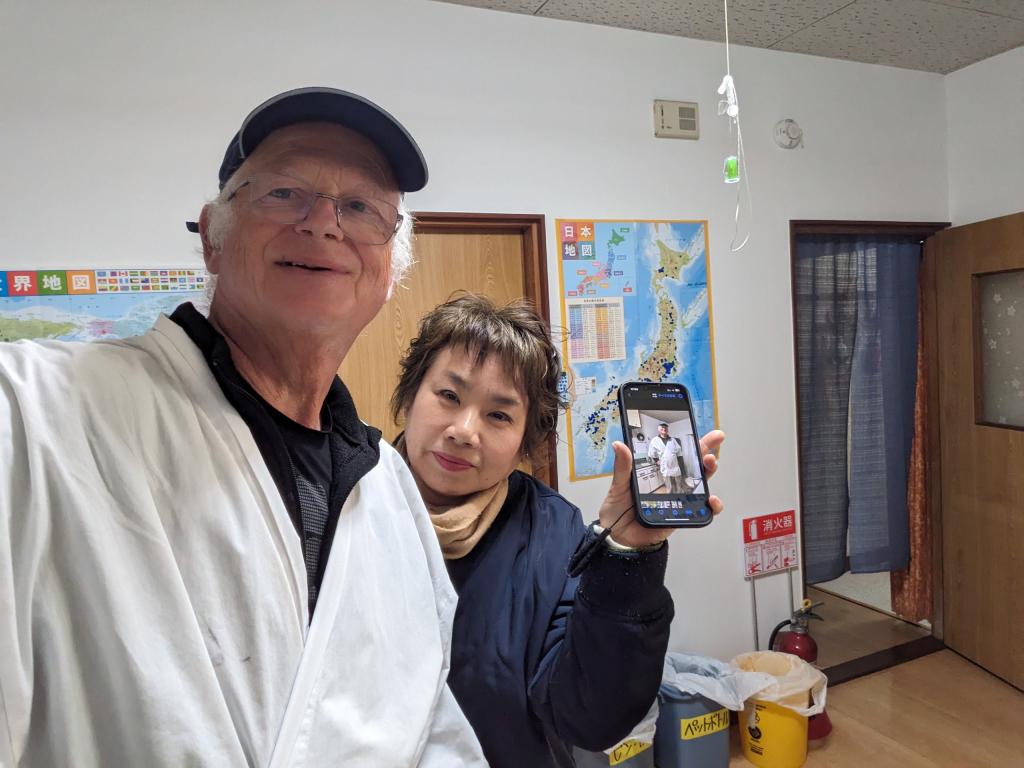
With my landlady at Shiokaza Rider House
Day 28: temples 52 and 53
Leaving the Terminal Hotel at 7 a.m., I cross the large city of Matsuyama with heavy traffic of cars, pedestrians, bicycles, buses and trams. Joanne sends me a message to join me before leaving her accommodation. I am ahead of her for a km without realizing that she is trying to walk to the limit of her abilities to catch up with me. Walkers moving at the same speed no longer meet when separated. Like parallel lines that never meet. Finally reunited, Wada Hideo, a Japanese Henro joins us and arrived at temple 52, Kimmy finishes completing the team.
After a complete tour 10 years ago, Wada redoes a few sections at 77 years old. He follows the rituals according to the rules. Joanne recites the sutras with him. He is full of concern and gives us osettais, these little gifts that warm the heart. In principle, it is the inhabitants who do not make the pilgrimage who offer Osettais. But several pilgrims on my route also offered me Osettais. A candy, a little paper montage, a message. I give them the dated thank you label with my name and I try to give them another gift, a chocolate, a cupcake. Wada also gives me a little bell which proudly complements the one on the back of my bag and writes me a message:
Always smile and say hello
At temple 53, there is separation. Joanne and Kimmy return to public transportation while Wada and I set off on foot on the pilgrimage route. At midday, a restaurant serves us a Japanese menu. Arriving at my stop at 3 p.m., I decide to move on to the next town where Wada takes a train. I'm going back by bus with the plan of going back by bus tomorrow morning along my extra walk today.
My accommodation is a quiet house in its own right where I am the only guest. The owner is helpful and I also see her grandmother. The house must have been in the family for a long time and is now used entirely to accommodate riders on motorbikes and walkers. I have a large bedroom that can accommodate 4 people, a kitchen dining room, a bathroom and a comfortable bathroom with heated toilet seat and other watering lances. This evening, the poorly insulated house is cool and close to the outside temperature, around 10 degrees. I try to create a little warmth, but I prefer to go to the Chinese restaurant next door to be nice and warm.
Tomorrow, a 30 km walk awaits me to temples 54 and 55 and I should meet Joanne who will be accompanied by her Japanese friend. Friday evening accommodation at 58 Senyos Temple could be a special time. I could reach temple 66 on Wednesday March 20 and then head to Osaka to catch the plane back to Paris which I left on January 10.
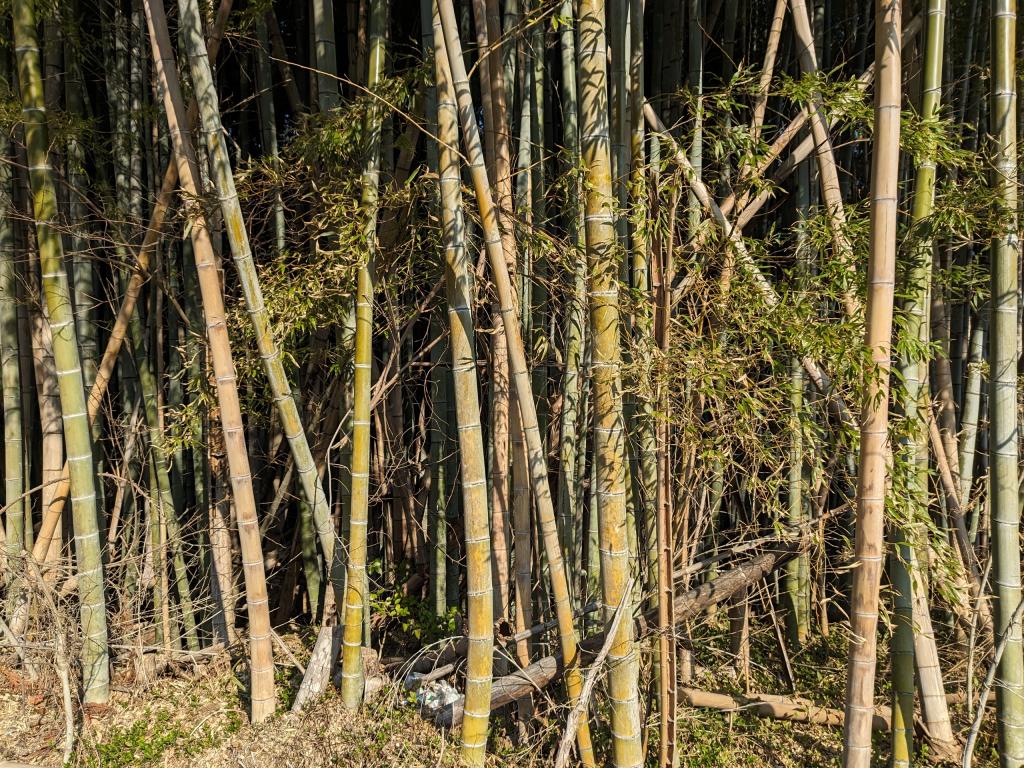
The bamboos
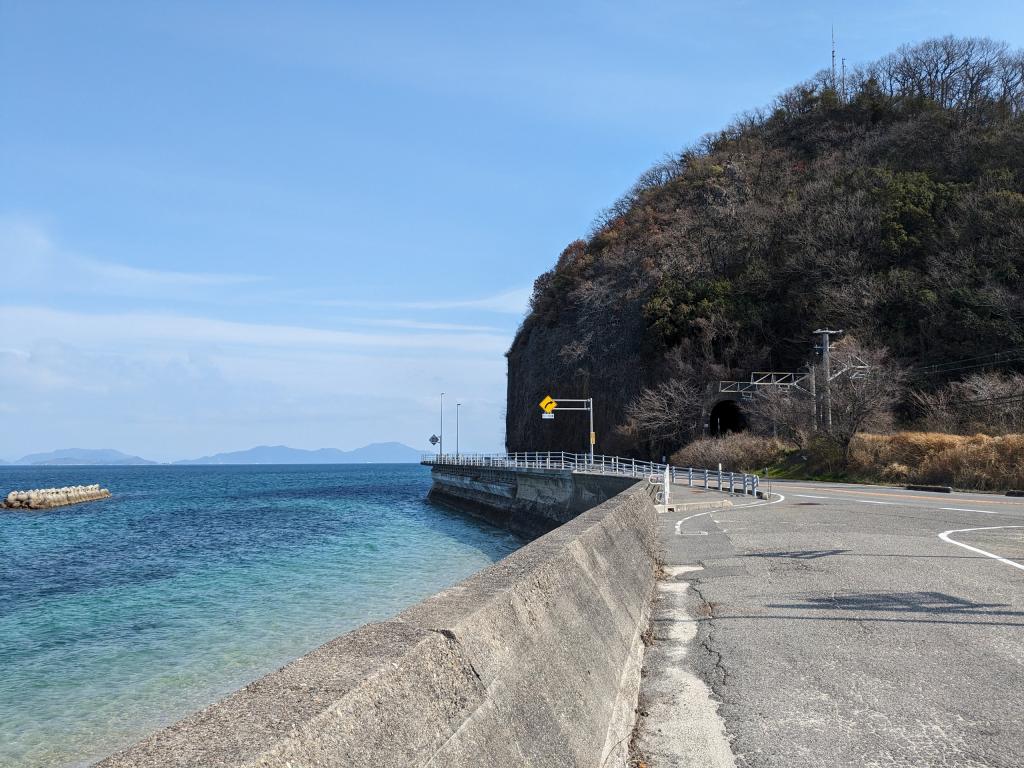
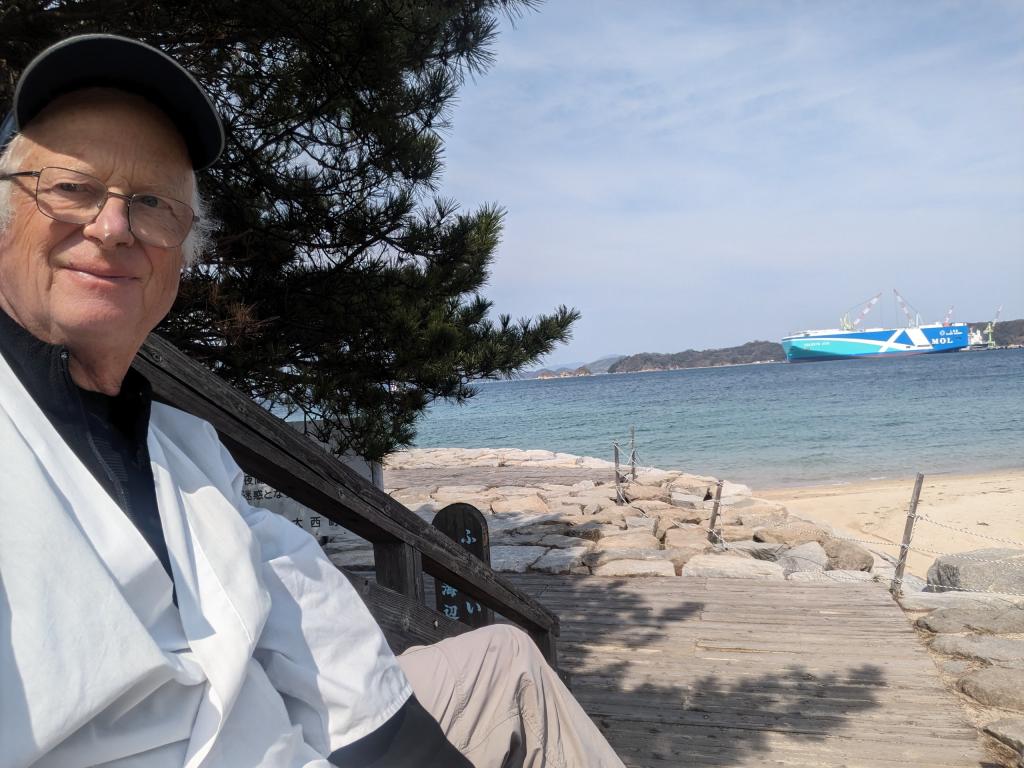
Lunch break by the sea

The first replacement station for electric cars

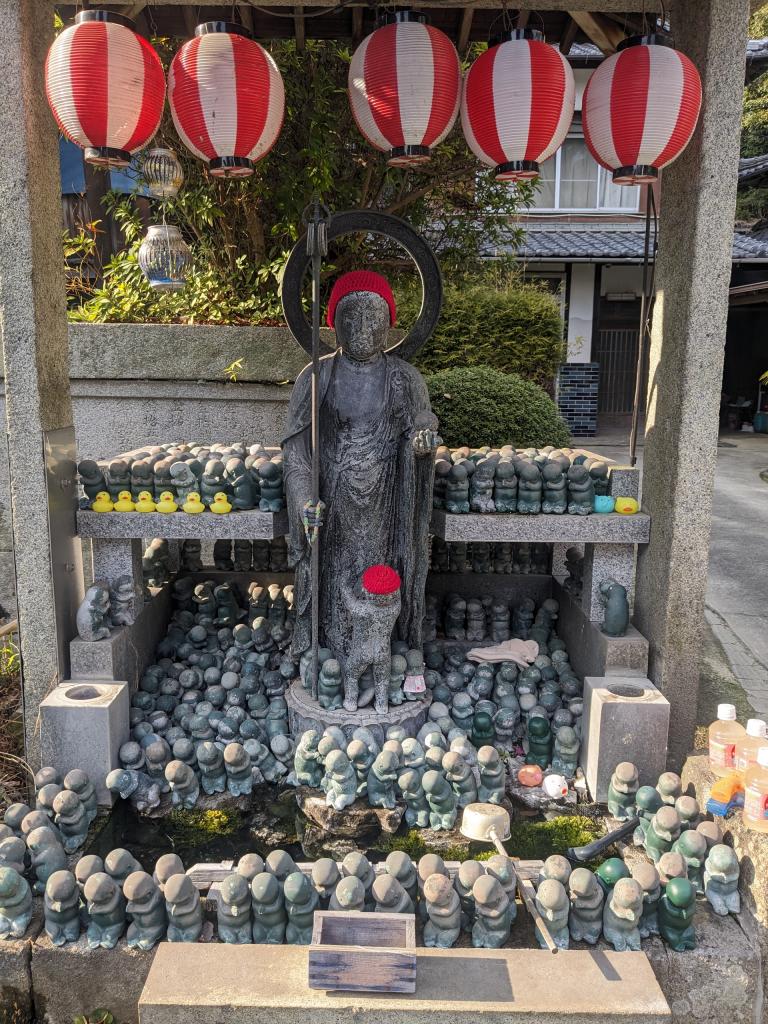
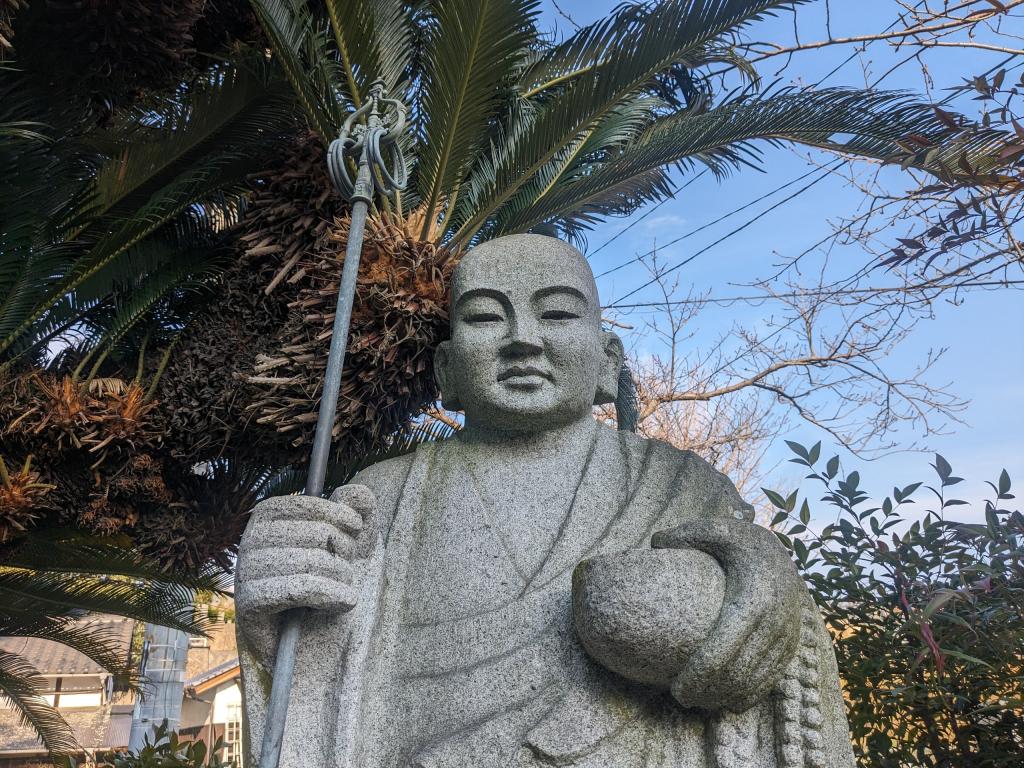
Temple 54
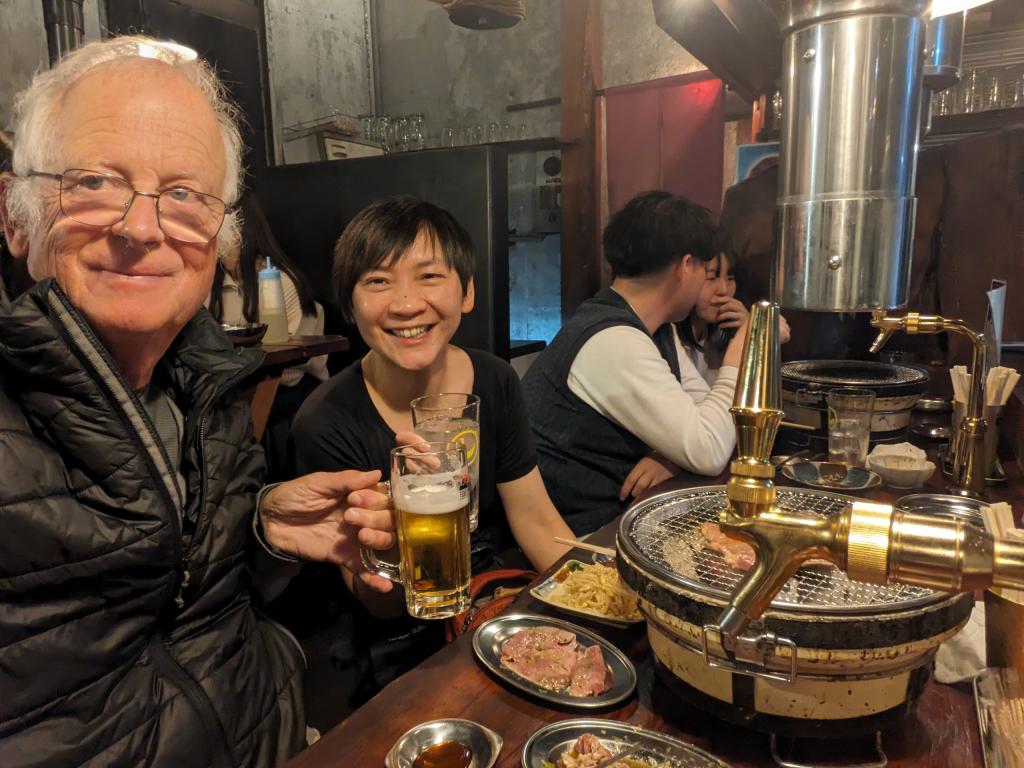
Day 29
The day started at 6 a.m. Lunch, then a bus ride back to the point I reached yesterday. The walk first goes over a hill, then along the sea. At 1 p.m., I snack on the beach, then I continue to swallow the kms to temple 54. I stop at the Clément Inn in Imabari after 5 km by bus and 25 km of walking. I meet Joanne for a self-service aperitif in the hotel lobby and dinner in a Thai meat restaurant. An escalation of beers, white wine, then red and finally whiskey on the rocks. Alcohol abuse is dangerous!
Fundamental refinement
This problem which concerns us all takes on particular importance in Japan. I'm breaking the taboo on Japanese toilets. Any foreigner arriving for the first time in Japan is challenged, even suspicious, by the sophistication of the toilets. In Japan, we have the impression of being watched in every move in this very place where we want to be peaceful.
First obligation, put on the special toilet slippers. It is often recalled that it is forbidden to pee standing up, except in the urinals of course. As soon as we sit down, noisy machinery begins to plot. Next to the throne, a remote control allows you to launch cleaning operations on the foundation. With practice, if you don't touch the buttons, you escape unscathed like in the West while benefiting from a heated bezel. But by pressing a first button, a motor starts, a watering nozzle emerges and you are entitled to targeted 'butt' cleaning. Another button launches a 'bidet' wash for the ladies. Everything can be adjusted in power with plus and minus buttons. Finally there is a stop button to stop the work. The first time, it's surprising and you feel like your baby is being indecently cleaned by a third party. Of course, when we get up, other toilet cleaning operations happen behind our backs. And on some, the water starts flowing into a small sink on the tank. The height of sophistication for some, as soon as you arrive, the lid lifts as if to welcome you and soft lights illuminate the inside of the bowl. I hope there is no internet connection yet to transmit the operation history. Probably one day, cameras and artificial intelligence will get involved.
All temples have toilets at the entrance and I saw one of the most sophisticated in temple 37. I also saw Turkish toilets curiously called Japanese toilets as opposed to the western toilets which I presented here as the toilets Japanese.
Will this progress in personal hygiene be able to conquer the West and overcome our psychological resistance? I admit that the first month, I looked at them with suspicion until I dared to use them like the locals.
Weak point, the energy balance would be unfavorable and incompatible with our ecological ambitions. This hygienic luxury suits this country which has plenty of water.
So here are the facts about the refinements of Toto, Japan's largest sanitary manufacturer

Temple 55
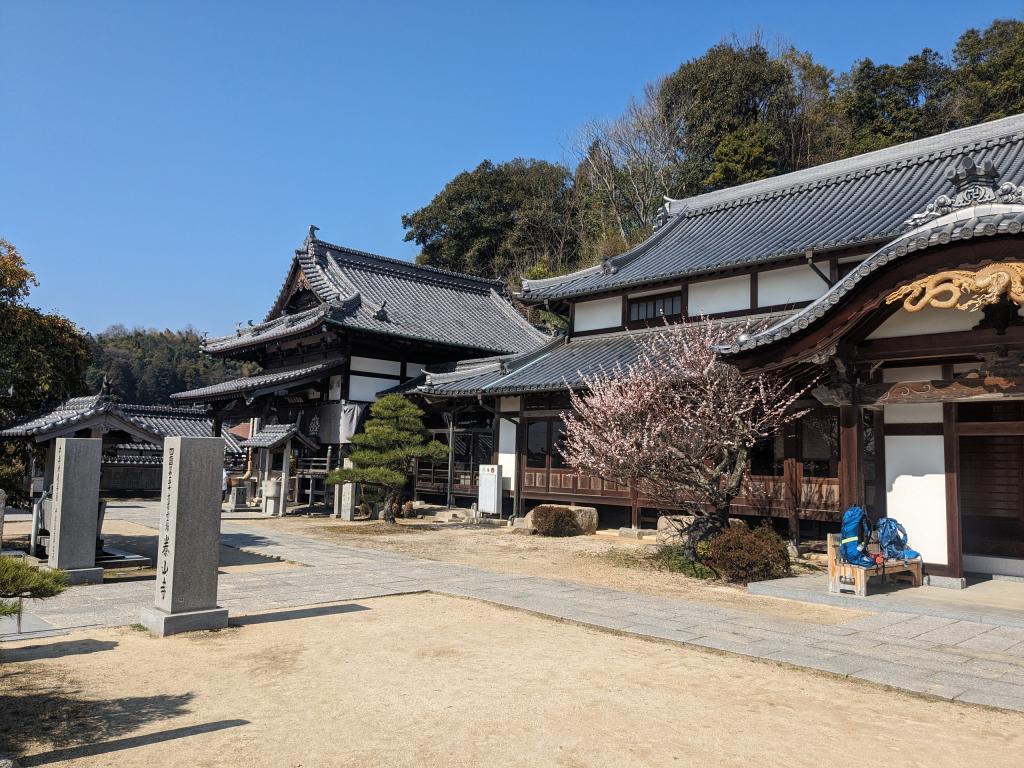
Temple 56
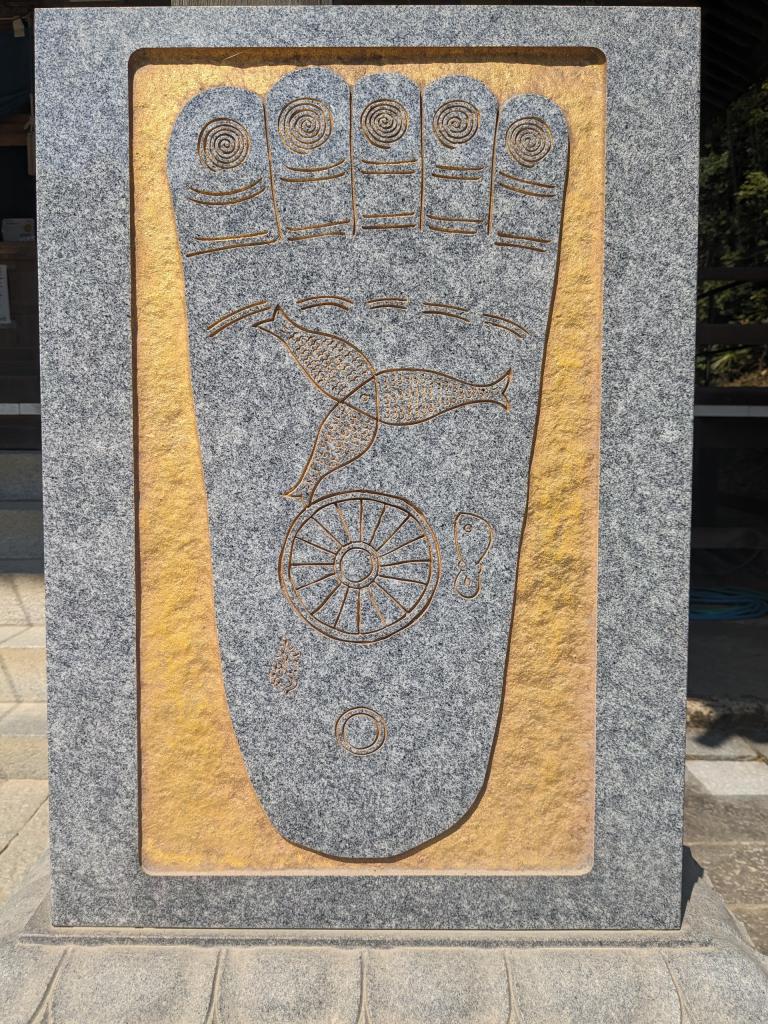
Temple 57
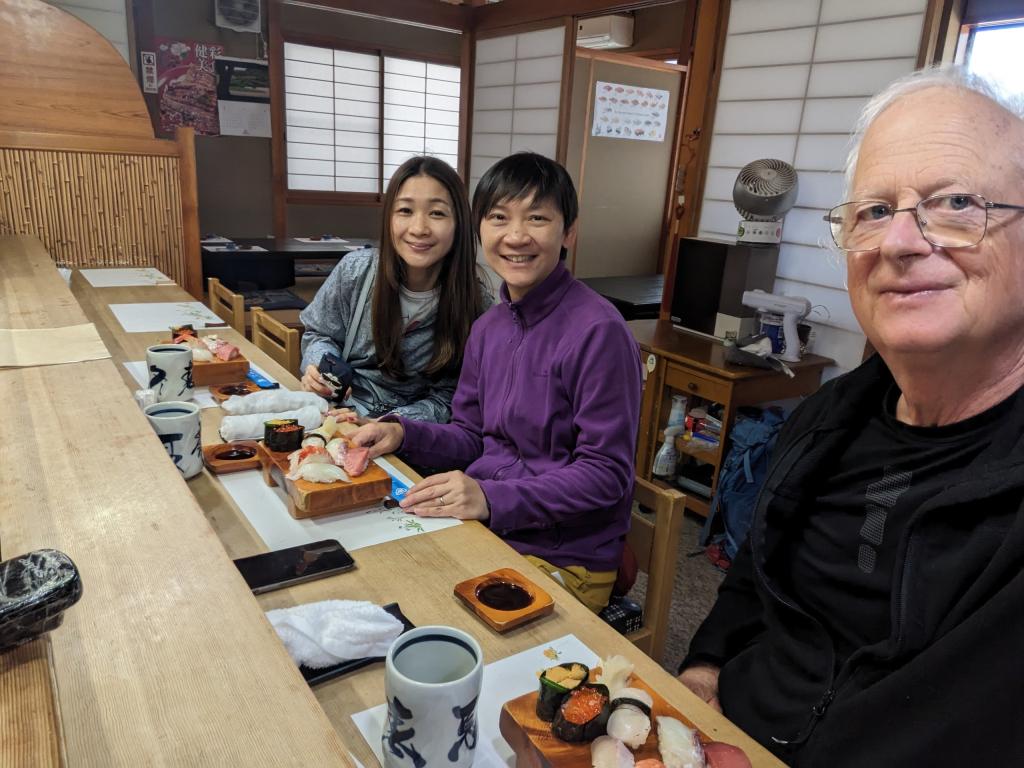
With Mikako and Joanne
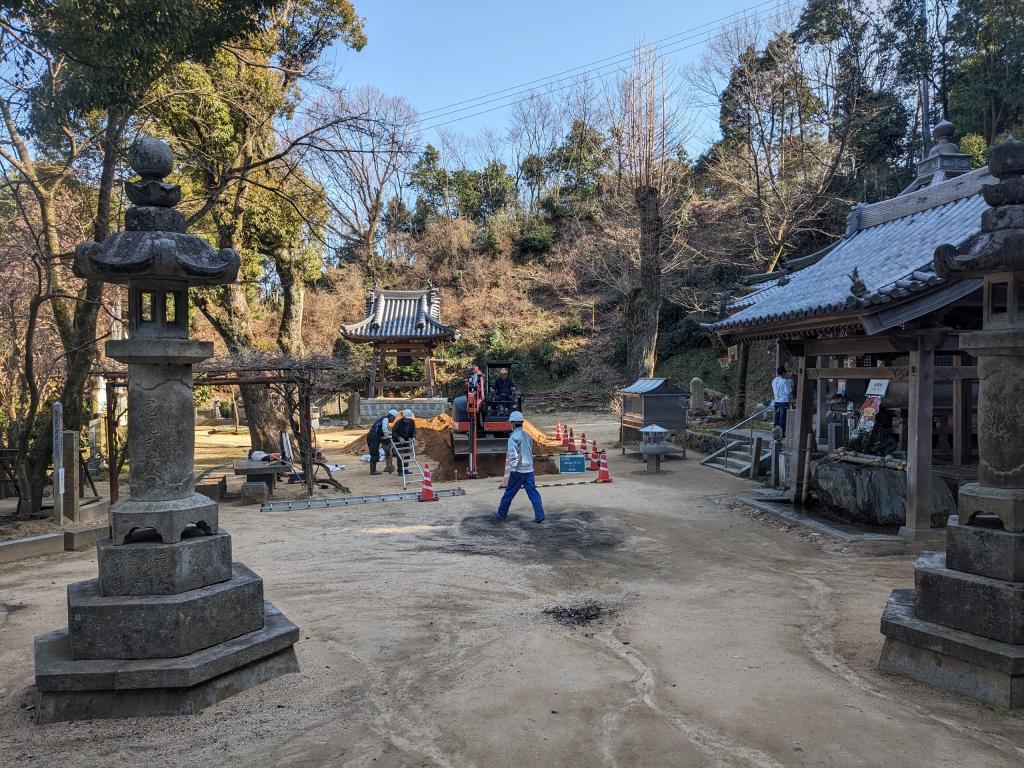
Temple 58
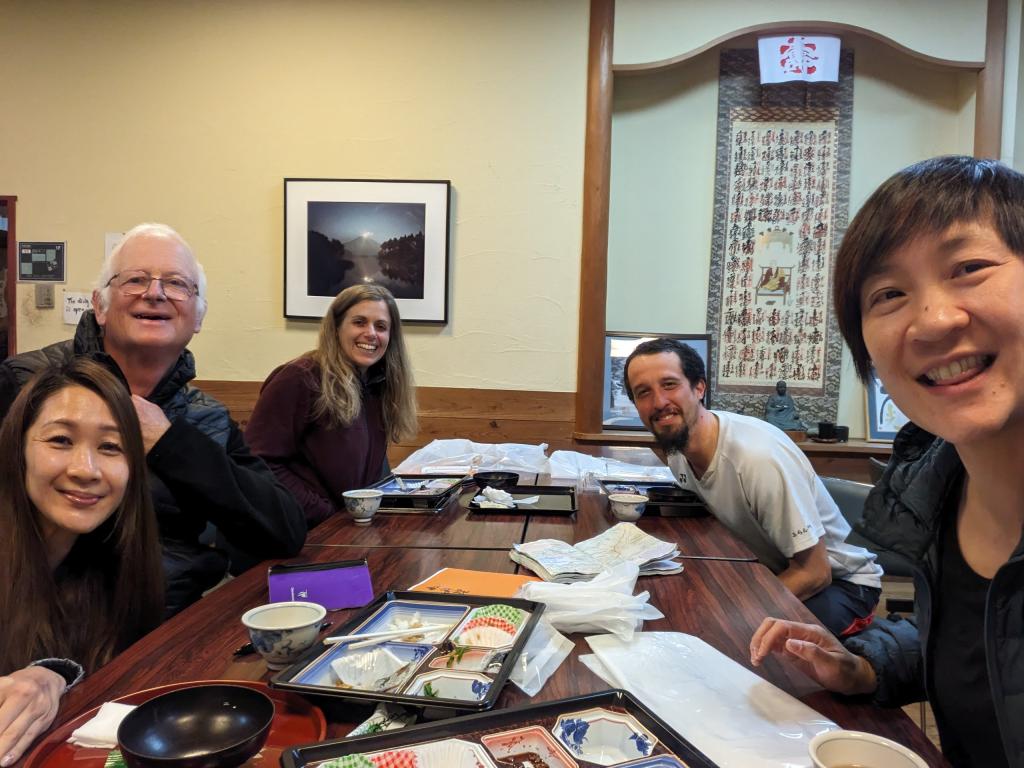
Mikako, me, Stéphanie, François and Joanne around the dinner table
Day 30: Without internet connection
Friday March 15
When I left the hotel, I noticed that I no longer had internet on my phone. The eSIM card has just expired. I took the longest subscription available which is limited to 31 days. I'm going to have to learn to live without the internet.
On Google Maps, I lost the route to follow which was so practical. Now I have to use my paper guide to find my way. And I can no longer translate the directions into Japanese with Google translate.
At my evening stop, I hoped to be able to benefit from wifi. But no wifi.
During this day, I was not embarrassed. But I had to rely on others to find a restaurant for lunch. This evening, on the other hand, impossible to see Martine by WhatsApp. We had to use the traditional telephone, which is an expensive solution in Japan.
This morning, upon arriving at temple 55, I see Joanne again who is now accompanied by her Japanese friend Mikako. I'm going to see them again at temples 56 and 57. It's noon. They found a small Japanese restaurant by taking a little detour and took me with them.
We go up together to temple 58 which accommodates us. The site is grandiose with a view of the city, the sea and the islands planted in the water. Mikako is also a good and beautiful actress in the role of a bell ringer.
A team of archaeologists is carrying out excavations in a 4 m deep hole and extracting crockery and tiles dating back a thousand years. Taking a look around before dinner, I was surprised to see the hole already closed and tamped down, barely revealing the location of the digging.
The closed temple, the tranquility and the last rays of sunlight give it a serene atmosphere conducive to meditation. I find this impression that I have on the islands when the tourists leave. I am no longer a passerby, I am part of the place, I rub shoulders with those who live there and make it come alive. I rediscover old buildings from new angles. The calm disturbed only by the song of birds increases the spiritual dimension of the sacred place.
In the basement, a hot spring, a 4x3 m Japanese bath and room for six people to shower sitting side by side. But no washing machine on this mountain top. My clothes haven't seen the laundry for several days, my white toga is no longer quite so.
In the refectory, I meet François Billion Grand and Stéphanie, his partner who come from Grenoble. François is the official guide of the Shikoku pilgrimage, which he has traveled several times. This time, they go around in reverse. They were walking with a Breton who collapsed on a climb. Hospitality, this one will be repatriated.
François pilgrimaged along the Via Francigena towards Rome in the company of Anthony Grouard and Anne-Laure Timmel who helped me in the preparation of the Coastal Path which I followed in 2022.
Francois gives us solutions for our next steps and strategies for reaching temples 65 and 66 perched on mountains with steep and difficult slopes. Contacted, the well-located shelter is full. This last summit that Joanne wanted to do with me is moving away.
Everyone sleeps in a small monastic room. On a table, a thermos of tea, a cup, a small cake and the book The teaching of Buddha in English and Japanese which contains a lot of wisdom to deepen. Tomorrow you will need to be at the main temple at 6 a.m. for morning prayers.
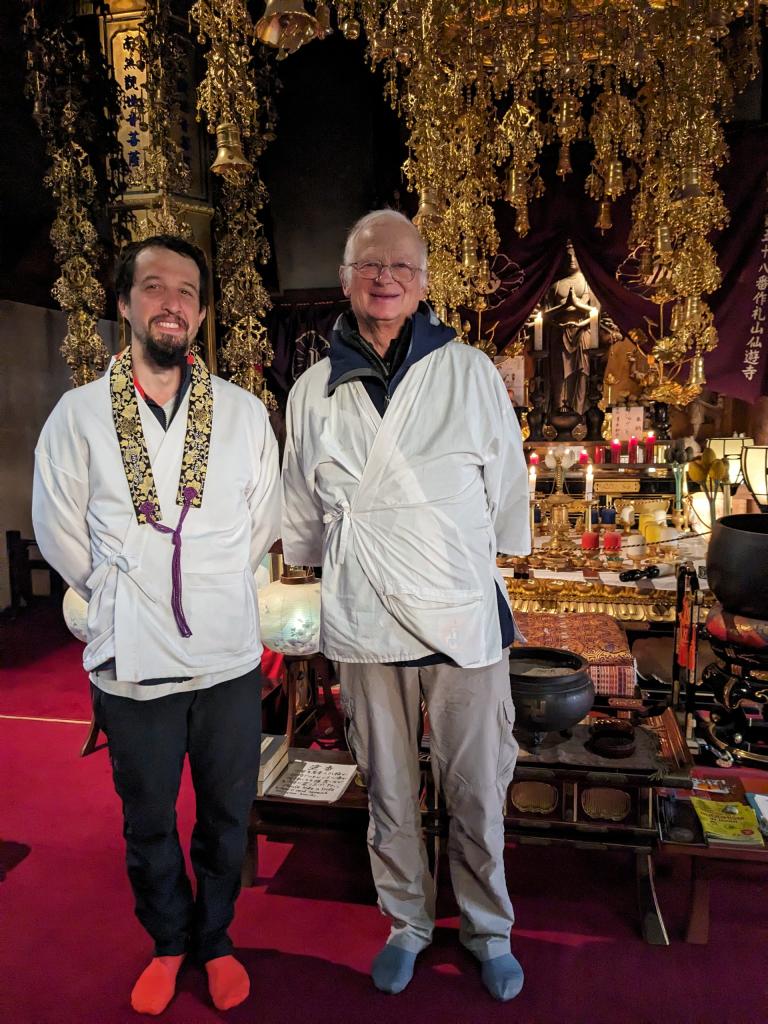
Two François
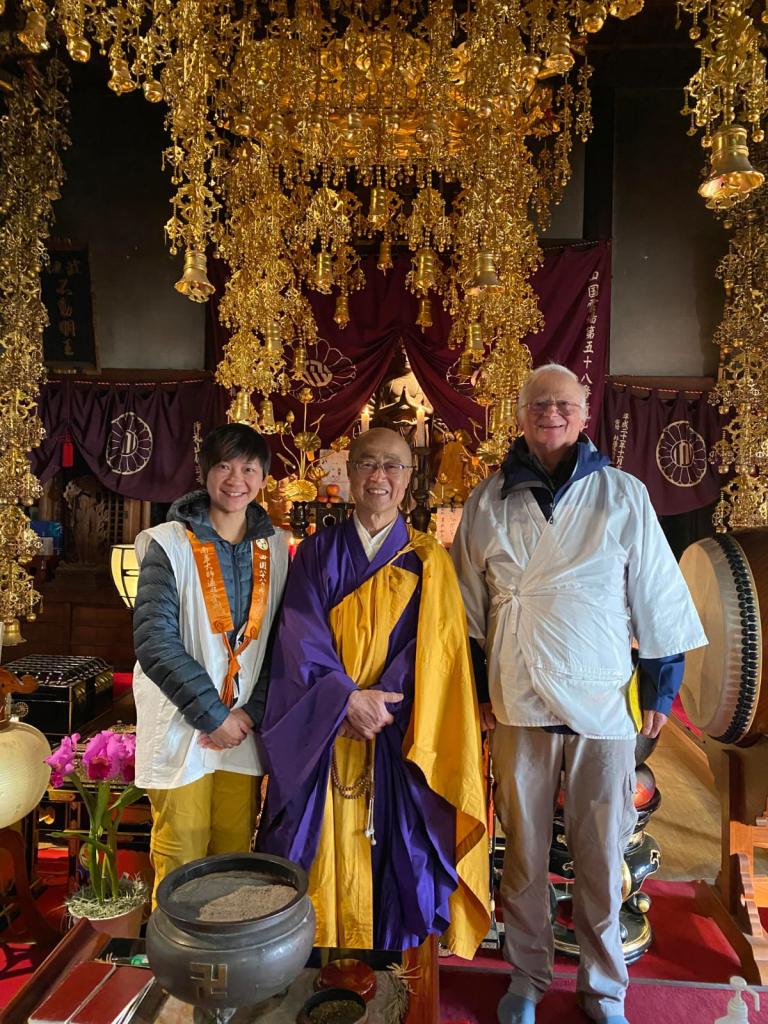
After the 6 a.m. ceremony

Temple 59, the pilgrims apply their hands to all sides of this large egg-shaped vase
Day 31
At sunrise, the master of the temple dressed in blue and yellow ceremonial clothes welcomes us with the same smile as the Dalai Lama. He asks everyone their country of origin and speaks a lot, but in Japanese. He spontaneously evokes the trip he made to Compostela a few years ago.
First ritual, we rub our hands with ginger powder. As we sit down, he settles into the altar and begins reciting the sutras. Then he accompanies the singing with the tapping of sticks. Finally, he strikes a few vigorous blows on a large metal bowl which resonates for a long time. We return to the altar to place ashes.
He comes back to us and talks to us about subjects that are close to his heart. I understand that he talks about Ukraine, the absurdity of the war, that he is 75 years old, that he had cancer, that he works 15 hours a day, that his wife died in 10 years. Its main message, the question that everyone must ask themselves:
What are my reasons for living?
Once this question is answered, everything must be better. During breakfast, he reappears in worker's clothing with a cap pulled over his head, ready to go to work in the orange fields. I still have many questions about it and about the functioning of this temple that we see from the inside. I had the impression that he was speaking specifically to Mikako who was sitting right in front of him and who understands the language. I will try to find out more by email with her.
In anticipation of the coolness in the temple, I had put on 6 layers of clothing. I found myself sitting right next to the efficient, but noisy, gas stove. I would have liked to remove 3 layers, but the solemnity of the moment forced me to agree to sweat in silence.
Bag on my back, I separate from my pilgrim friends who have other directions for a day of solitary walking which begins with temple 59. At midday, I stop at a coffee shop for lunch. On the menu, the dishes are written in Japanese and as I no longer have an internet connection, I cannot translate the menu. I want to order the same thing as my neighbor. The waitress makes a cross with her arms and shows me the other choices still available. I have to choose a line at random. The waitress brings me a tray with rice, corn, vegetables and tea.
Back on the path, I try to pay attention to the arrows while controlling my direction with my paper guide. The arrows are sometimes faded over time and are irregular. When I no longer see them, I tell myself that they should reappear later. In fact, I've lost my way and don't want to go back. I make an unpleasant detour because of unnecessary fatigue.
Arriving in town, I start looking for a new eSIM card. In a mobile phone store, the salesman directs me to a website. Taking advantage of the store's wifi, I struggle to buy and configure a new internet connection which simplifies my life in Japan.
The lady at my accommodation is nice. She comes to pick me up by car, wash my clothes and offers to drive me to the foot of the T 60 mountain tomorrow morning.

The climb to the T 60
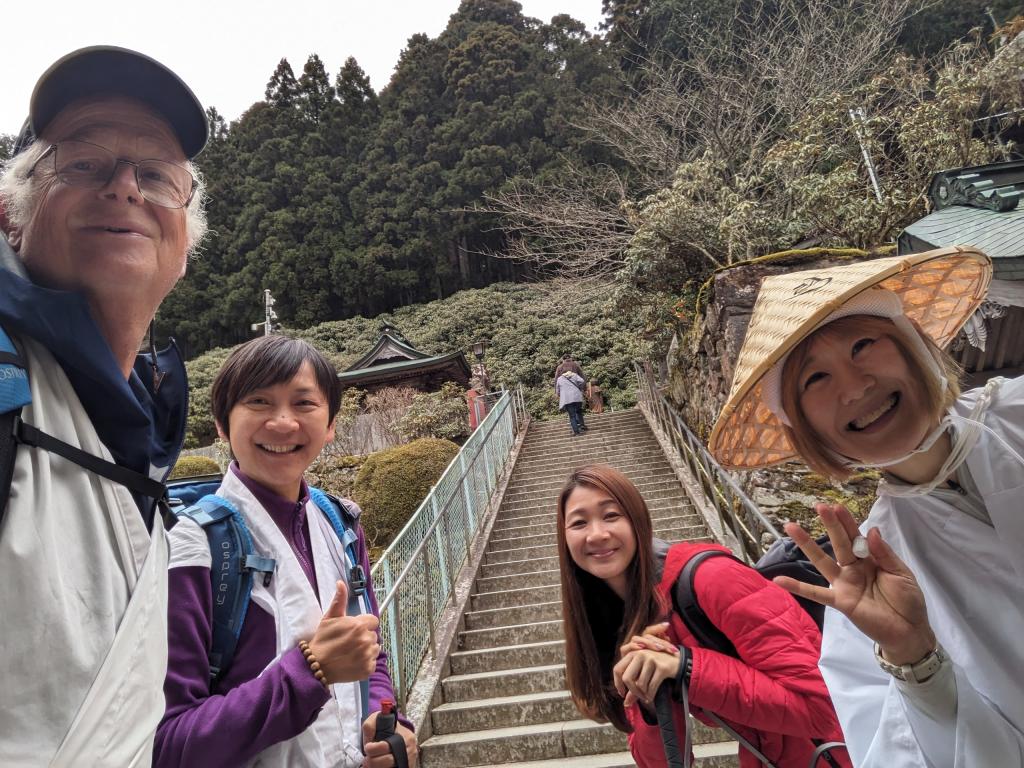
With Joanne, Mikako and Mika at Temple 60
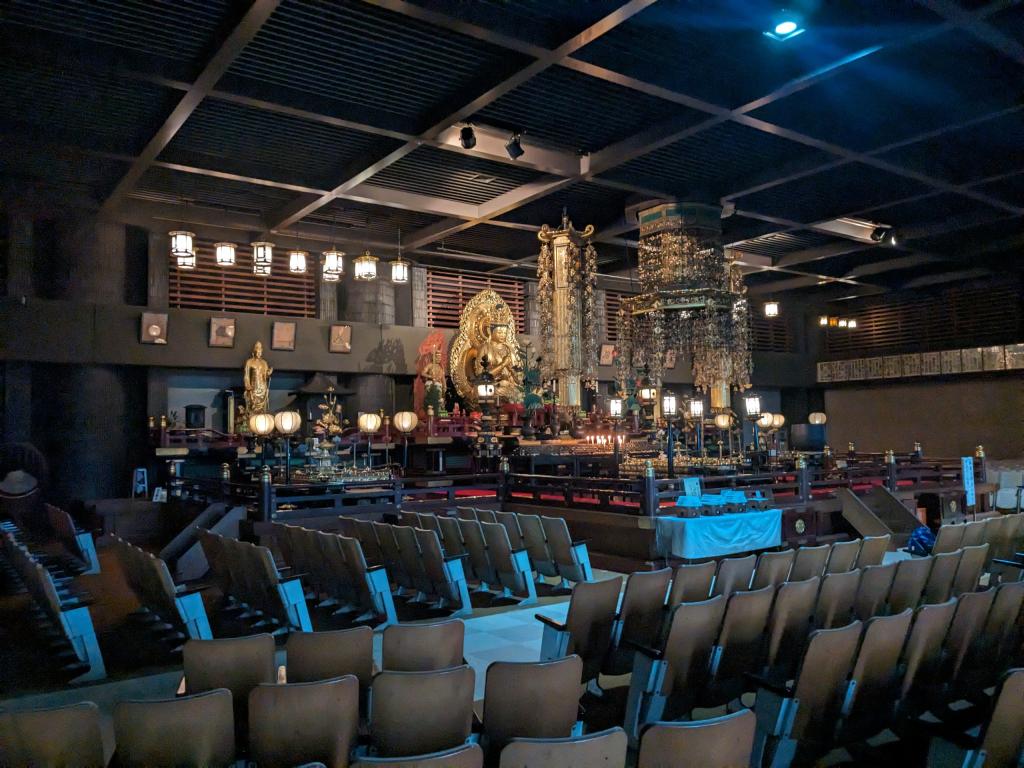
Temple 61: a modern temple with a very large hall
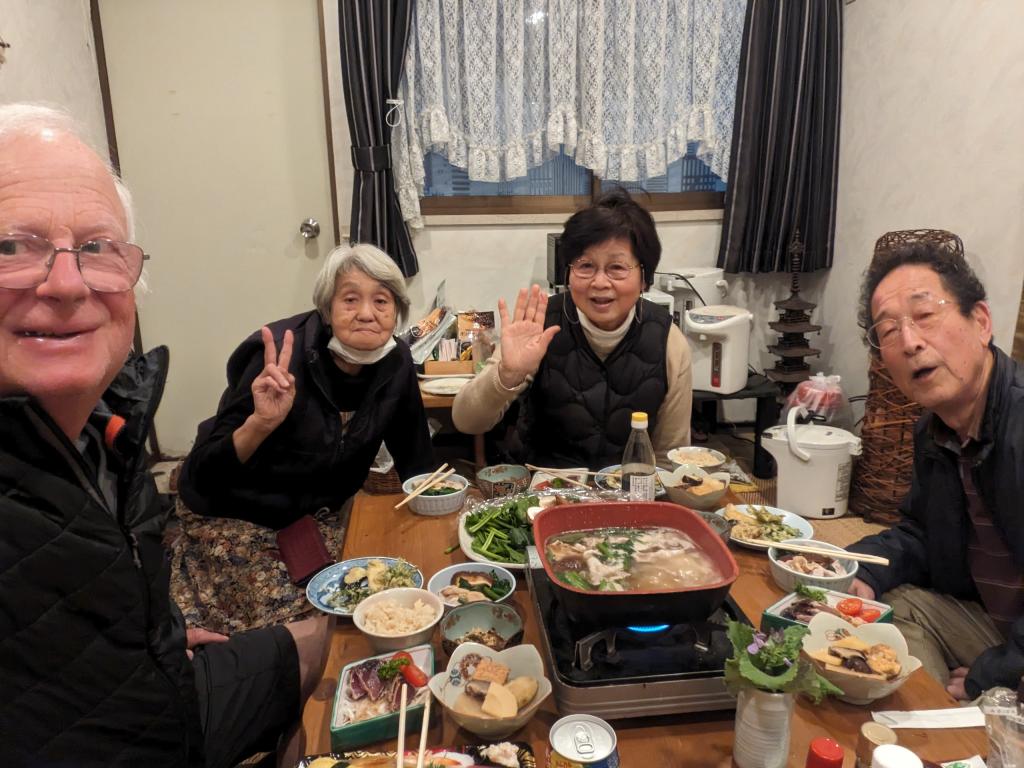
Day 32: The T 60 via the north face
The T 60 is close to Mont Blanc with its reputation for difficulty, especially the last 400 meters which are close to the vertical. I'm going to attack it from the north face. This is the program this morning when I approach the snow-capped peaks in the car of Naoko, my friendly landlady who saves me from walking 10 km into town.
My bells well secured, I set off on the path groomed by millions of steps. The path constantly crosses the torrent which carves its way between the rocks. The water is in a hurry to reach the sea to find the very large family of water drops.
Going up to this temple early in the morning gives off an impression of getting closer to the divine. I can already hear the bell ringing with each pilgrim's arrival. At the top, I find Joanne and Mikako as well as Mika, another pilgrim whom we meet for the third time and who arrived by other routes.
After the group photo, as it must be raining, everyone is already thinking about returning. I drag along, then I also go back down the path that goes towards temple 61. On a slippery rock, my right foot slips and this time, the sticks do not save me from falling. Unbalanced, my body goes backwards to hit the rock. In an instant, I quickly rewind the tour of my life: my first tooth, my teddy bear, my first racing bike, meeting Martine, the birth of the children... And bam, I fell on my back . My left hand groans. But otherwise I'm surprised not to have pain elsewhere. Lying down, it takes me a few moments to realize what has just happened? By what miracle did I not have any back injuries? Kōbō Daishi wants on the Henros of Shikoku.
My Osprey Exos 38 backpack acted as a landing pad. It is equipped with a 'ventilated back' with a taut net. This 3 cm space between my back and the bag must have absorbed the shock.
At the next shelter, I stop to recover well and avoid a second accident, the sequence that can occur when we do not take into account the causes of a first shock. I take lunch out of the bag with the rice balls prepared by Naoko, my landlady.
Arriving at temple 61, all my pilgrim friends left by train. This temple is very different from the others. I wasn't sure if I was in the right place seeing a shape of a tall building. The buildings are new and sized to accommodate a large audience. I can tour the interior equipped with comfortable seats and see up close the large altar richly decorated with gilding. In the center, the large golden Buddha sits in lotus position.
Heavy rain now awaits me for the last 6 km. A good test for my rain jacket. My white gown and pants are soaked. I have to find roofs to regularly check the map on my phone.
In the evening, I share a vegetarian dinner with a couple of Japanese pilgrims who have been walking in the opposite direction for 3 days.
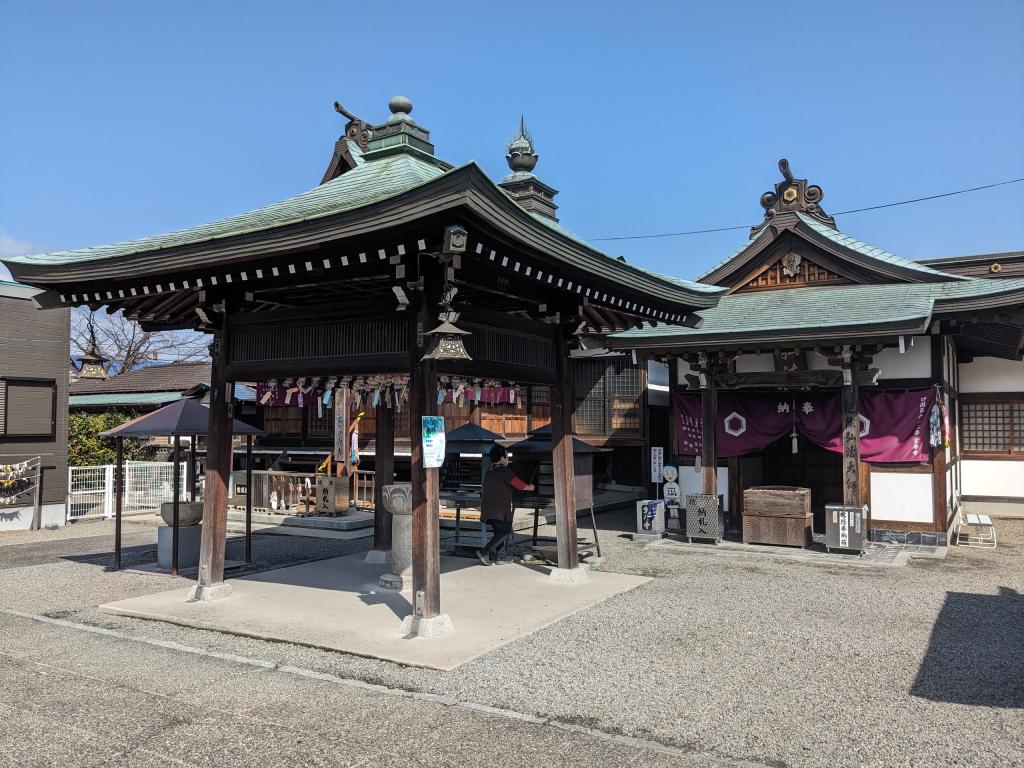
Temple 62

Temple 63

Temple 64
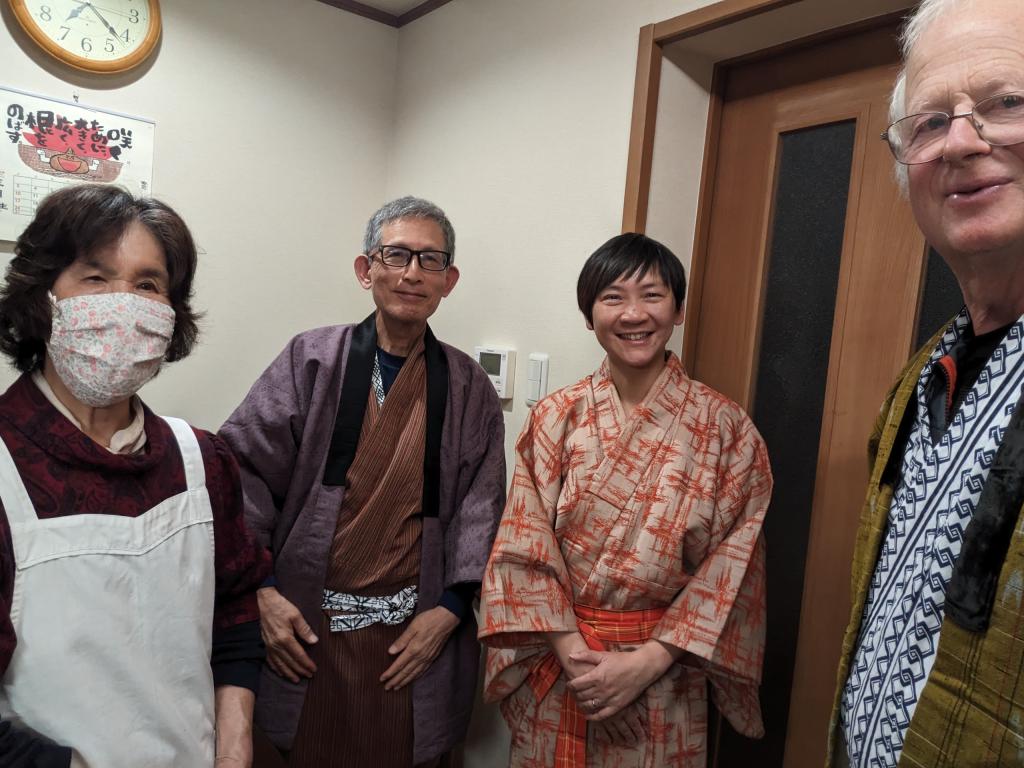
Ōnaru with Kariya-san and Joanne
Day 33: Naoko’s kindness
Naoko is kindness itself. She goes out of her way to anticipate all my food, laundry and transportation needs without me asking. It's almost embarrassing, a simple thank you note is insufficient to express all my gratitude.
She is also a chatterbox. She must have 50,000 words to say a day. No need for me to understand, she launches into long explanations and must believe that I understand the essentials. But beware of misunderstandings. This morning, I understood that she wants to take me to Temple 62. At 7:45, I am outside as I understood: no one. I wait until 8 a.m. so I can at least say goodbye. She probably left to lead the couple of Japanese pilgrims with whom I had breakfast again. Reluctantly, I leave without thanking her in person.
Loaded with Naoko's heavy provisions, I go to temples 62, 63 and 64 in the morning, then I take advantage of the site of the last temple 64 for my picnic. Large trees with pools where water trickles, benches, toilets in a quiet site with the animation of the parade of pilgrims and a gentle spring warmth: what could be better. I want to prolong this moment.
When I check the public transport timetable on Google Maps, I miss the train, but I have a bus straight away. I'm not a Gmaps expert. I didn't understand that I had to change buses afterwards. I am now on a bus going to an unknown destination that I monitor with GPS. No need to ask my neighbors. They will want to help me, but will never understand what I want. I persist on this bus which finally arrives at a terminus very far from my trajectory. With a new Gmaps query, I spot another direct bus in an hour. I take the opportunity to walk along this line in an urbanized setting.
In the evening, my connected phone allows me to find the Ōnaru accommodation, clean, comfortable in Japanese style. Without an internet connection, this day would have been complicated to find my route and the bus schedule. I would not have arrived at my destination. Connection is therefore essential for me.
I find Joanne who will accompany me on the two days of walking. At dinner, we meet Kariya-san who is a friend of Ossi. They are great athletes ready to complete 40 km stages. Kariya-san at 74 years old is on his fifteenth tour of Shikoku and walks even faster than Ossi. We will meet them at tomorrow's accommodation.
French cuisine in Japan
French products have the reputation of being expensive and inaccessible for most. This is why they are rarely found on store shelves or in a modified form using only the name like Camembert which is here a very small cheese with no comparison with Normandy Camembert. Italian cuisine is considered more accessible like pizza and pasta.
The sink below the toilet tank
On many Japanese toilets, when flushing the toilet, the water from filling the tank first passes through a small sink which allows you to wash your hands. The sink can be moved to be more accessible. This is a really good idea since it saves water while being technically simple.
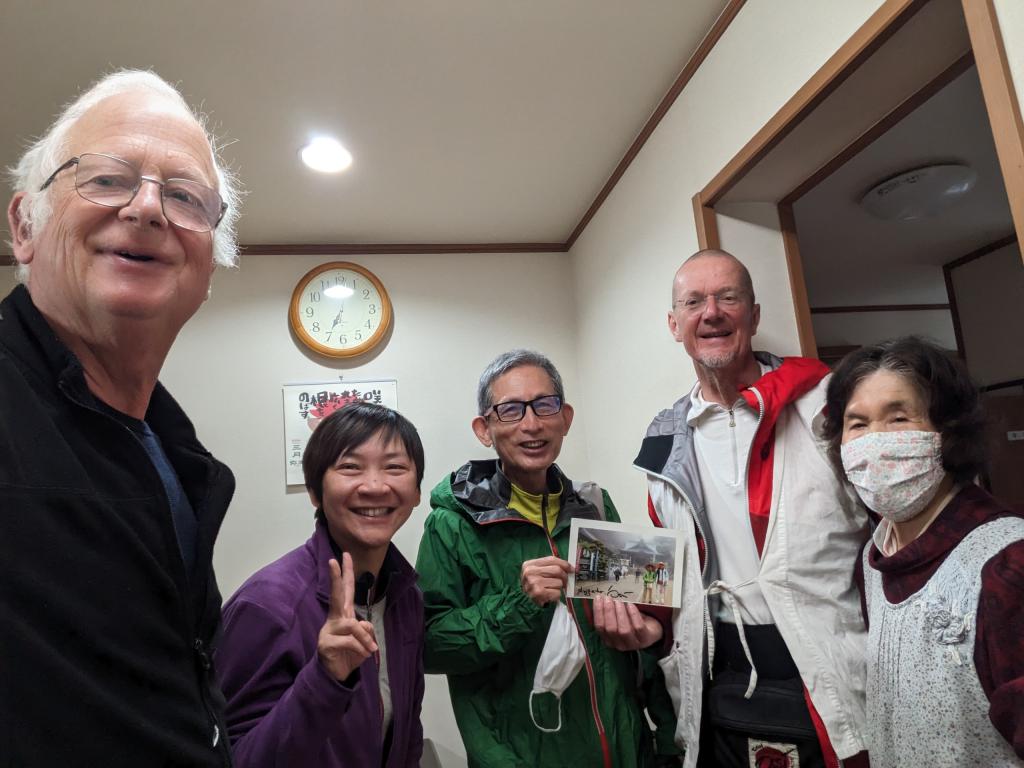
With Joanne, Kariya-san, Ossi and our landlady from Ōnaru accommodation at 7 a.m.
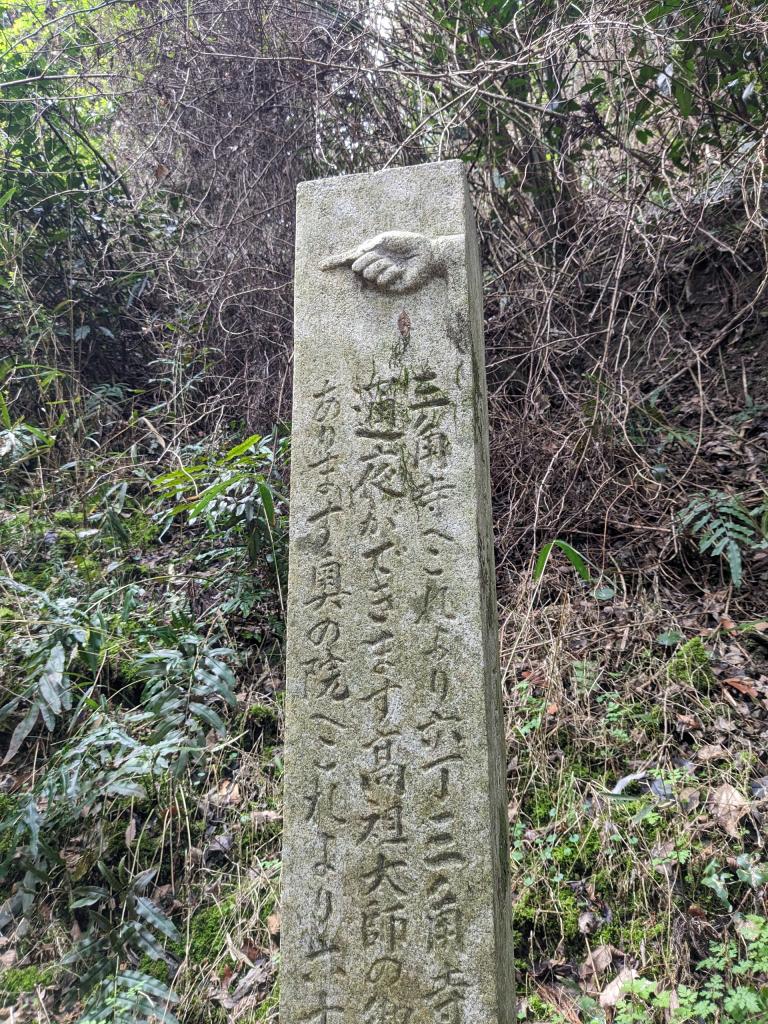
The hand shows us the direction
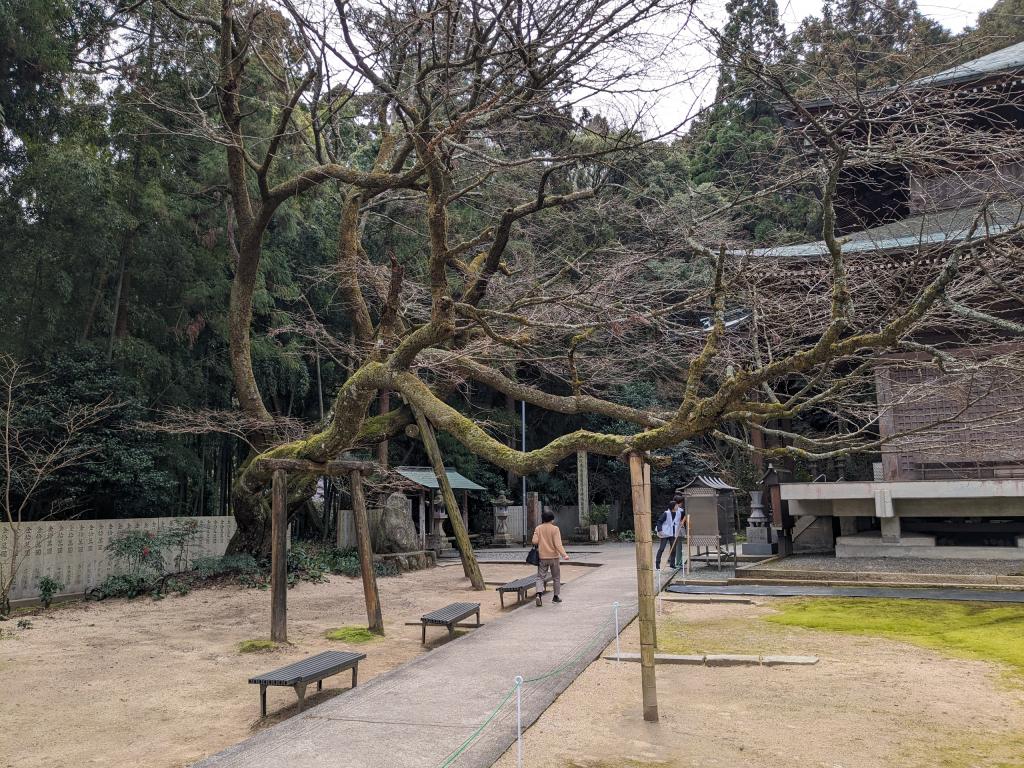
The old trees are supported by wooden props.
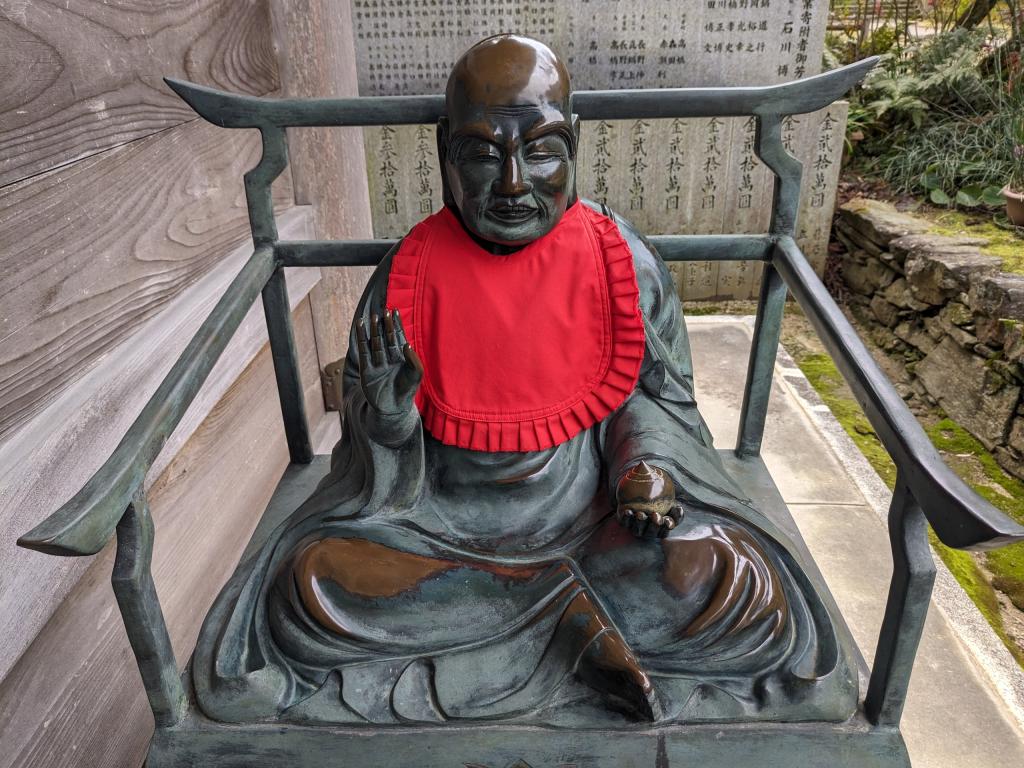
Pilgrims caress the head and hands of the Buddha
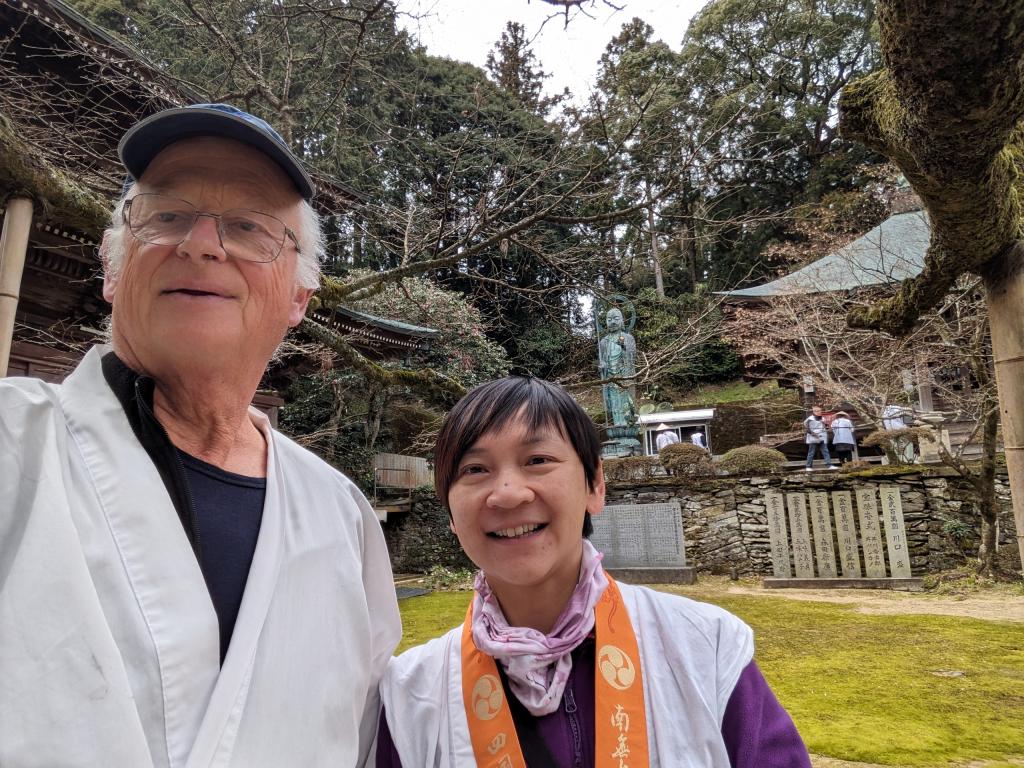
Day 34: Temple 65 with Joanne
This morning, Ossi is sitting at the breakfast table. He usually stops at my accommodation. As I booked before him, I took his room and he had to sleep elsewhere. Our conversation is about the dimensions of the path. The effort in walking allows you to access more intense meditations. In 2002 he wrote the book Eine pilgerreize zu den 88 temples of Shikoku. The book takes center stage on a dining room shelf. It recounts his first well-documented pilgrimage and is illustrated with many photos that speak to me.
Ossi is therefore used to doing 45 km walks. But yesterday he was exhausted from his walk along a road in the middle of the city. Coming from Tyrol, he prefers to walk in the mountains.
Ossi and Kariya-san put on their shoes at 7 a.m. for a 35 km walk passing through the difficult temples 65 and 66. Joanne and I follow in their footsteps, but with an ambition brought back to the state of our sporting potential and today it's 15 km. Our Achilles tendons require moderation. Joanne brightens the way with her good humor. She sings with me and in Chinese. We stop at 10 a.m. at temple 65 perched on the heights. Old knotted trees are lovingly maintained and the green spaces are pampered. A Buddha has his head stroked by all the pilgrims. To reach Ossi's accommodation, we take the train and enter Kagawa prefecture symbolizing Nirvana.
In the evening, sake and beer are on the table at Fujikawa accommodation. The day went well without falls or injuries with perfect weather for walking, cool, overcast, no wind and no rain.
Tomorrow, Ossi and Kariya-san continue to spin into Nirvana, Joanne and I attack T 66, the Everest of the Shikoku circuit. The cold, rain and wind were also coming, we planned to go up by cable car and come down on foot. As a final effort on my tour of the 88 temples, I might stop at temples 67, 68 and 69 which are on the way back. The latter two look lovingly at the sea together.
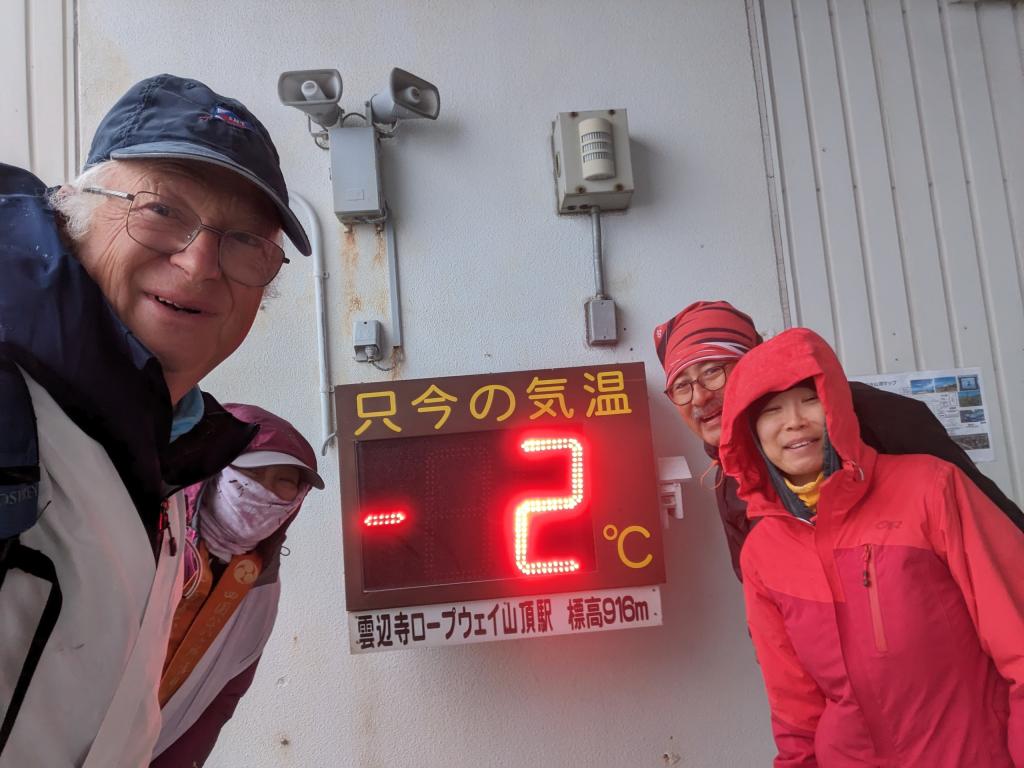
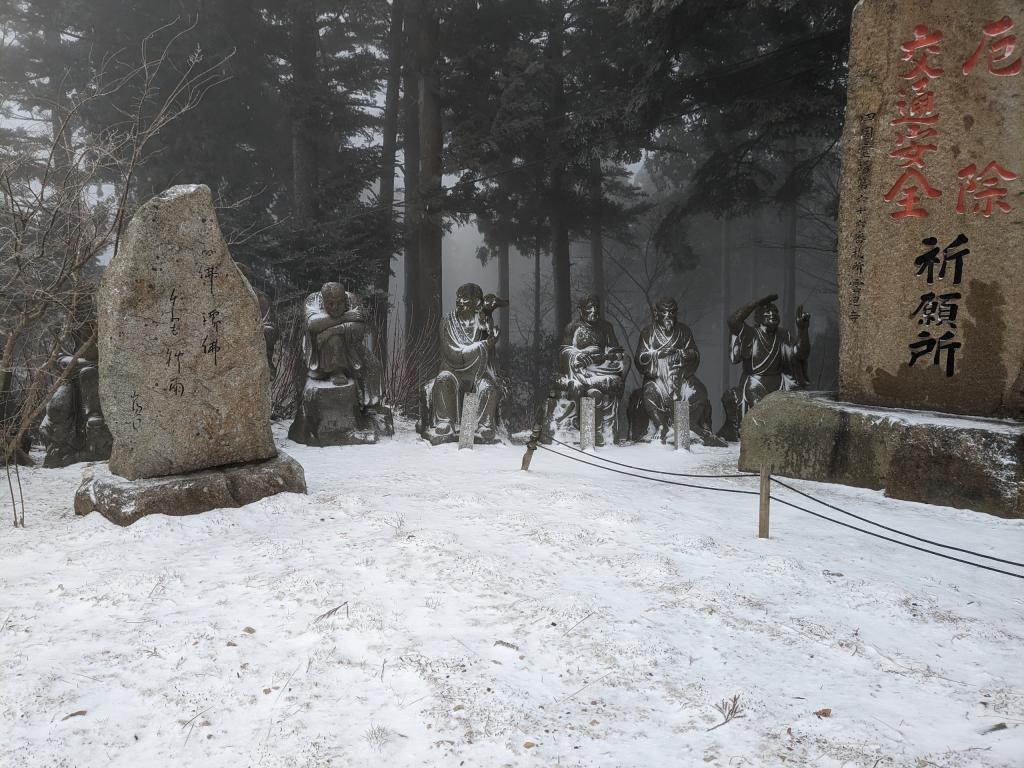

Temple 66
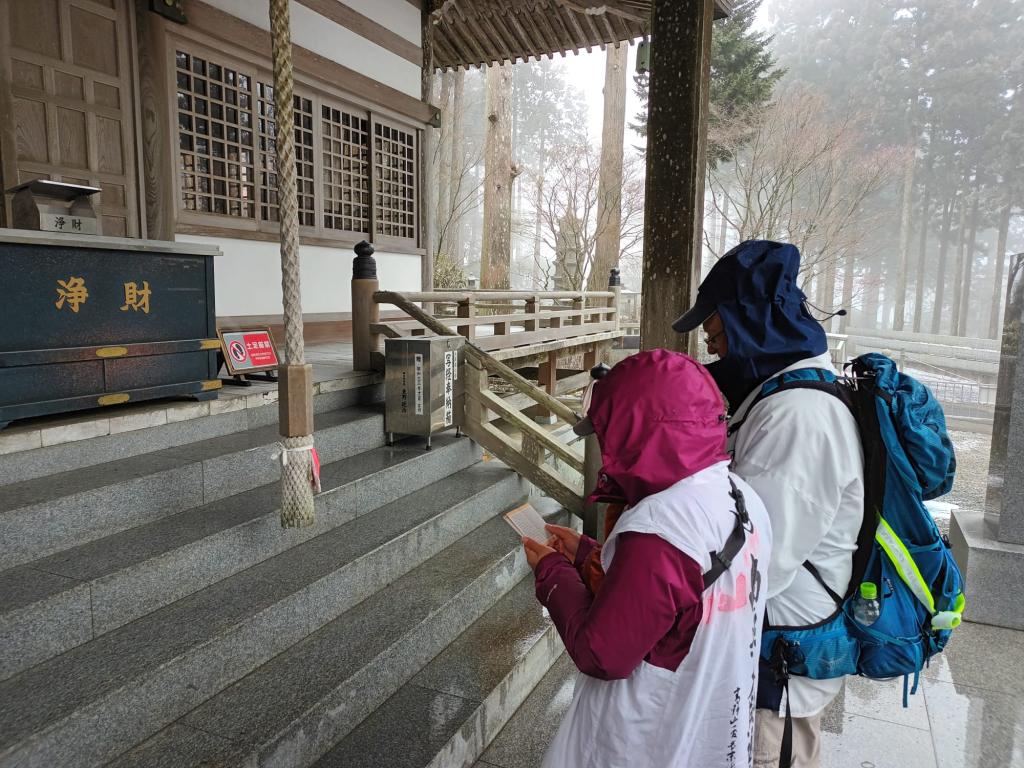
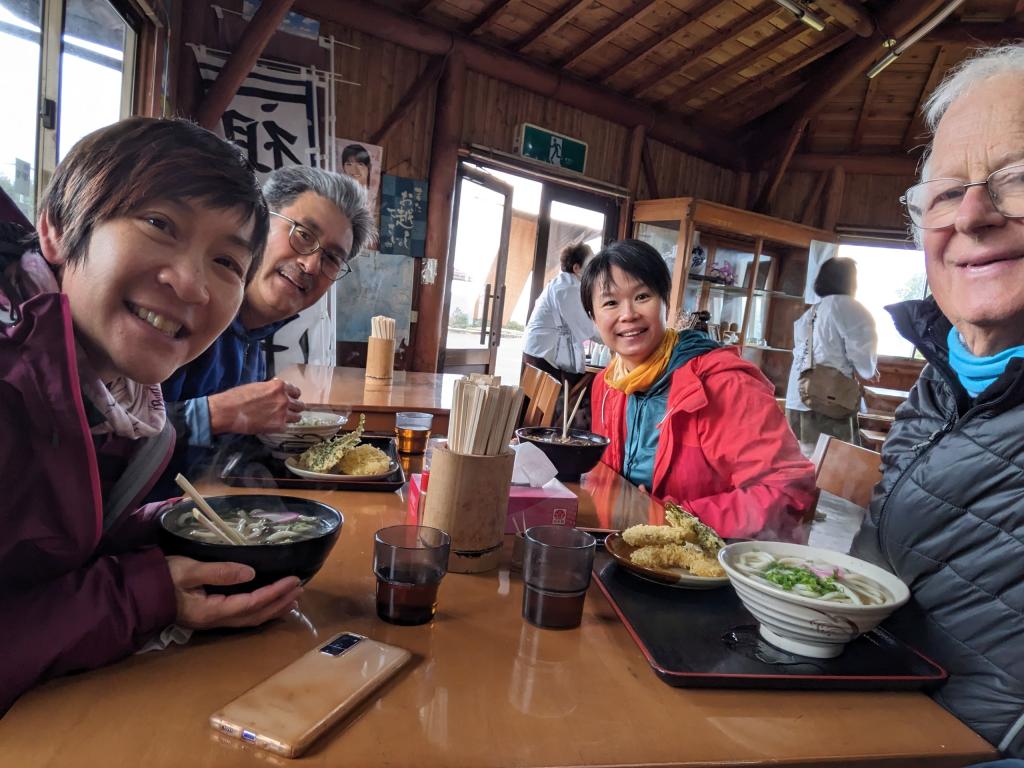
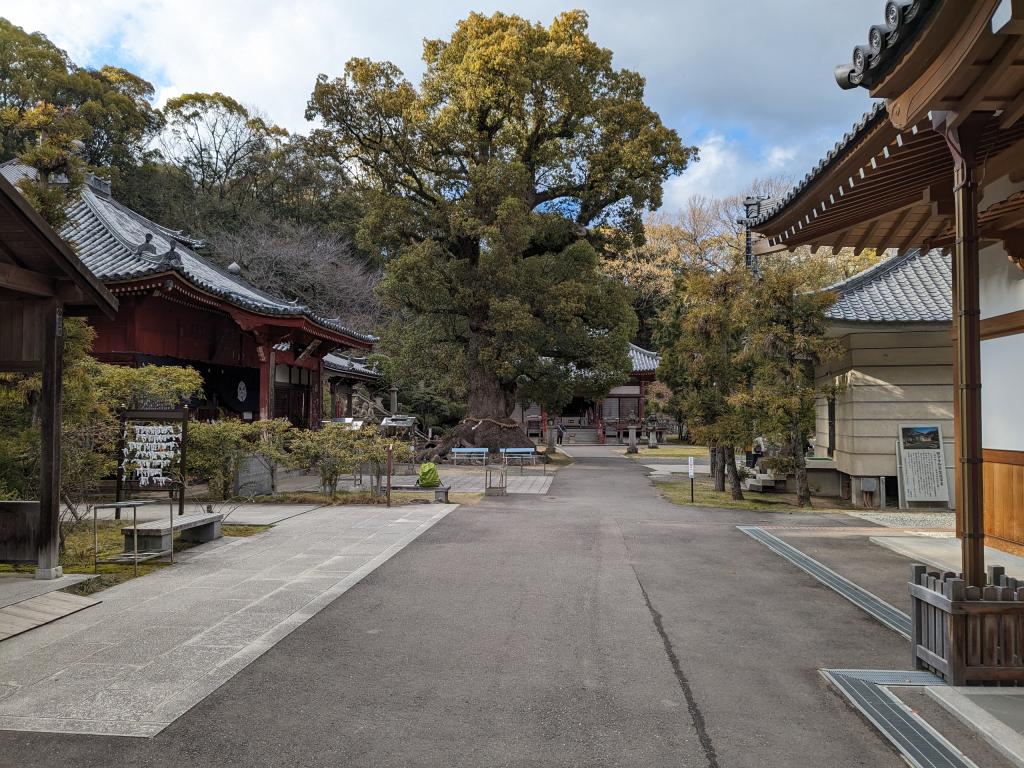
Temples 68 and 69
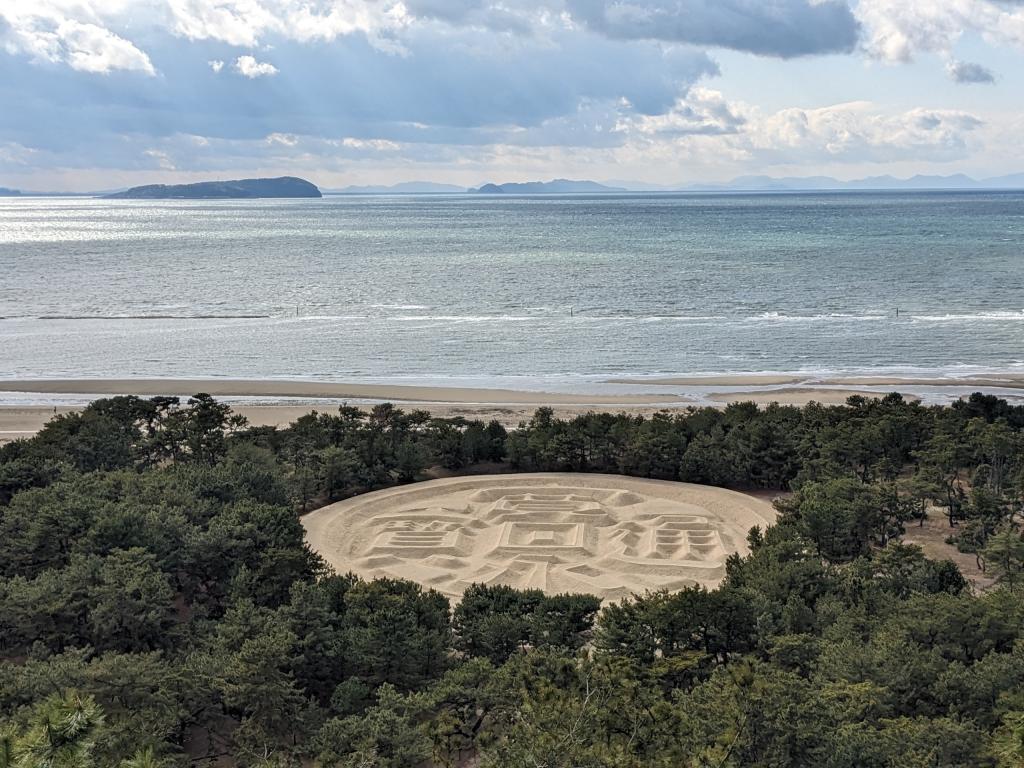
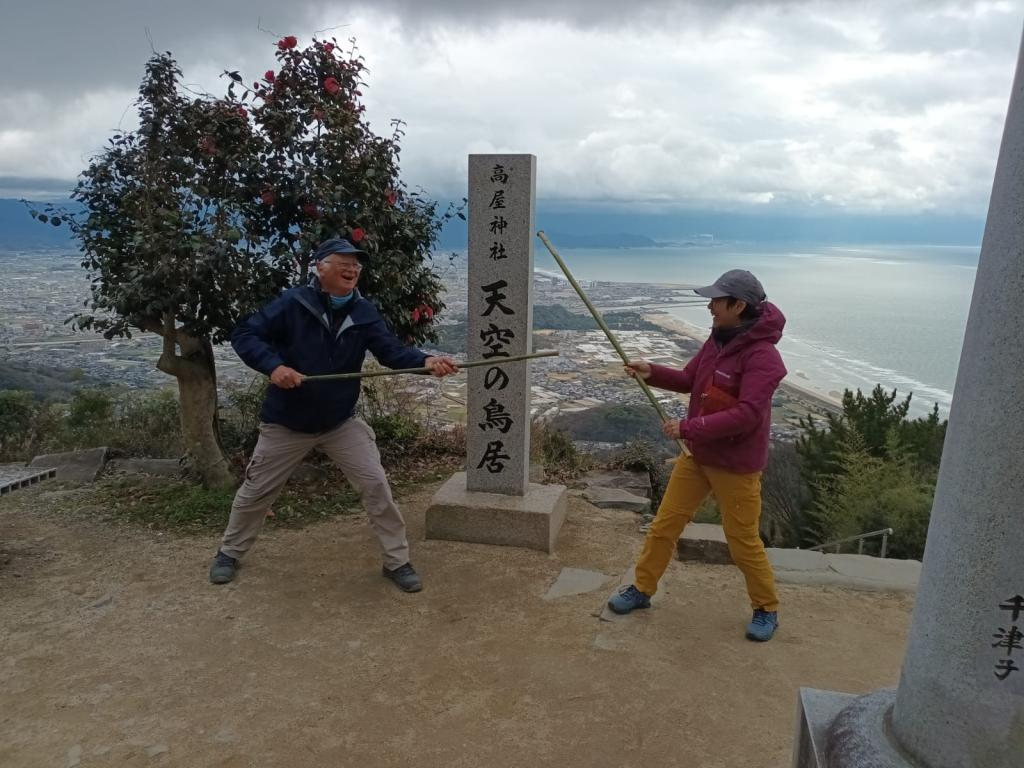
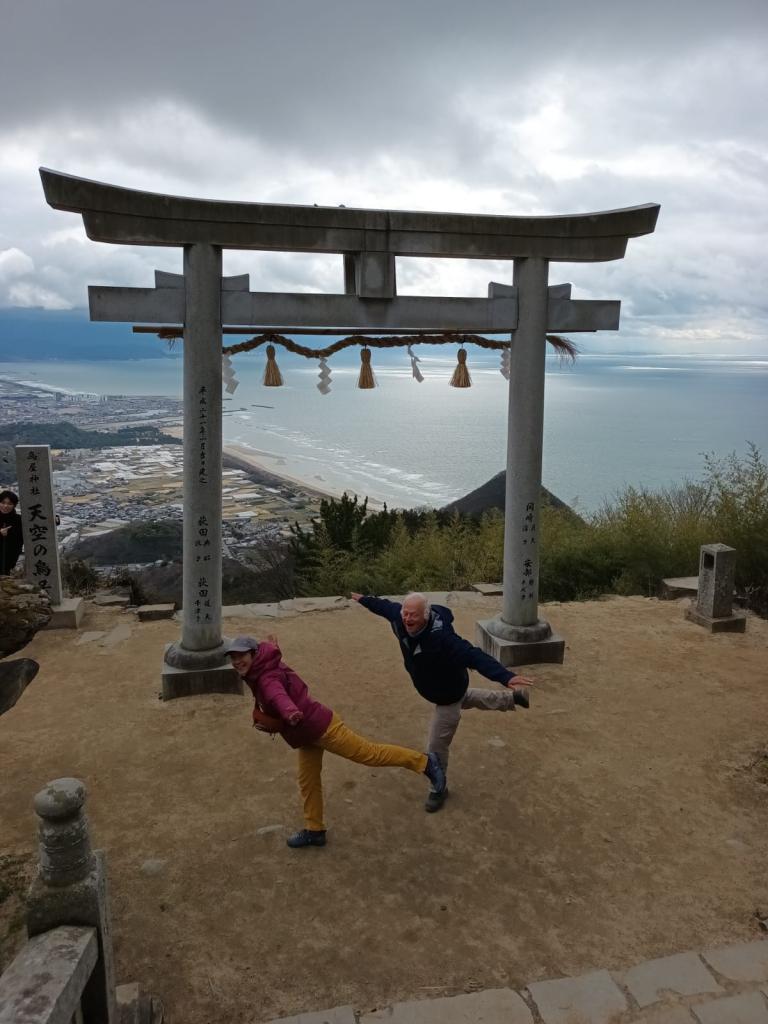
Day 35: Still higher
We are awakened by the wind which moves the windows and the slates. The rain and the cold pierce us when we walk a few kms towards the rope way. Tossed around, it sinks into a cloud and propels us to temple 66 and reminds me of this message from the thousand-year-old song of the pilgrims of Compostela
E sus eia
Which means always higher. When we disembark at the summit, snow covers the landscape and a thermometer reads -2 degrees C. Amos and Carol accompany us. They come from Singapore with their bikes. Today, we are introducing them to the pilgrim life. To begin with, washing your hands becomes complicated with frost. I follow the usual ritual with a feeling of completion of this journey. We again review the hundreds of sculptures of human-sized figures which make this temple unique. The hostility of the weather chases us away and forces us to go back down with the rope way.
A noodle soup warms us up and a taxi takes us to Takaya, a viewpoint overlooking the sea by 400 m. It reveals itself in time to take a few photos, in particular with Joanne with whom I shared the last three weeks of pilgrim life in a permanent enchantment with the same rhythm and solidarity in the search for solutions to difficulties. She continues for a week, ending at temple 88. On the way down, we stop again at temples 68 and 69. They are twinned, share the same entrance and a single attendant completes my stamp collection for this year. I try to convince myself of the merits of my interruption, but my departure tomorrow leaves me with a taste of unfinished business.
The return
On Thursday March 21, Joanne and I left the accommodation heading towards the station with the sun. I charge her with the mission of financing a tile for a temple with the message 'e sus eia', ever higher. She takes a bus to go to temple 72, the first on her schedule for the day. After the hug, I continue to wave at her until the bus disappears. She still has a few days to arrive at Temple 88, then she will reunite with her husband and grown children in Sydney. I take a succession of 3 trains which take me to Osaka airport, then 2 planes and 2 trains to arrive home. This separation marks the end of my Henro period. My white toga is stored in my bag. I'm just a traveler returning home.
But in my head, everything continues. Draped in my white toga, I go back through the door of a new temple on the left after a greeting, I wash my hands, I ring the bell, I head towards the Hondō, I let Joanne light a candle and some sticks. incense, I climb the steps, I greet, I place my thank you label and coins, I accompany Joanne in the recitation of the sutras sometimes with the rhythm of a bell, I greet again. I repeat the ritual in front of the Daichidō. At the office, four stamps and the drawing of a message are added to a new page of my book. Once the ritual is over, it's time to appreciate the site, the gardens with the tall trees, the ponds where the koi fish live and to take souvenir photos. Leaving from the left side of the door, turn around and salute.
Once out, you have to find the arrows to walk towards the next temple, restaurant or accommodation. There, register, take possession of the premises, tea, shower and bath, share the meal, write, unfold the bedding and sleep.
The Henro book contains information on finding accommodation. I didn't want to book too far in advance so that I could choose them according to my pace and the information gleaned from accommodation providers and other pilgrims. My must-sees are accommodation in temples which allow you to participate in morning prayers and see them from the inside with the people who lead them. As it is not possible to book directly with data SIM cards, you have to find a Japanese person who agrees to call for you.
To follow a path and in particular this one, is to agree to abandon one's habits and one's reservations. Rediscover the naturalness, spontaneity and joy of living of the child within us, not worrying about what yours will say. Yuso at 80 years old does schoolboy antics. Singing in the tunnels. Walking with bells. Washing and bathing naked next to strangers.
The introductory readings about Japan helped me integrate into this culture so different from ours. To talk about yourself, you point your nose. But we don't point the finger at others. By making a circle with your hand, it's ok.
I should have learned some vocabulary before leaving. Japanese seems so difficult that I gave up before starting. Japanese people don't often speak English. Exchanges easily become dialogues of the deaf.
Sometimes people tell me that we come back changed. Certainly, a lot has happened. Probably the value I feel the most is the tolerance to accept differences in thinking and point of view. Buddhism is a living religion full of wisdom which shines in everyday life and which integrates this tolerance and accepts differences.